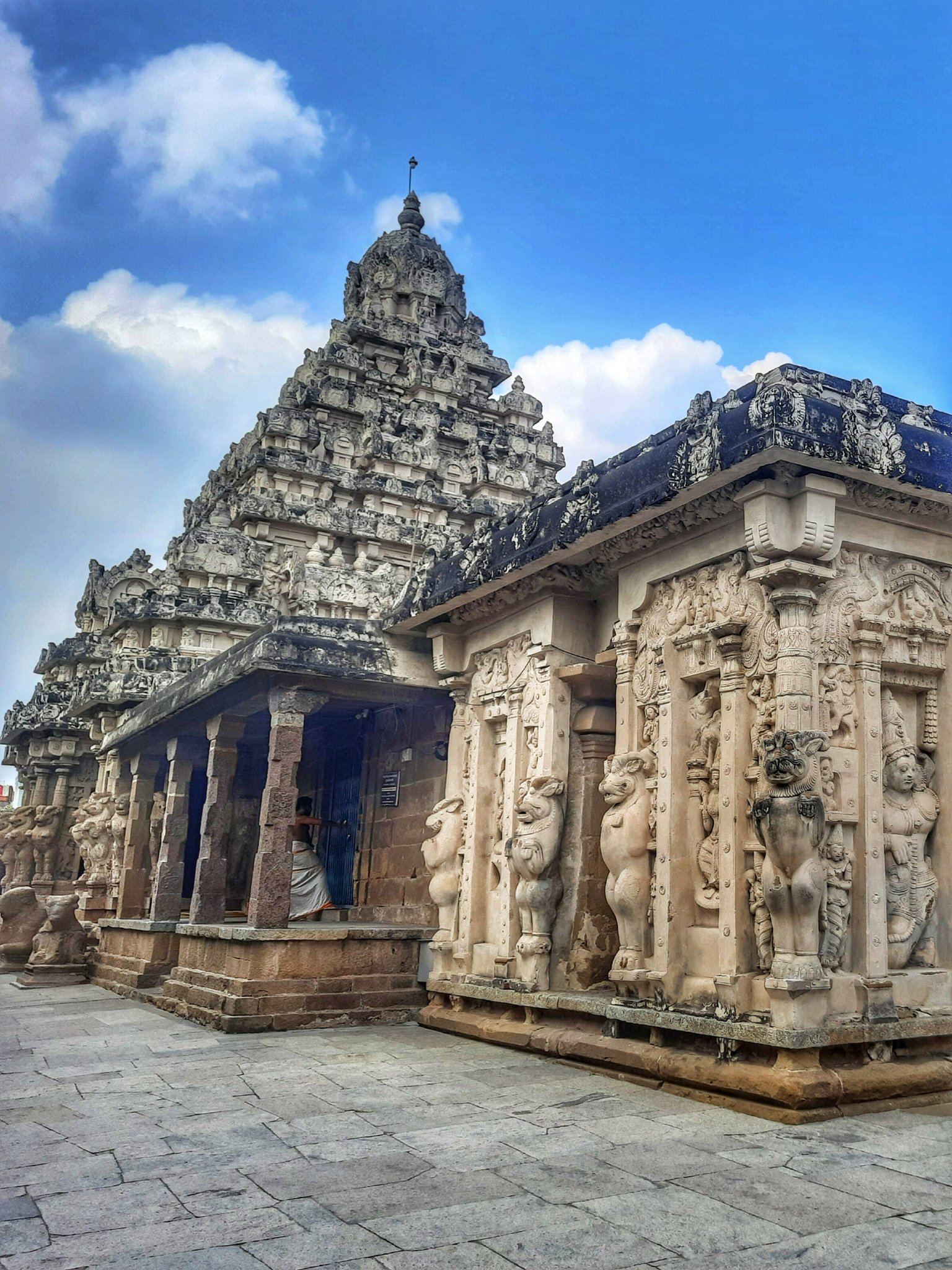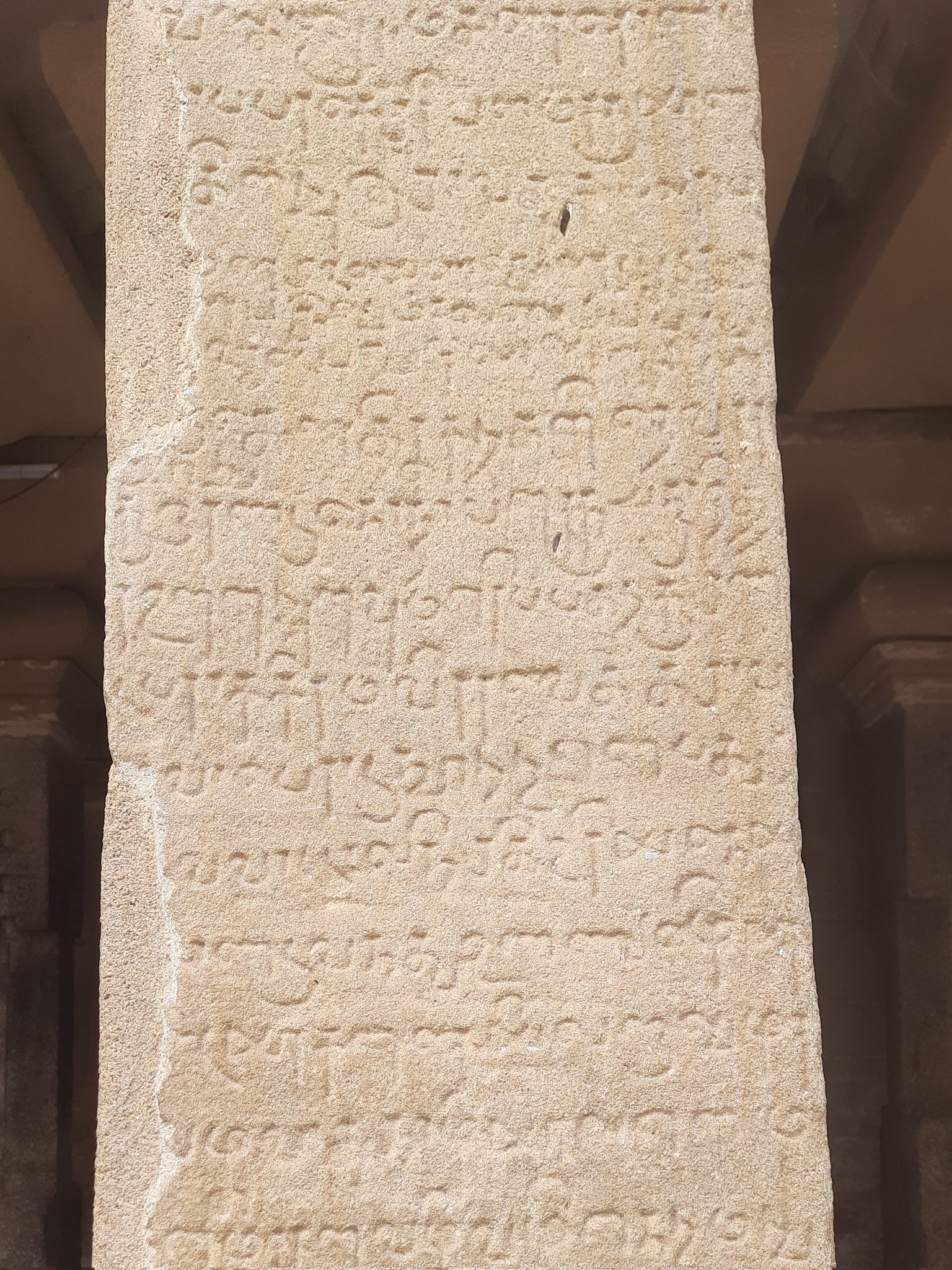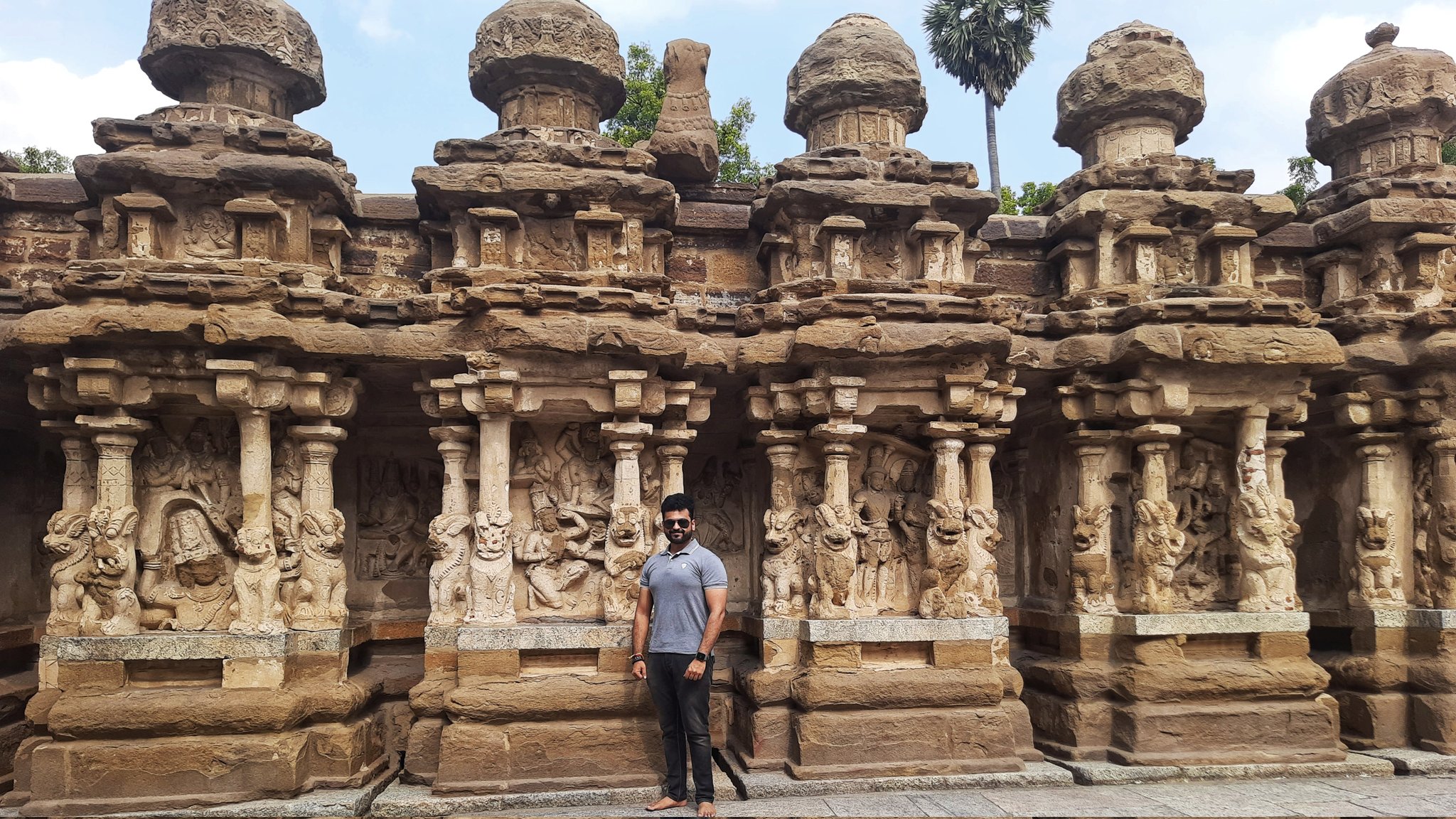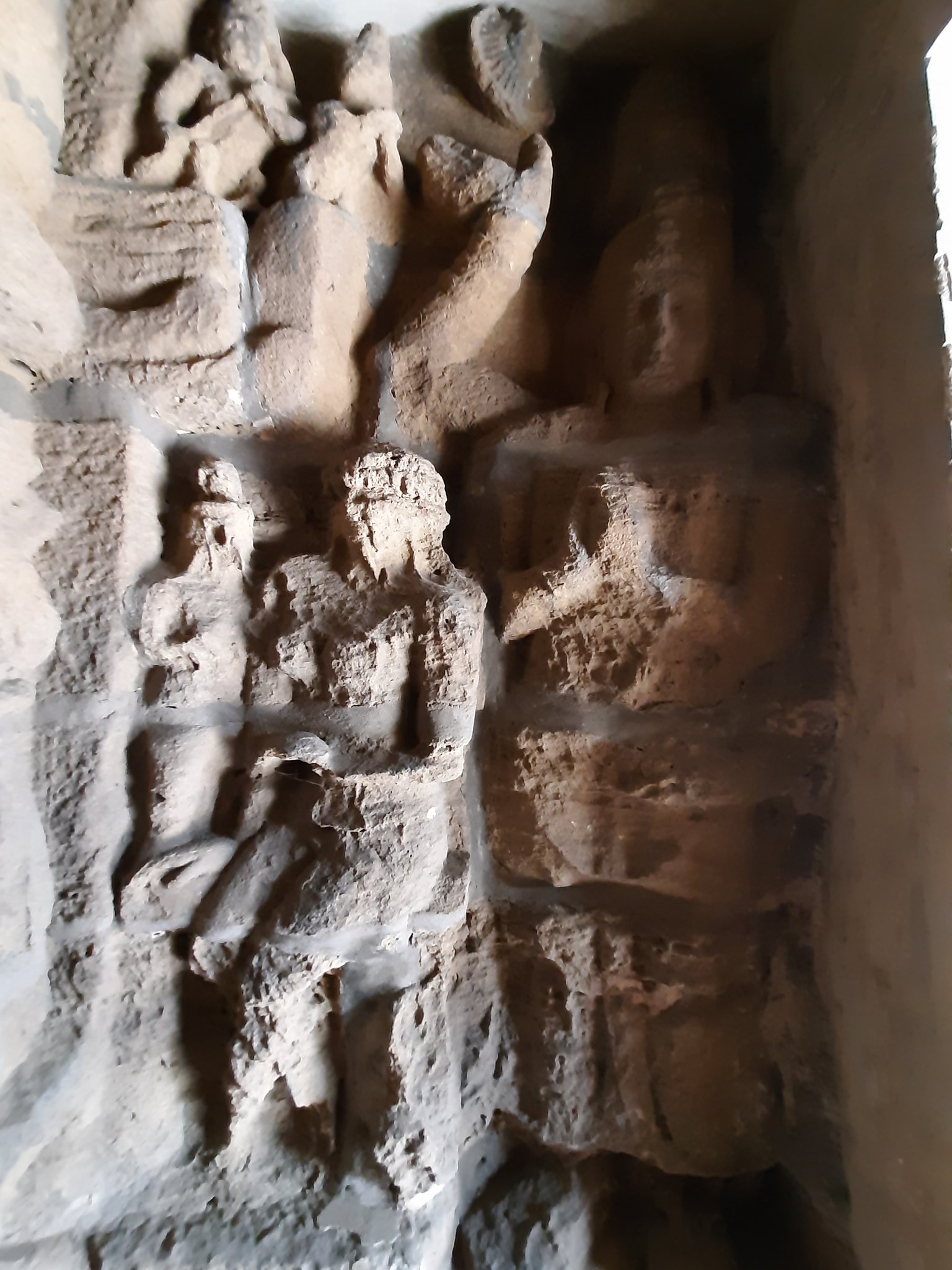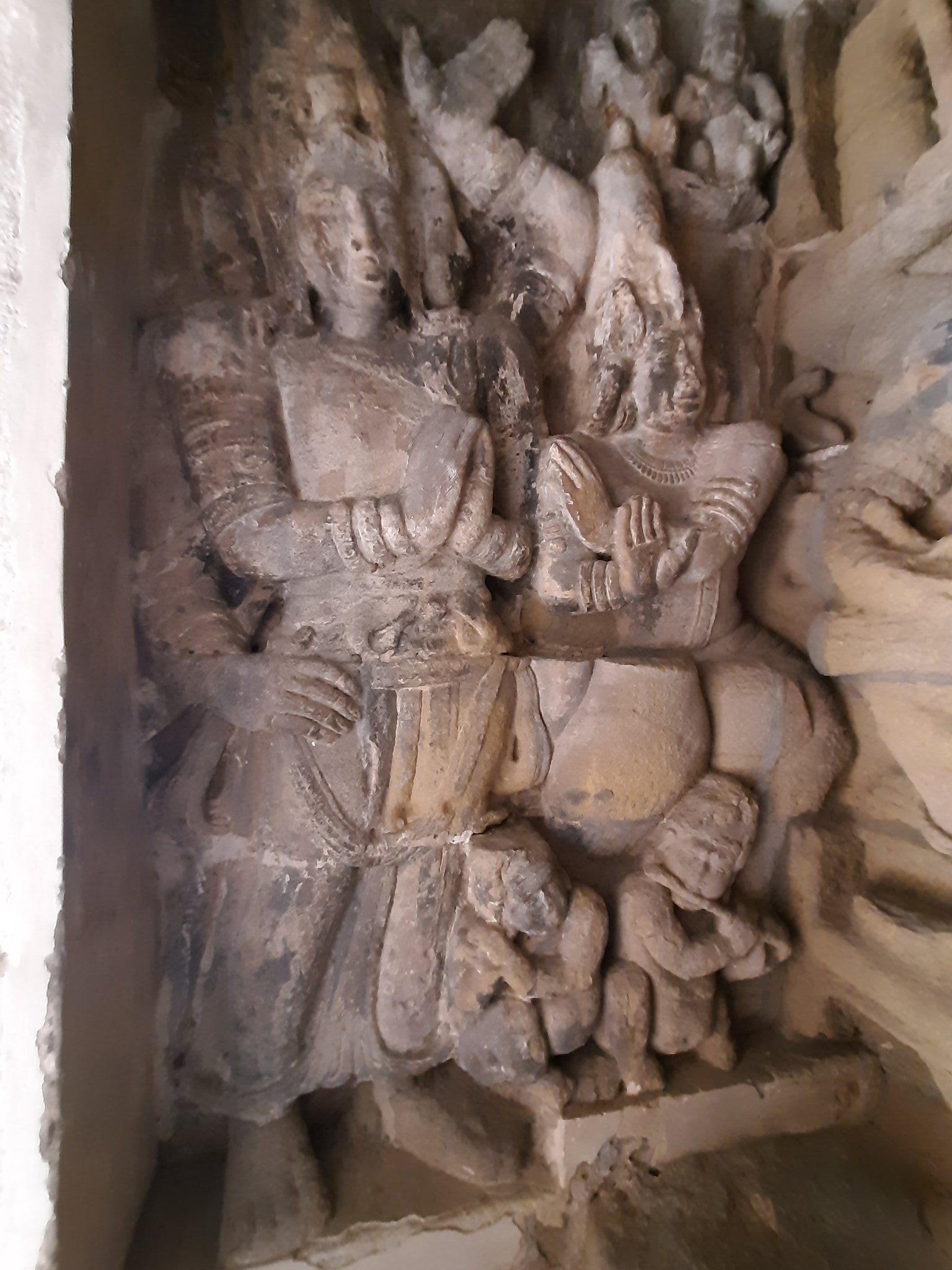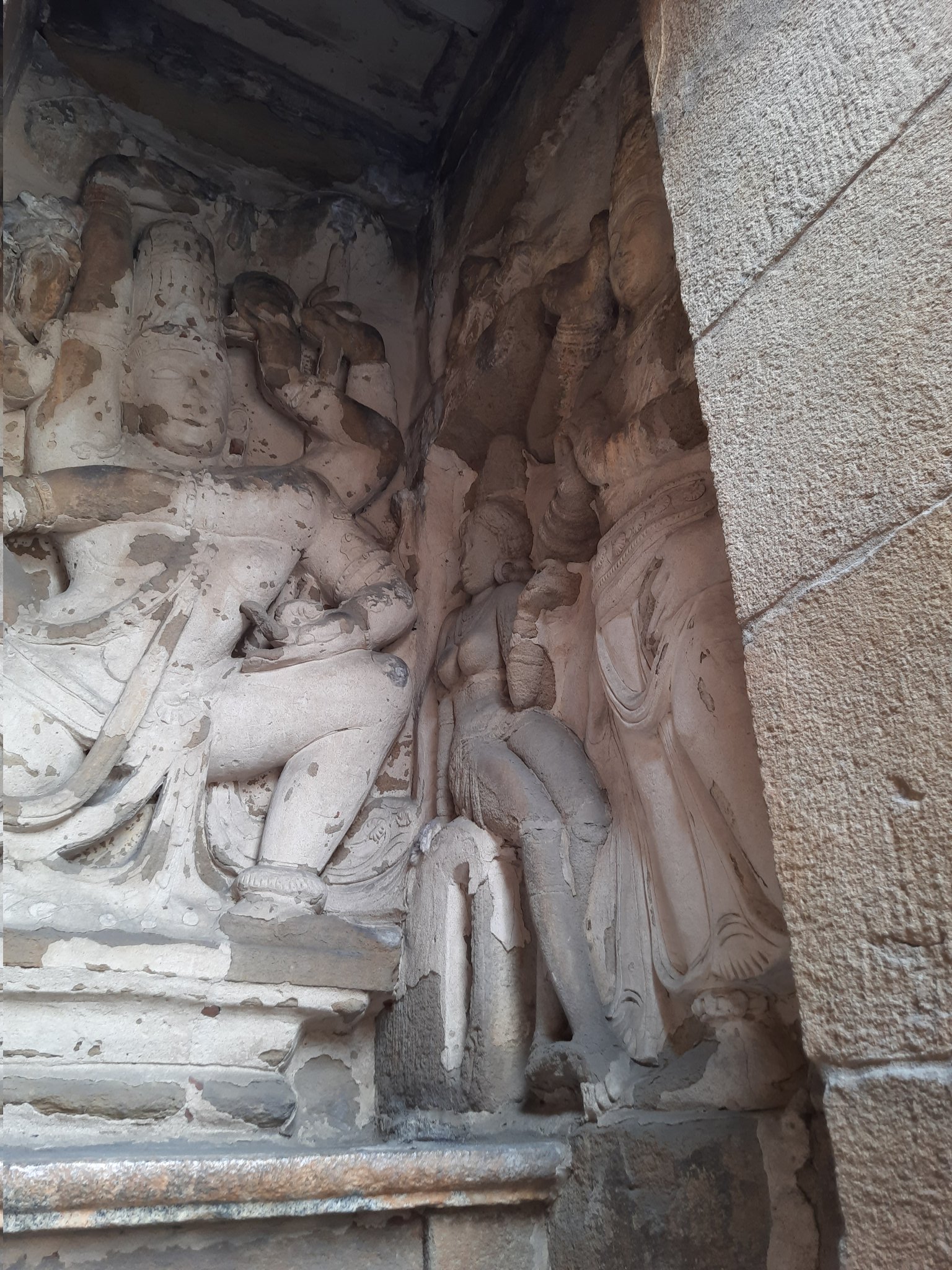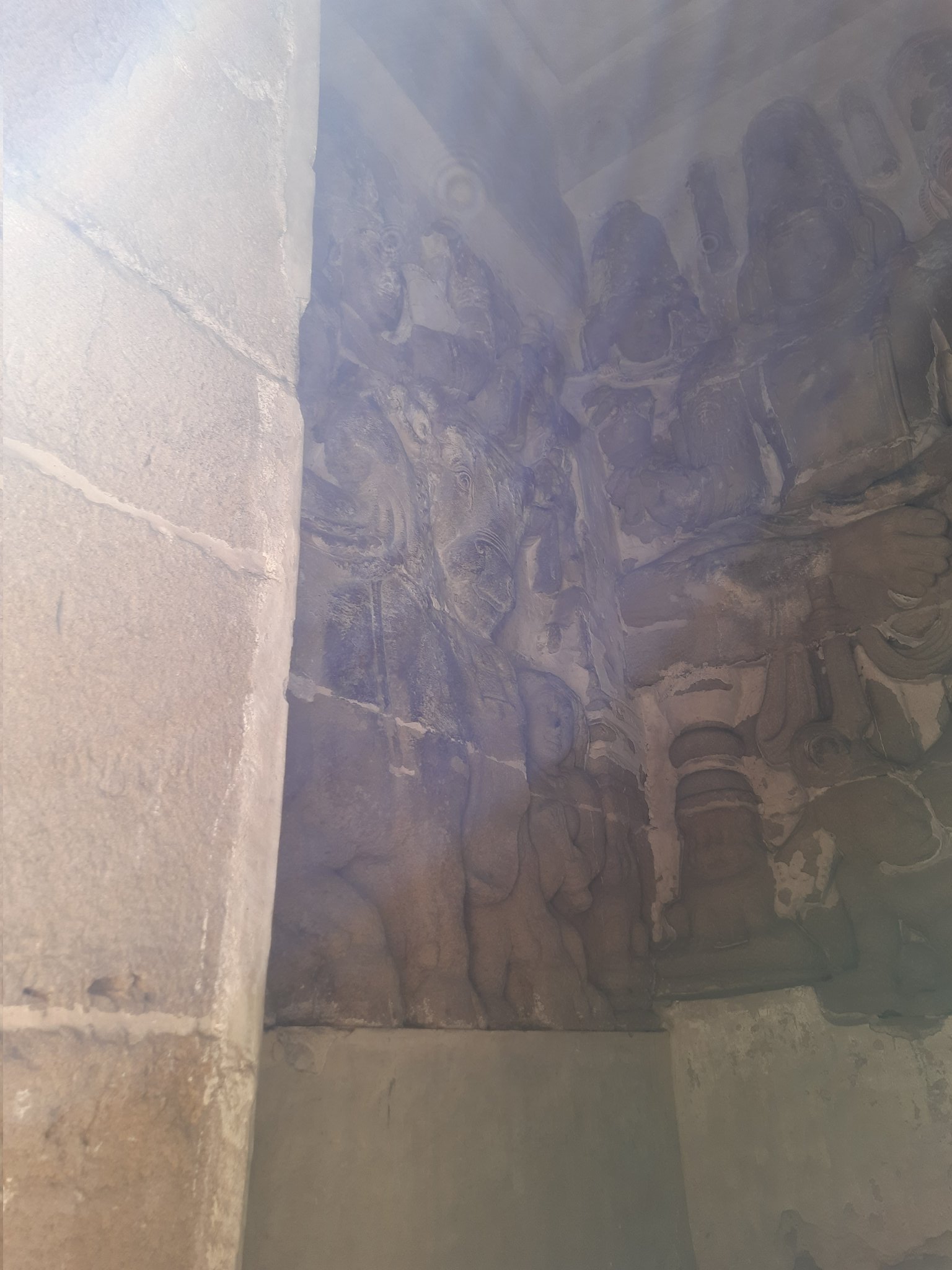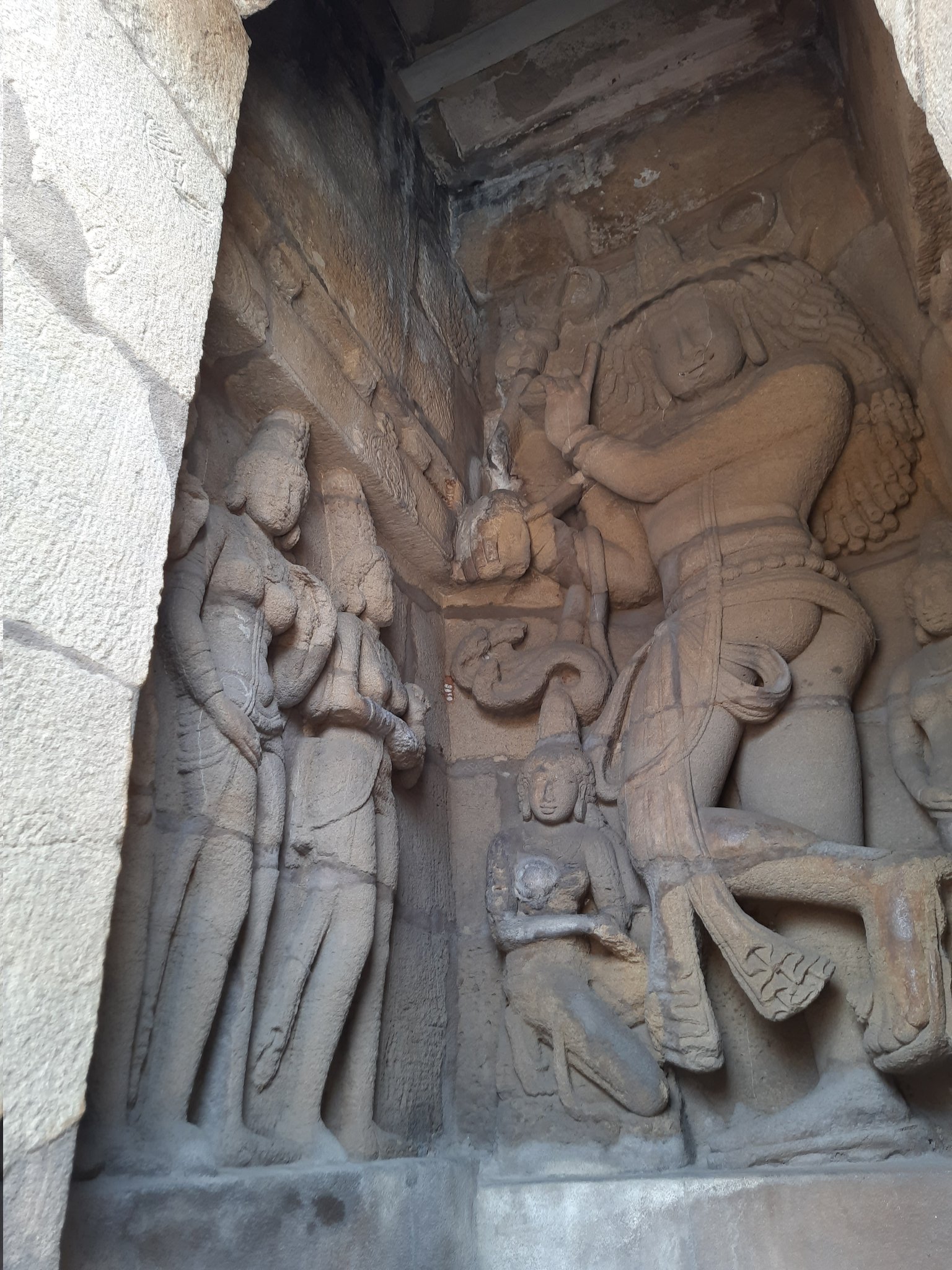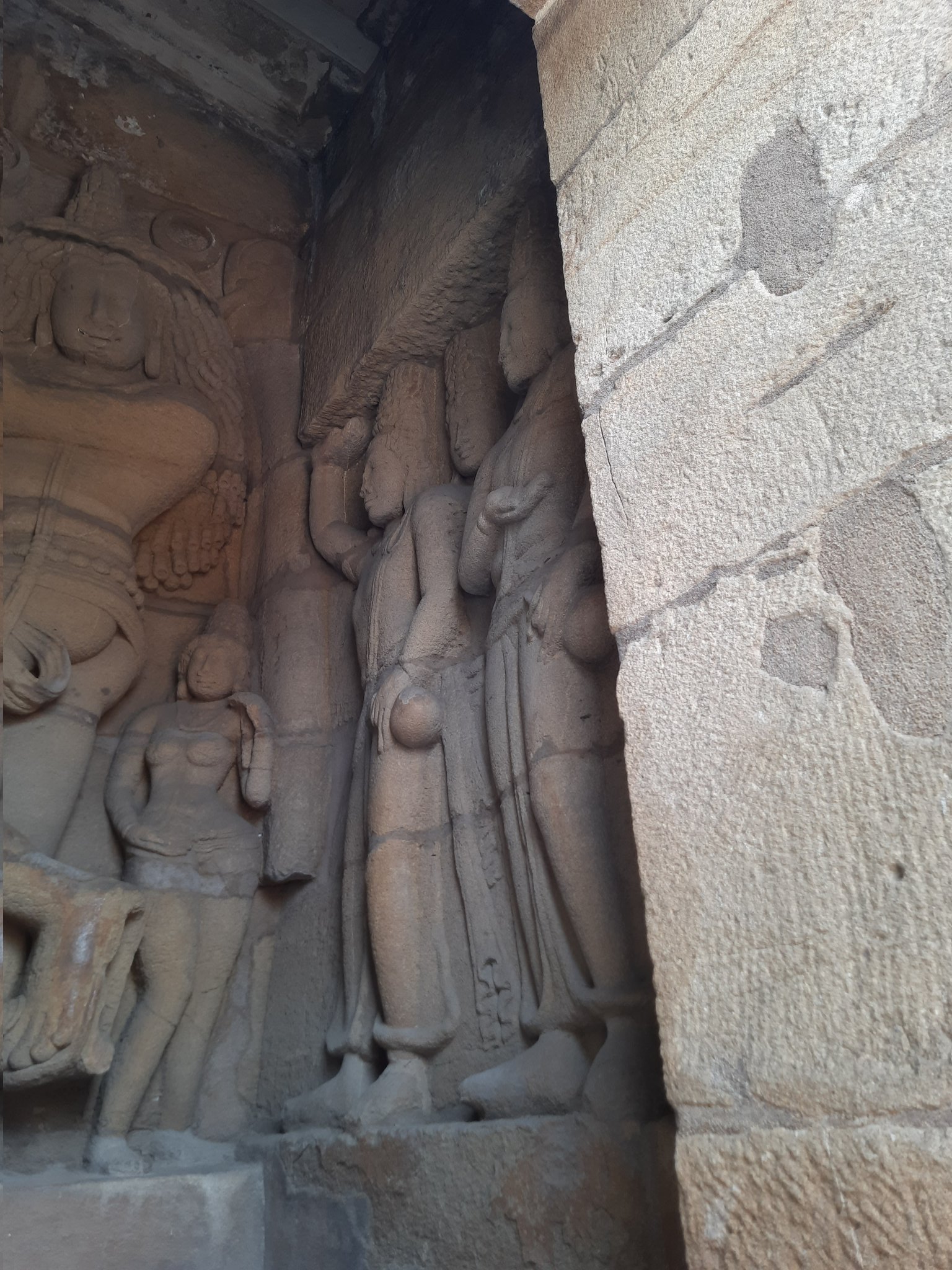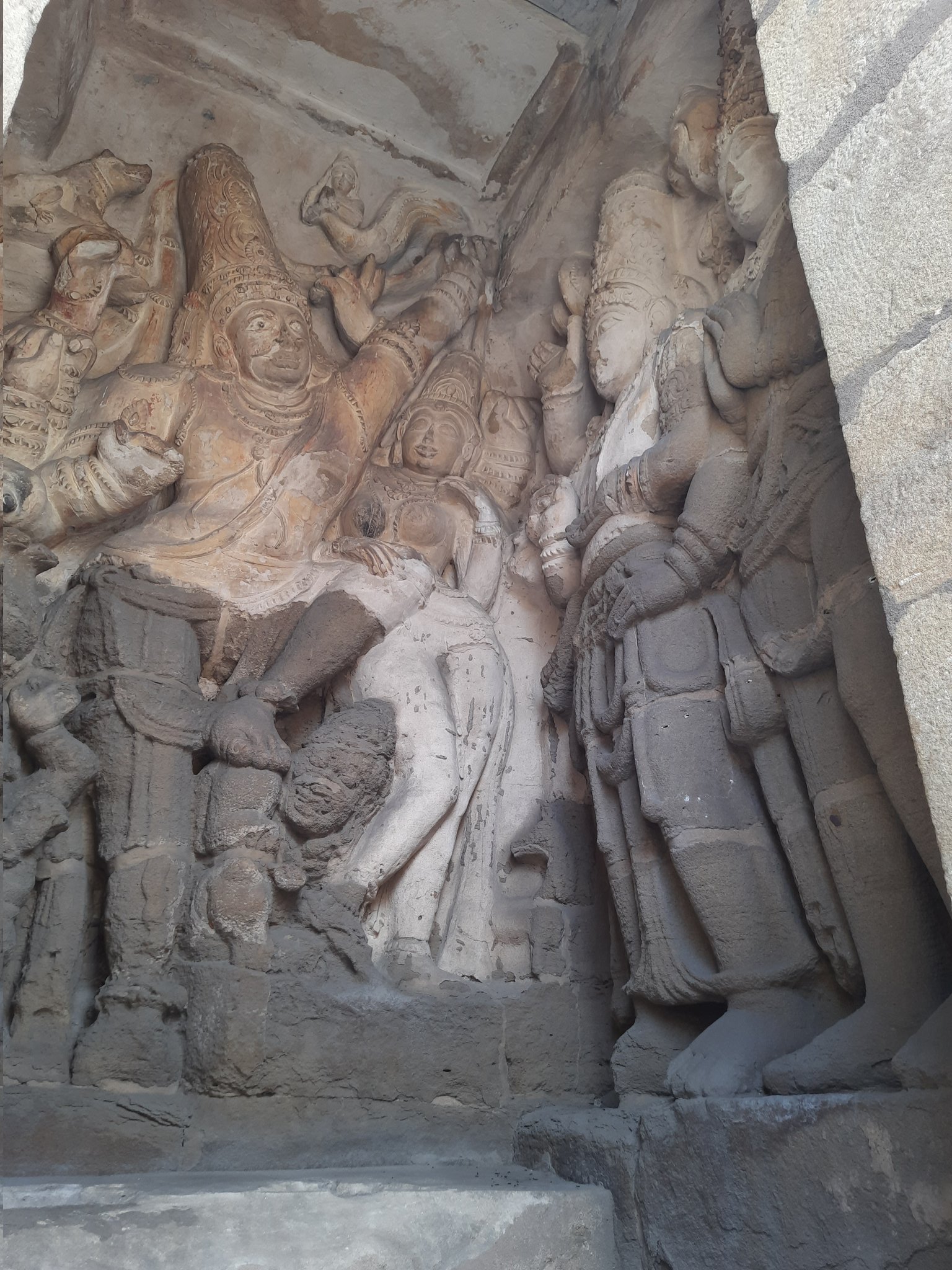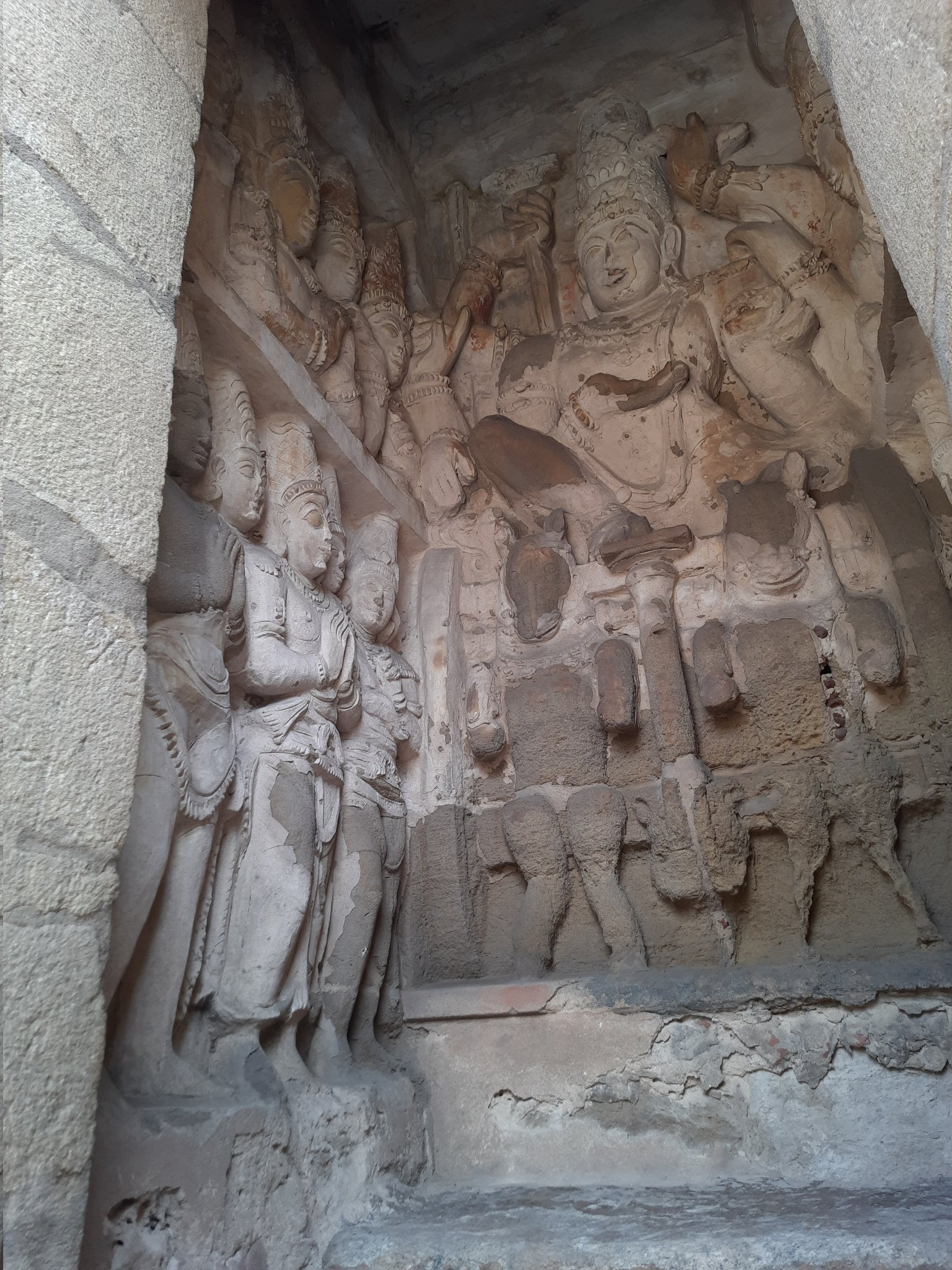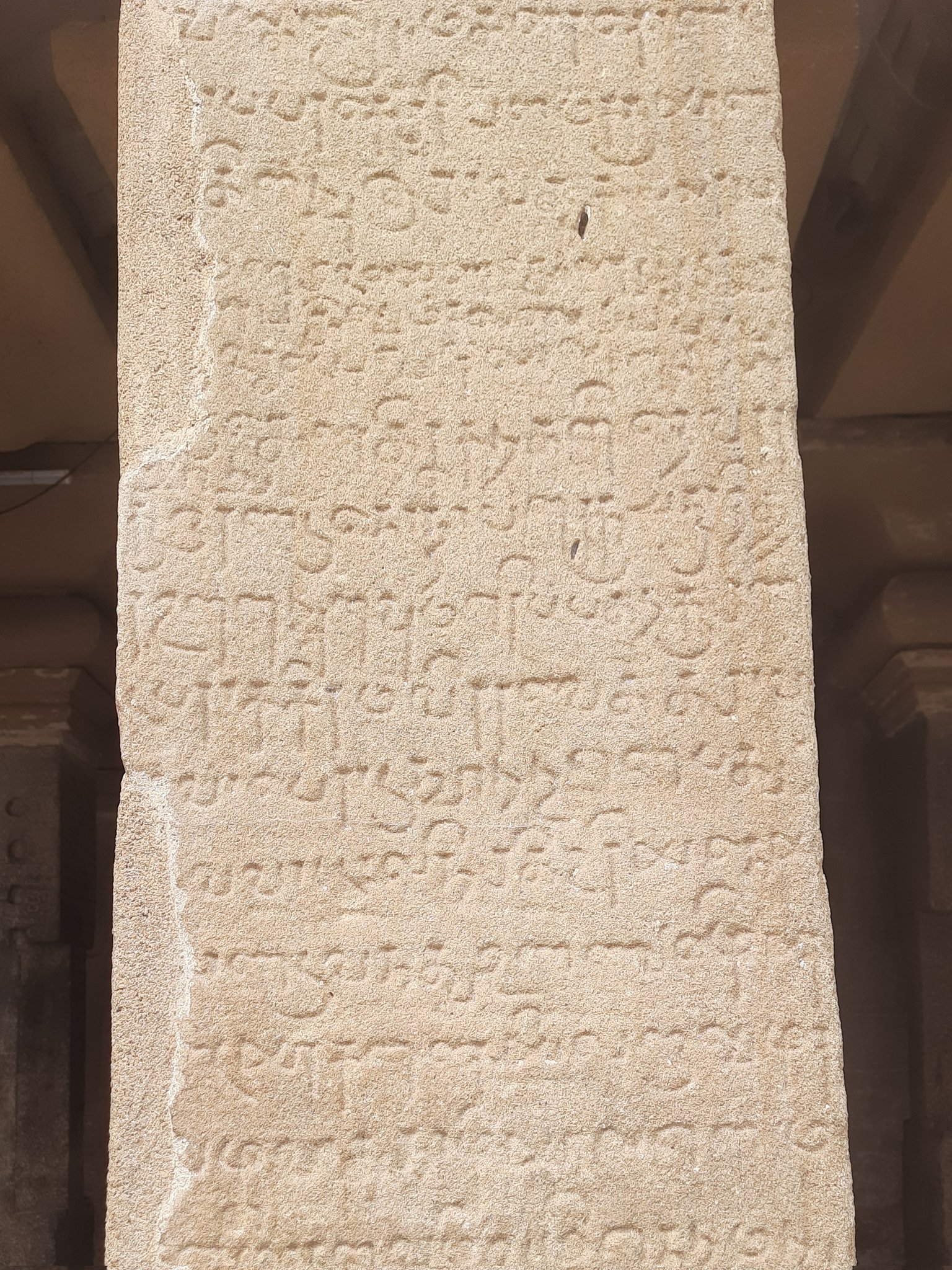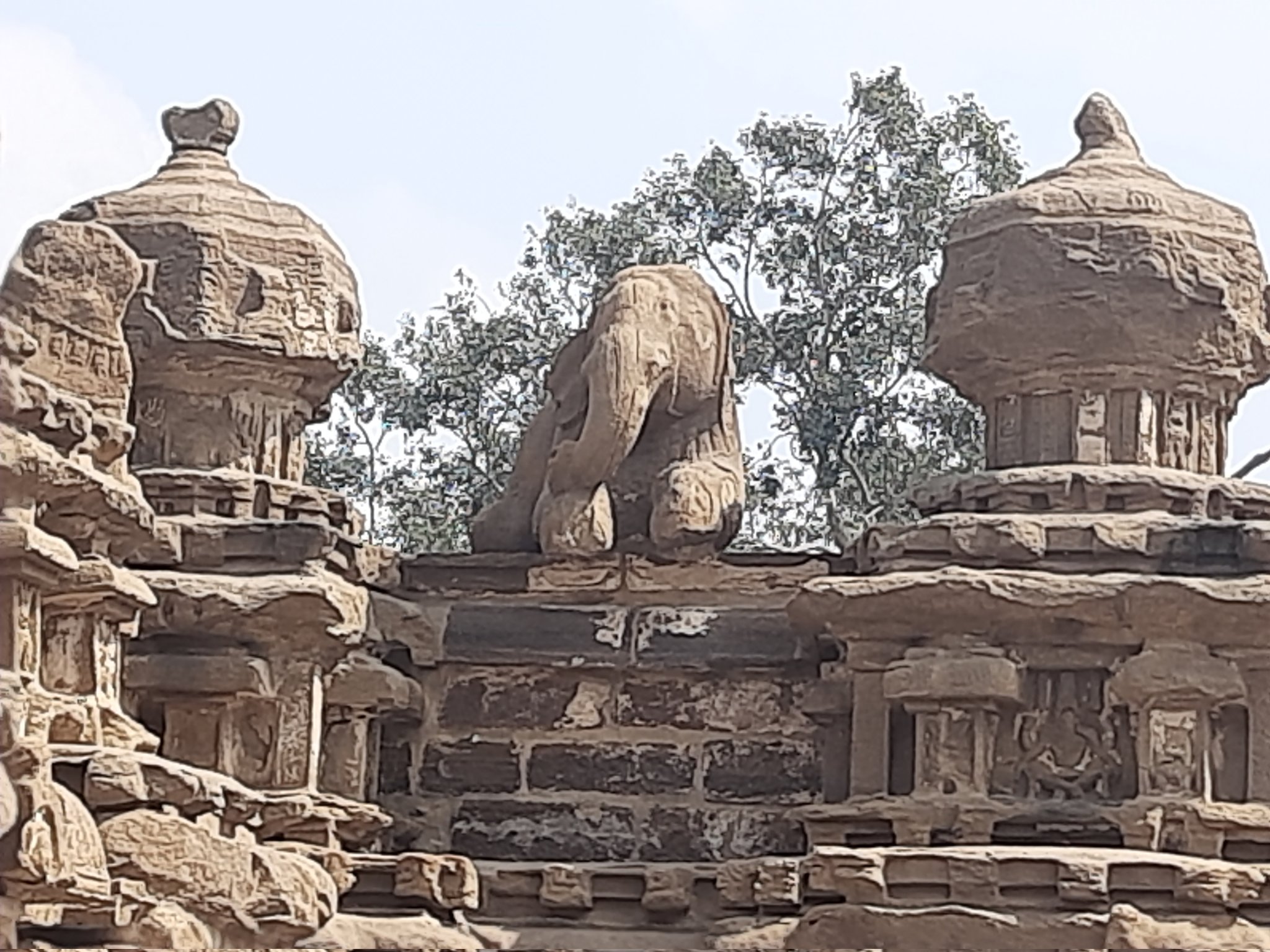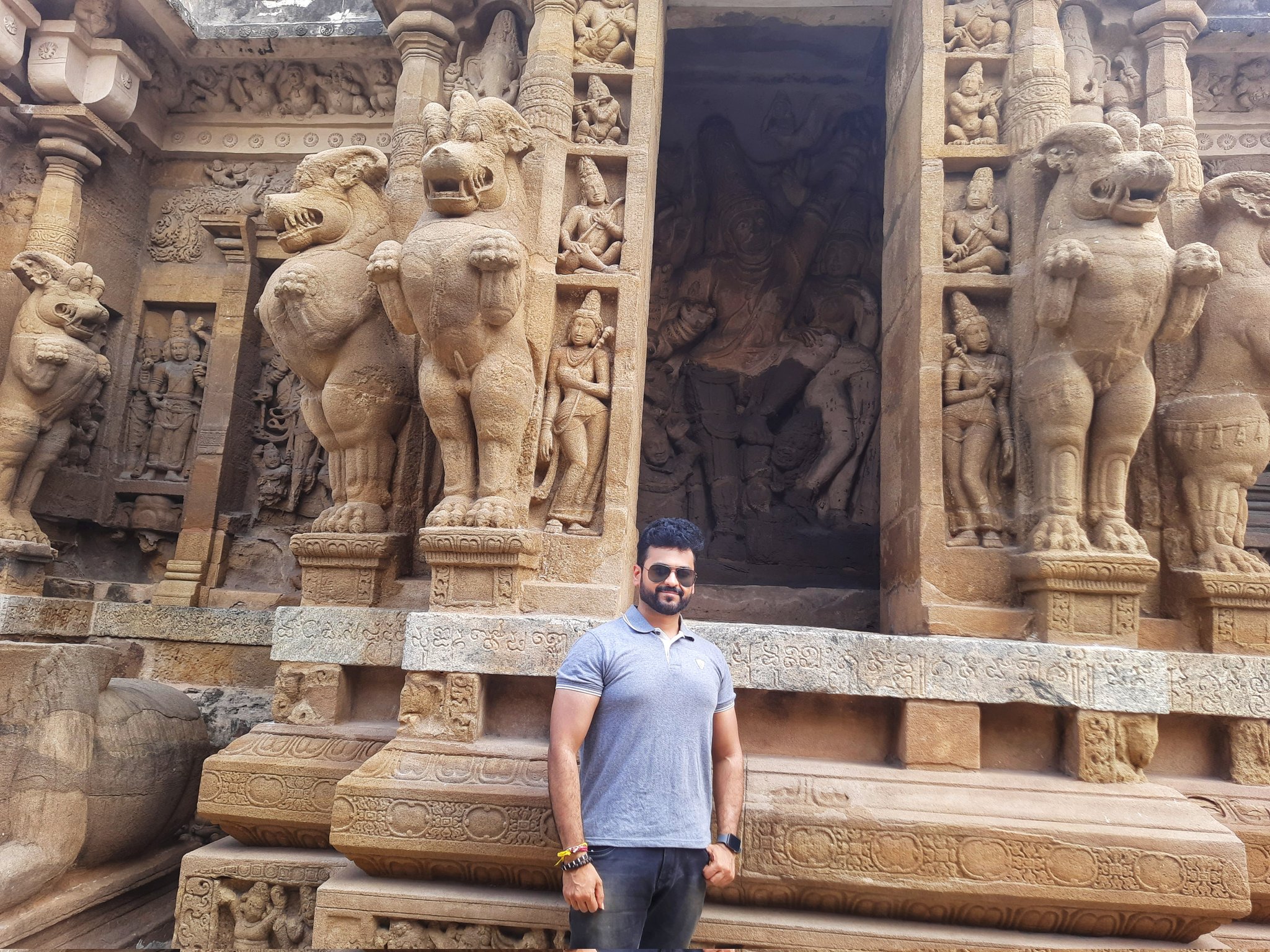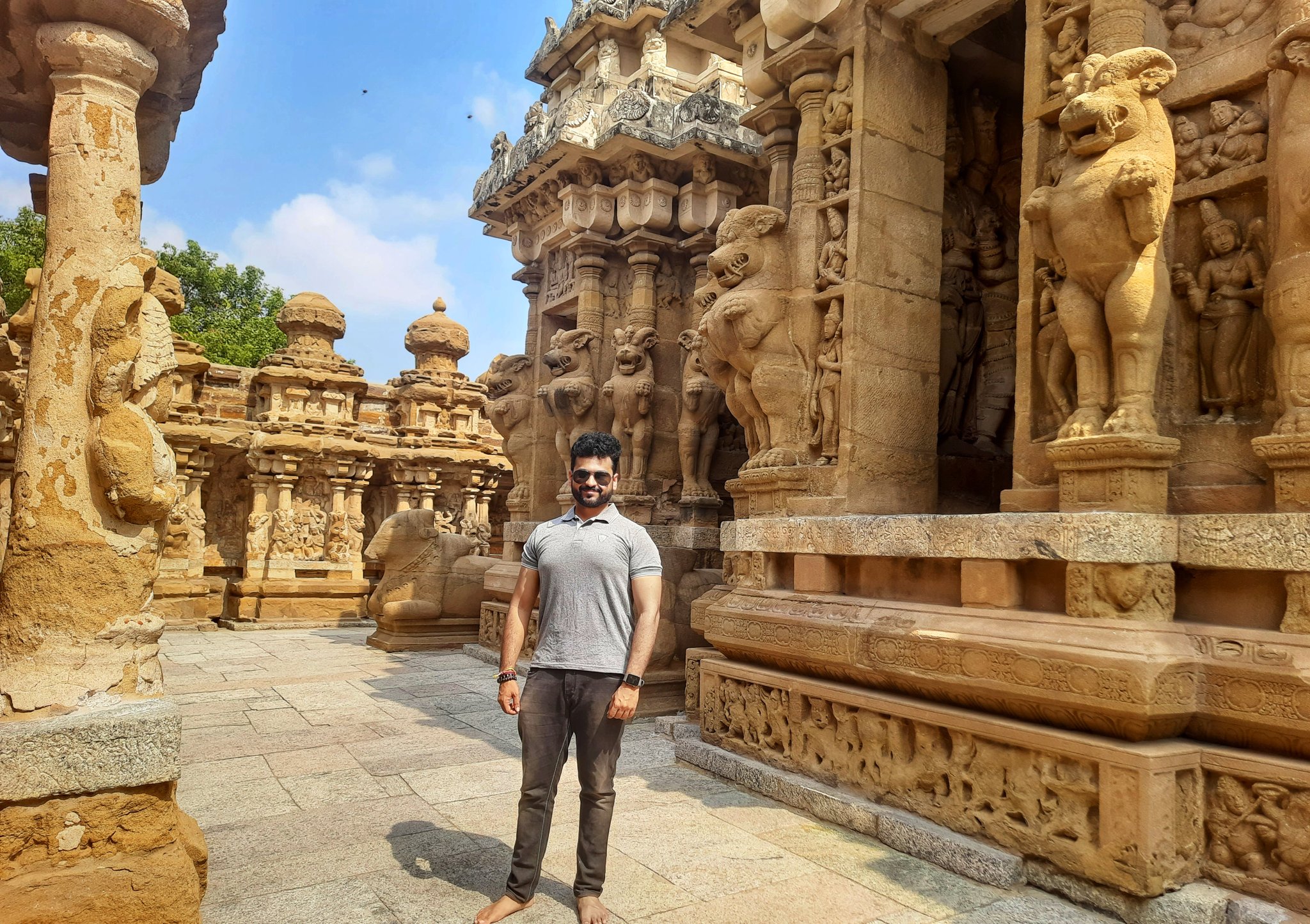Had the good fortune of having a darshana at one of the most iconic temples of Bharat in the last week of december 2023, the ancient Pallava era Kailasanatha Temple at Kanchi. This is a post on the temple's history, architecture & sculptures.
In order to fully appreciate the contents of this post, I'd suggest reading the following 4 articles written by me.
Firstly, brief history of the temple. It was built during the 8th century by Pallava emperor Rajasimha. The temple also goes by the name Rajasimheshwara. This temple served as the architectural blueprint for the Chalukyas & later Rashtrakutas for their temples at Vatapi (Badami,Karnataka) & Ellora (Maharashtra).
There is a Pallava-Granta inscription in the temple that praises Rajasimha as a great ruler. He is praised as having mastered the vedas and shaiva siddhantha. He is compared to Indra & Kubera Some of the titles used by Rajasimha were Ishanacharana, Sivachudamani, Kalasamudra.
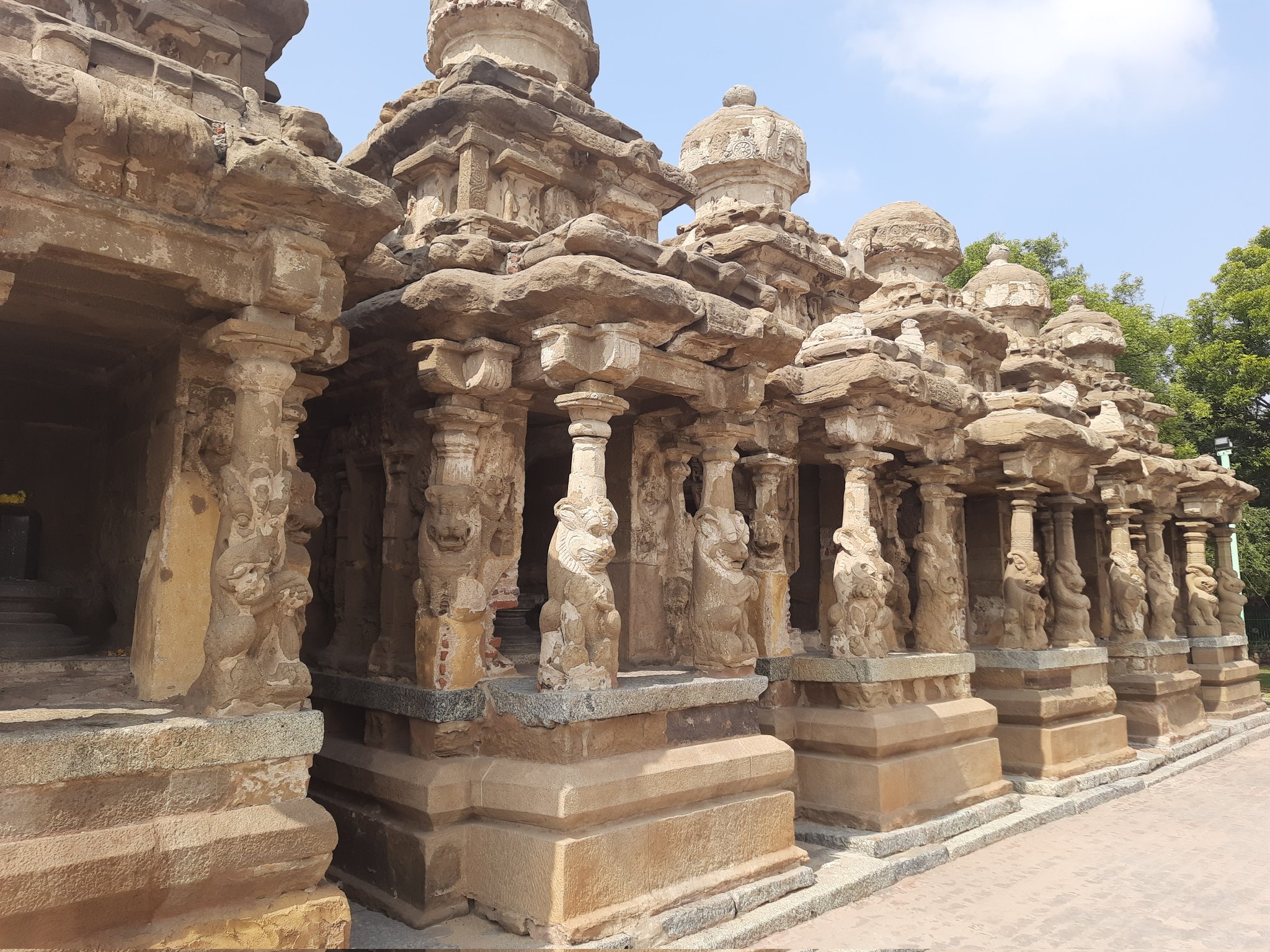 |
| 8 small shrines commissioned by Rajasimha |
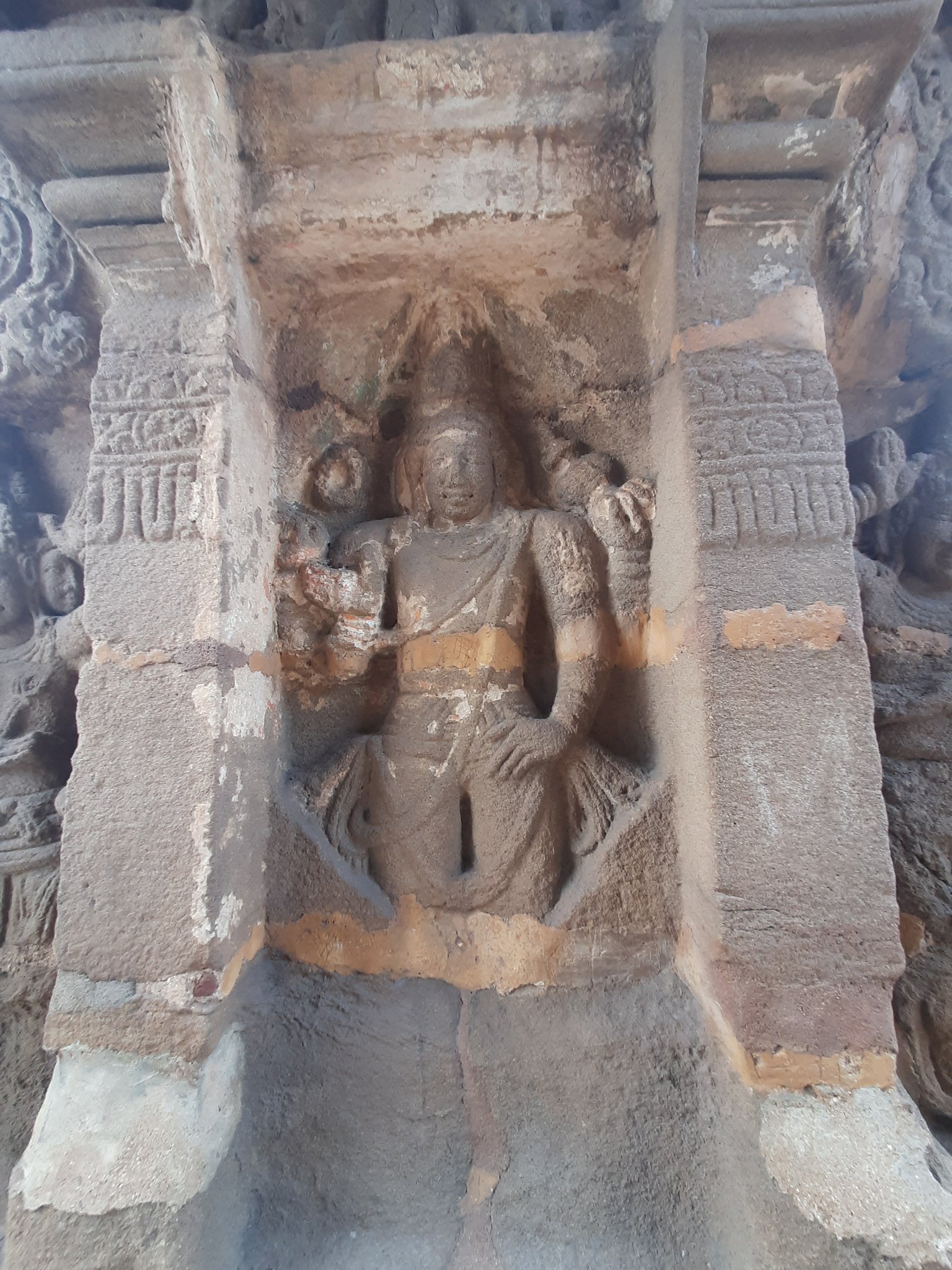 |
| Lingodhbhava |
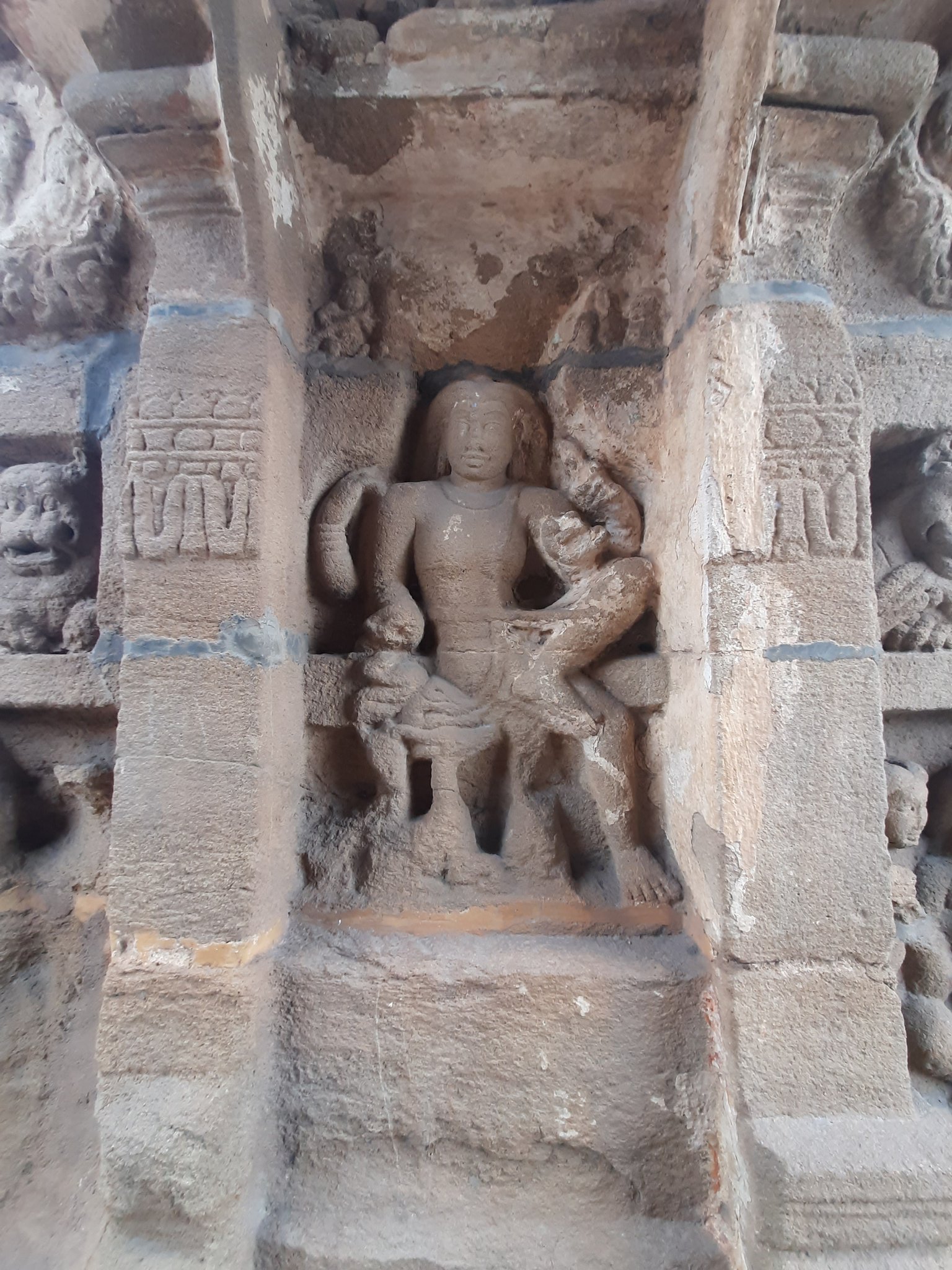 |
| Dakshinamurthi |
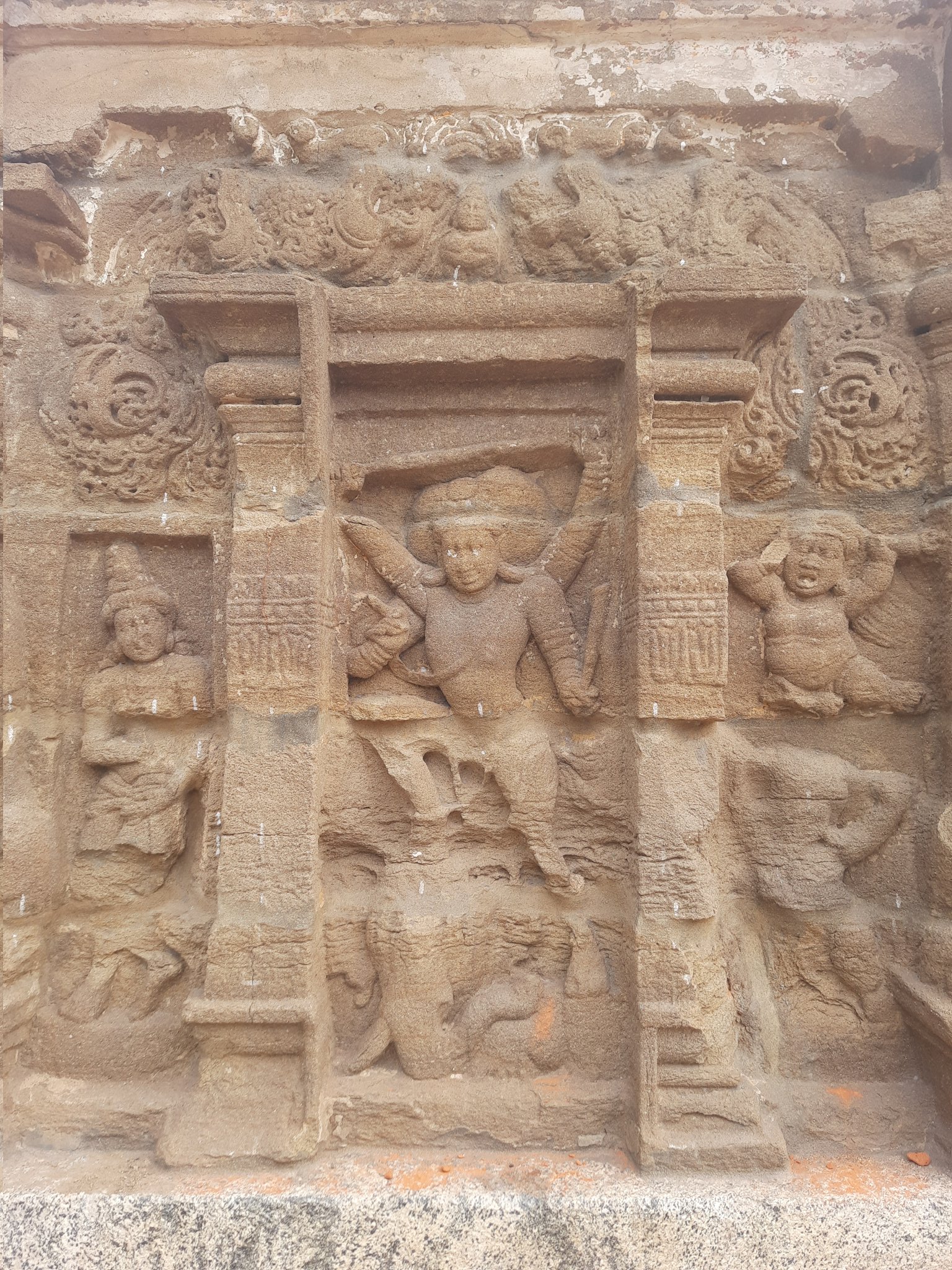 |
| Gajasamharamurthi |
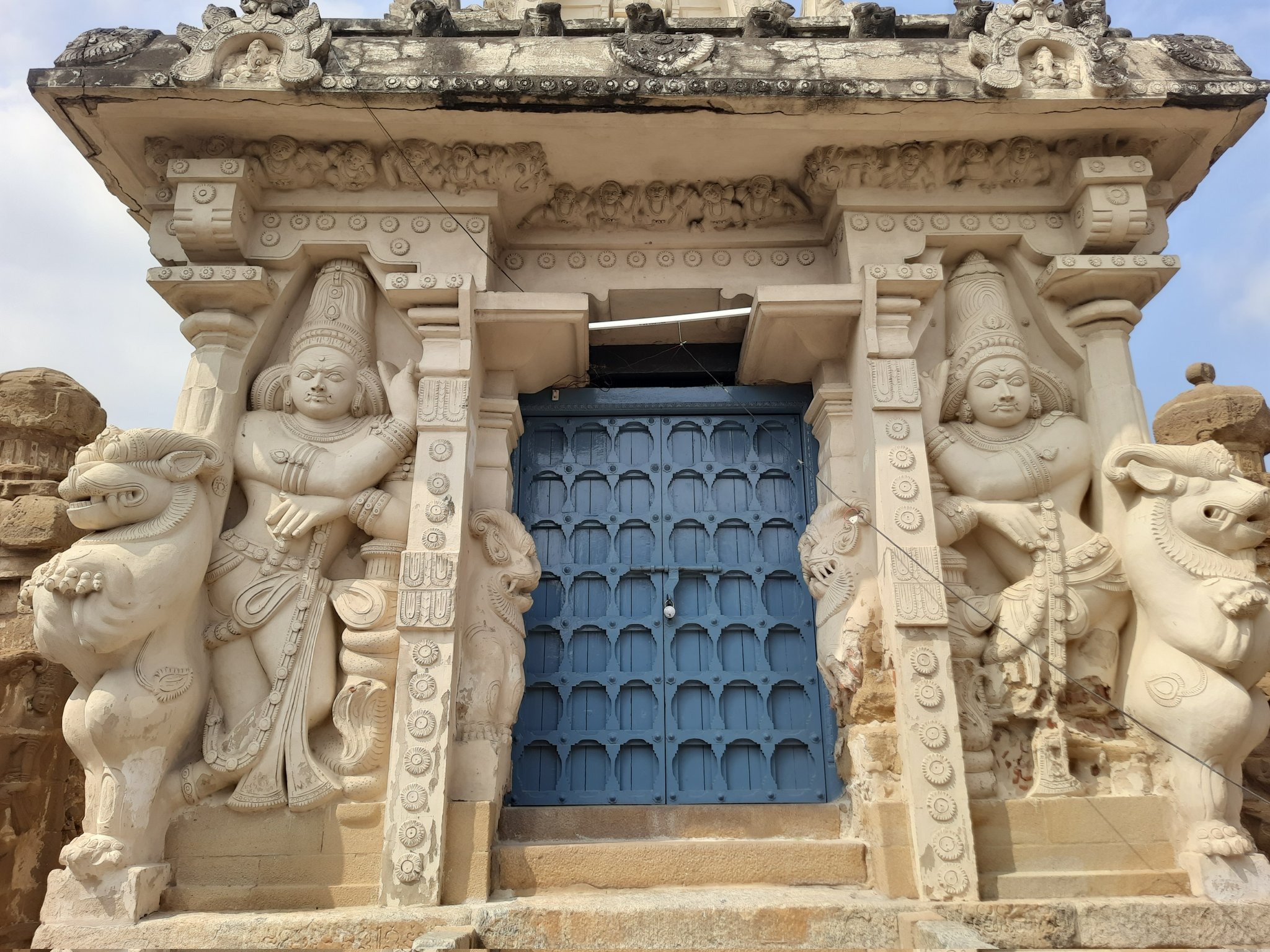 |
| Mahendravarman Temple |
As we enter the temple complex, we notice this temple first, which was built by Mahendravarma, Rajasimha's son. On the steps of this temple there is a Sanskrit inscription in Grantha that names the temple as Mahendravarmesvaragrham (Shiva Temple of Mahendravarman)
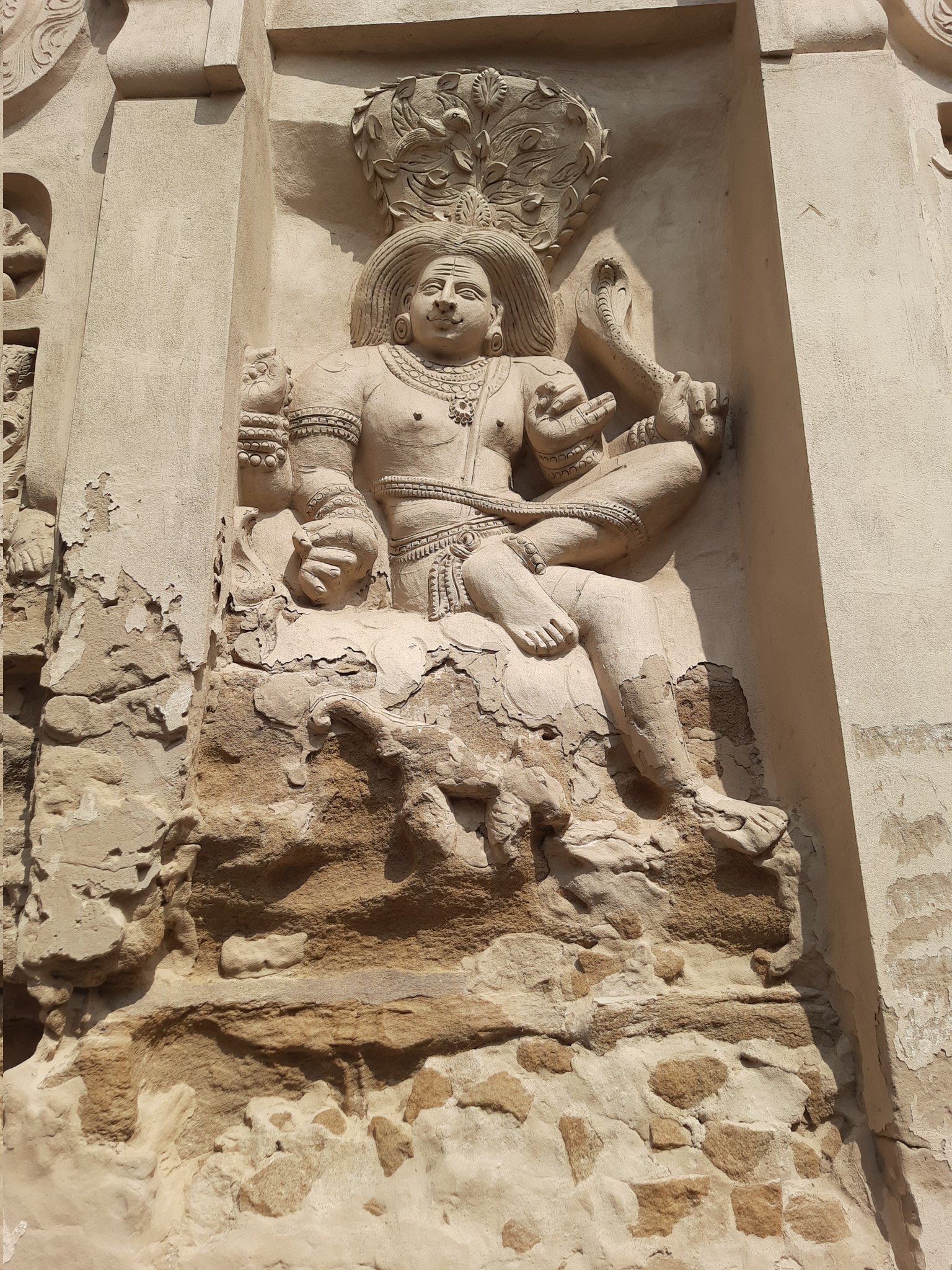 |
| Dakshinamurthi on South Wall |
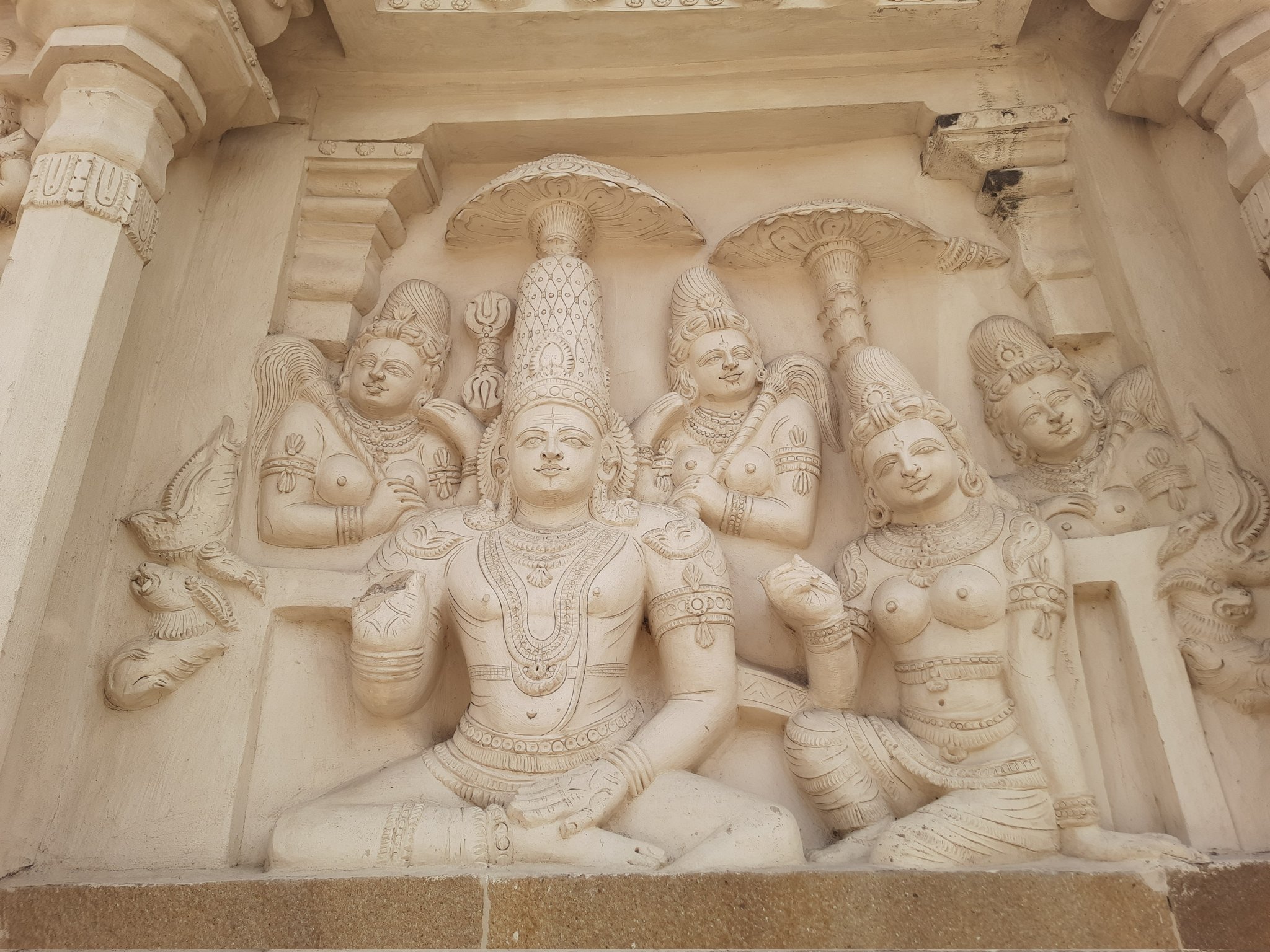 |
| Uma Maheshwara on West Wall |
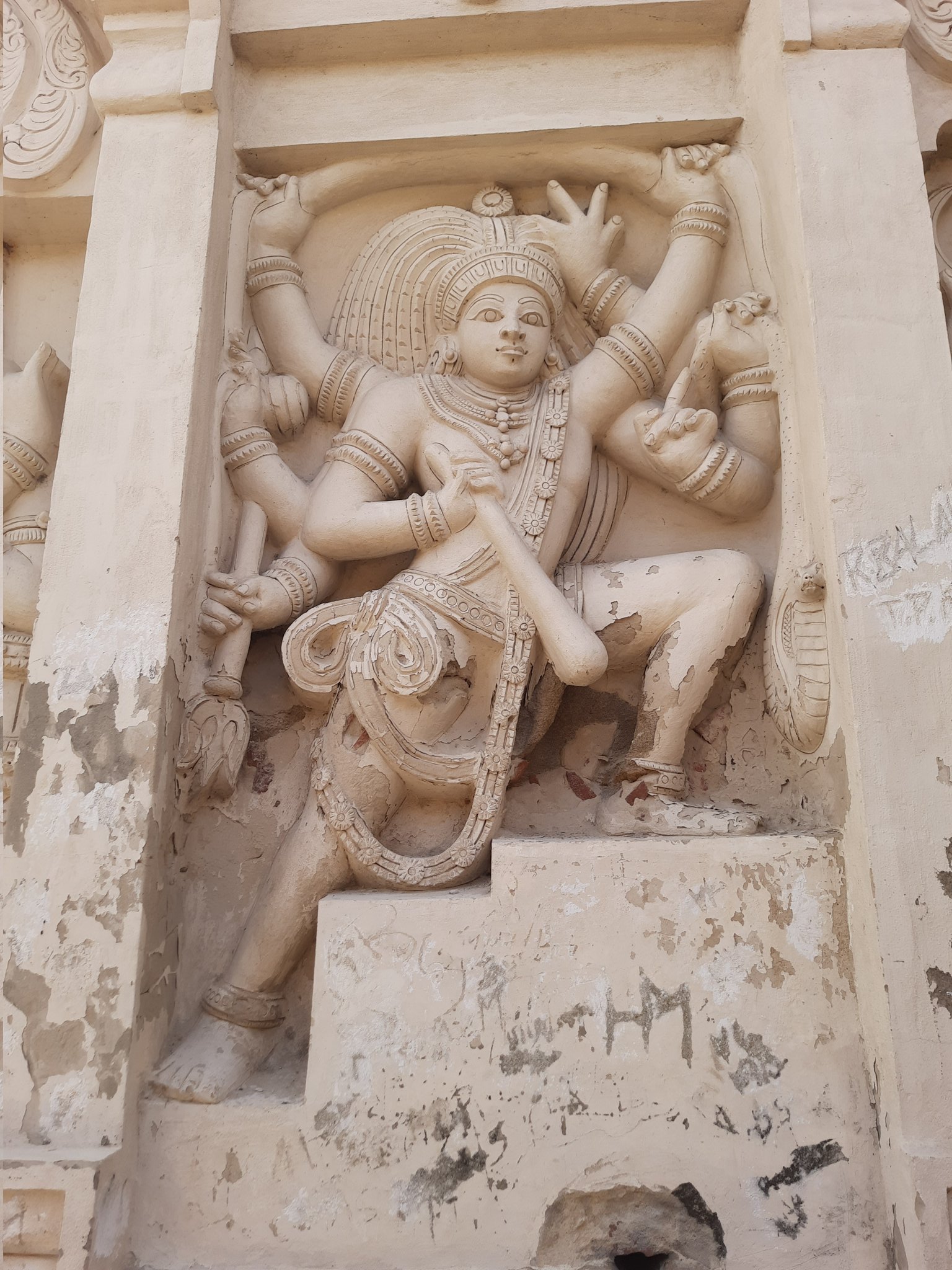 |
| Shiva performing Samhara Tandava |
As we go around the temple prakara, we find a number of smaller gudis, each dedicated to several aspects of Shiva, Parvati, Ganesha, Durga, Vishnu. The inner walls of the enclosure also feature carvings of Dikpalakas, Rishis, Parivara and Vastupada devatas. Let's have a look.
Murthis North of the Entrance
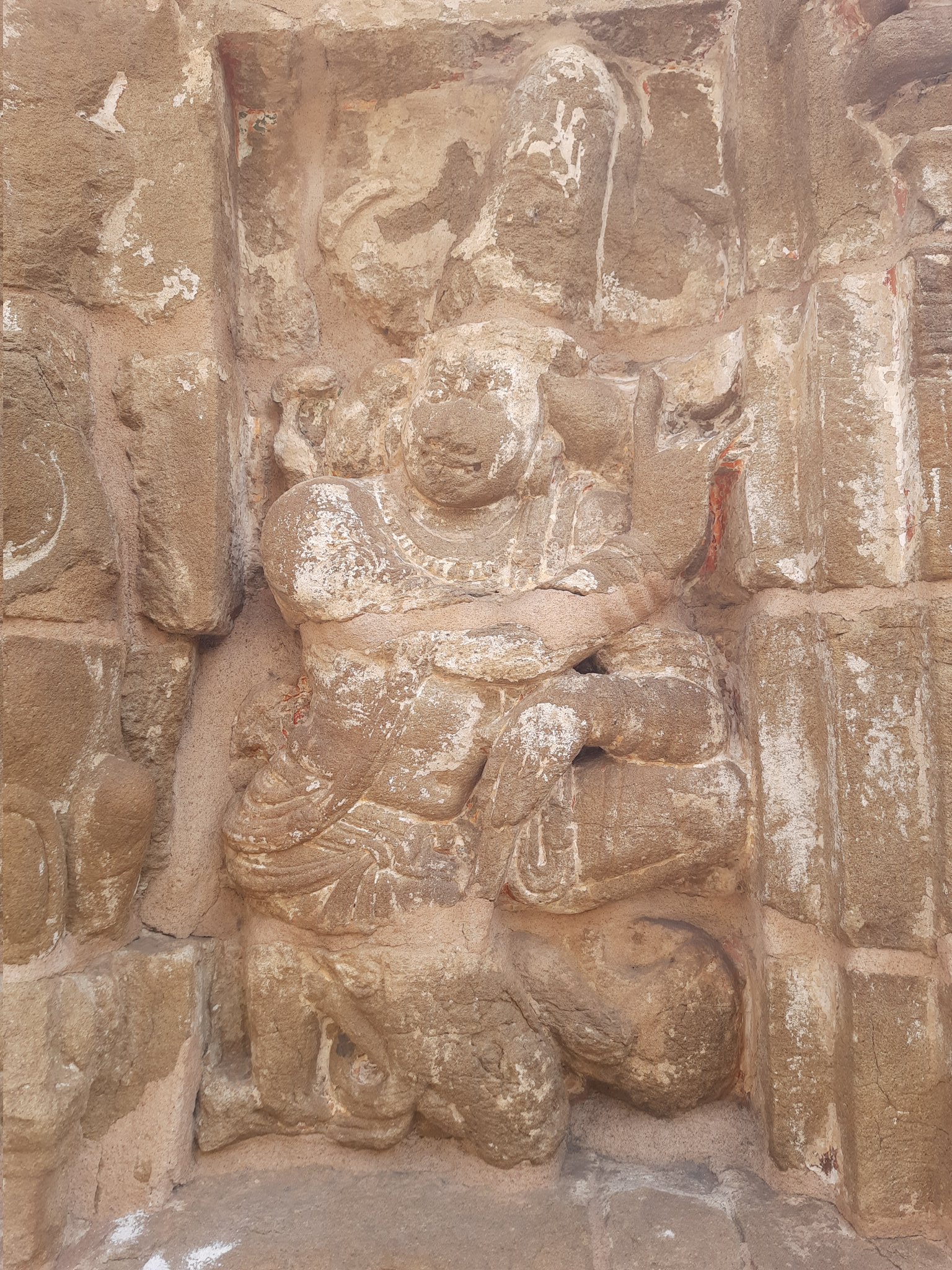 |
| Dwarapalaka |
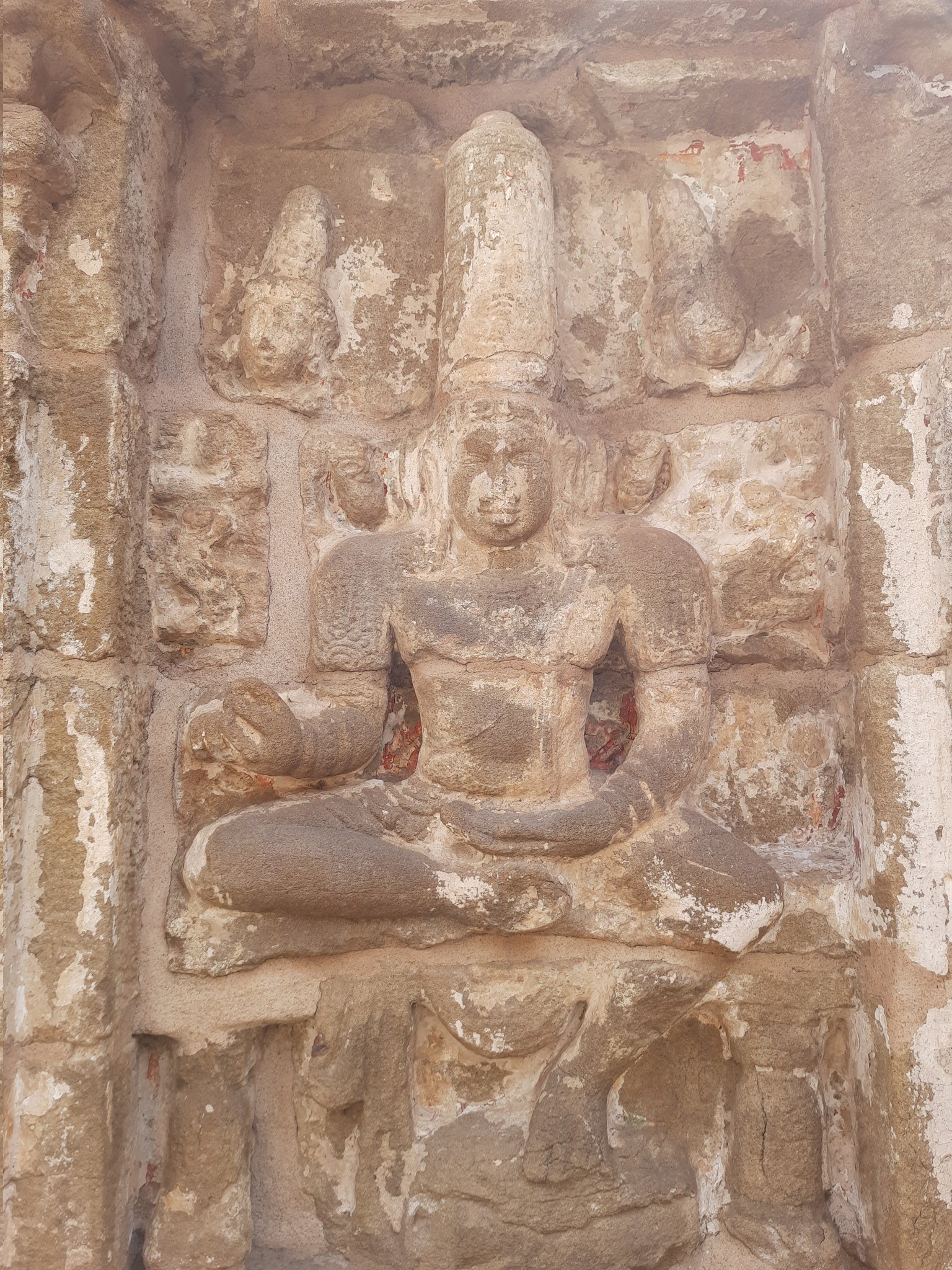 |
| Shiva |
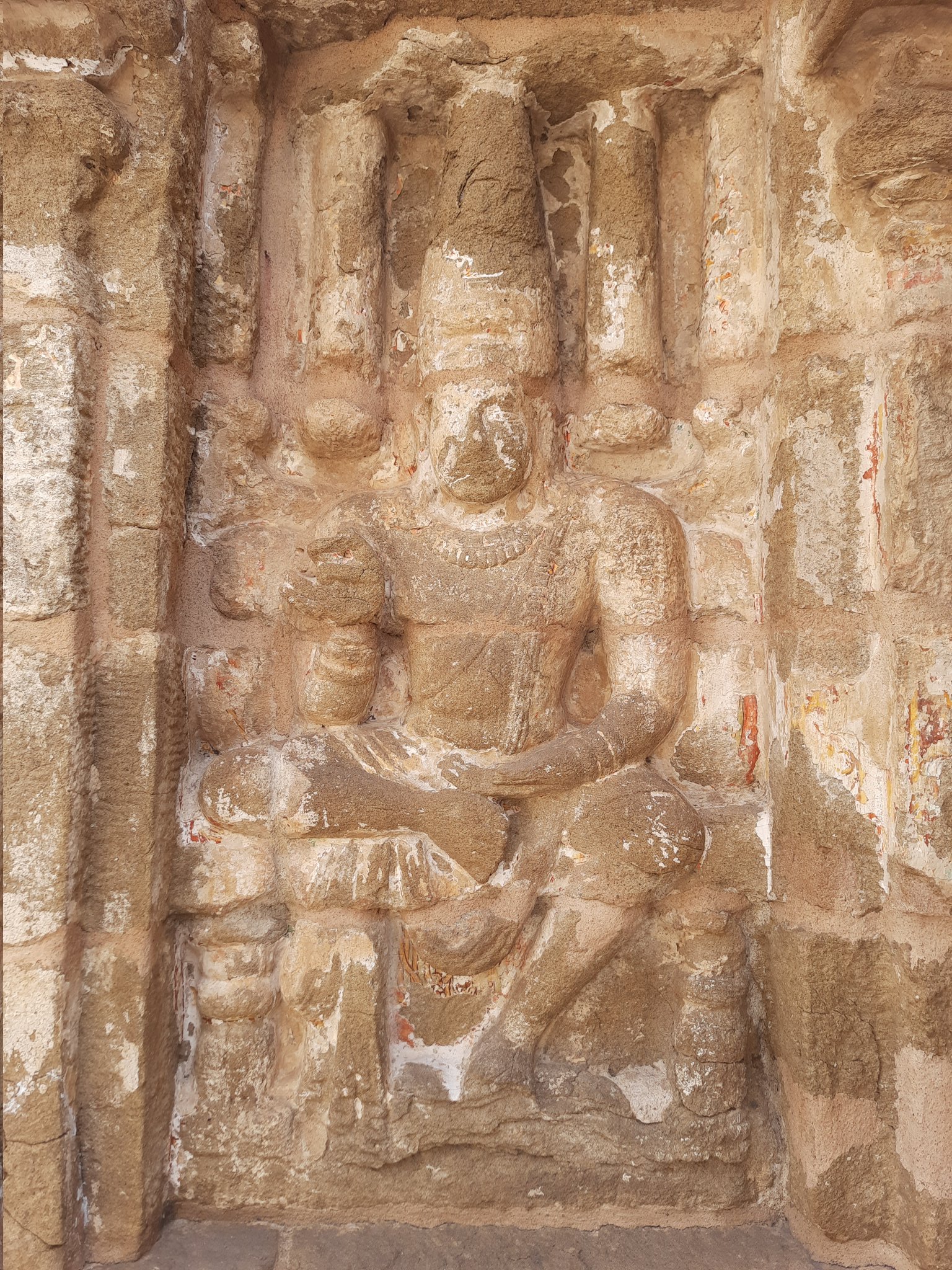 |
Shiva
|
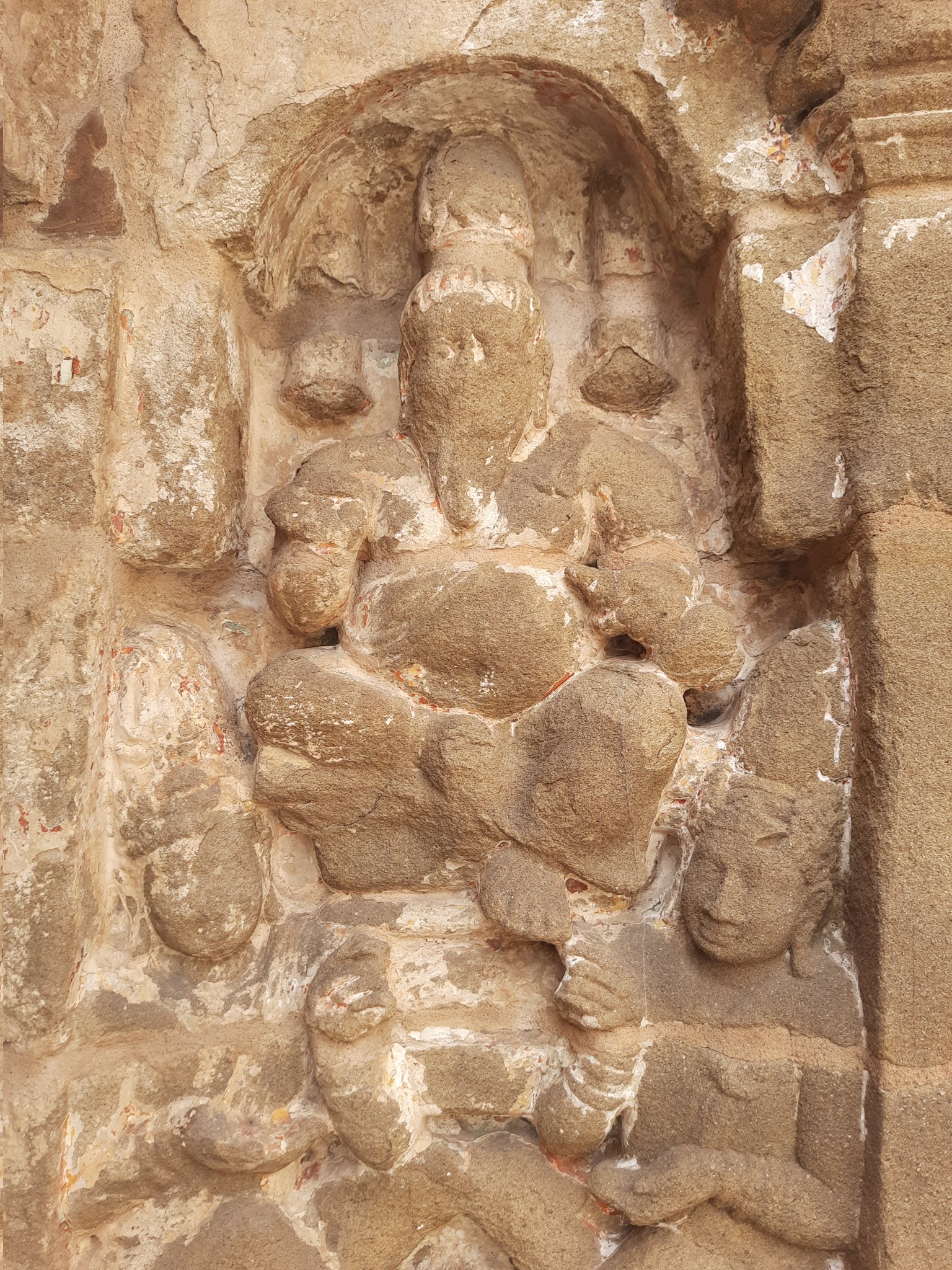 |
| Agastya |
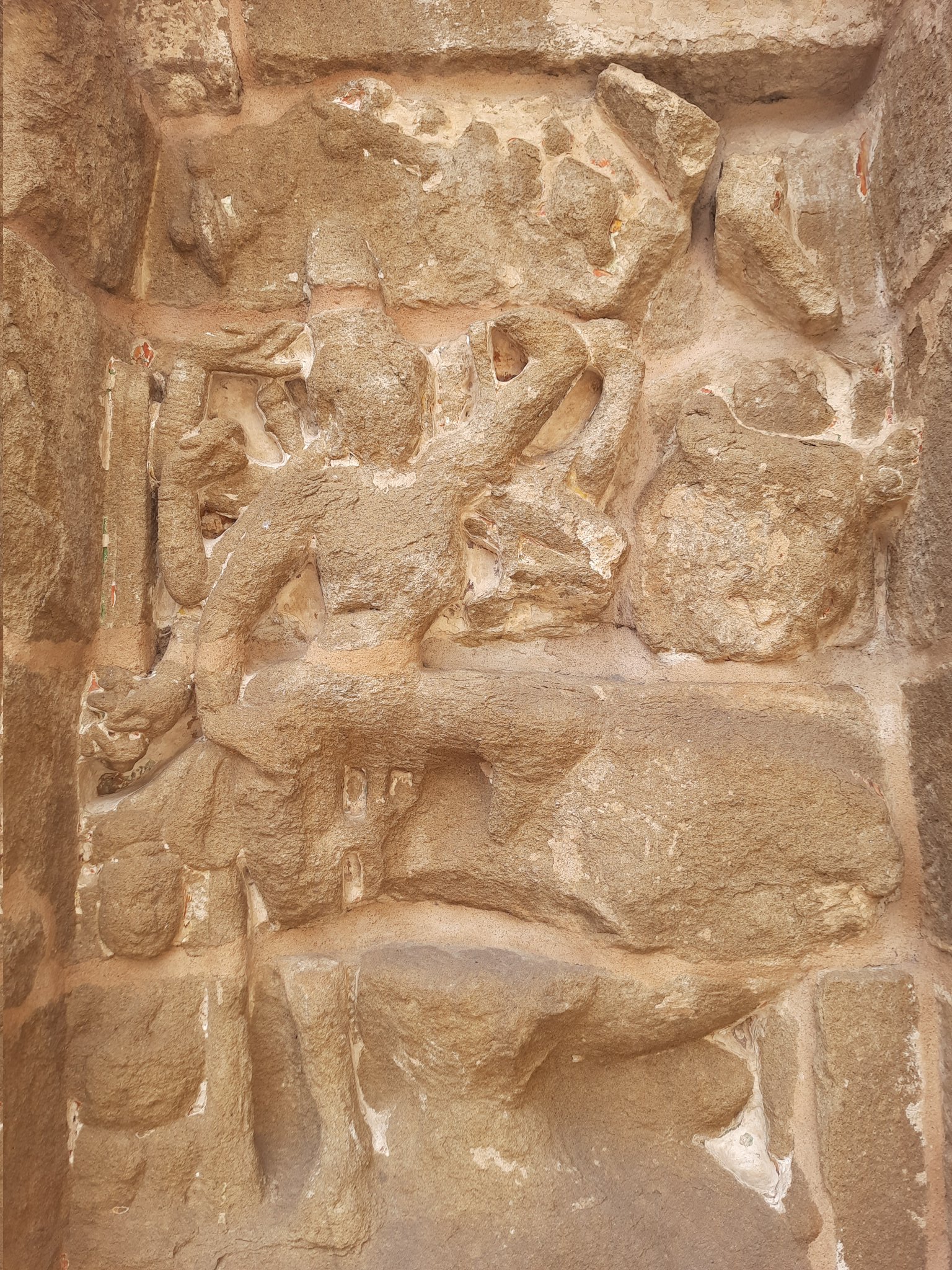 |
| Durga |
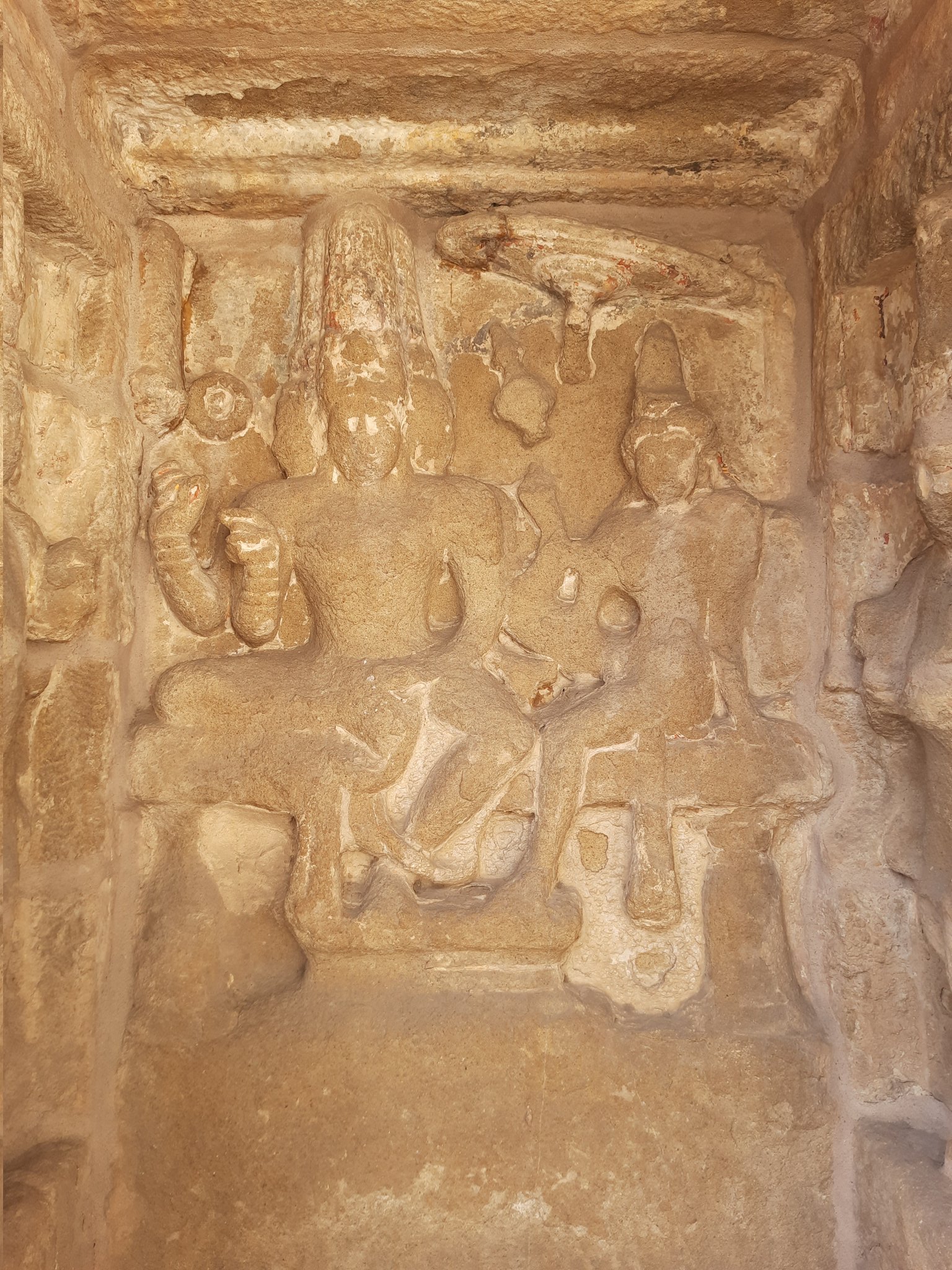 |
| Brahma with Saraswati |
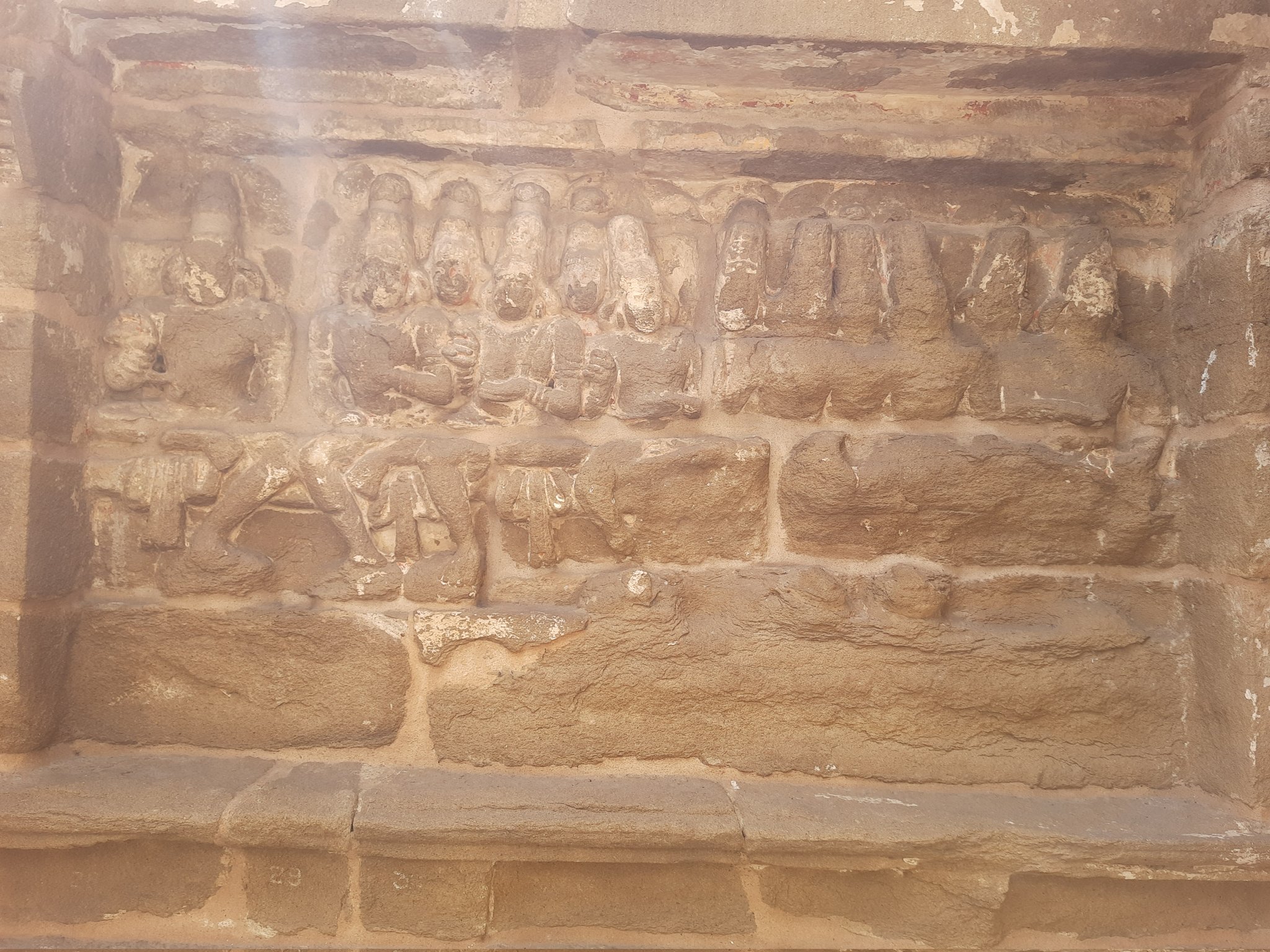 |
| 12 Adityas |
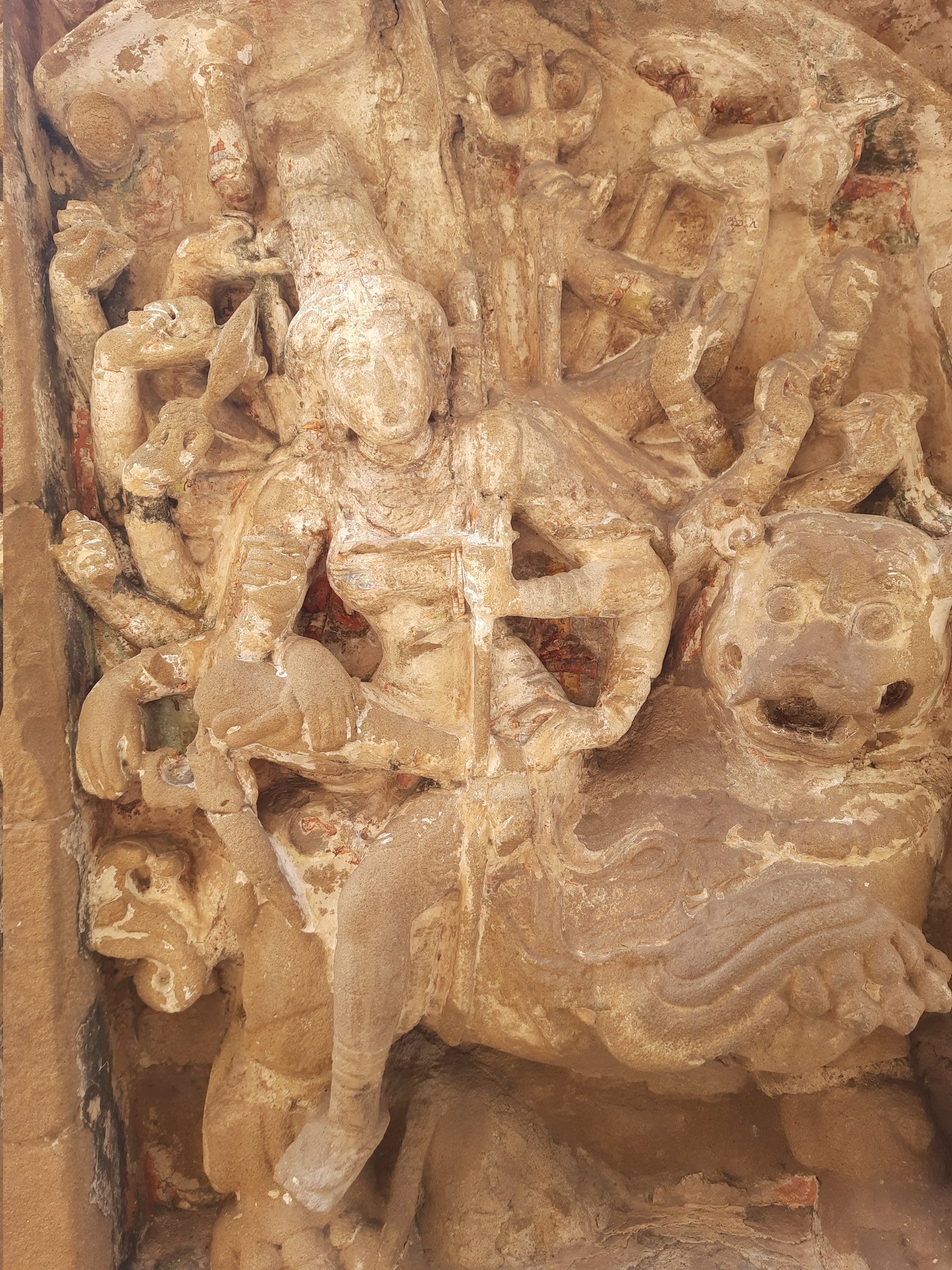 |
| Katyayani |
Murthis South of the Entrance
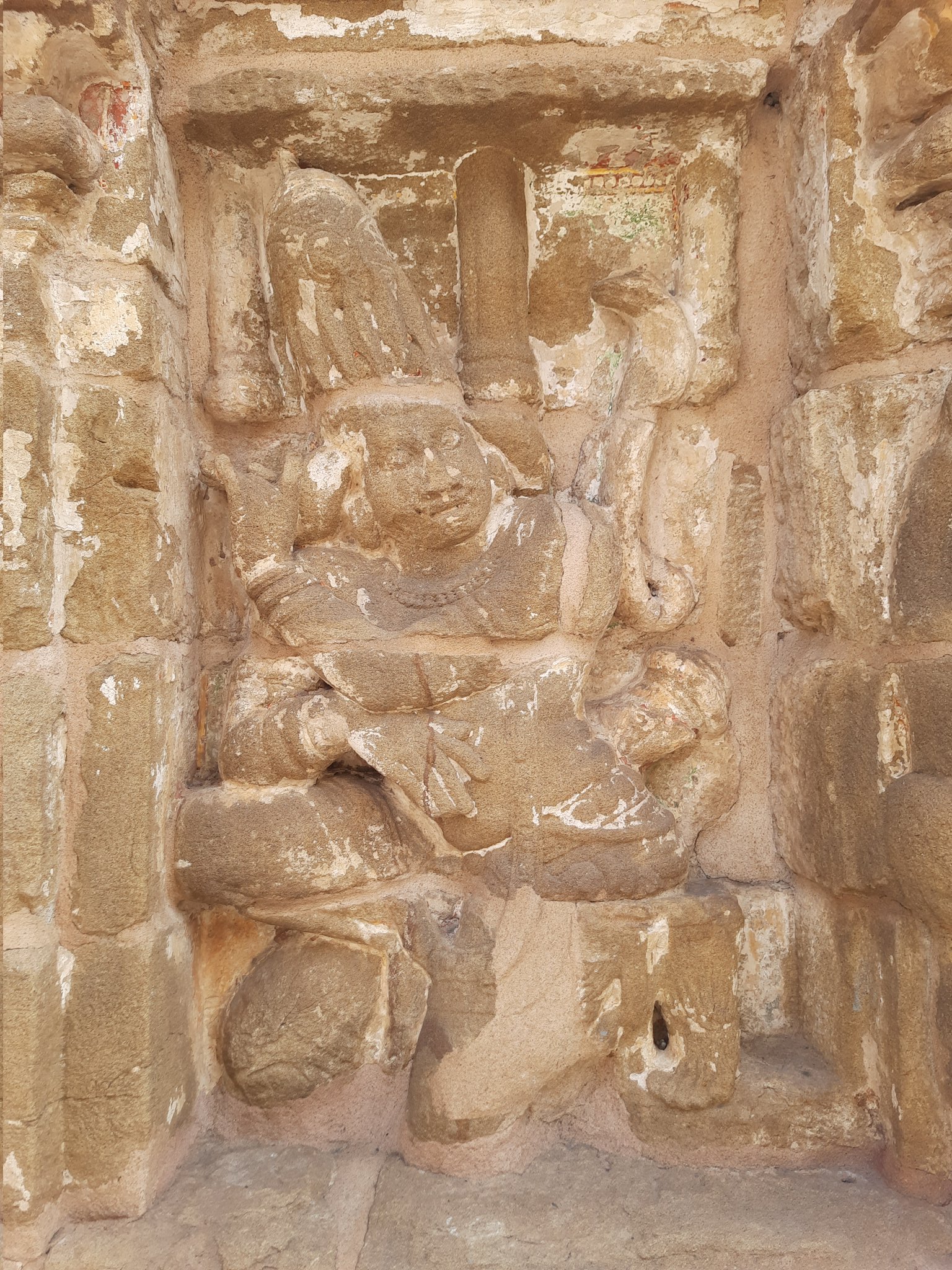 |
| Dwarapalaka |
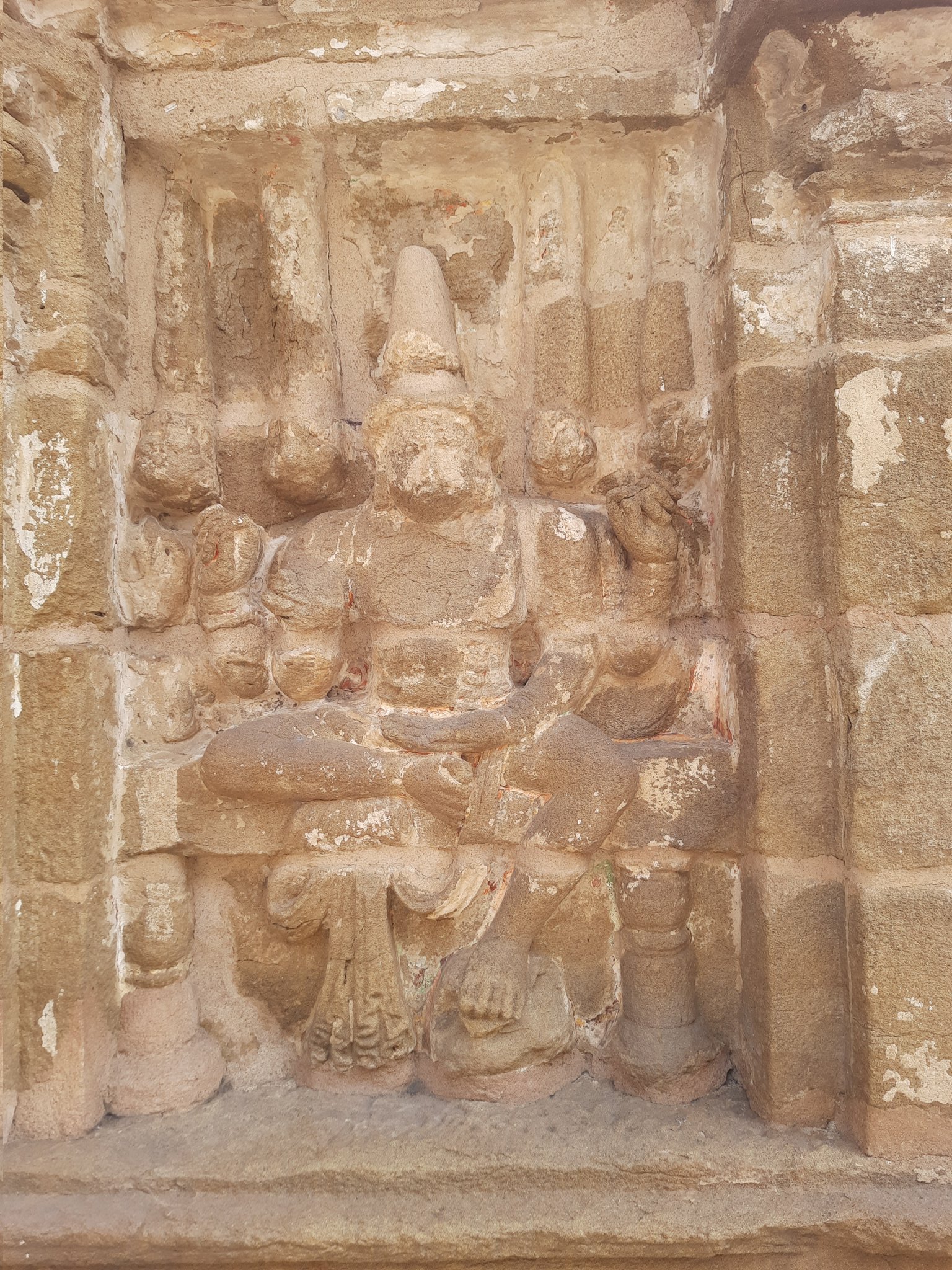 |
| Shiva |
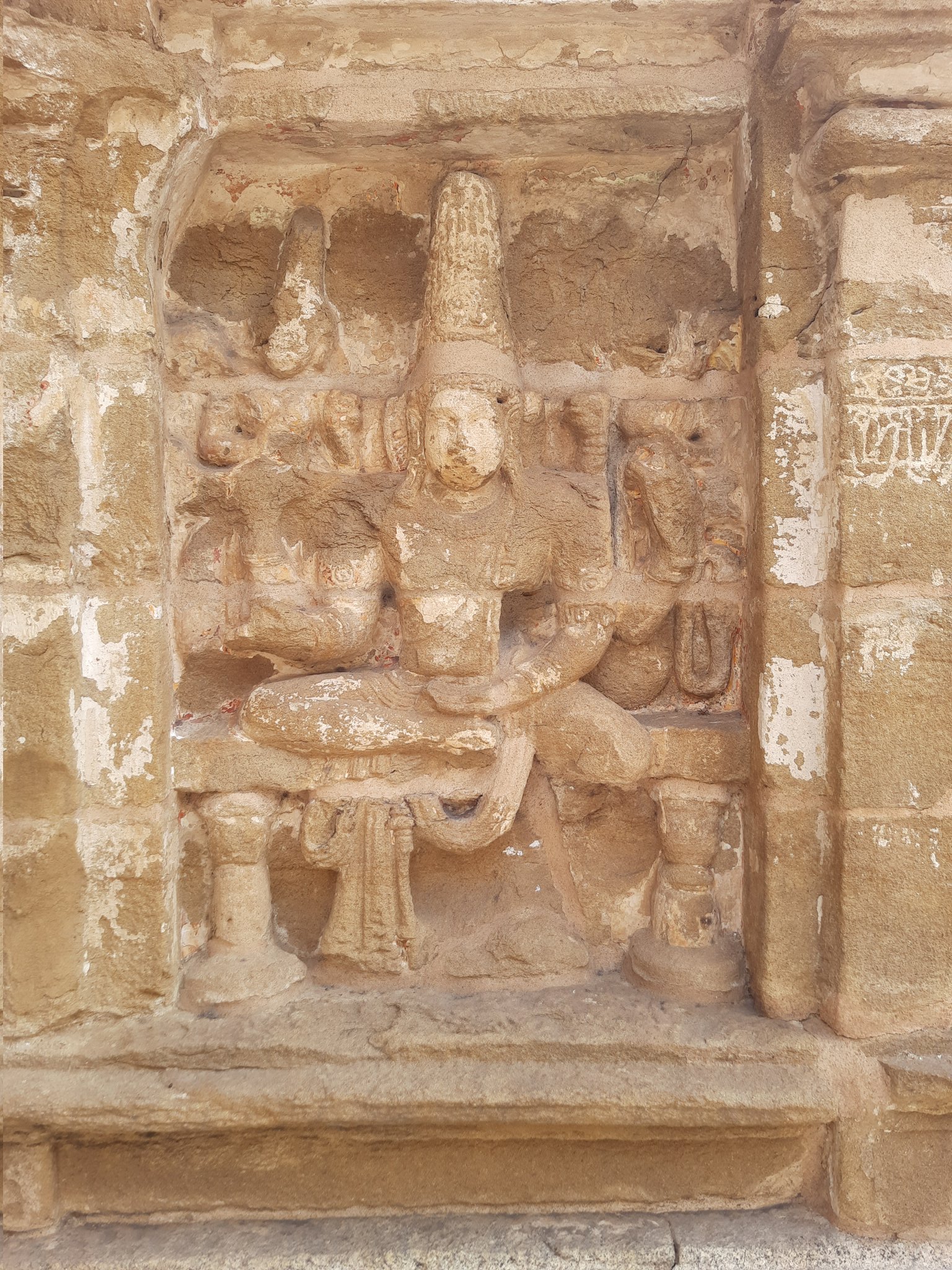 |
| Shiva |
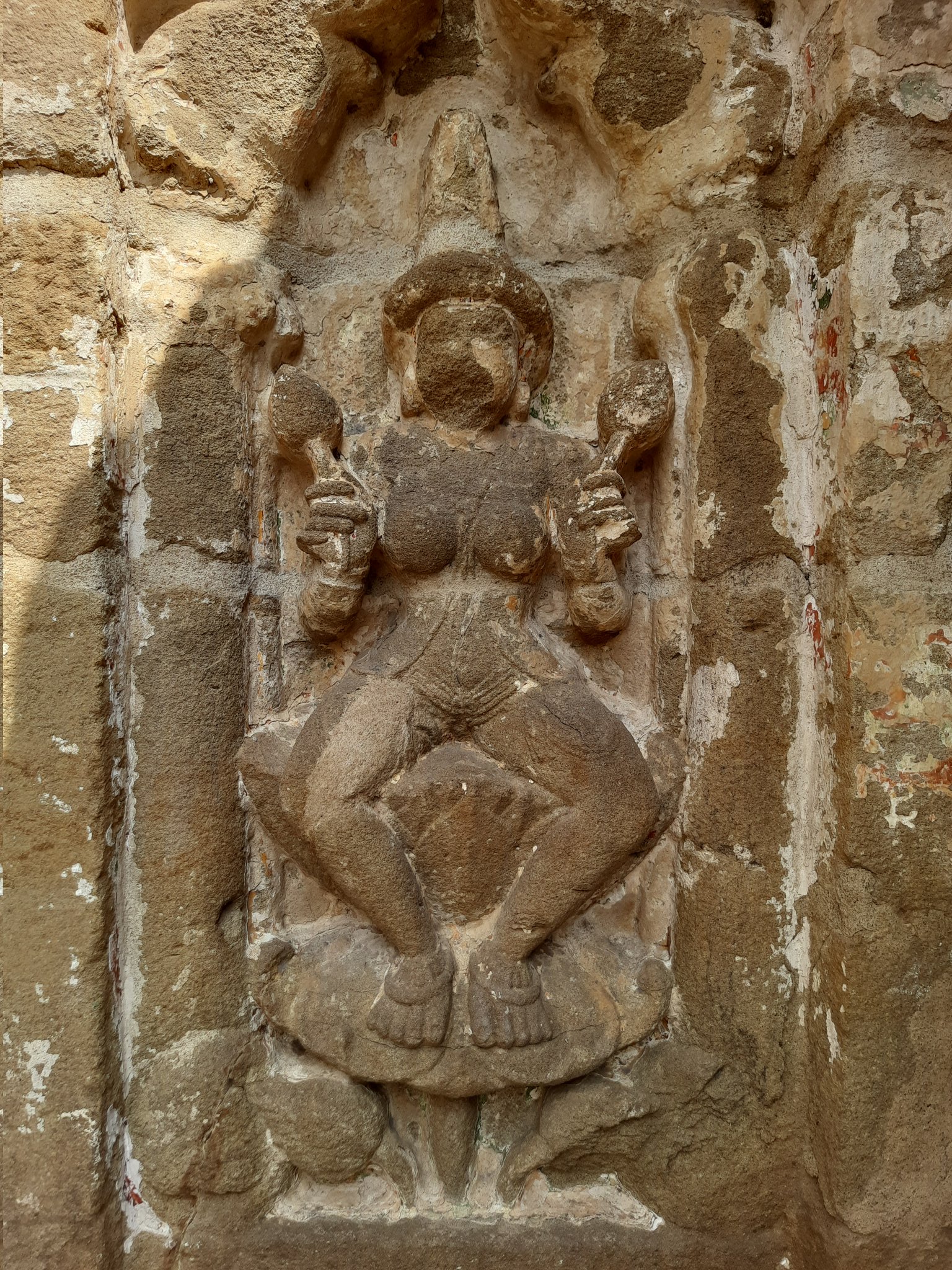 |
| Lakshmi |
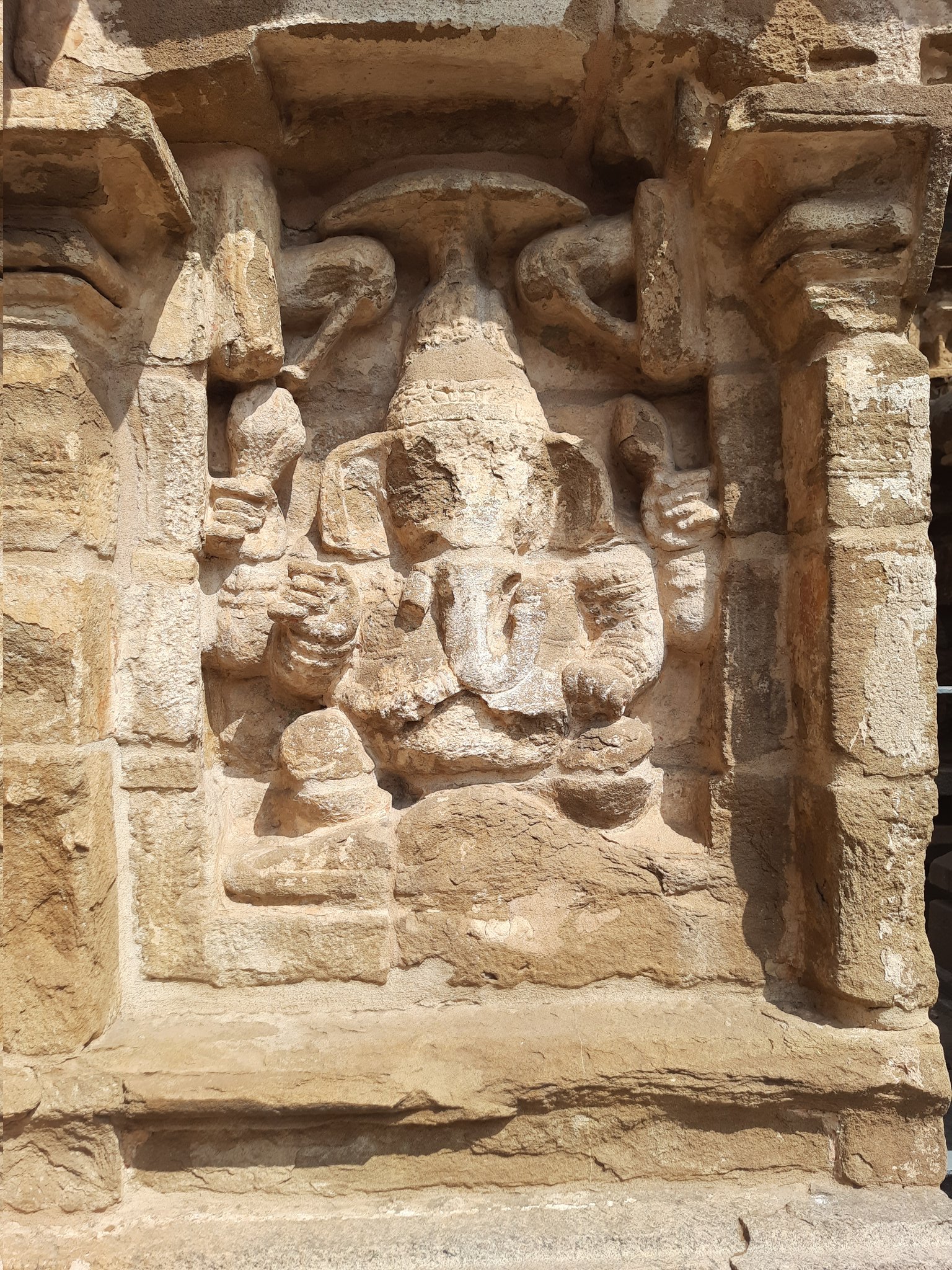 |
| Ganesha |
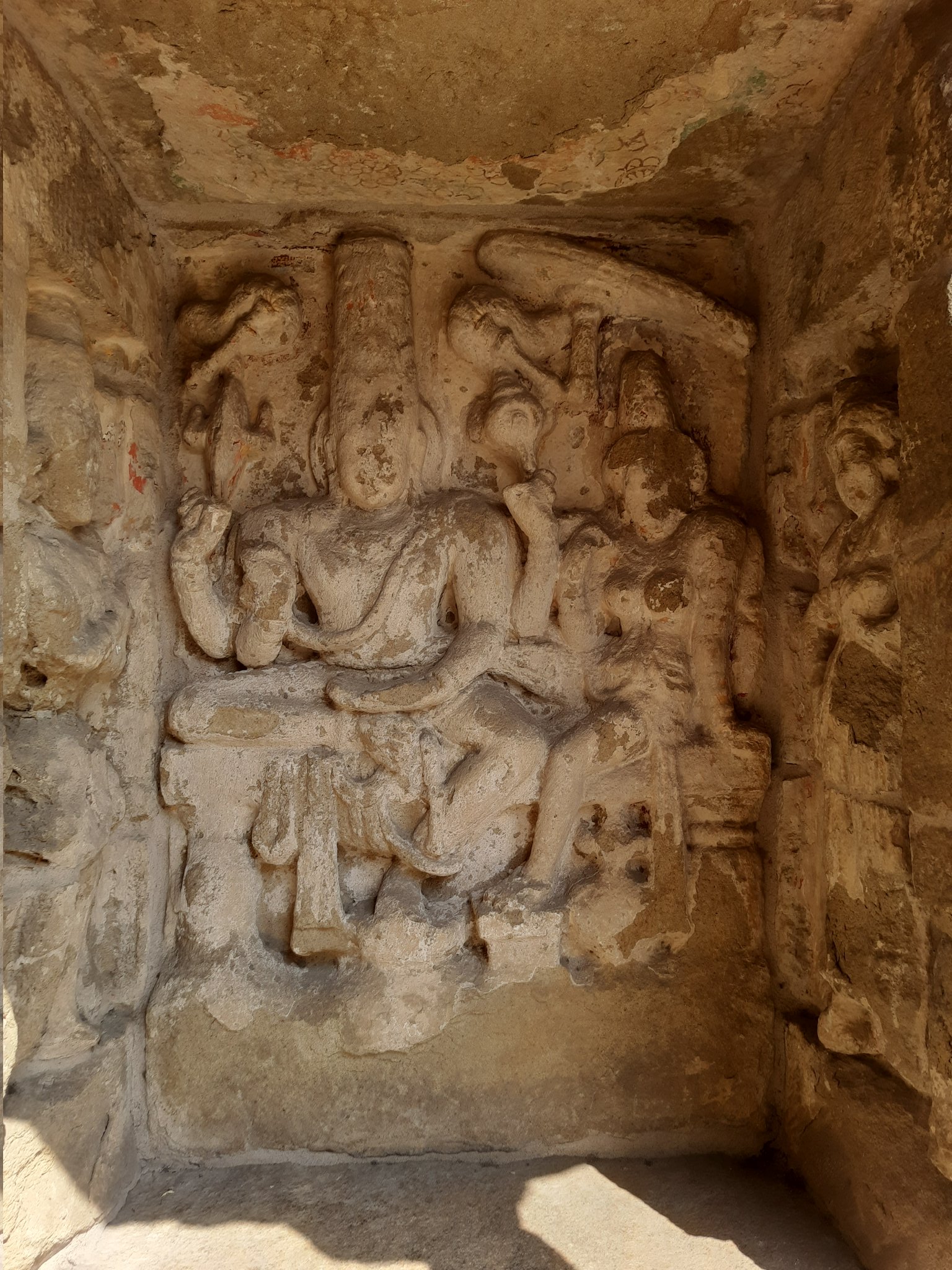 |
| Vishnu with Lakshmi |
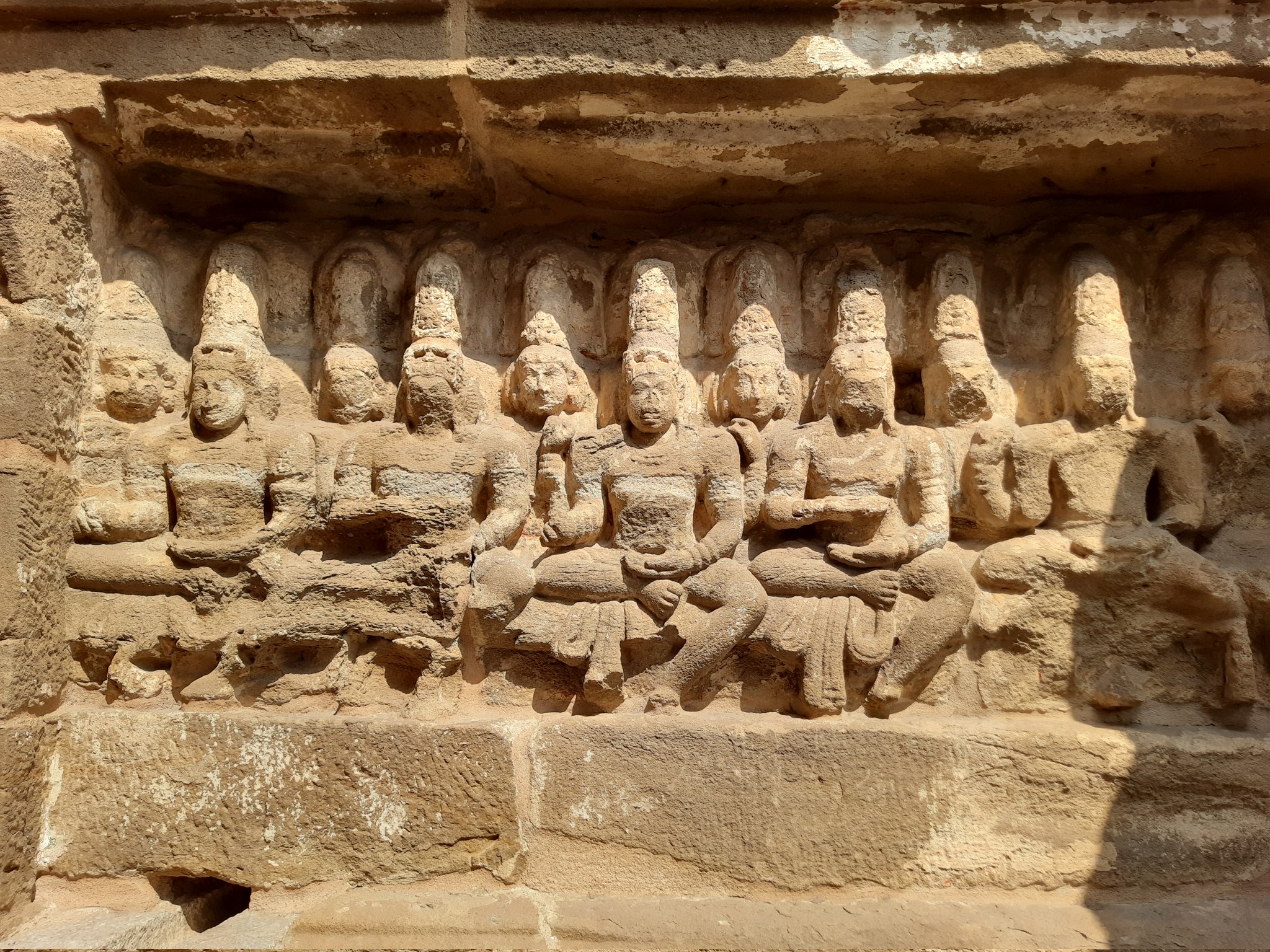 |
| 12 Rudras |
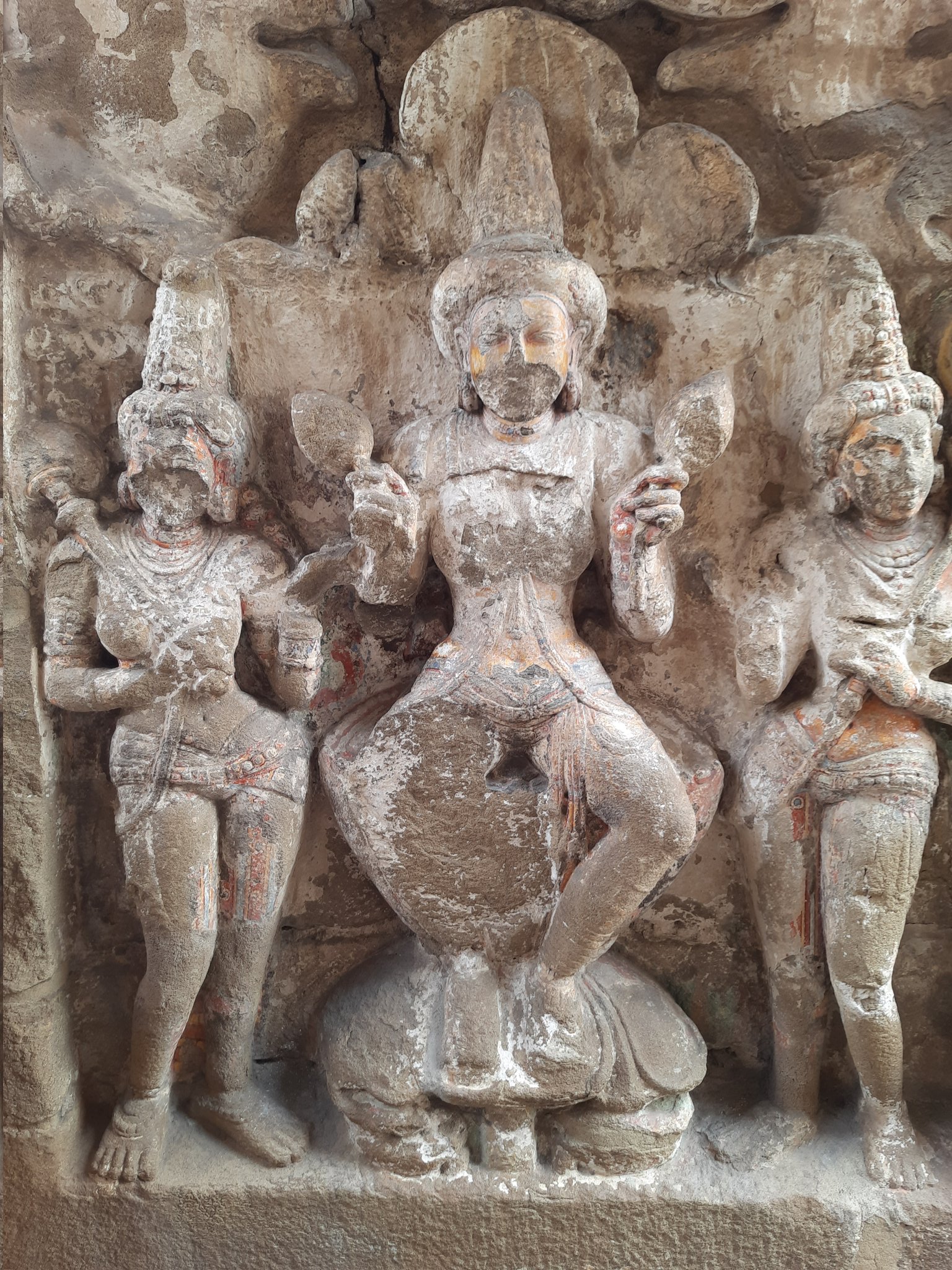 |
| Lakshmi |
Murthis in the Main Enclosure
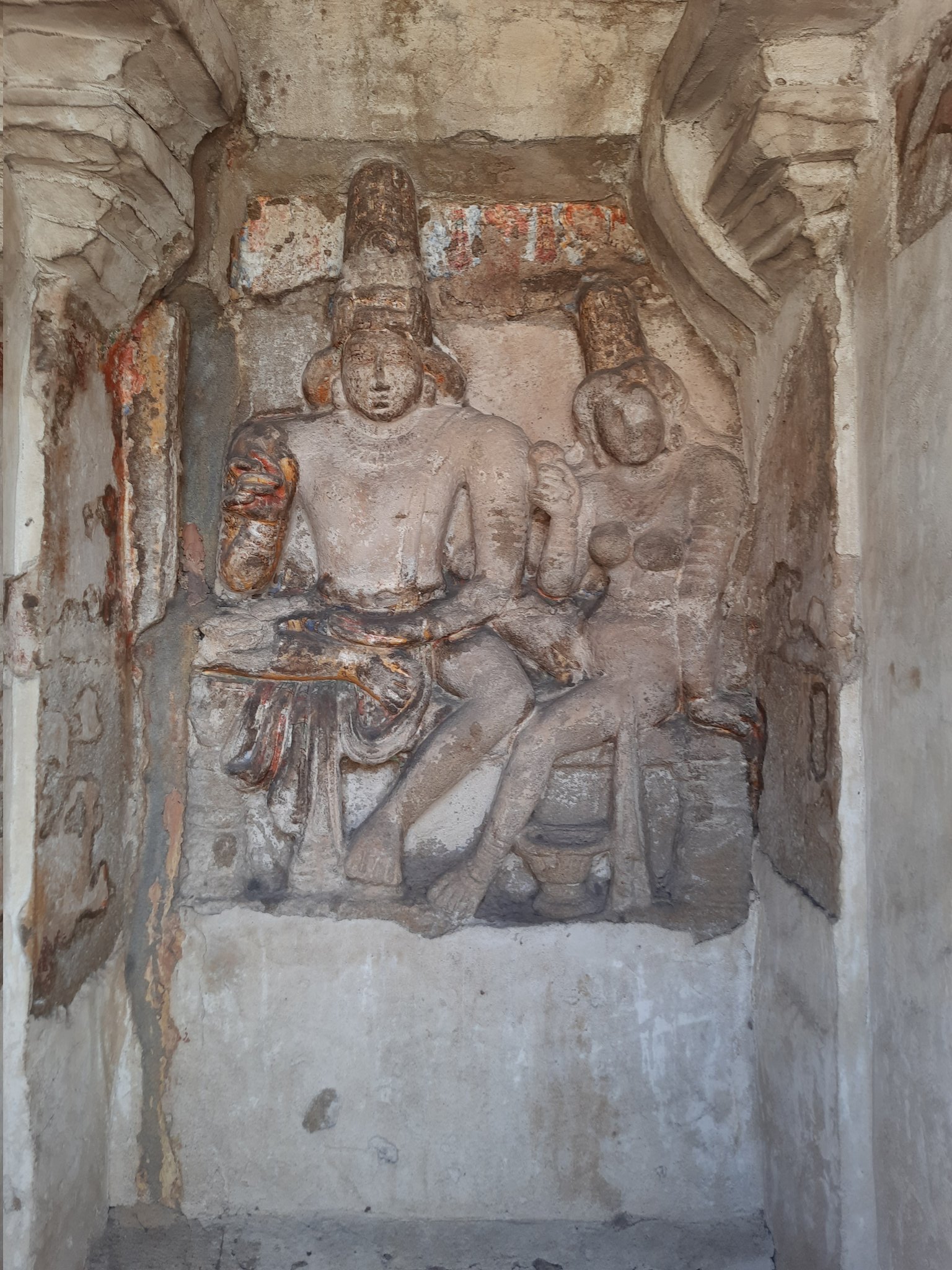 |
| Uma Maheshwara |
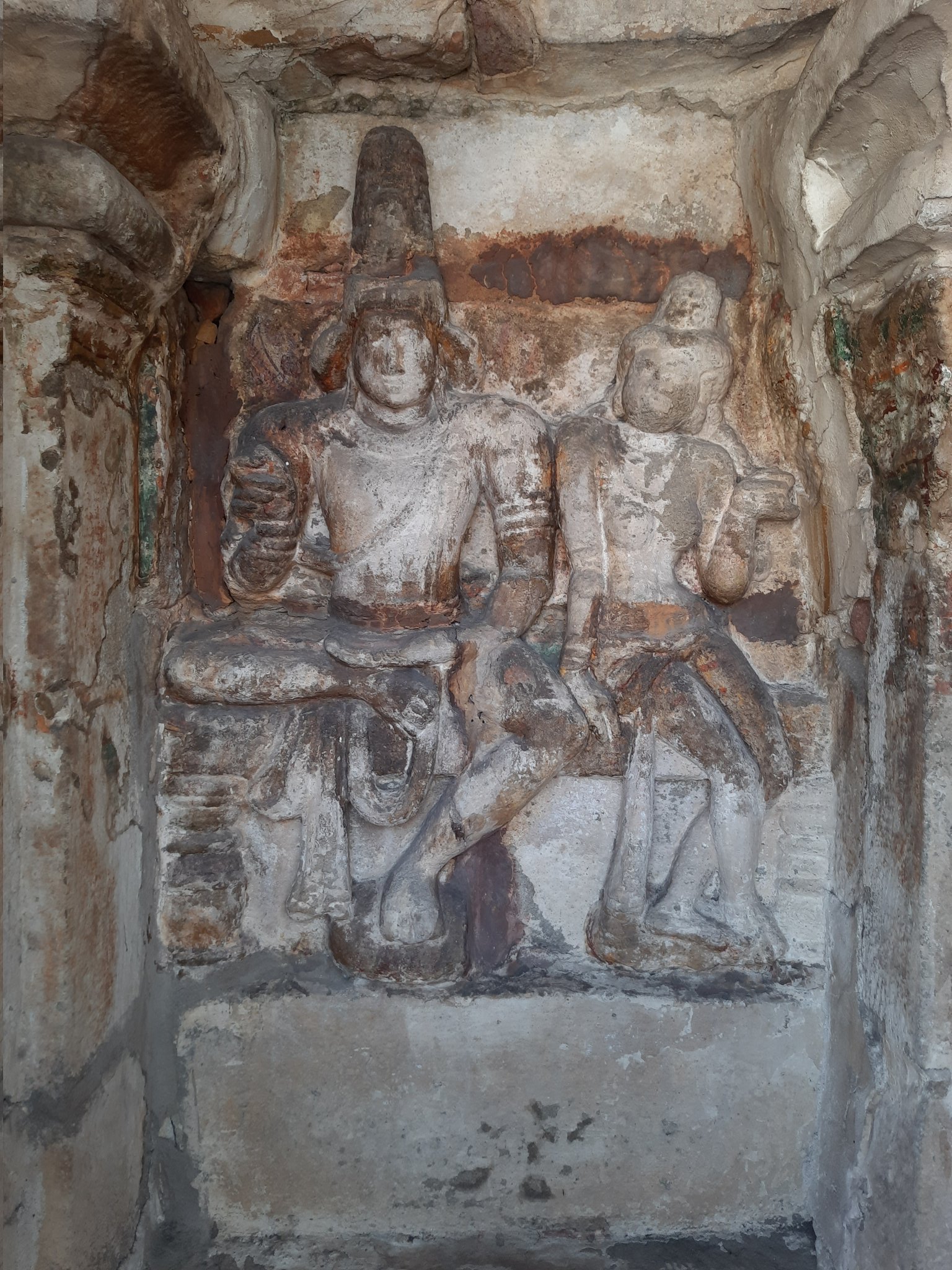 |
| Uma Maheswara |
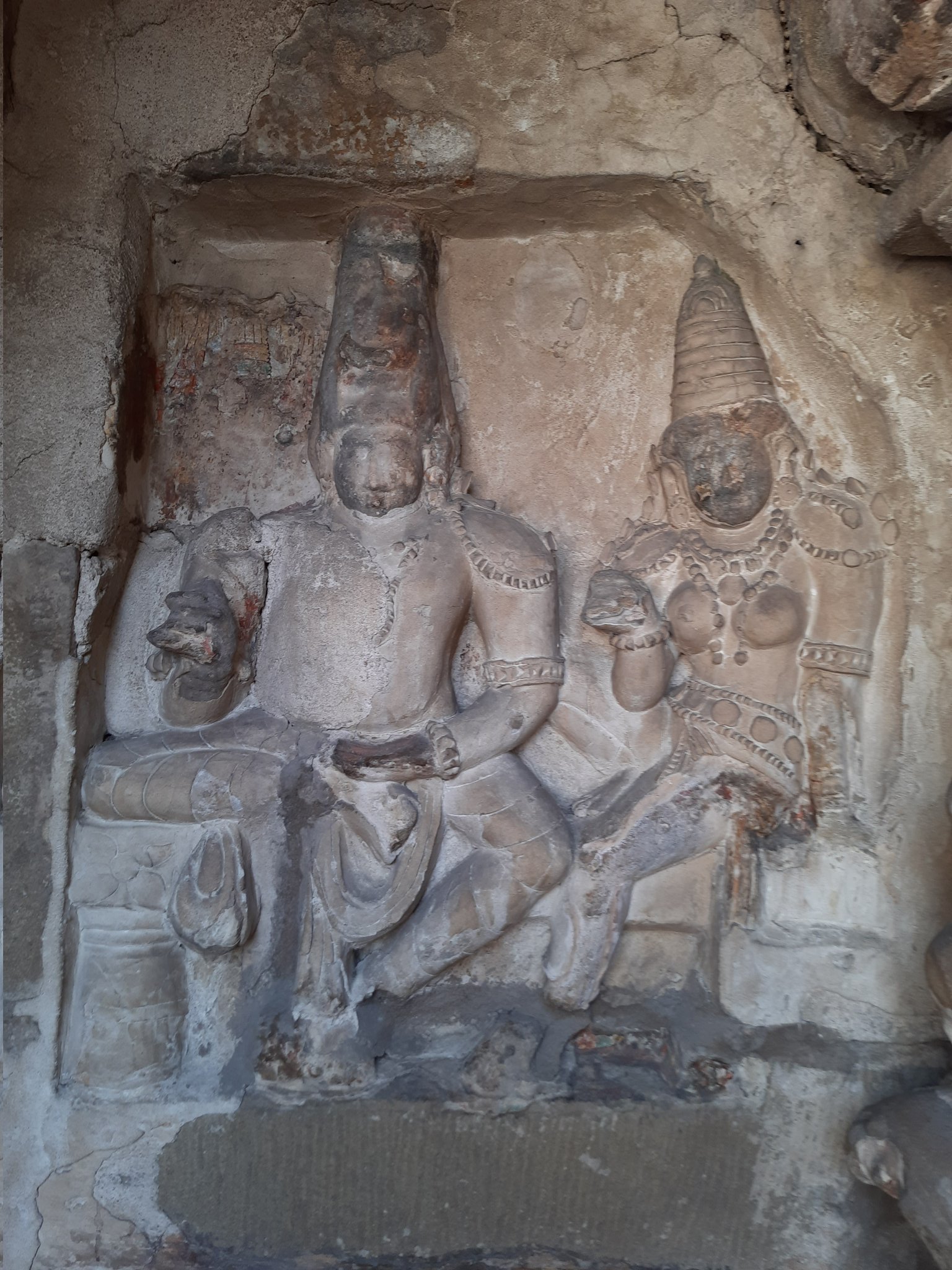 |
| Uma Maheswara |
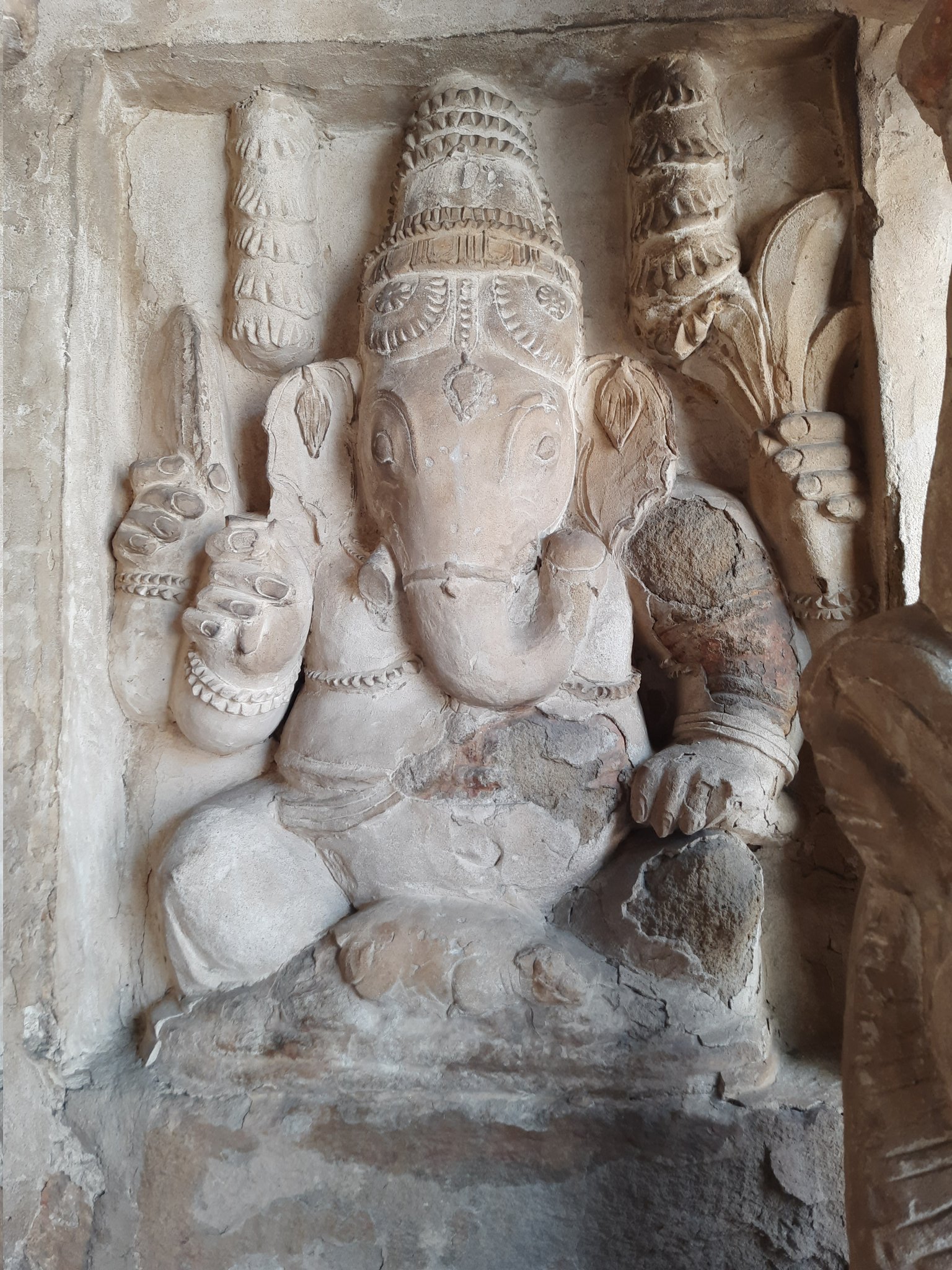 |
| Ganesha |
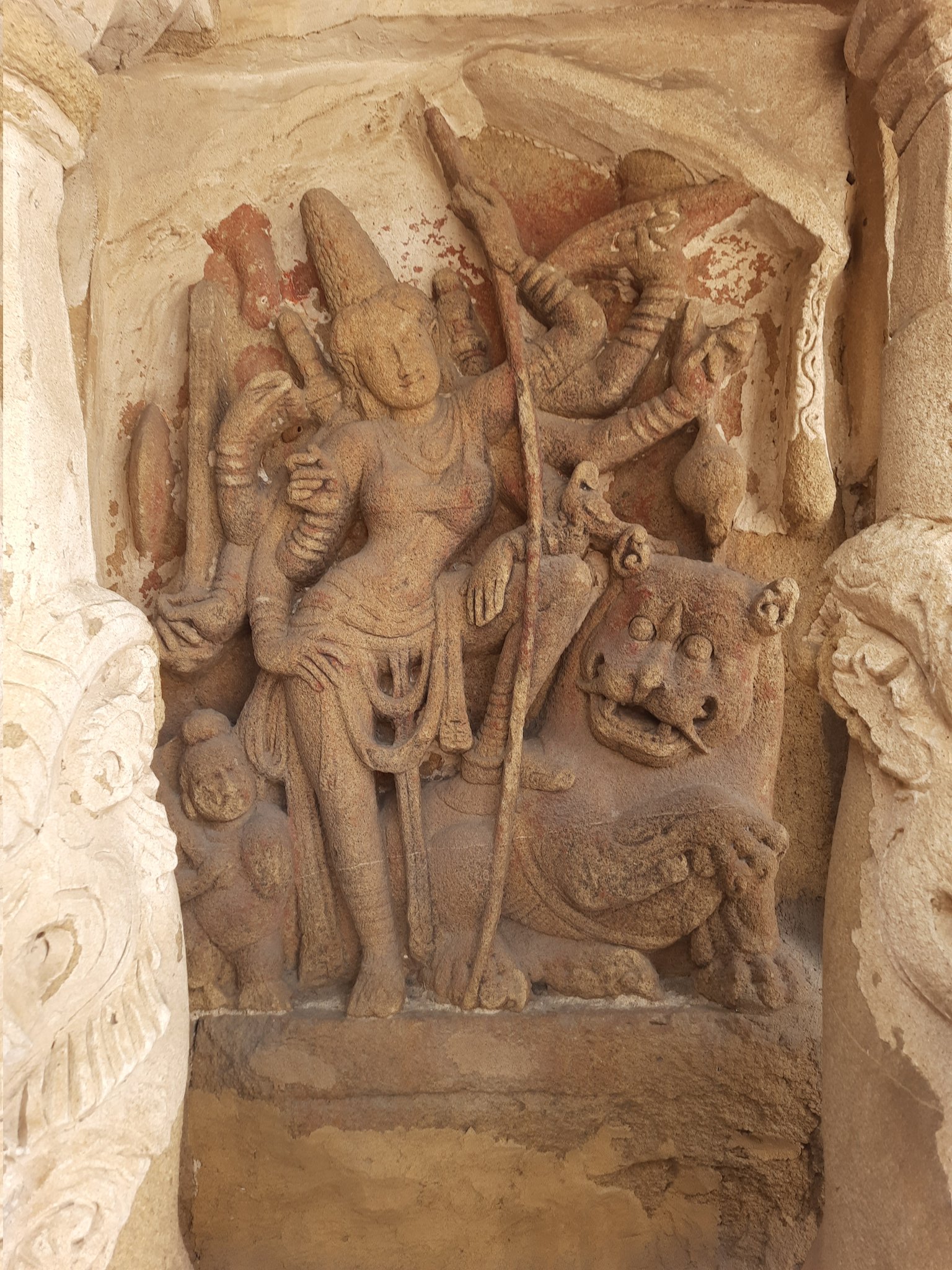 |
| Durga |
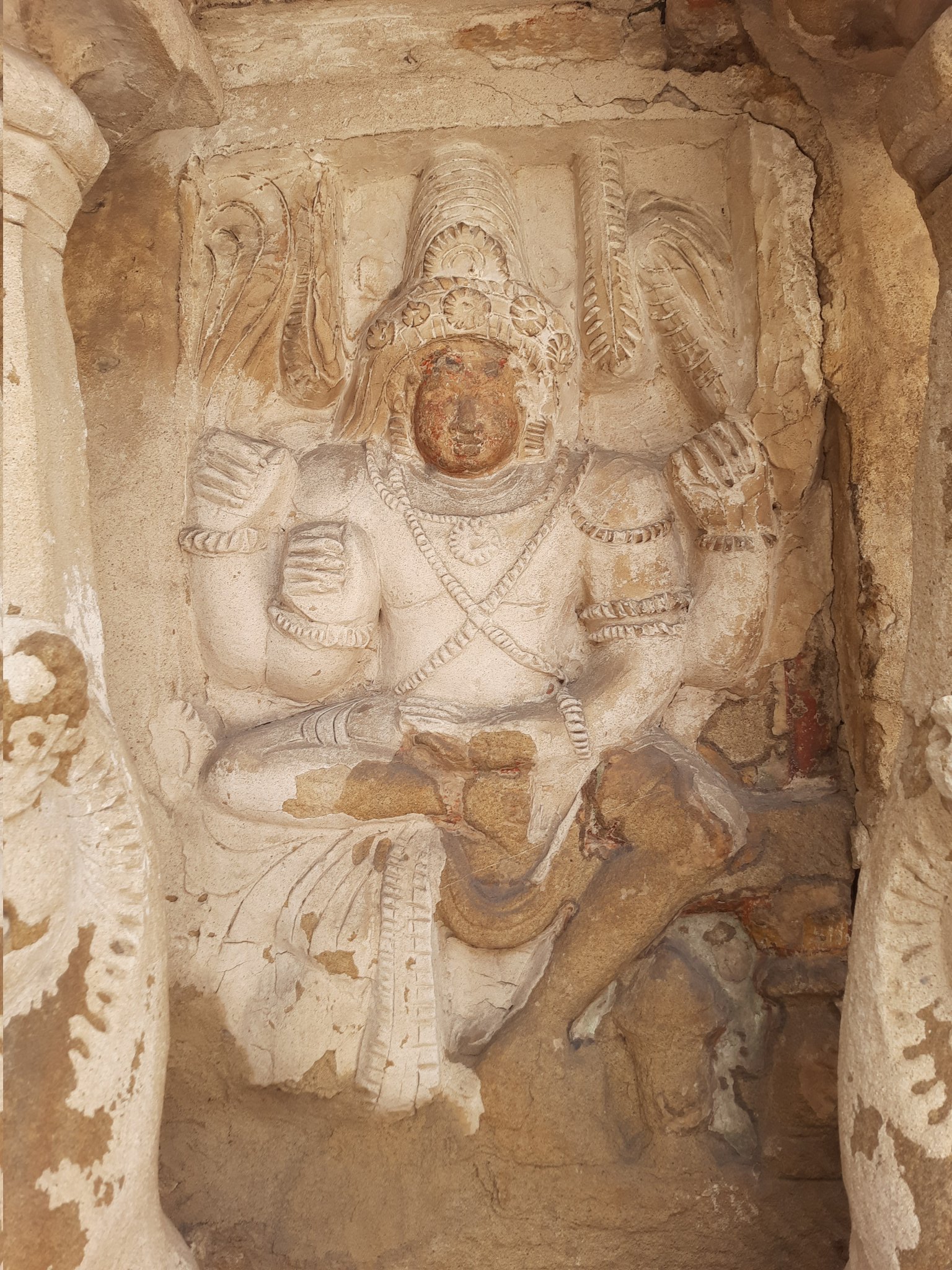 |
| Subramanya |
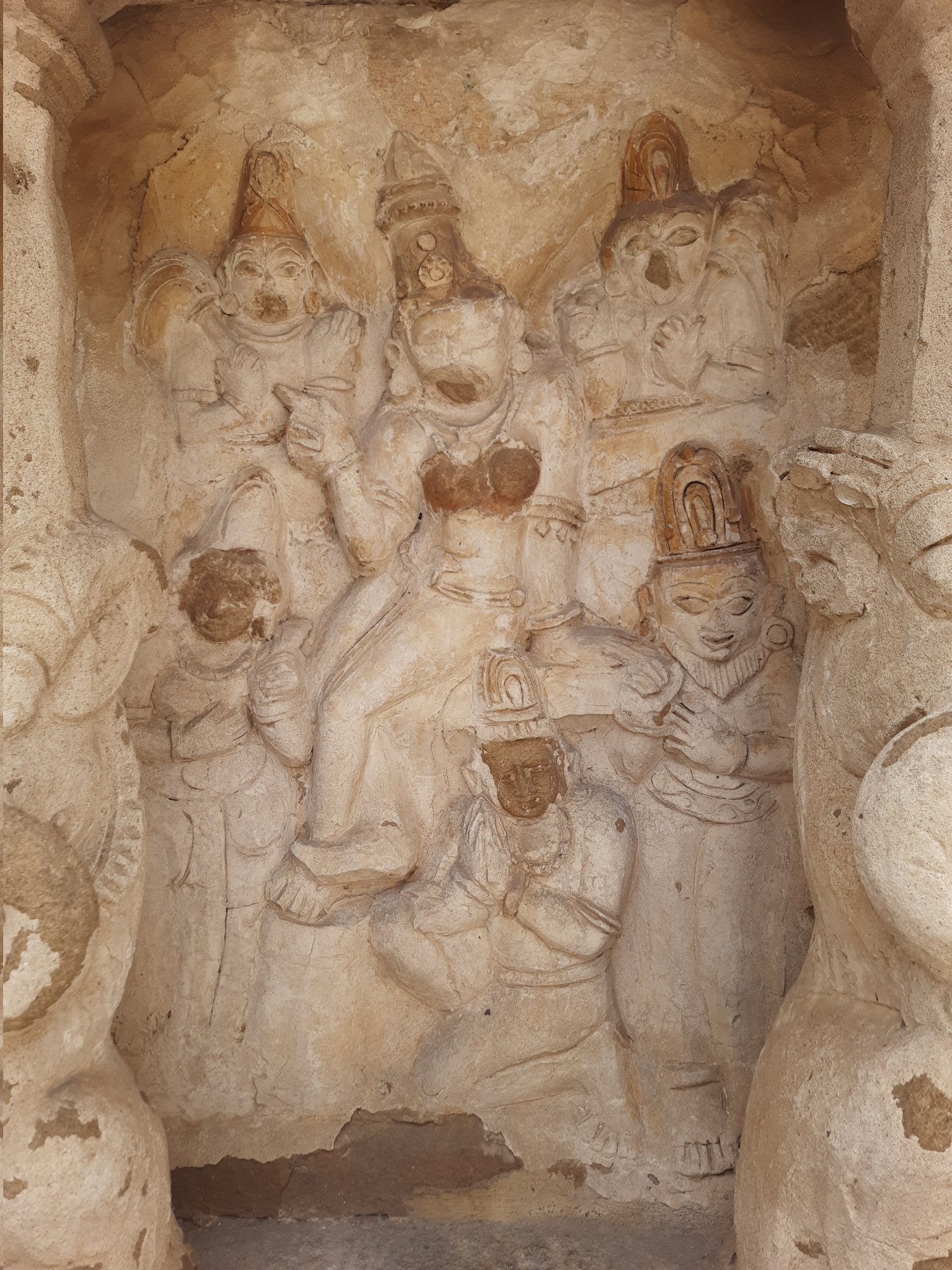 |
| Parvathi |
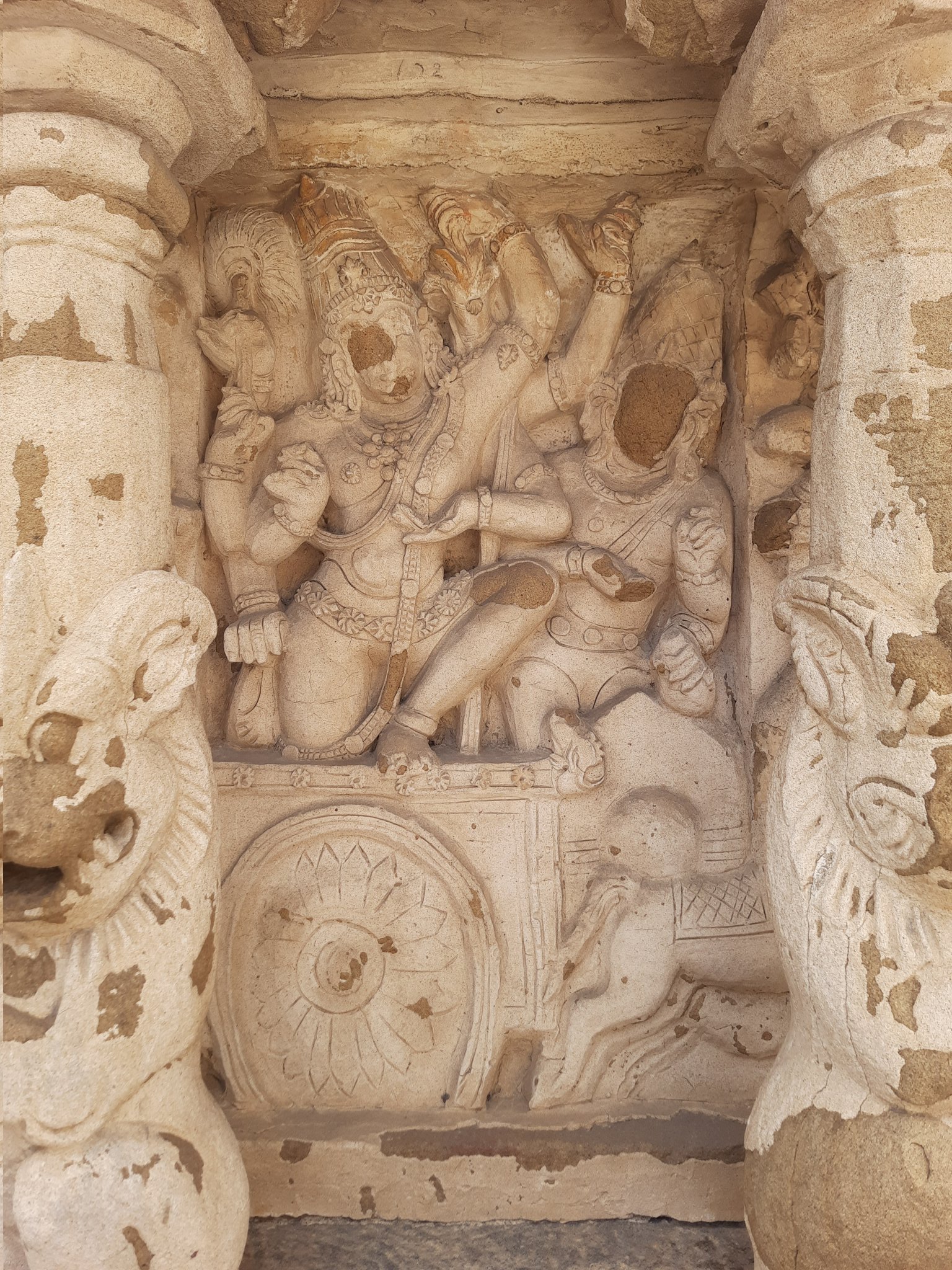 |
| Tripurantaka |
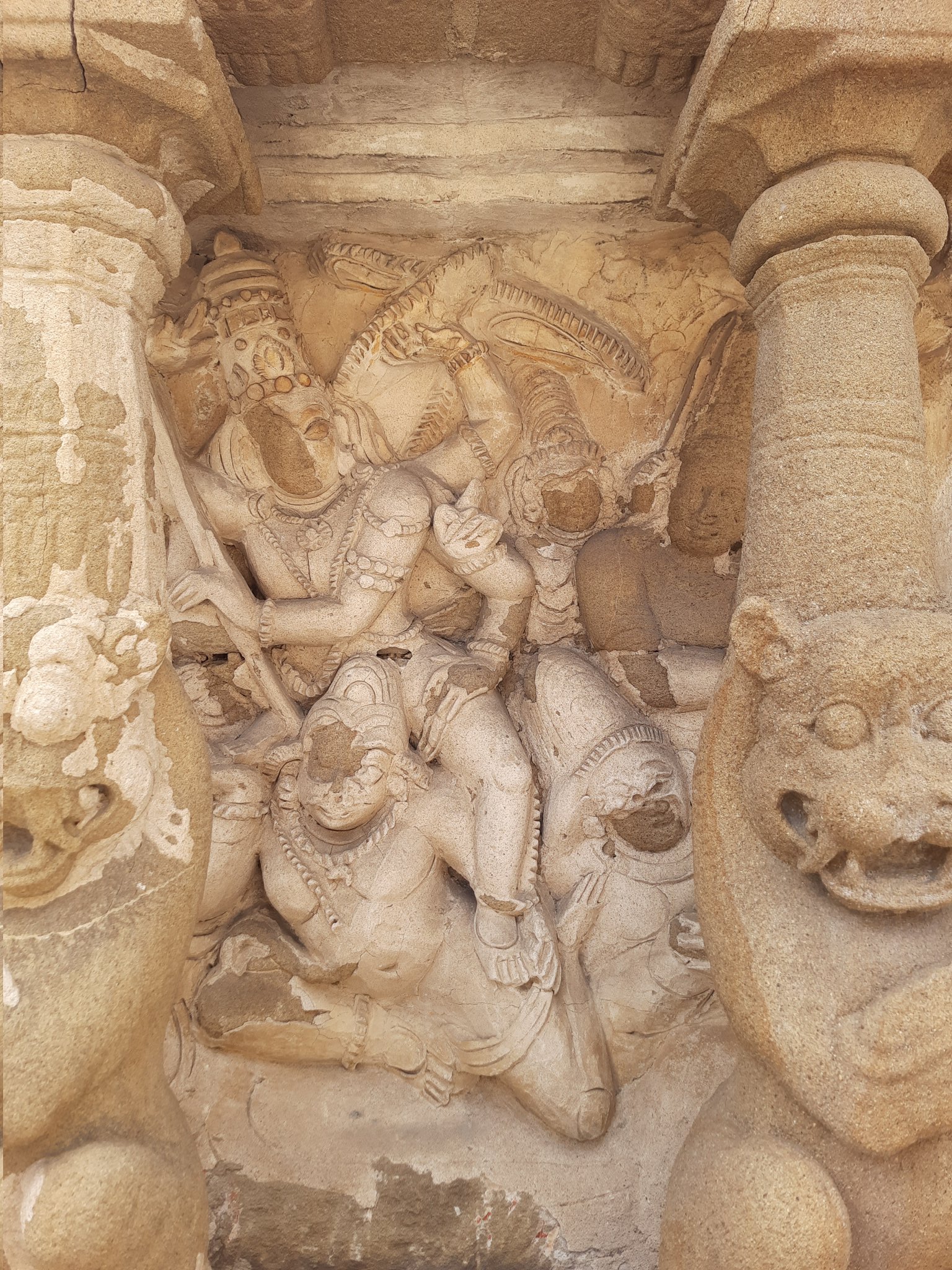 |
| Vishnu seated on Garuda |
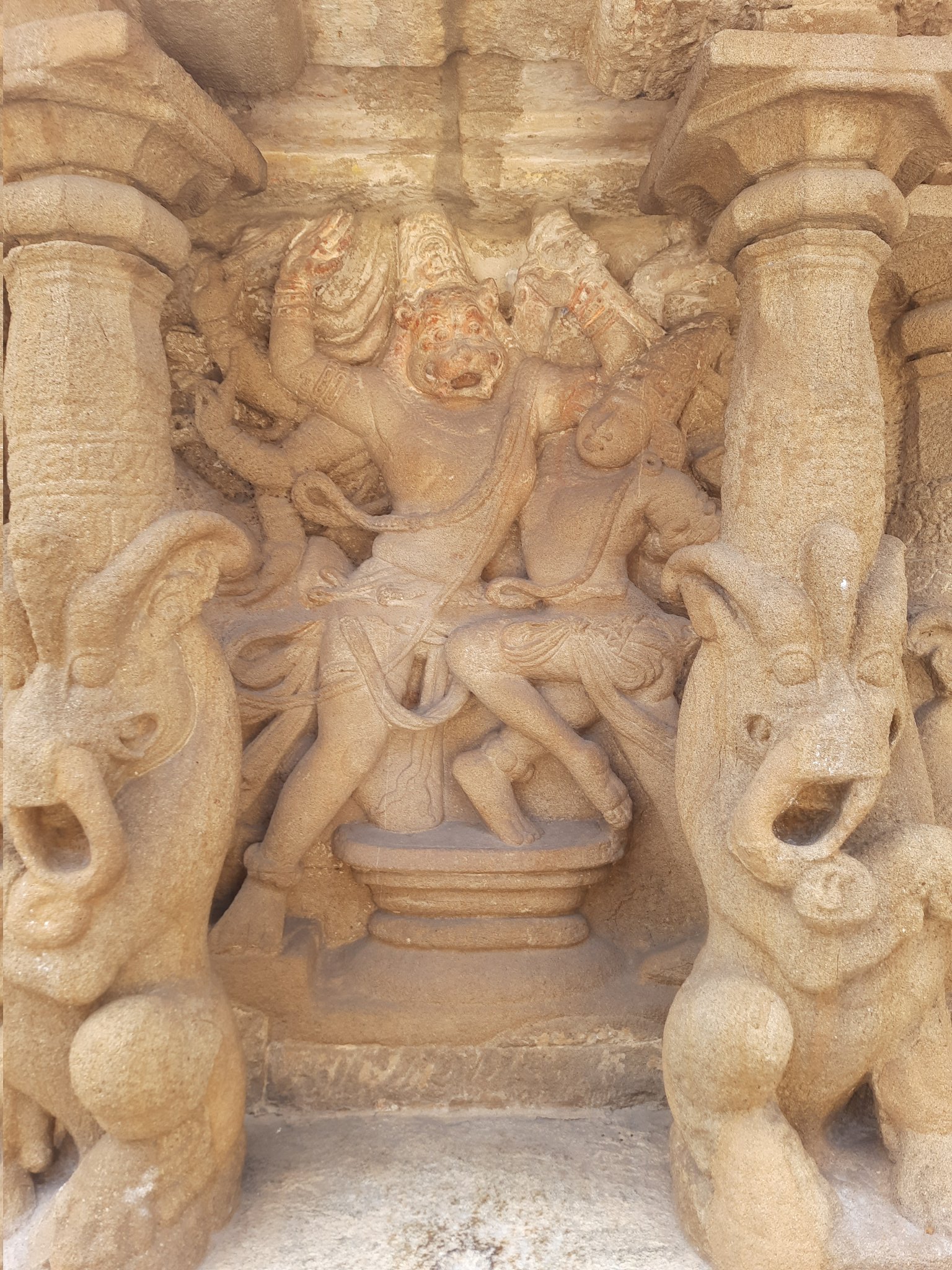 |
| Narasihma fighting Hiranyakashipu |
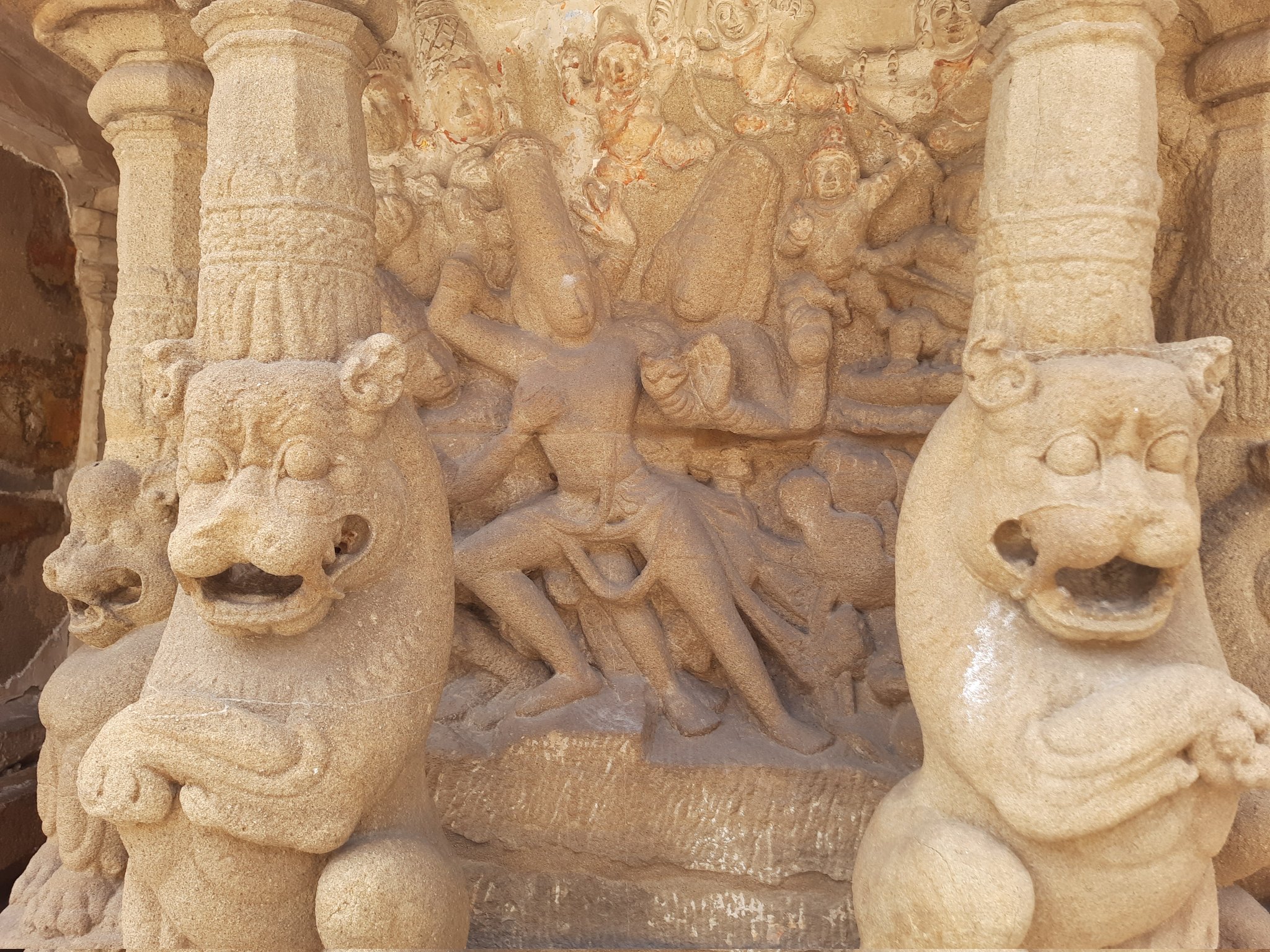 |
| Vishnu |
 |
| Trivikrama |
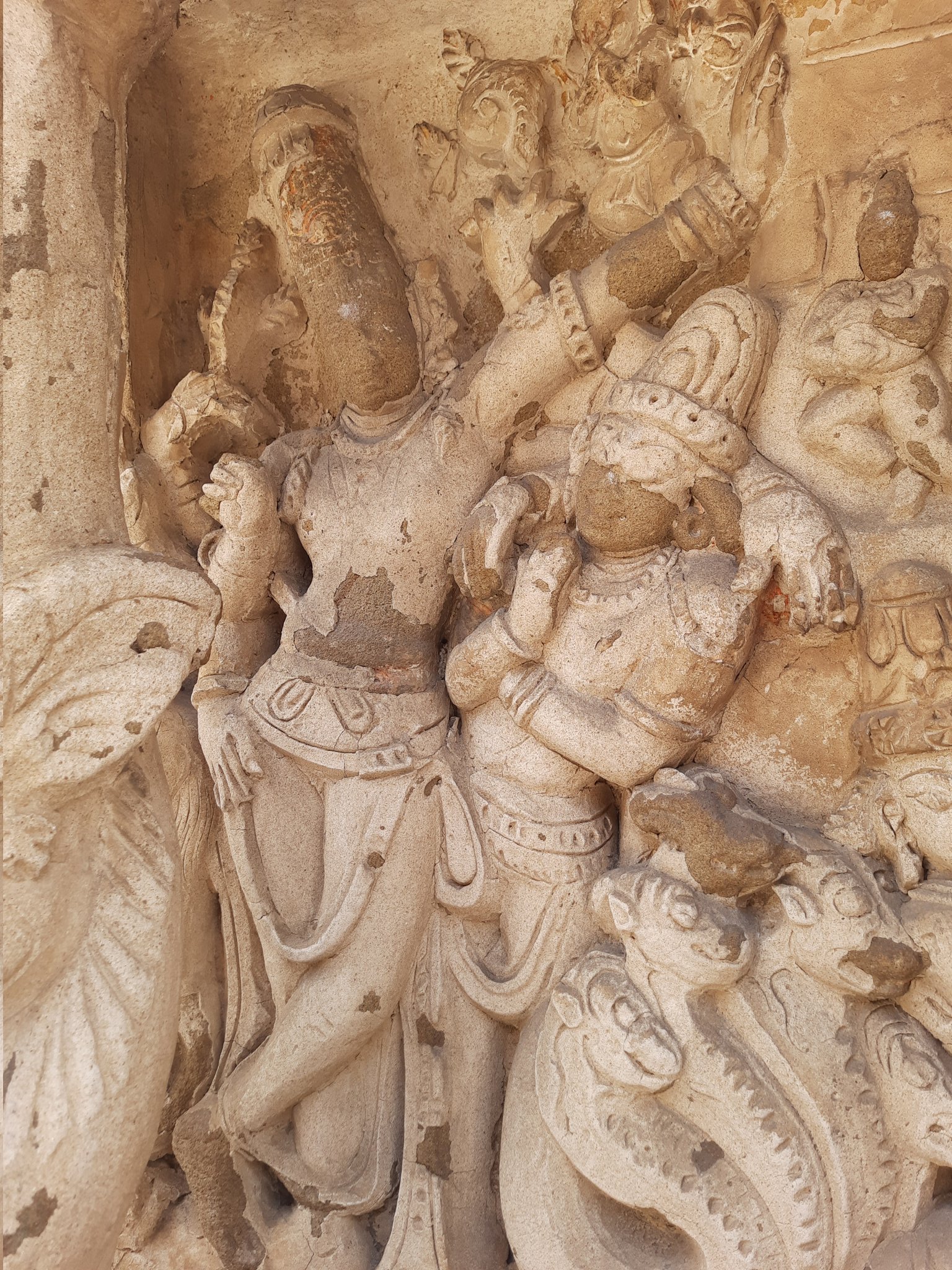 |
| Vishnu supporting Mantara mountain during Samudramantan |
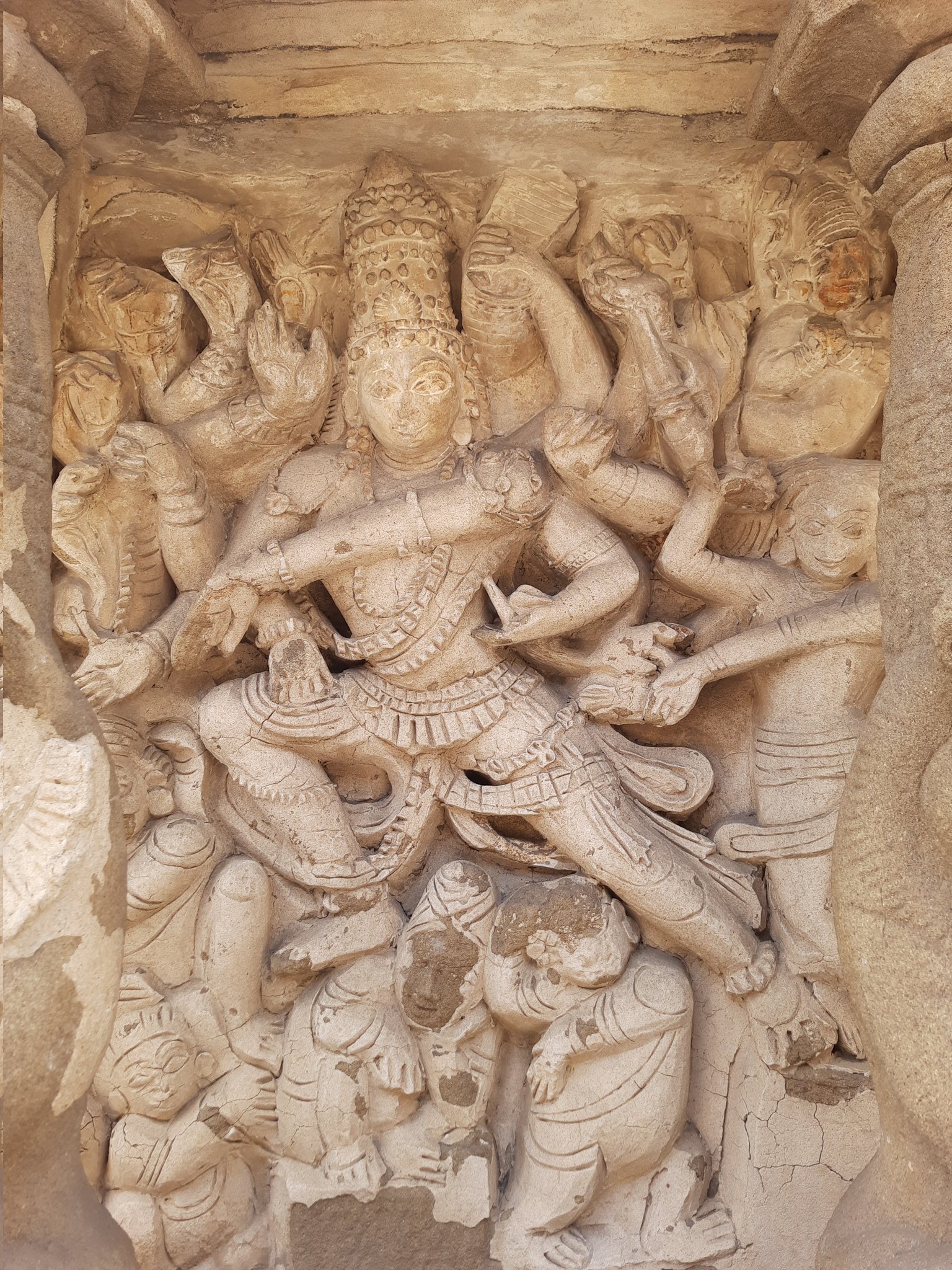 |
| Shiva Tandava |
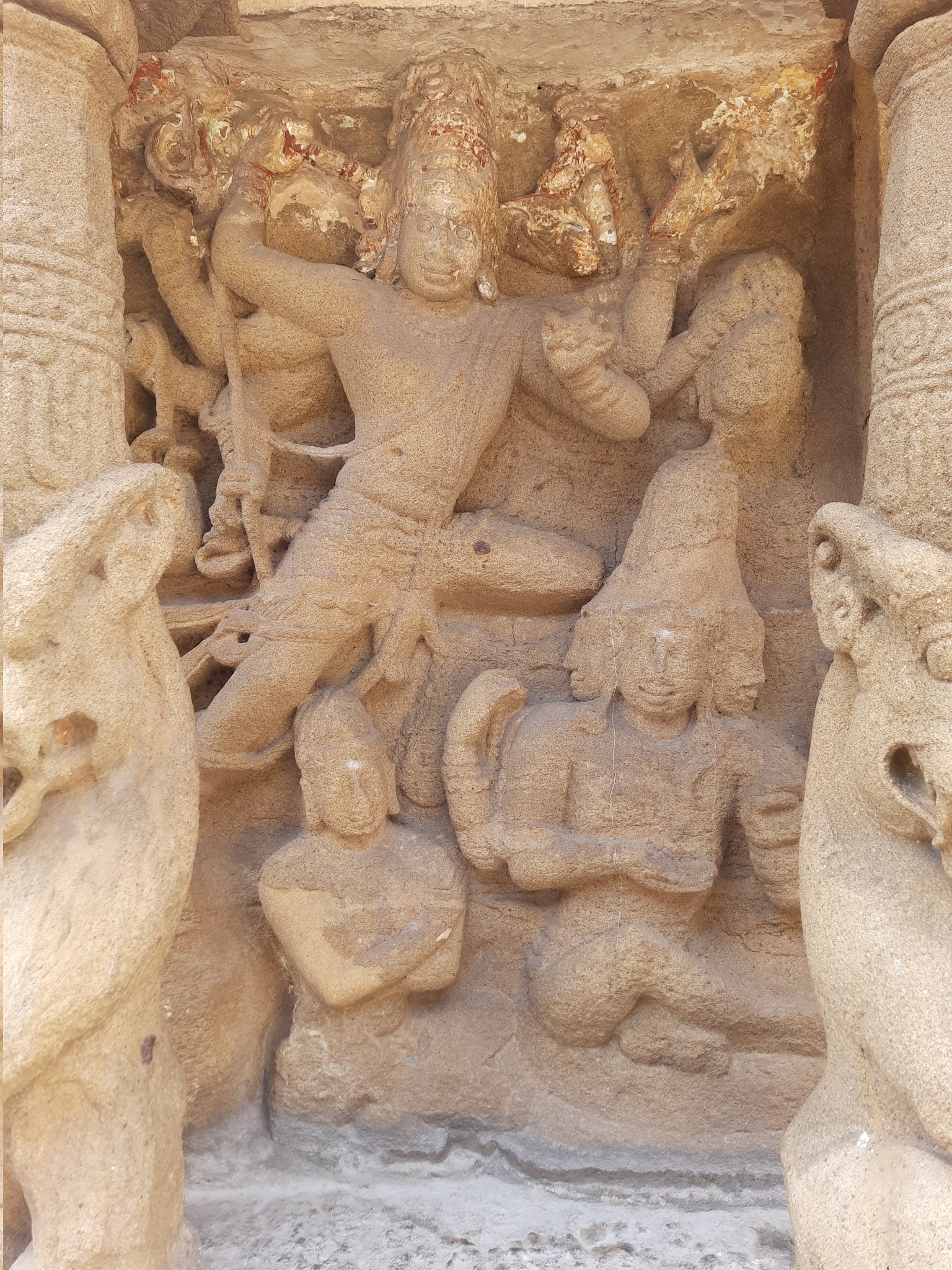 |
| Shiva as Brahmashiraschedaka (notice Brahma's severed head) |
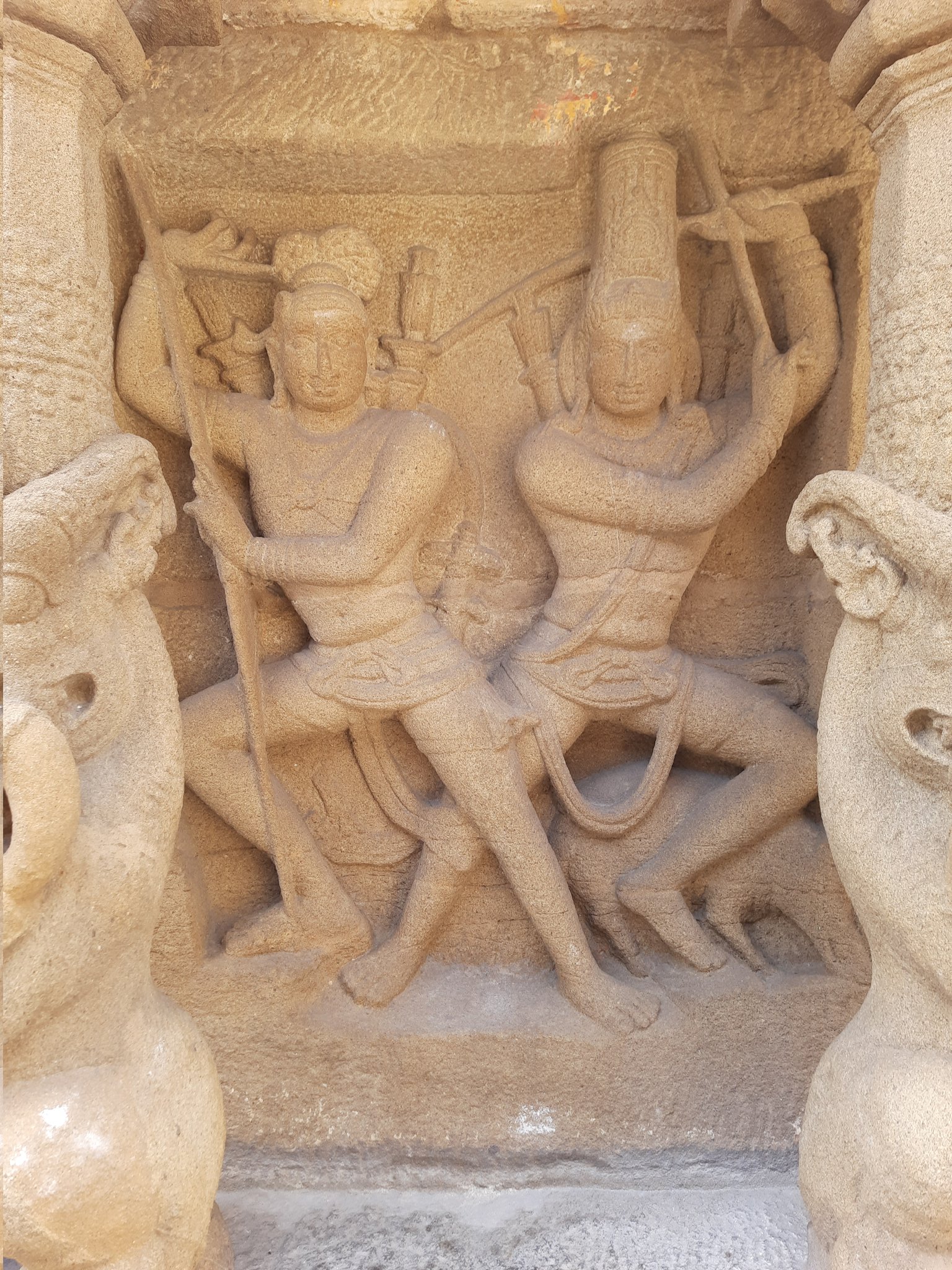 |
| Kirata (Shiva) dueling with Arjuna (Kiratarjuniya) |
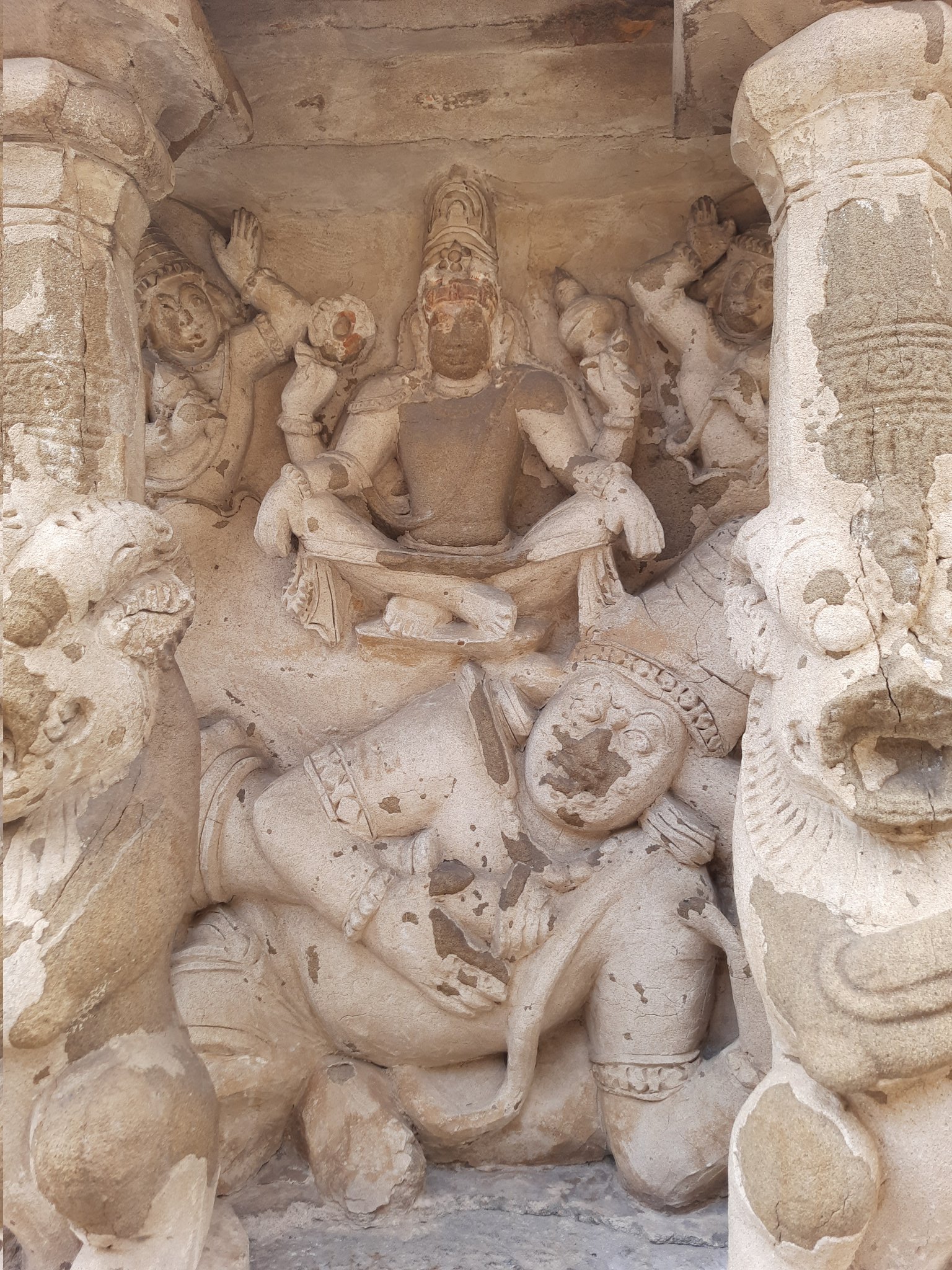 |
| Yogeshamurthi |
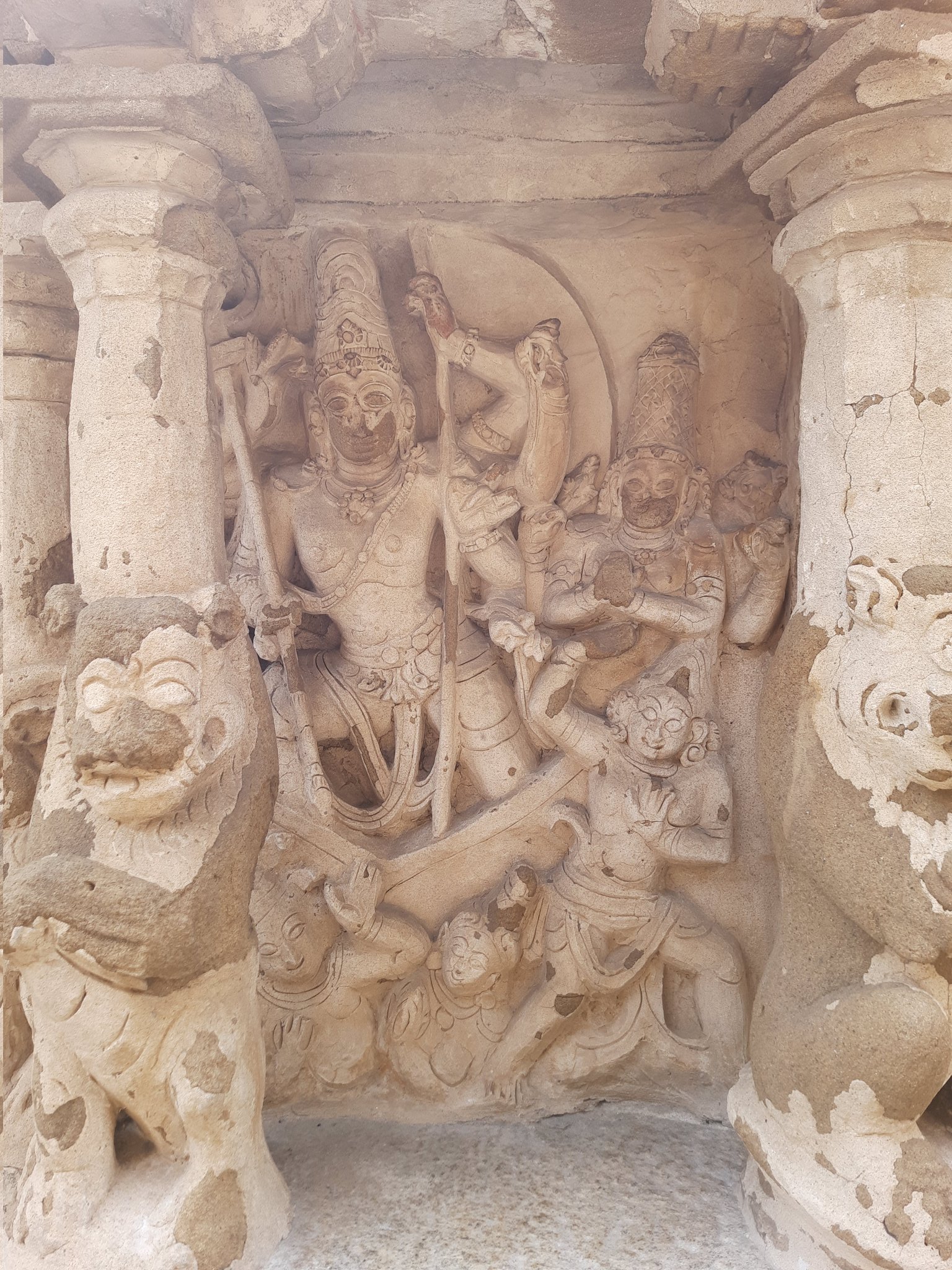 |
| Shiva slaying Jalandhara |
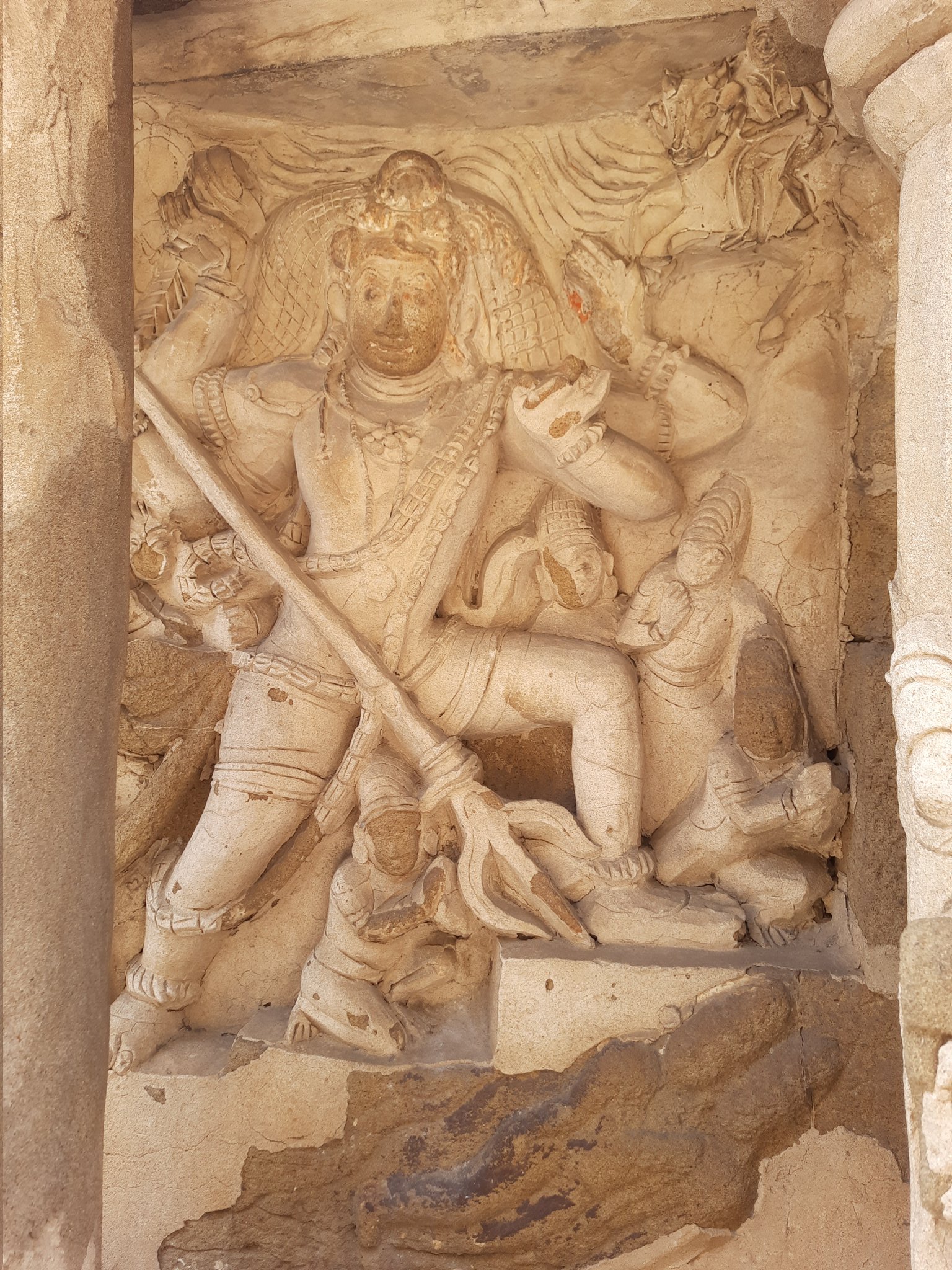 |
| Veerabhadra destroying Daksha's yaga |
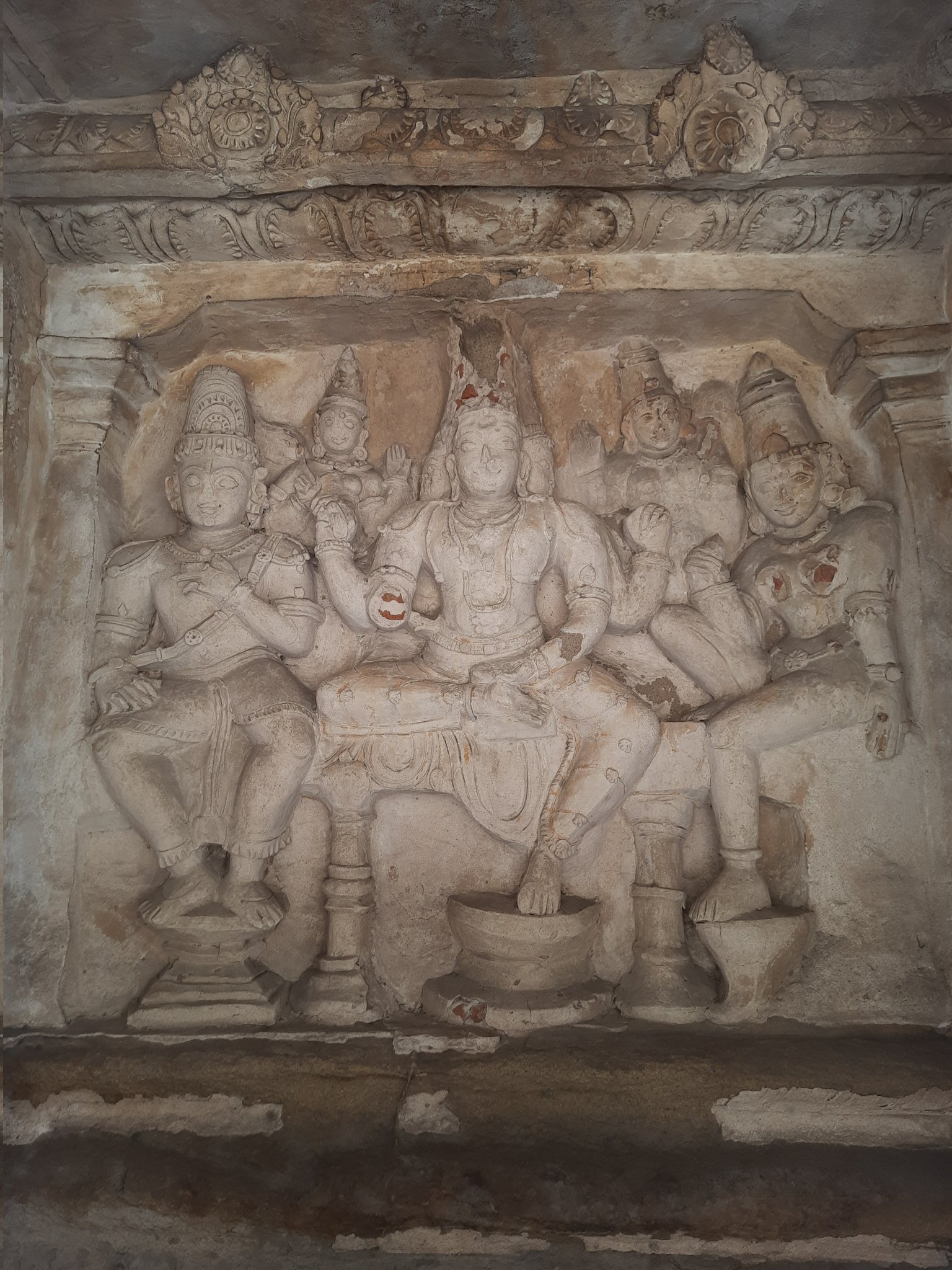 |
| Brahma |
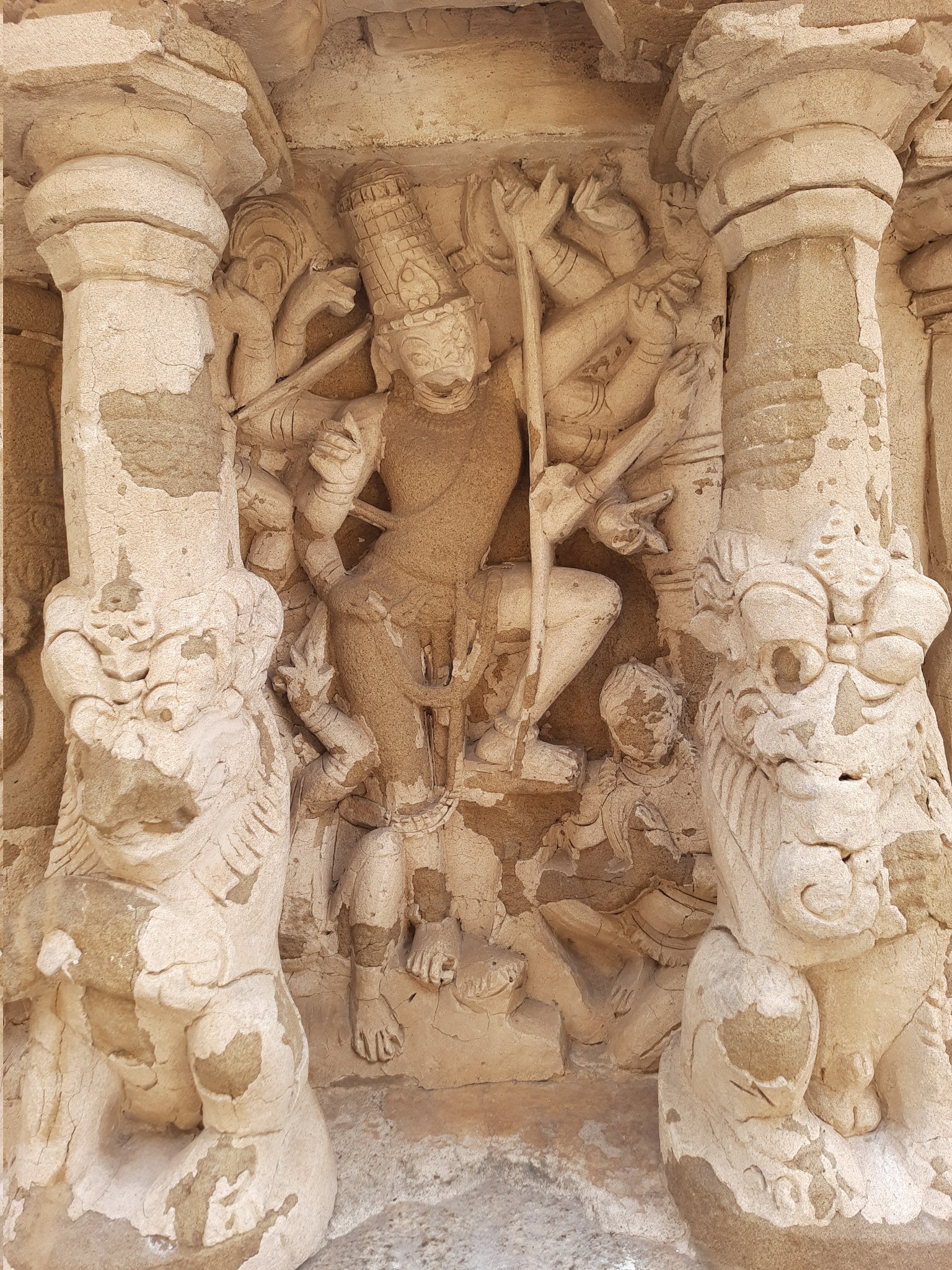 |
| Tripurasamhara |
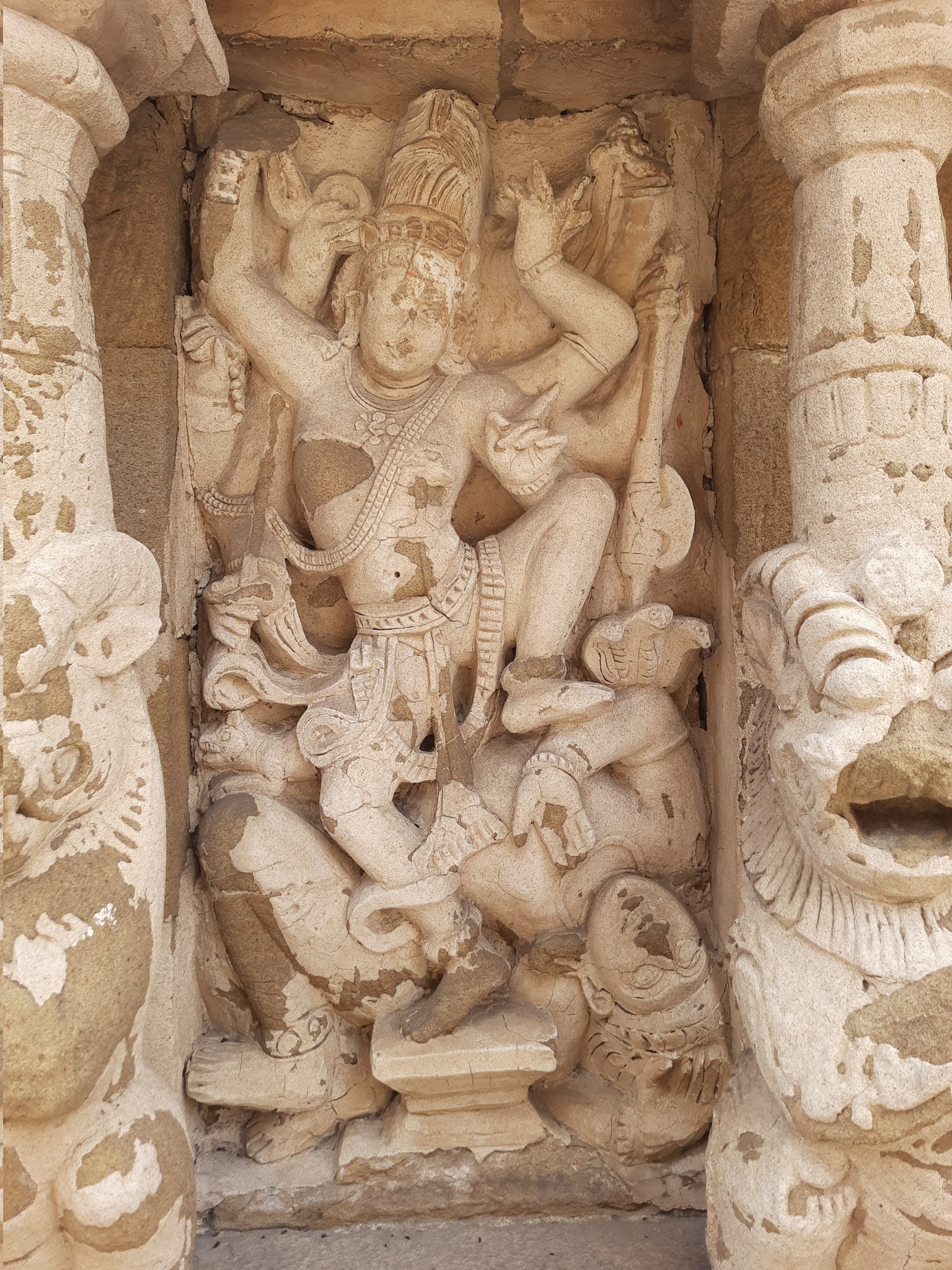 |
| Kalasamhara |
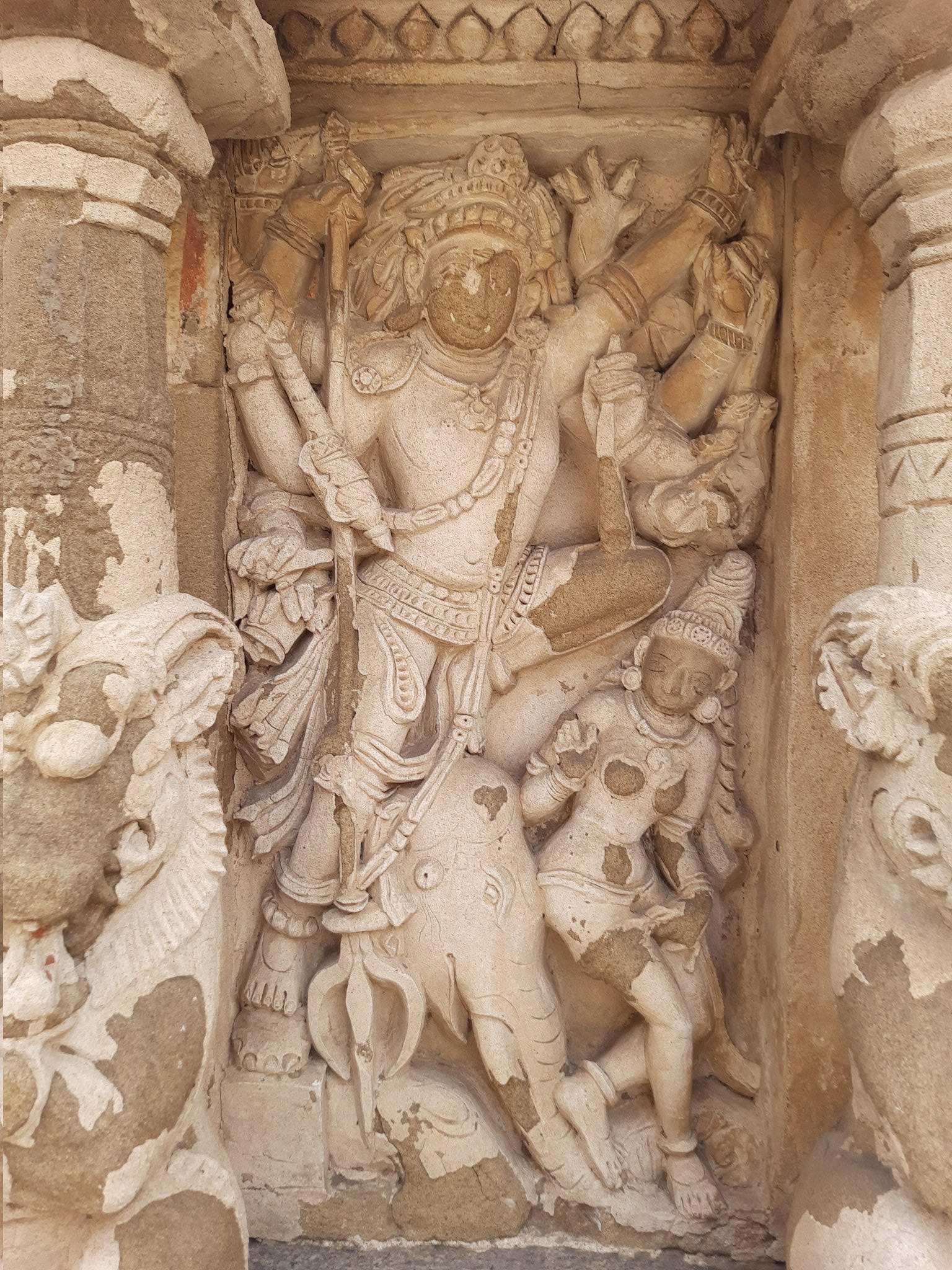 |
| Gajasamhara |
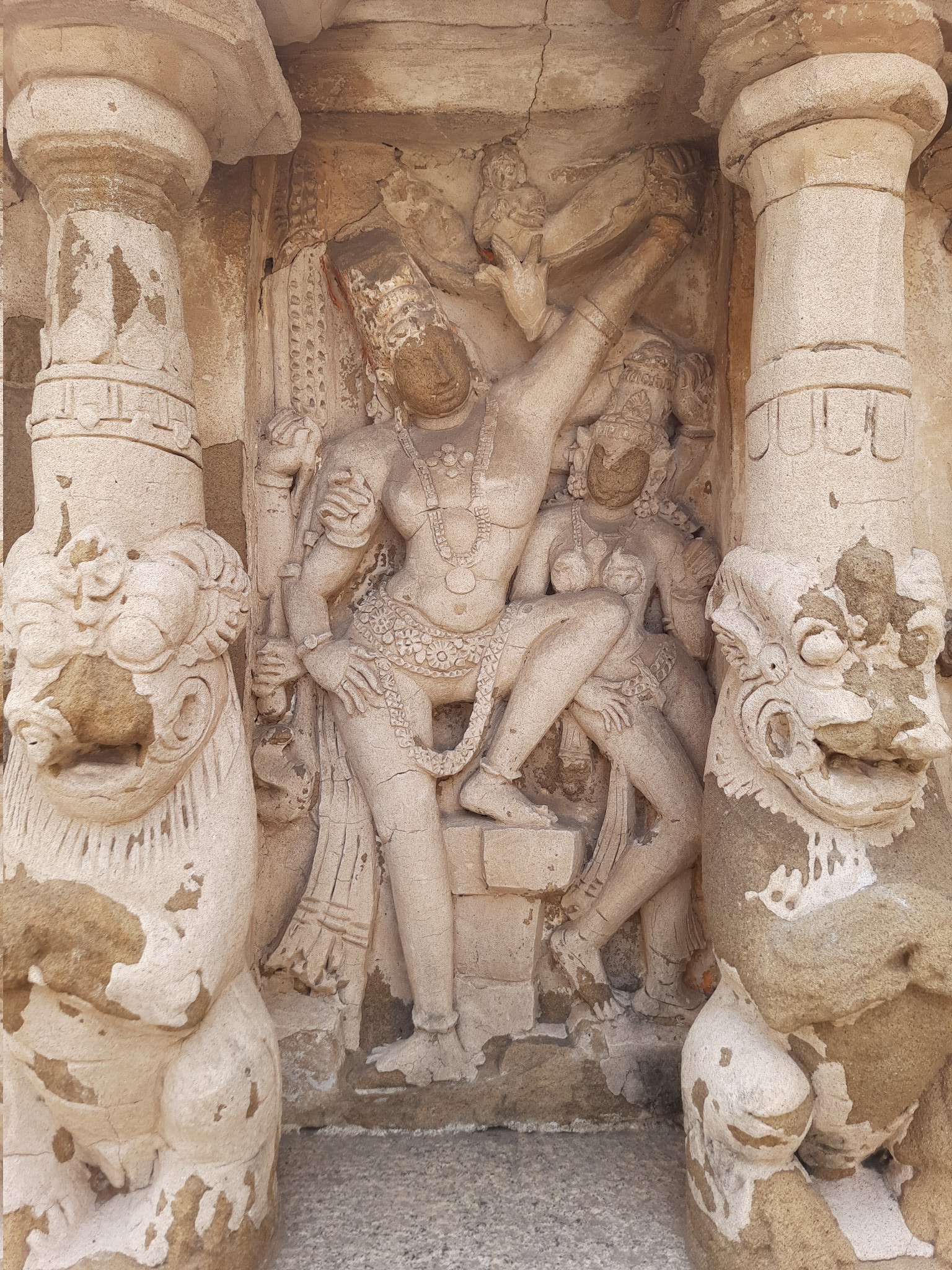 |
| Gangadhara |
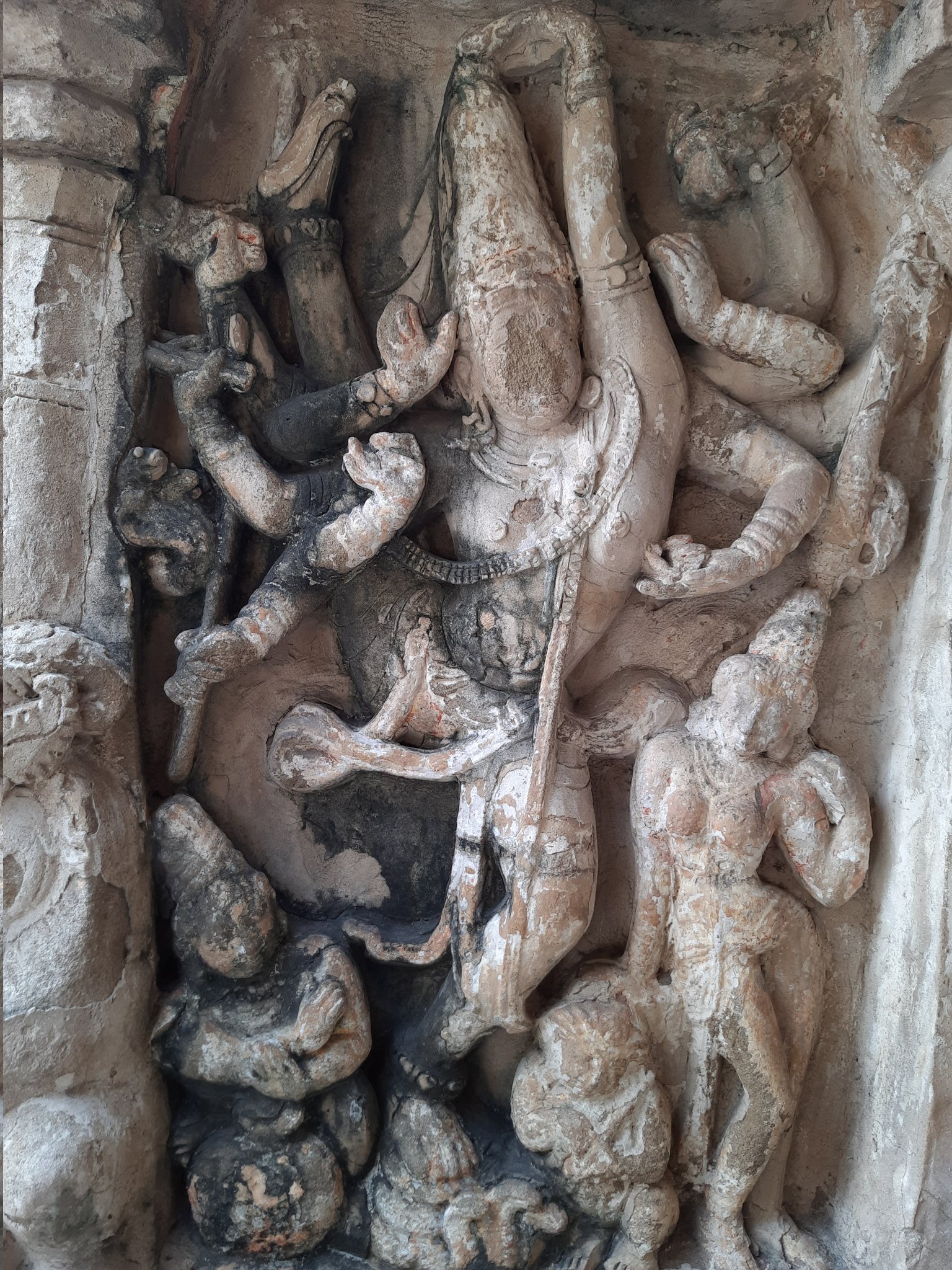 |
| Urdhava Tandava |
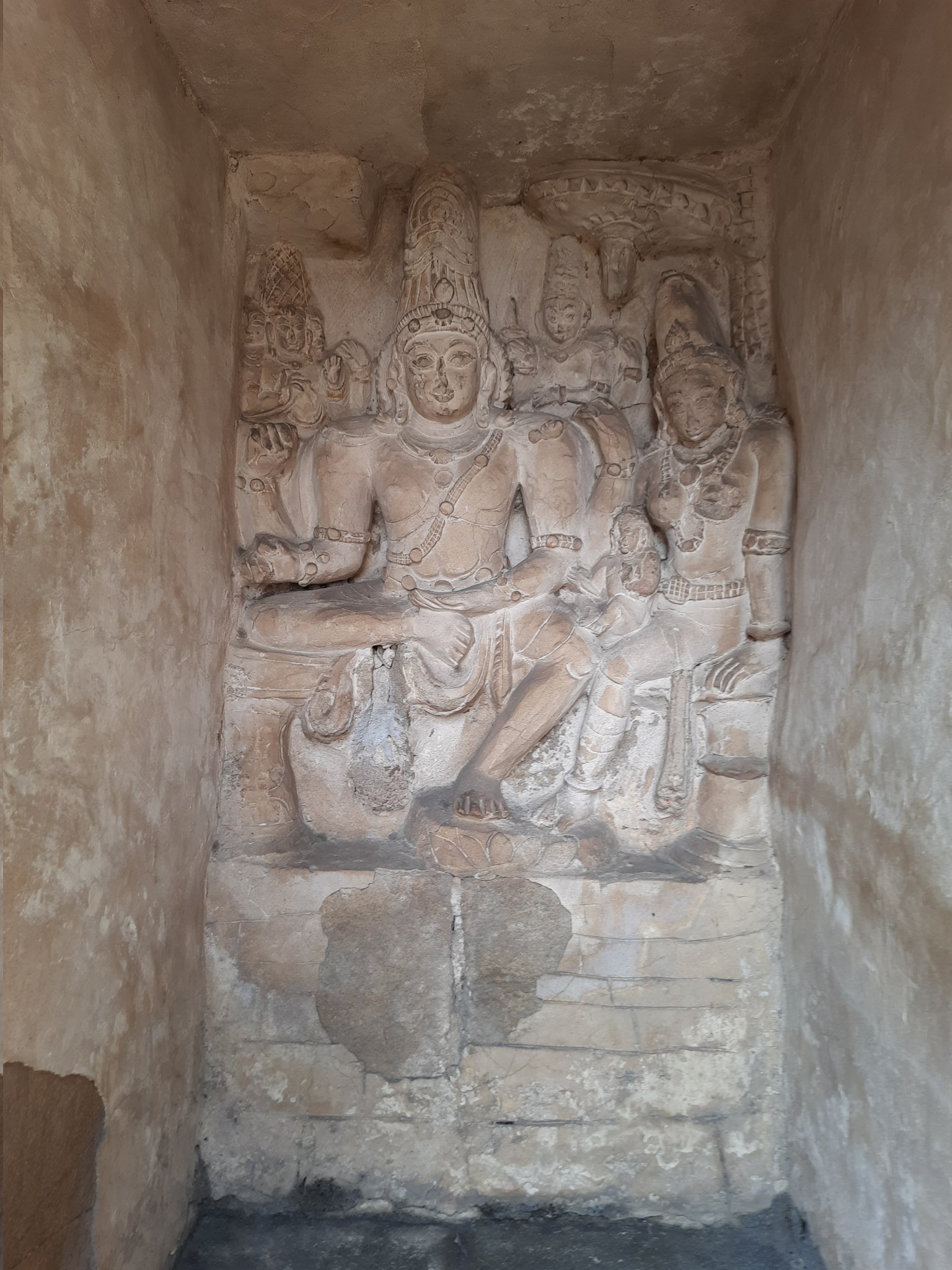 |
| Somaskanda |
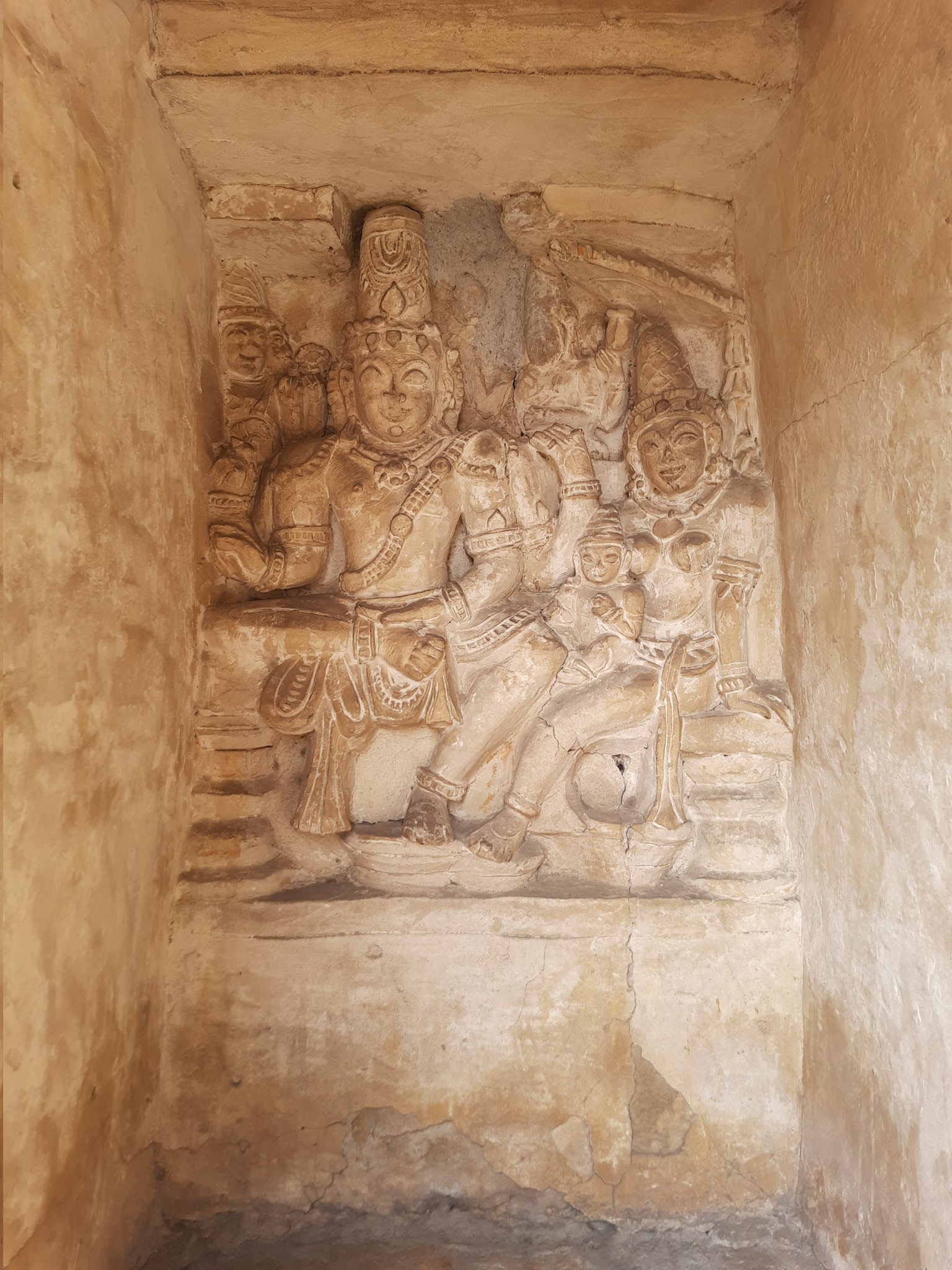 |
| Somaskanda |
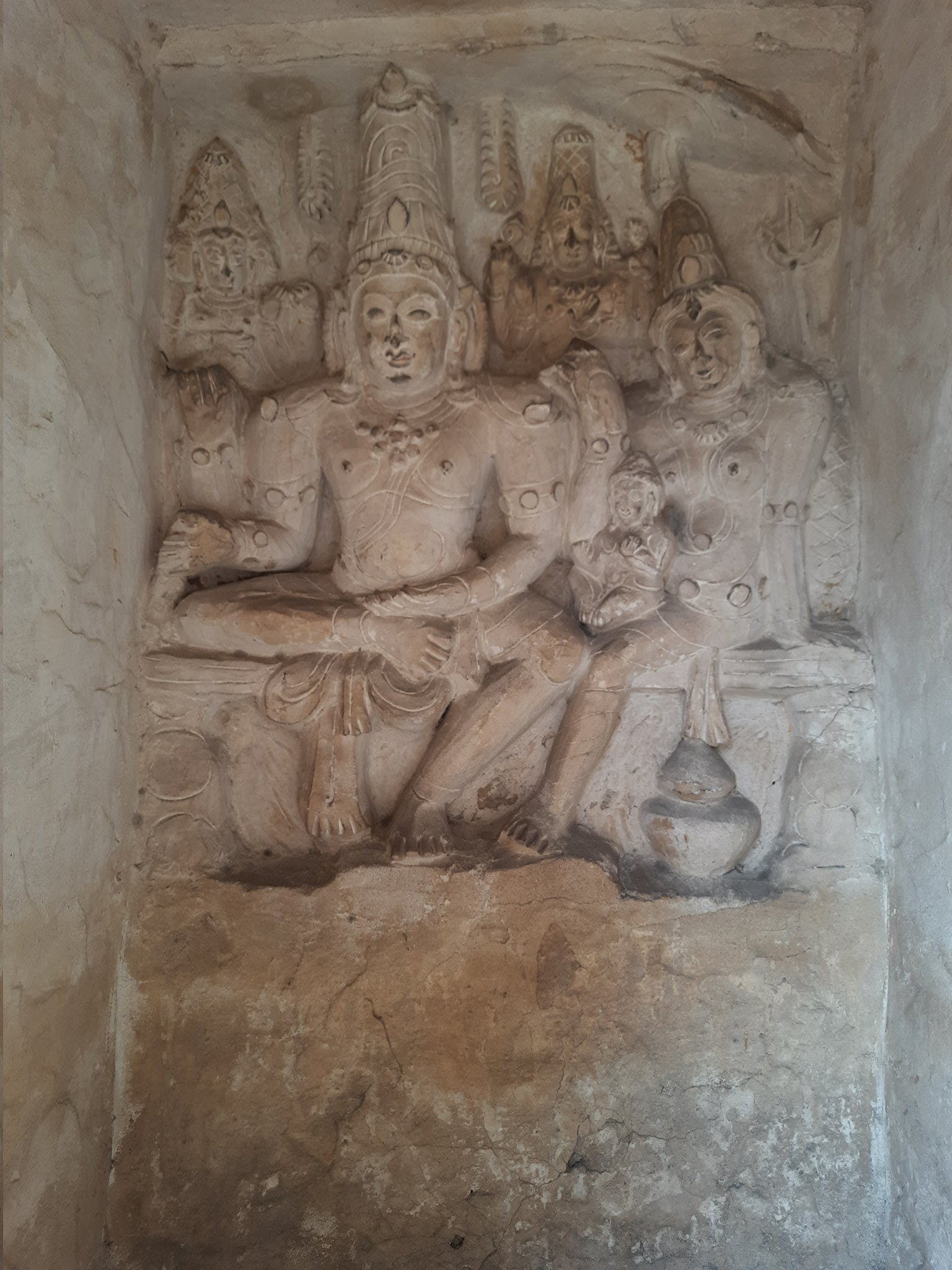 |
| Somaskanda |
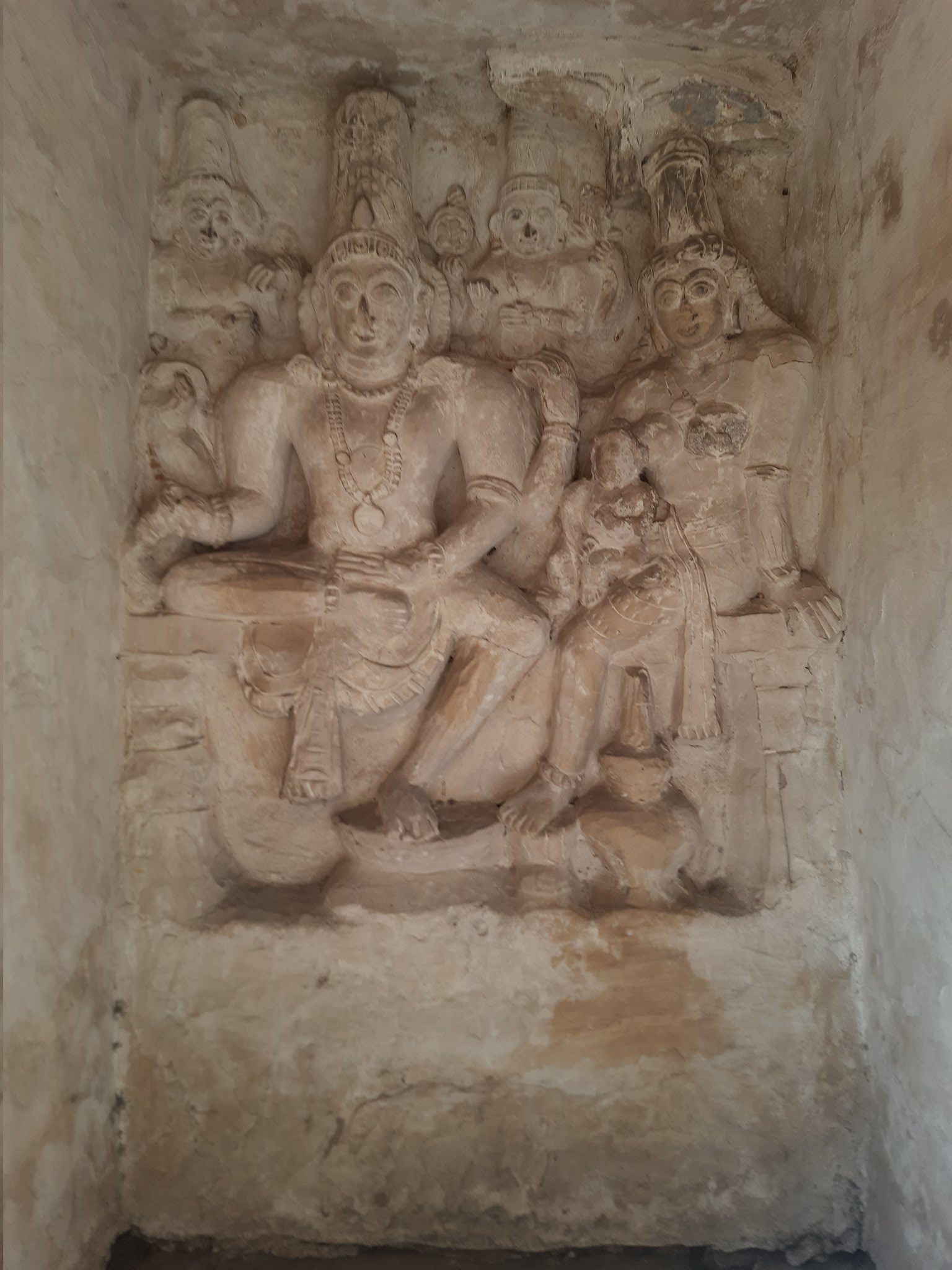 |
| Somaskanda |
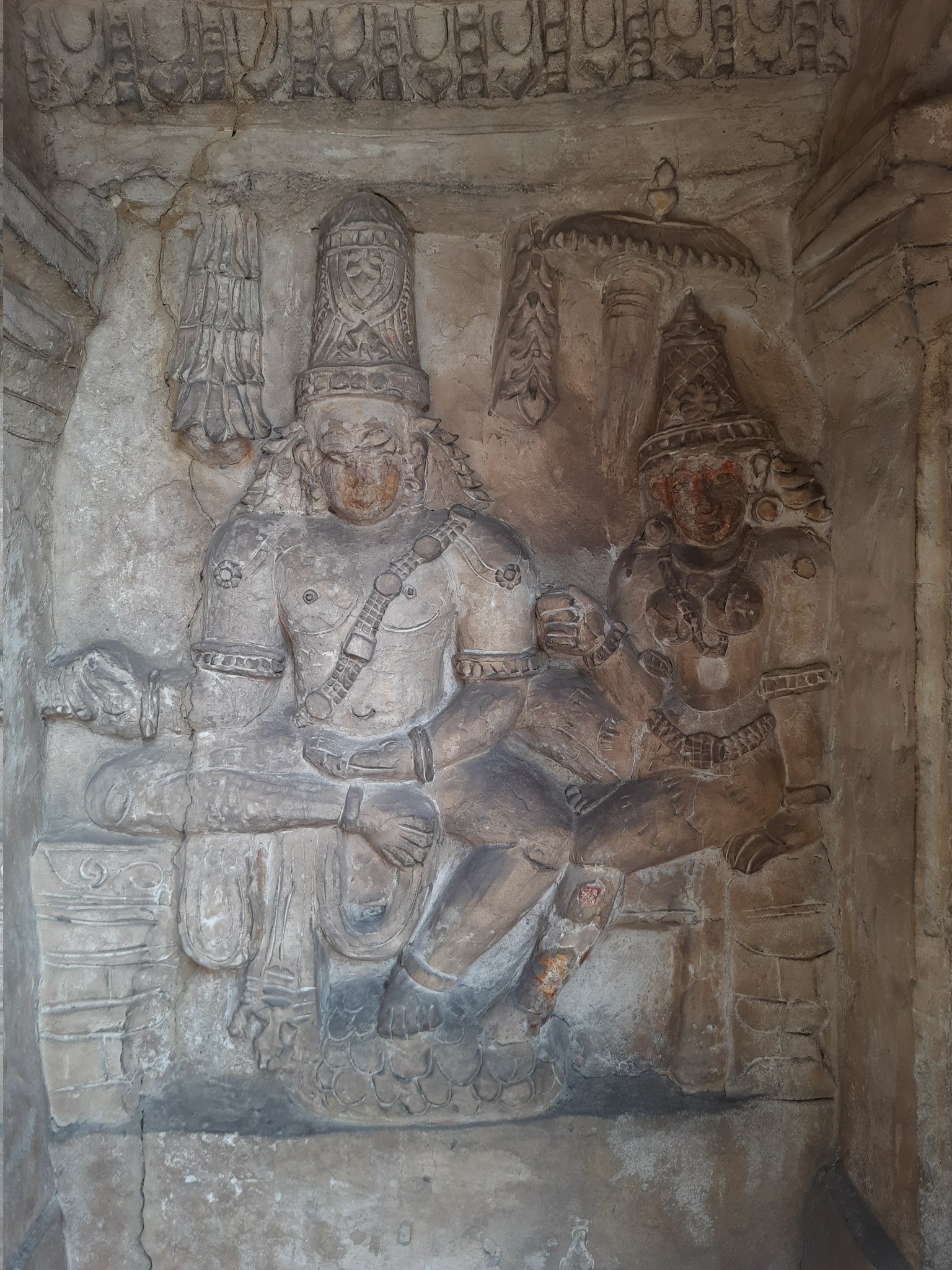 |
| Uma Maheswara |
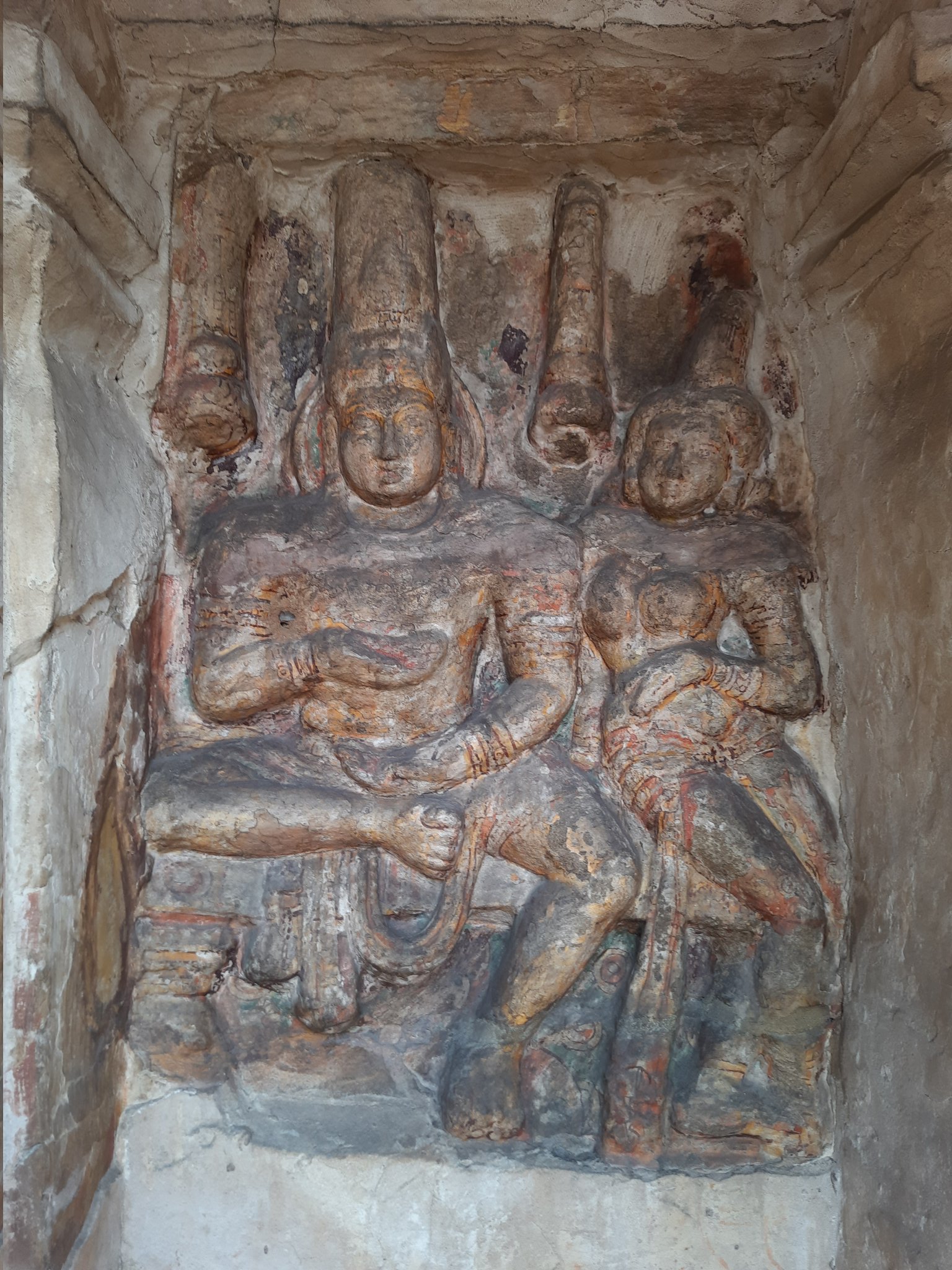 |
| Uma Maheswara |
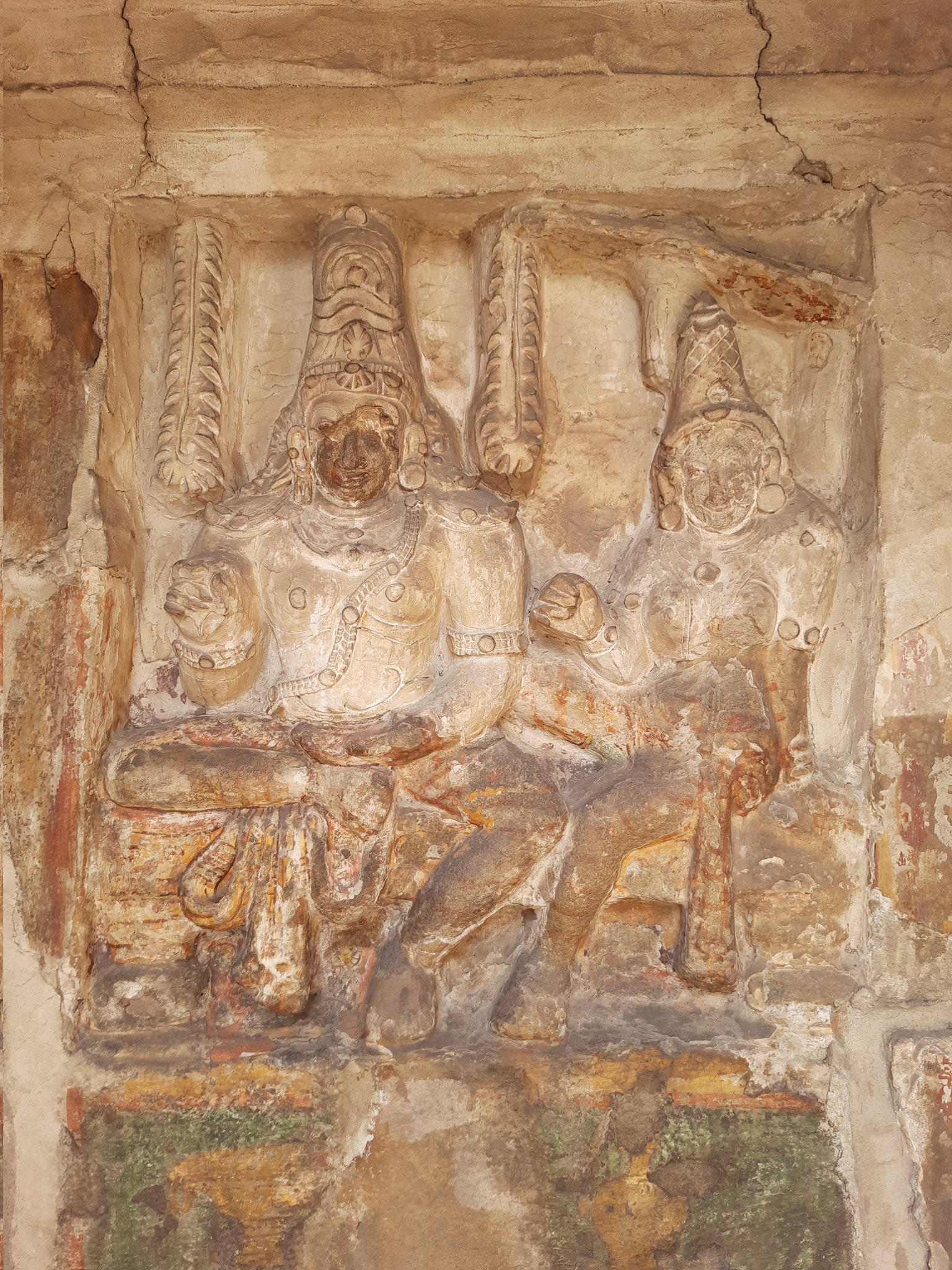 |
| Uma Maheswara |
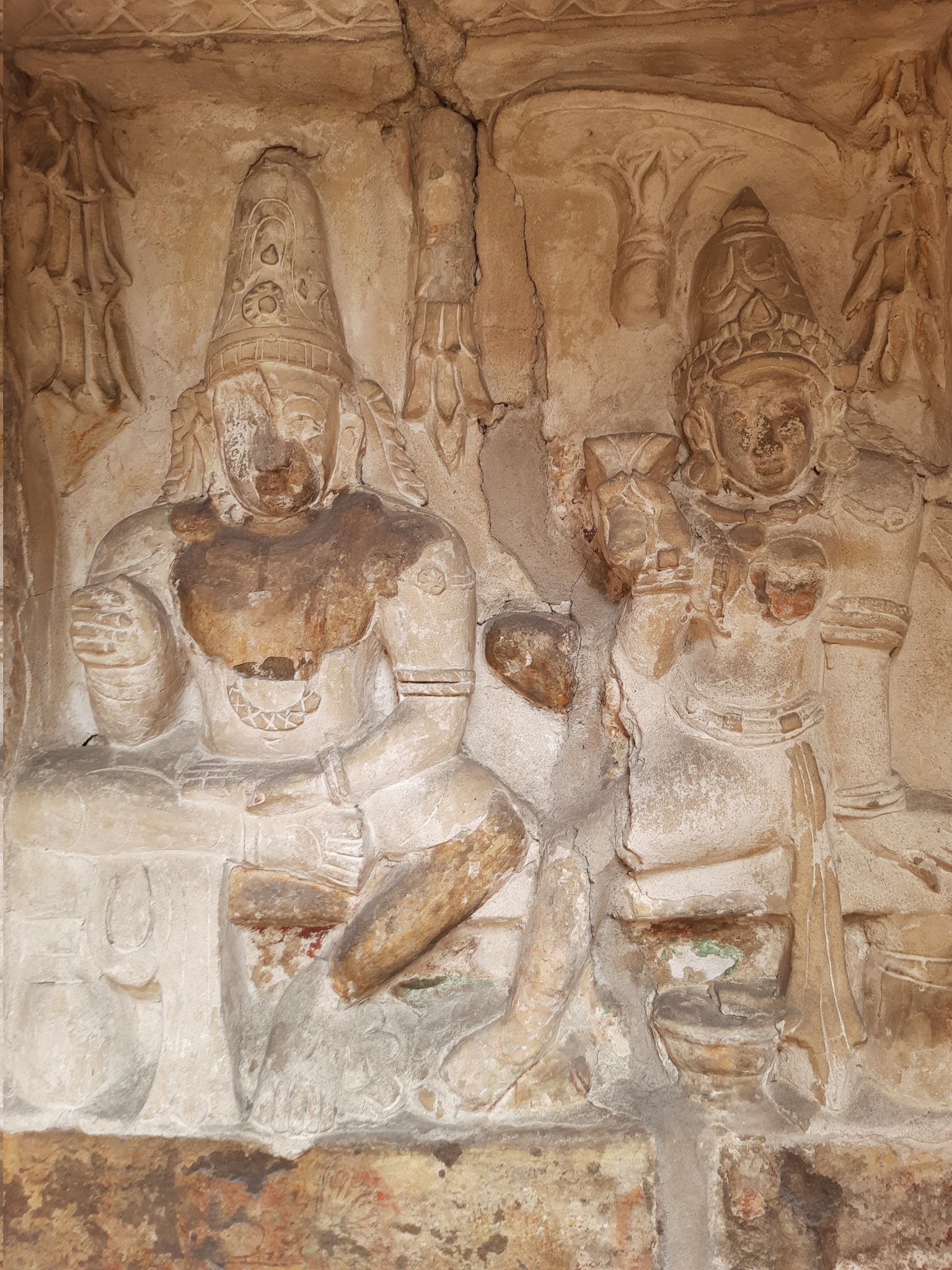 |
| Uma Maheswara |
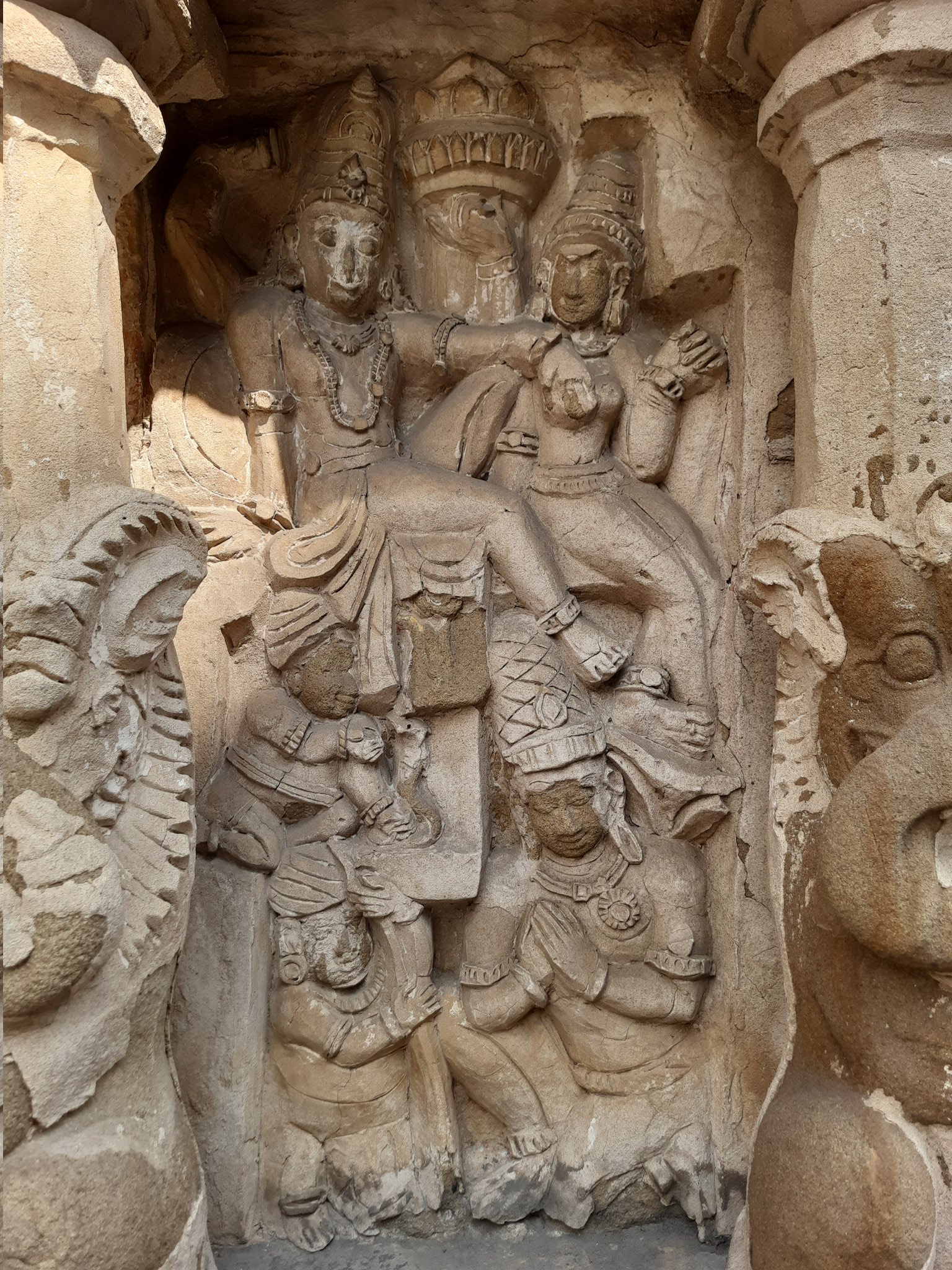 |
| Candesha anugraha murthi |
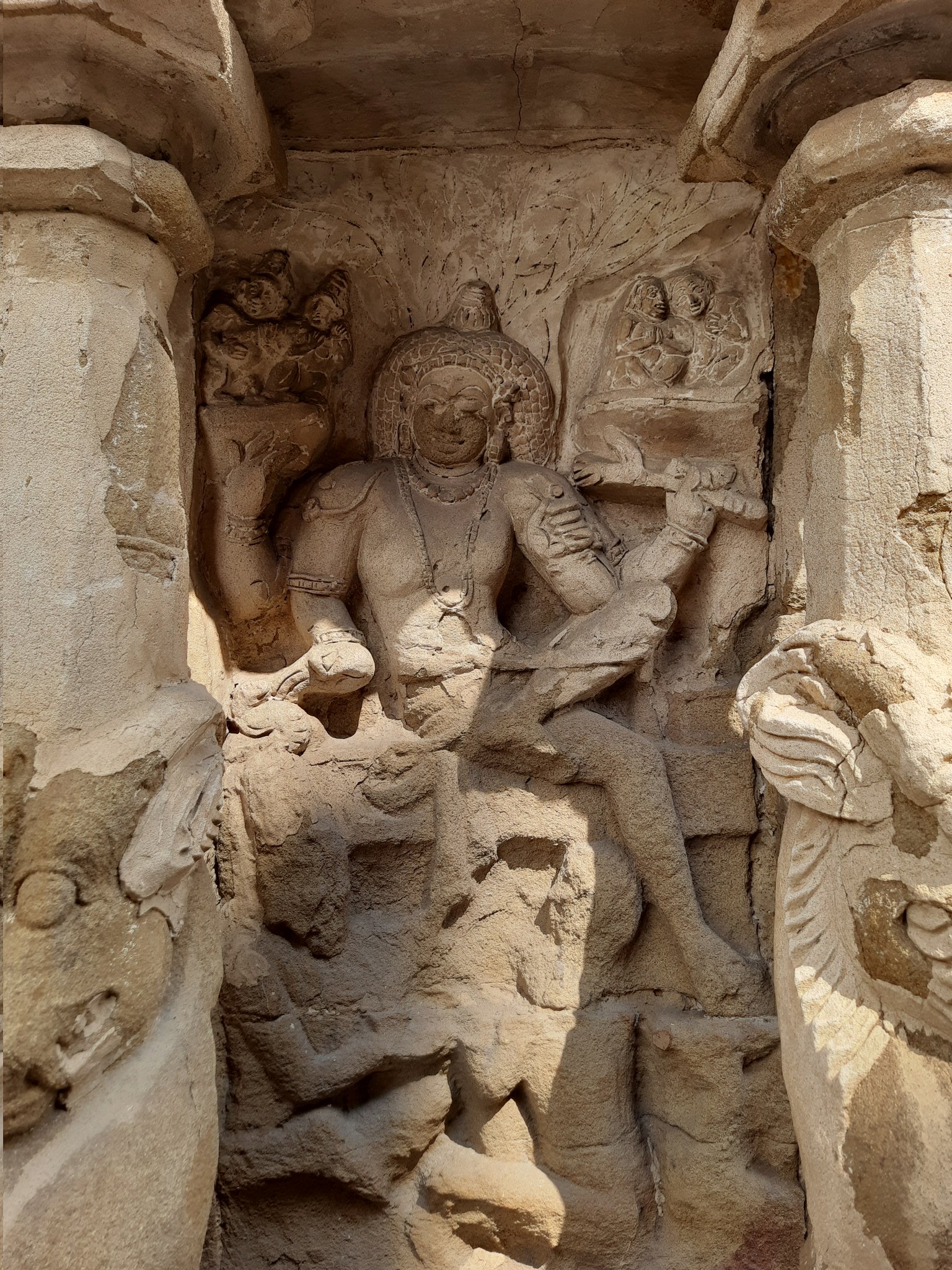 |
| Yoga Dakshinamurthi |
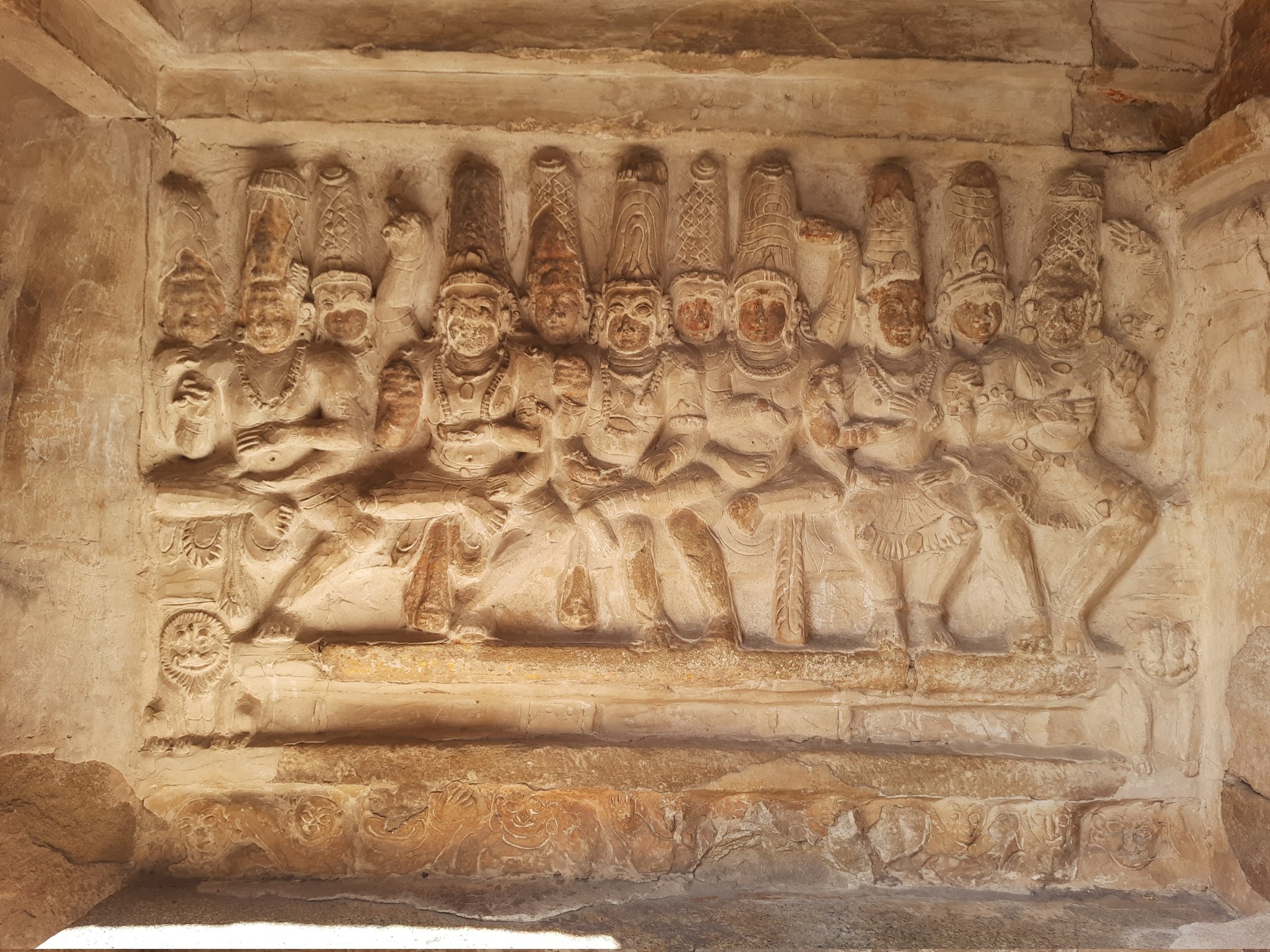 |
| 11 Rudras |
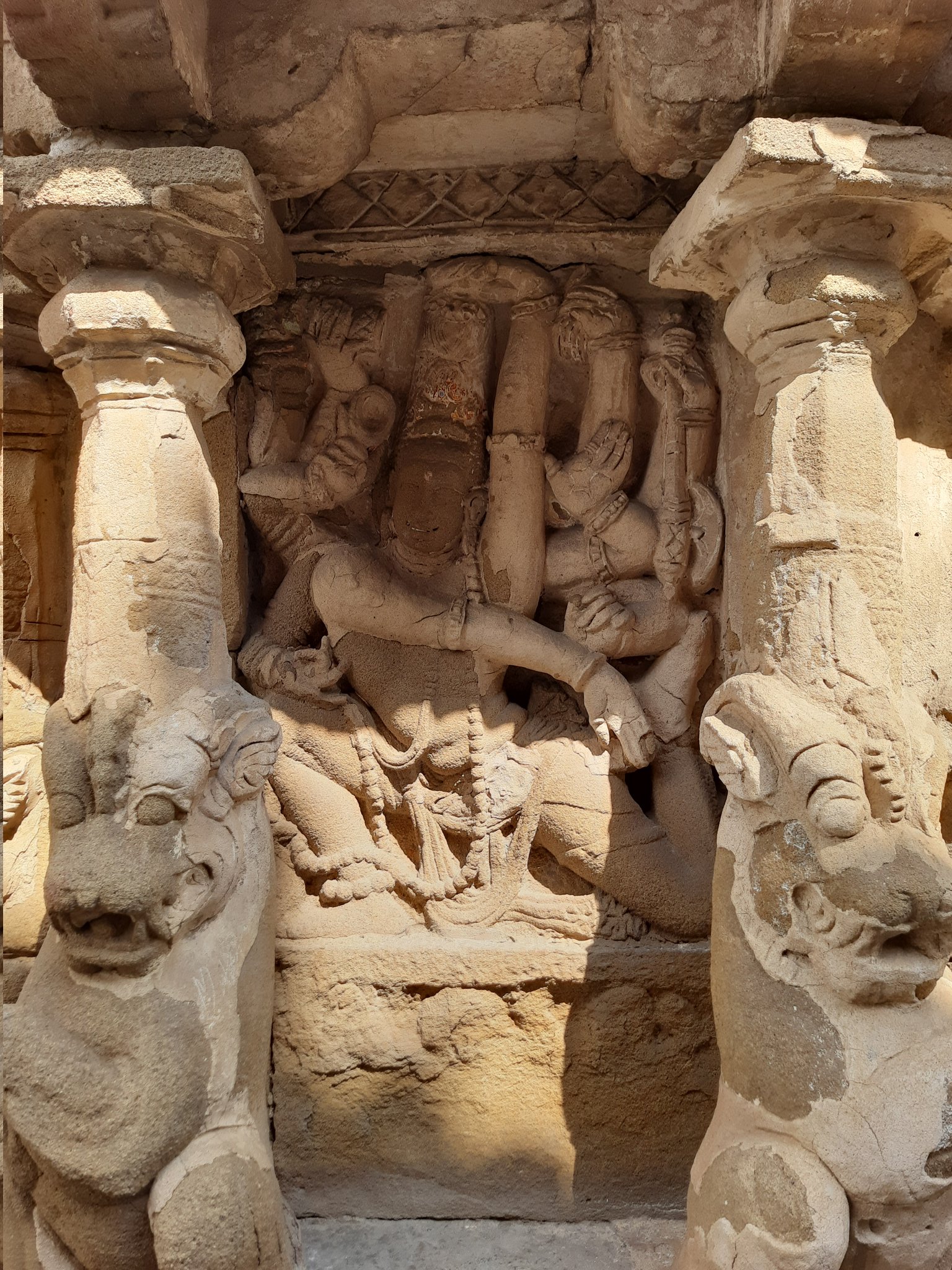 |
| Samhara Tandava |
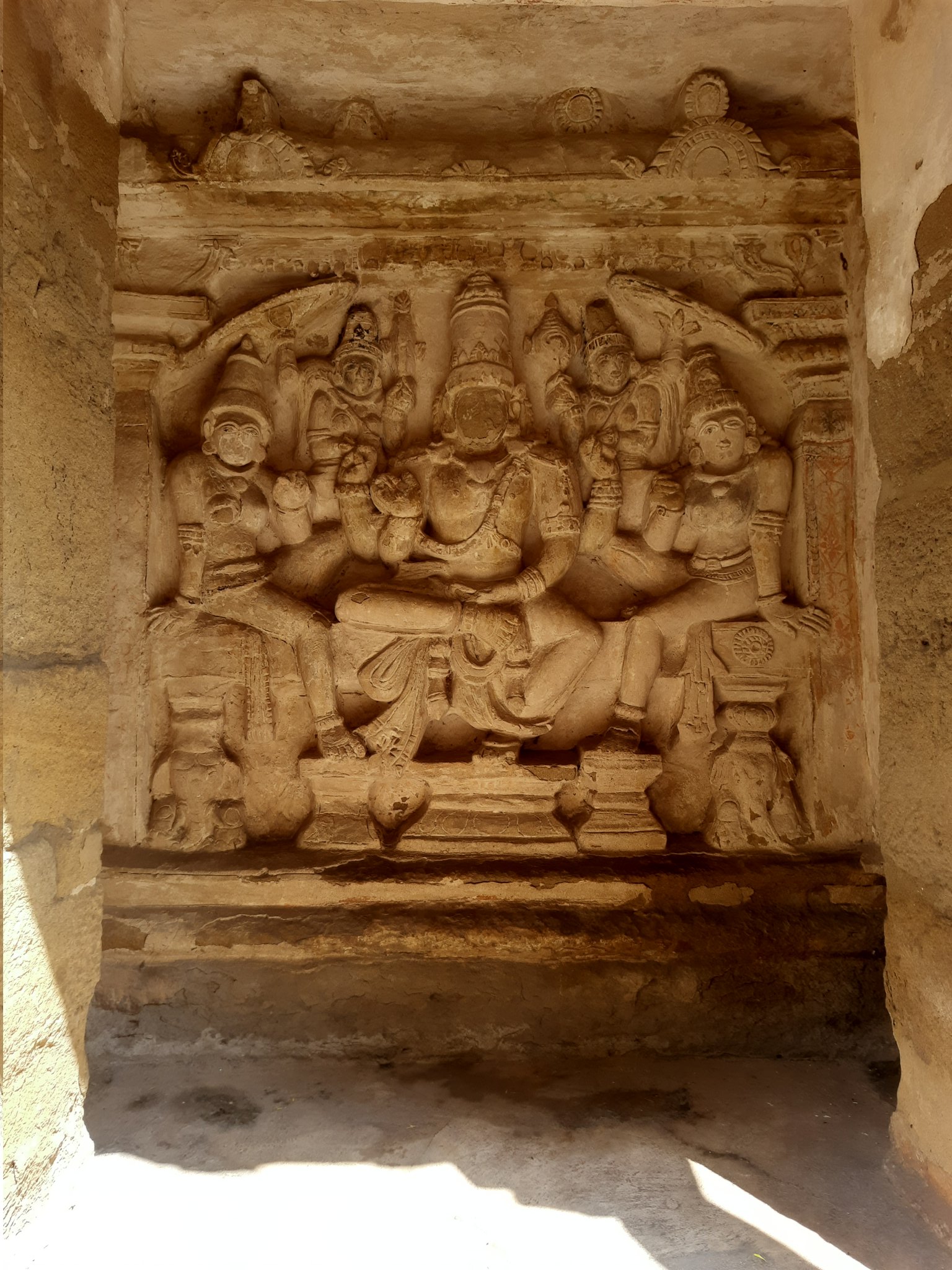 |
| Vishnu with Sridevi & Bhudevi |
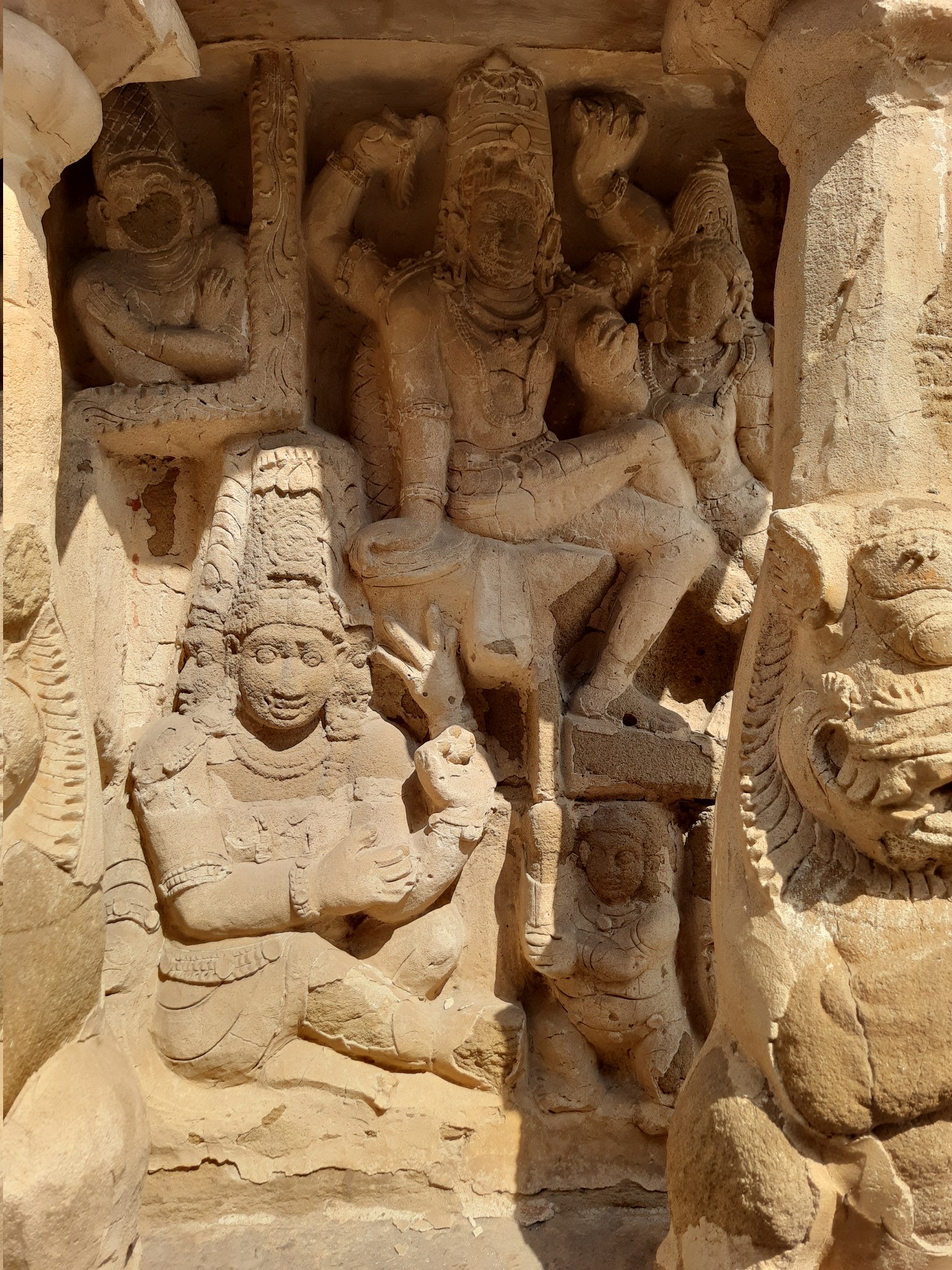 |
| Brahma anugraha Shiva |
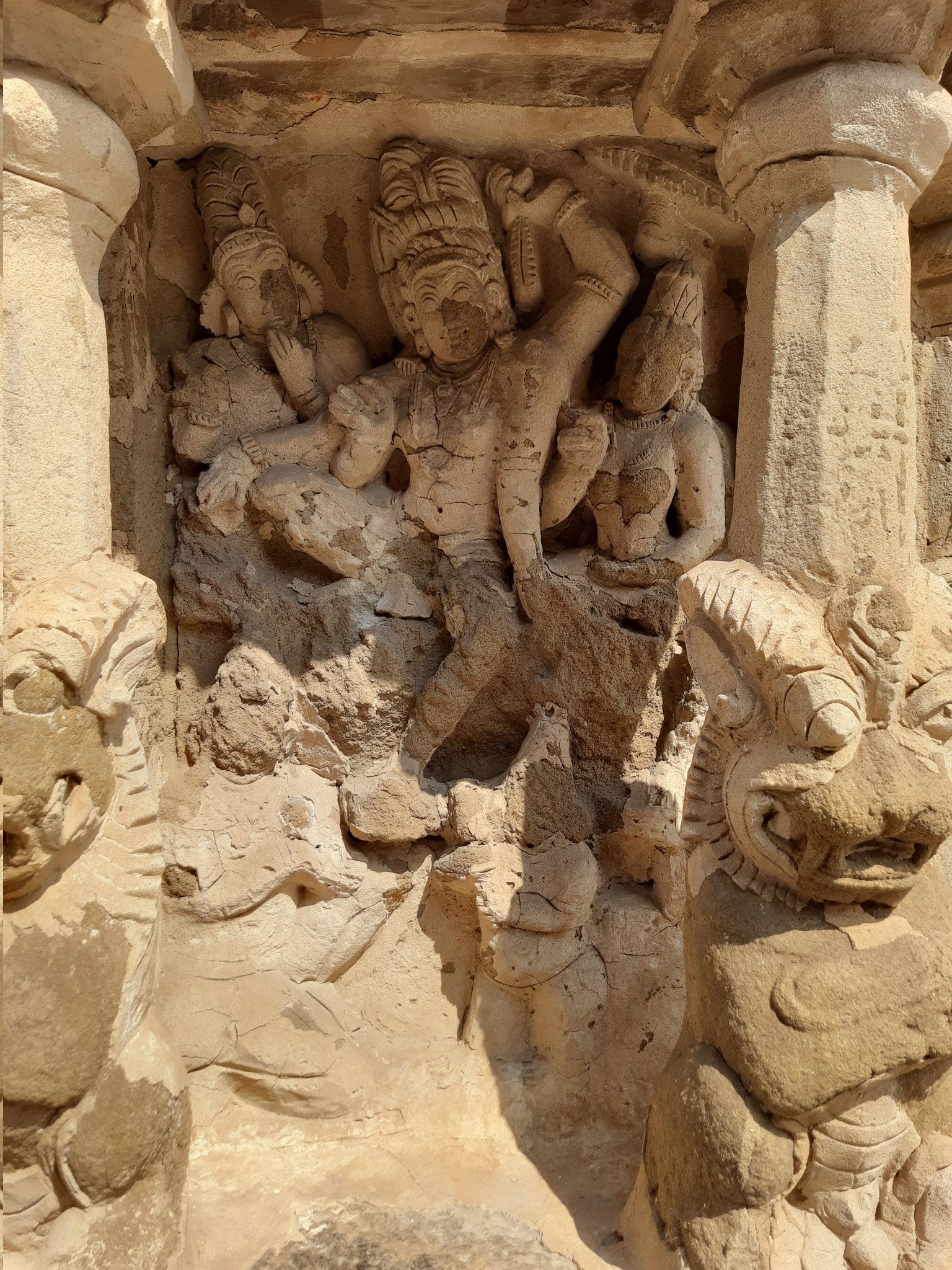 |
| Indra anugraha Shiva |
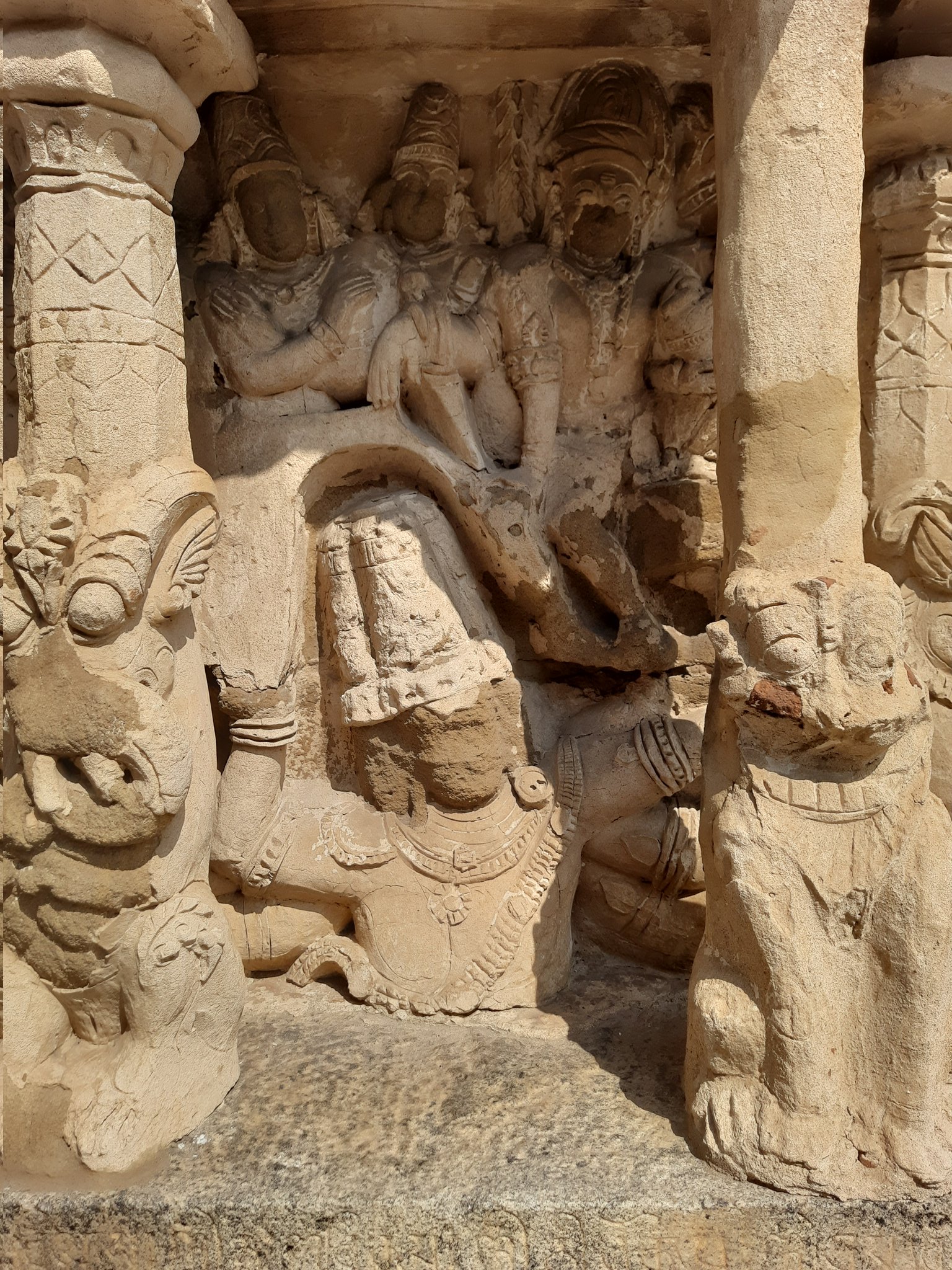 |
| Ravana anugraha Shiva |
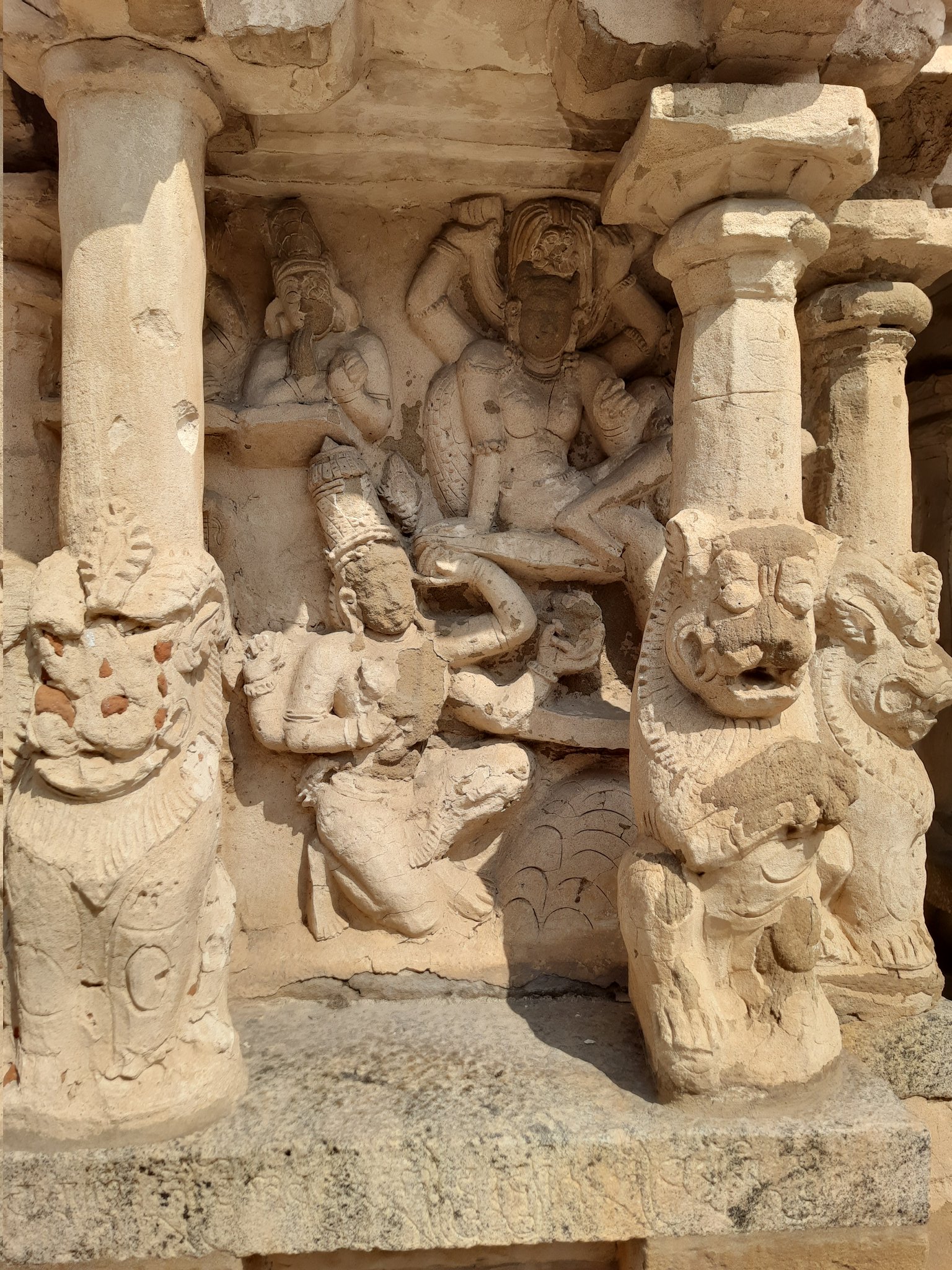 |
| Vishnu anugraha Shiva |
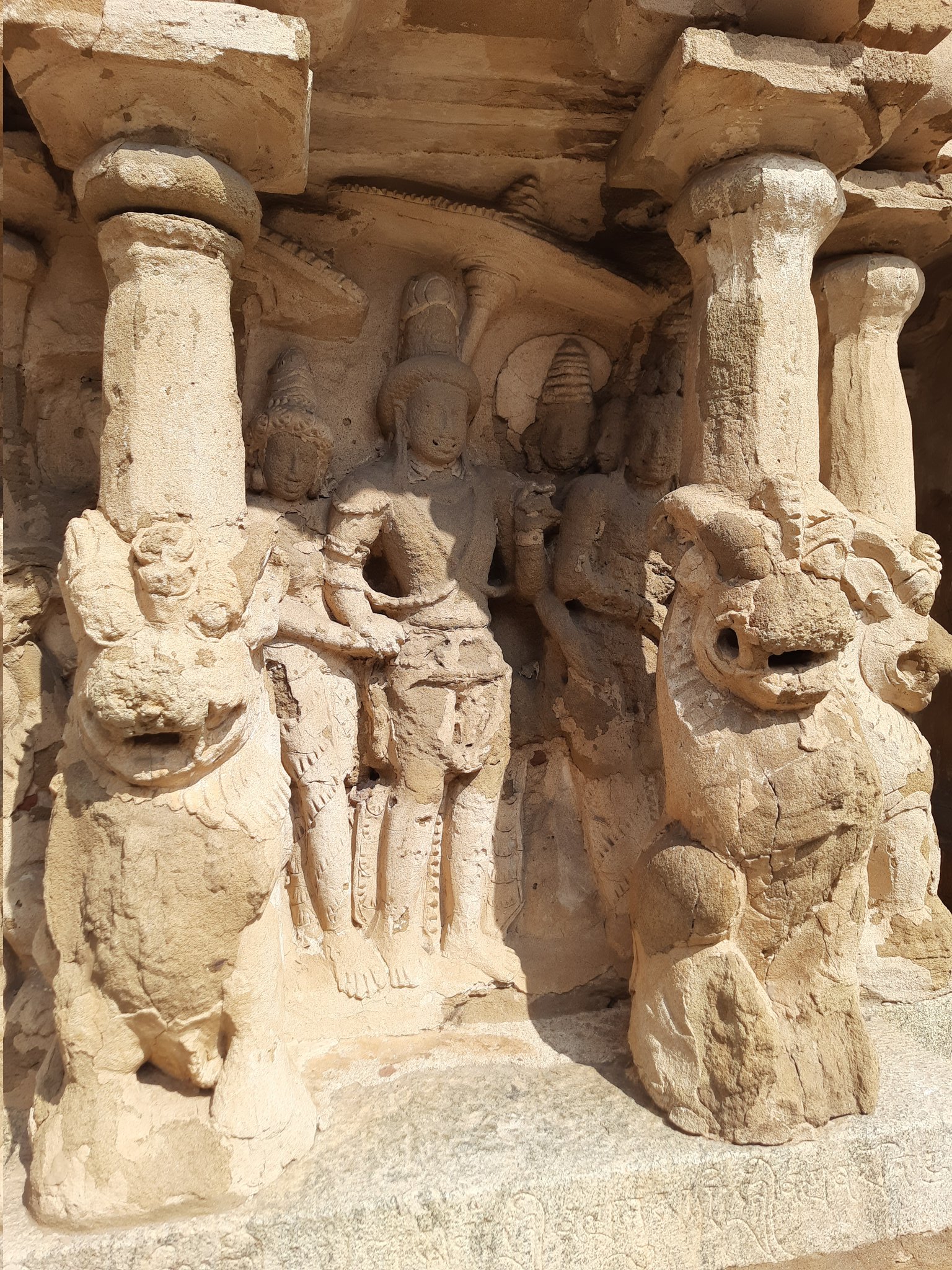 |
| Kalyanasundara (Shiva's marriage with Parvathi) |
 |
| Uma Maheswara |
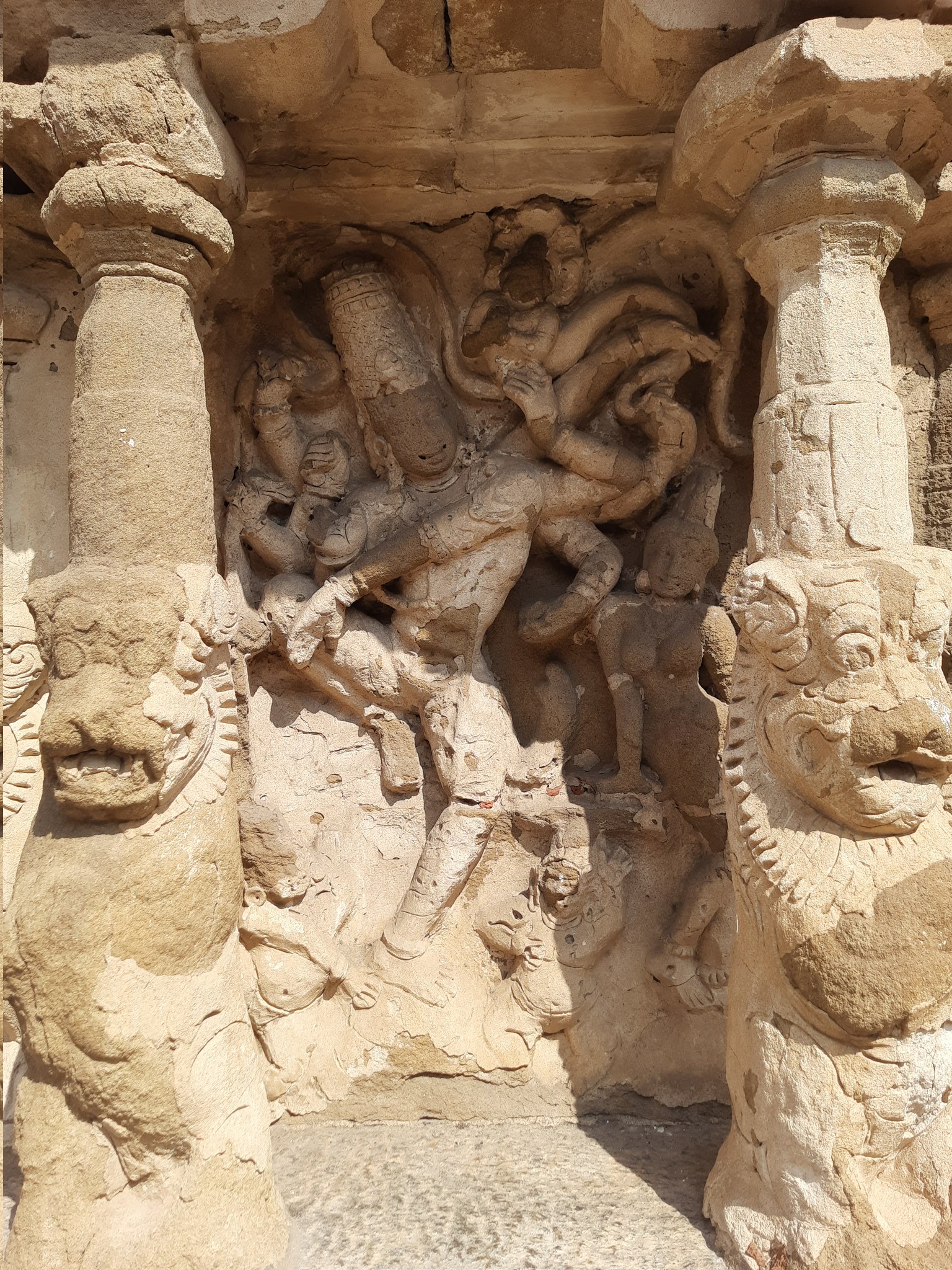 |
| Vishapaharana Tandava |
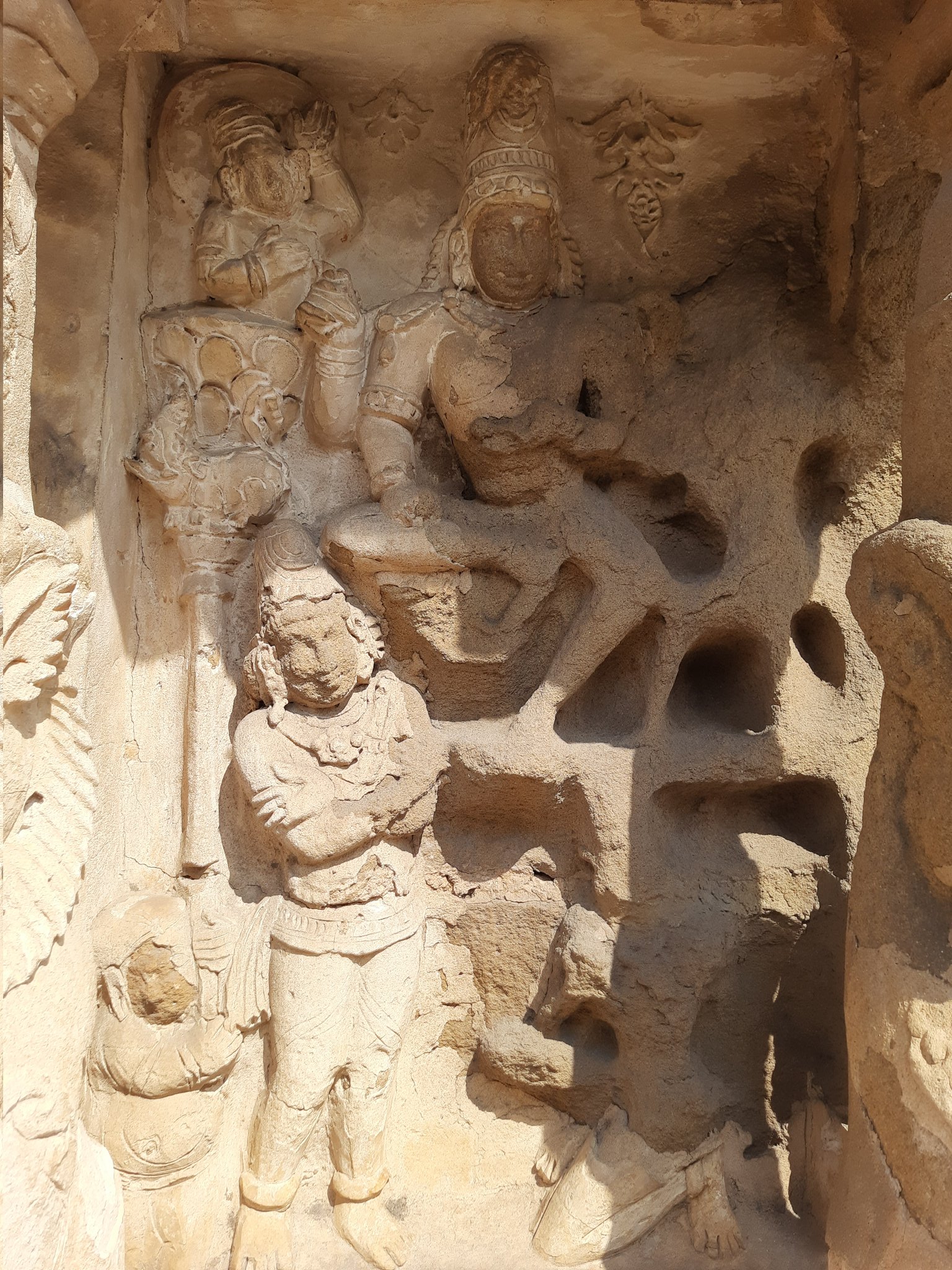 |
| Kama anugraha Shiva |
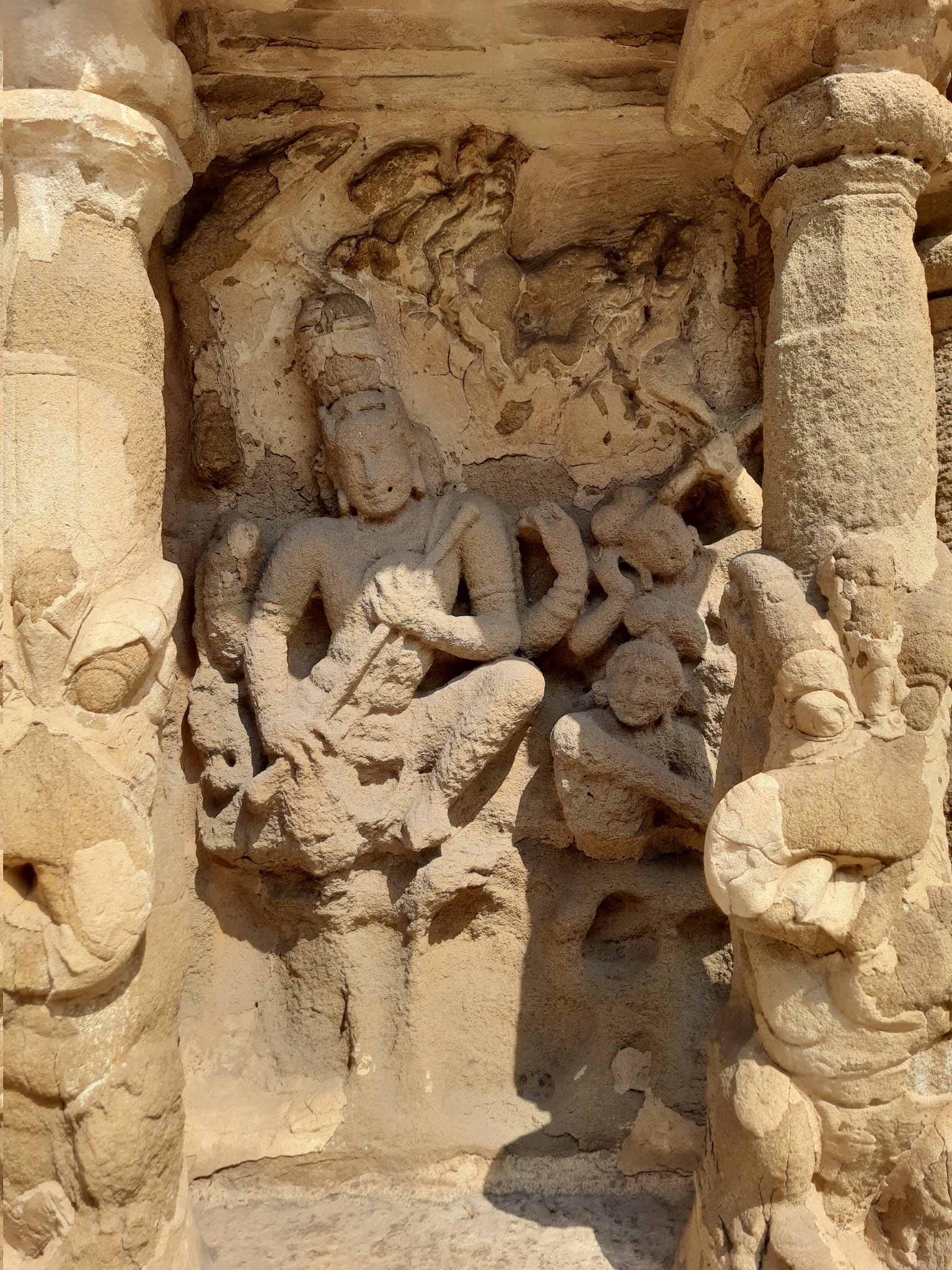 |
| Veenadhara Shiva |
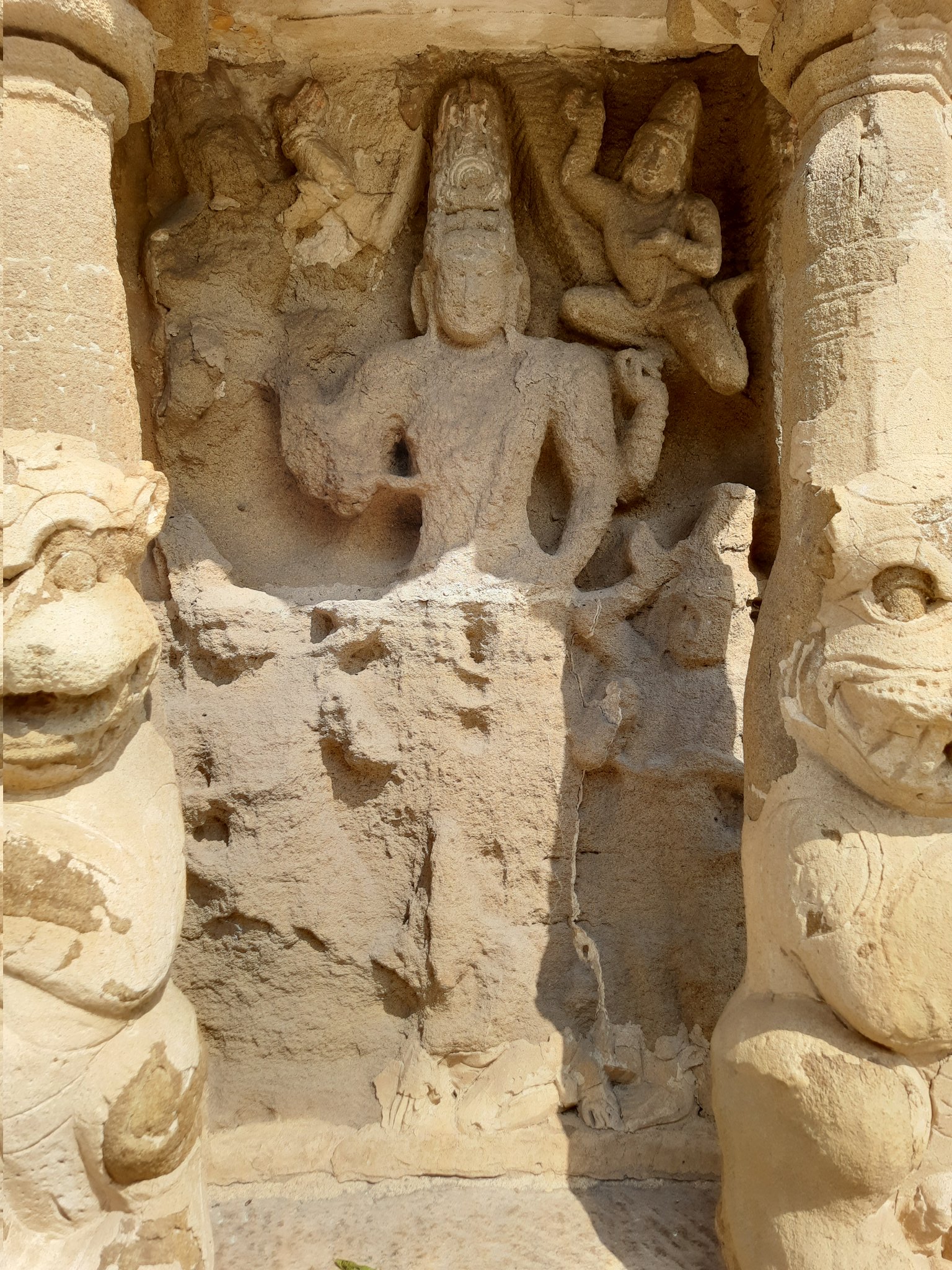 |
| Lingodhbhava |
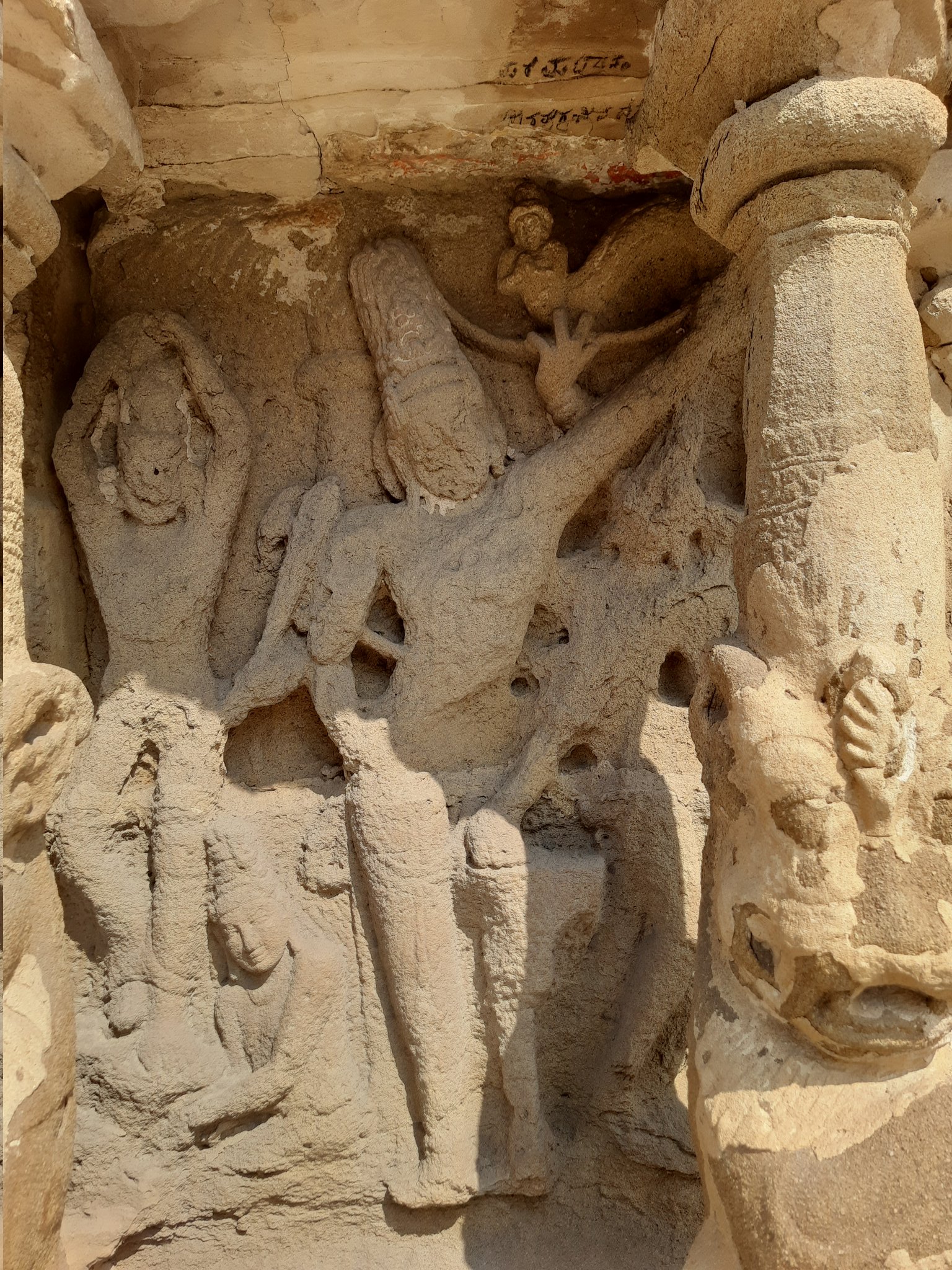 |
| Gangadhara |
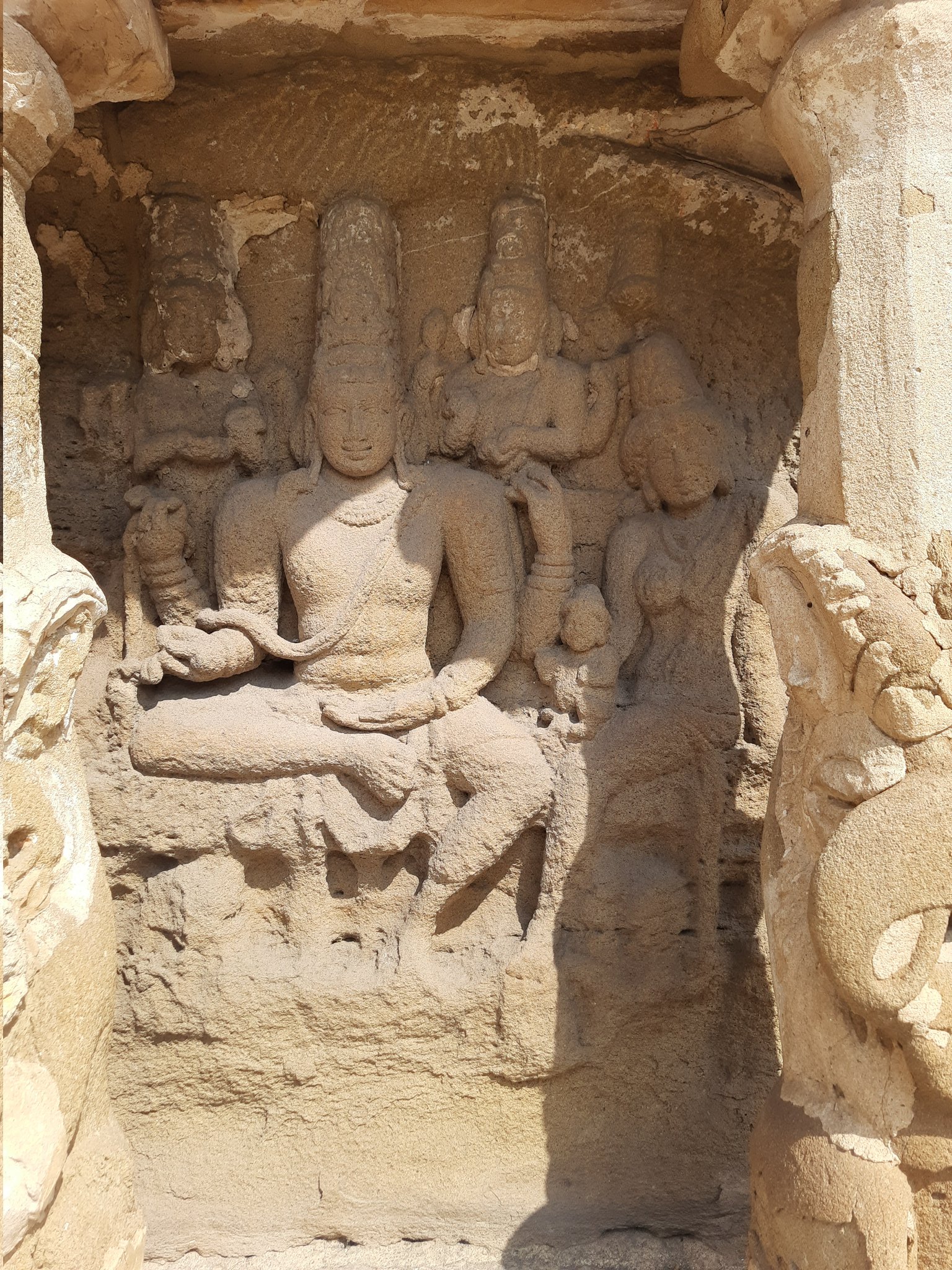 |
| Somaskanda |
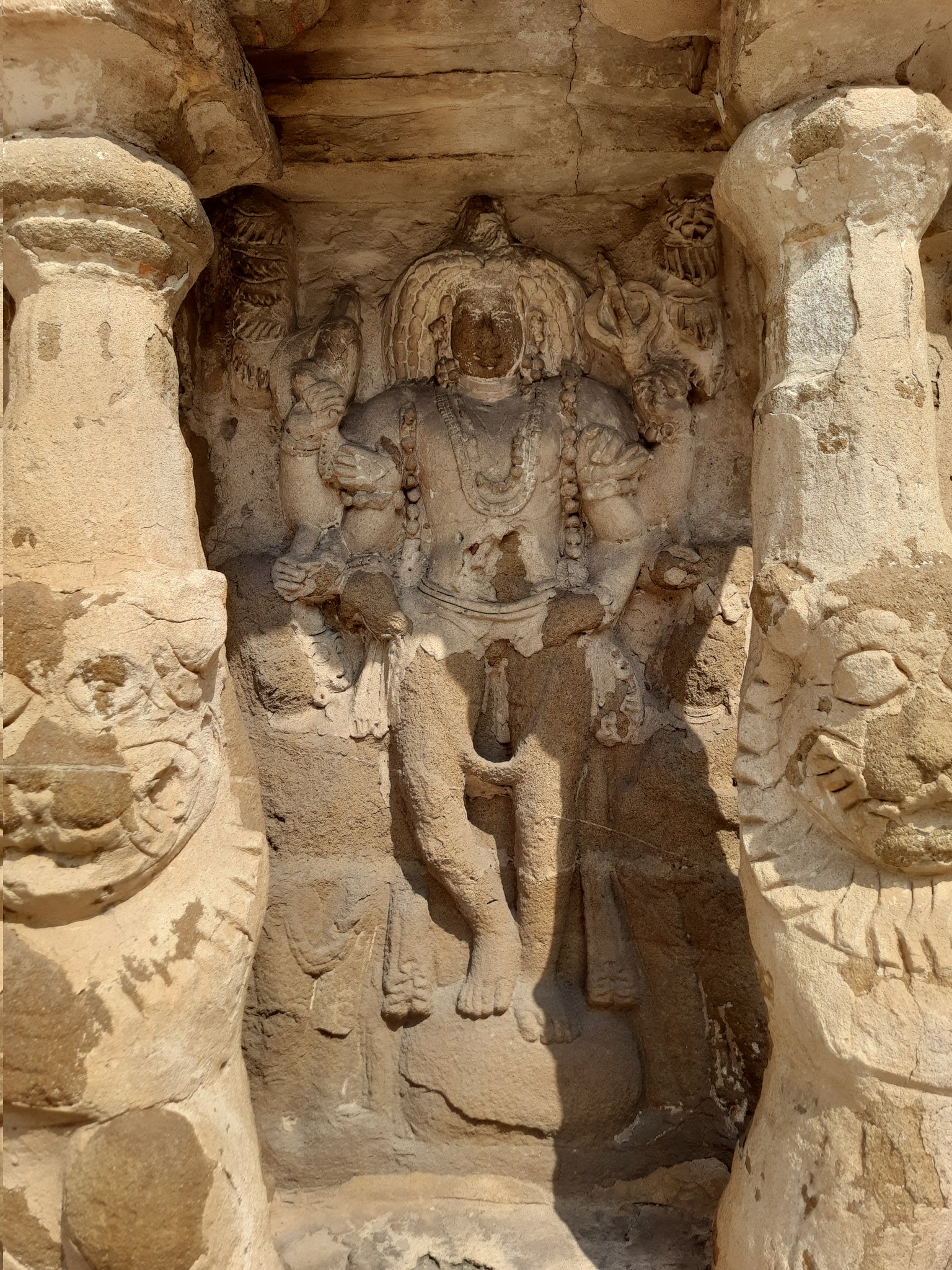 |
| Bhairava |
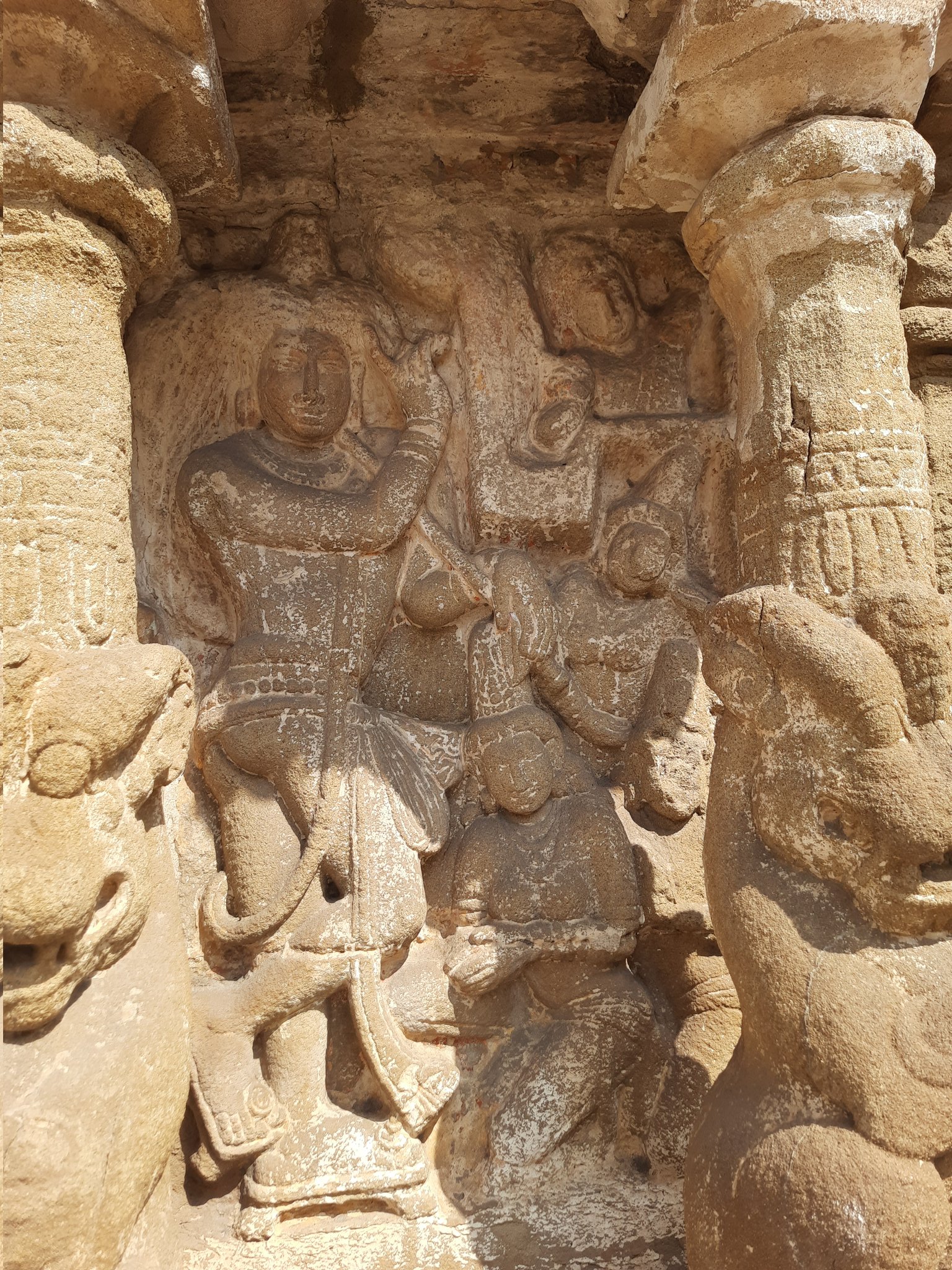 |
| Bhikshatana |
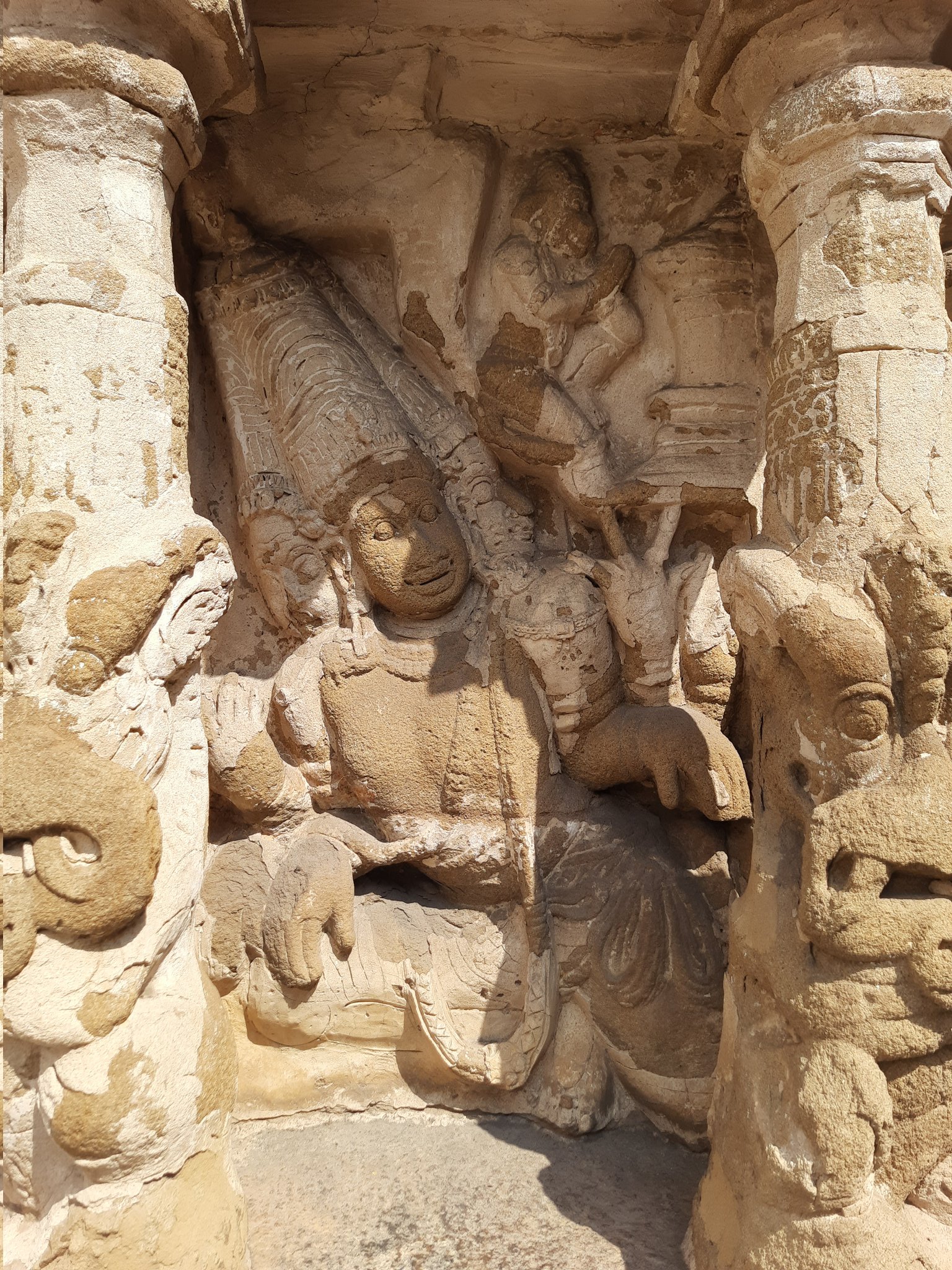 |
| Ravana and Vaali worshiping the Atma Linga |
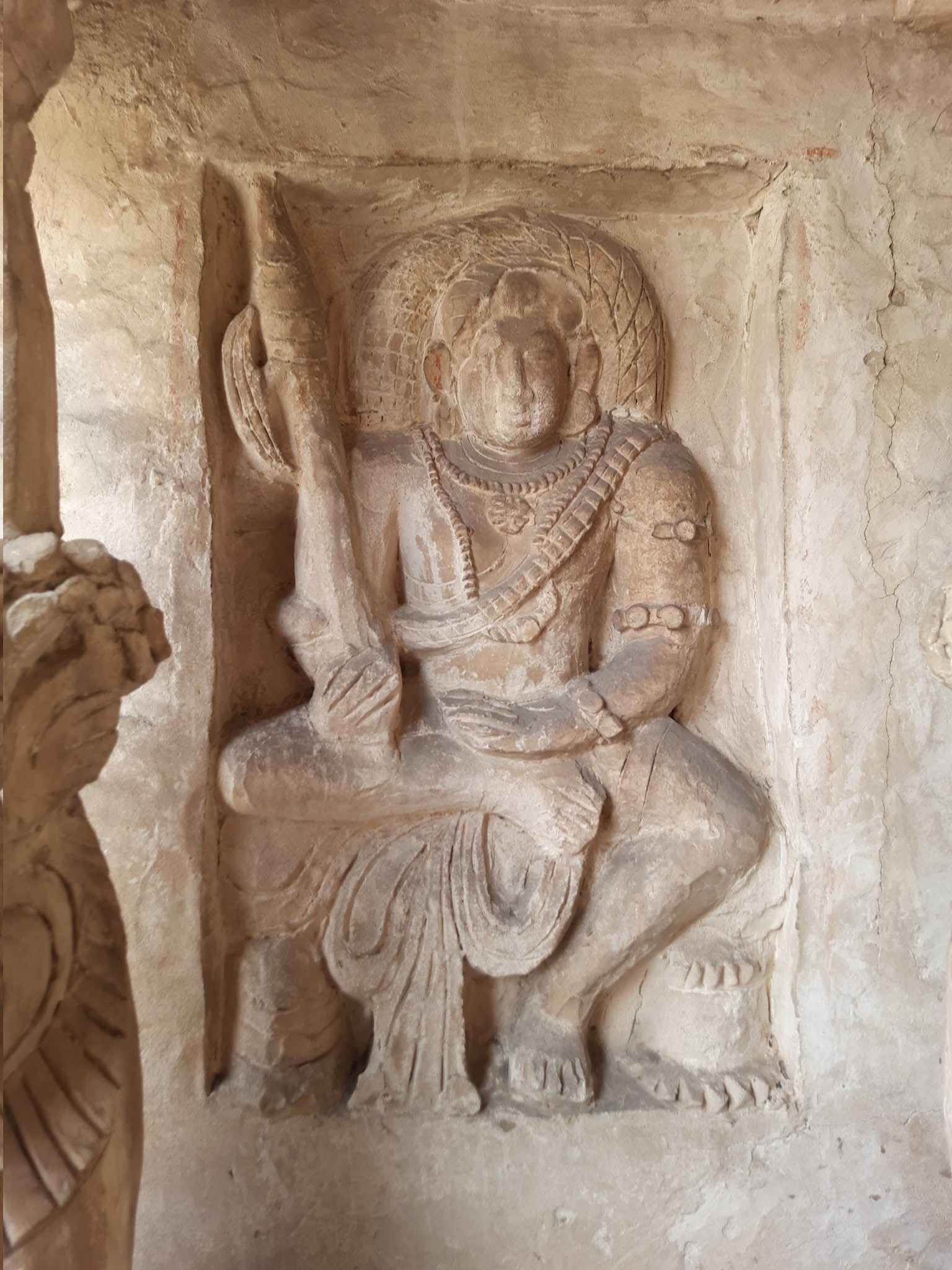 |
| Chandikeshwara |
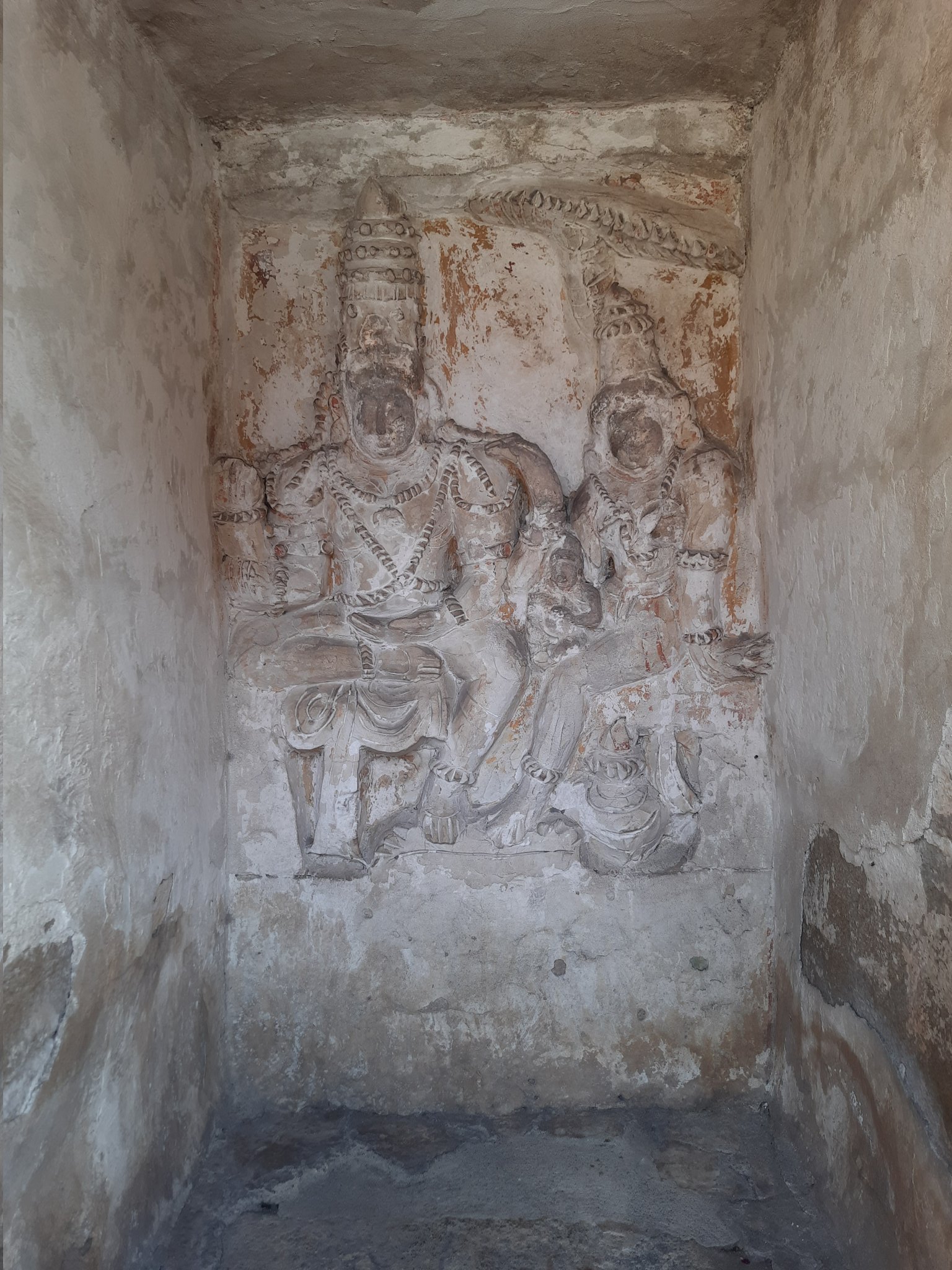 |
| Somaskanda |
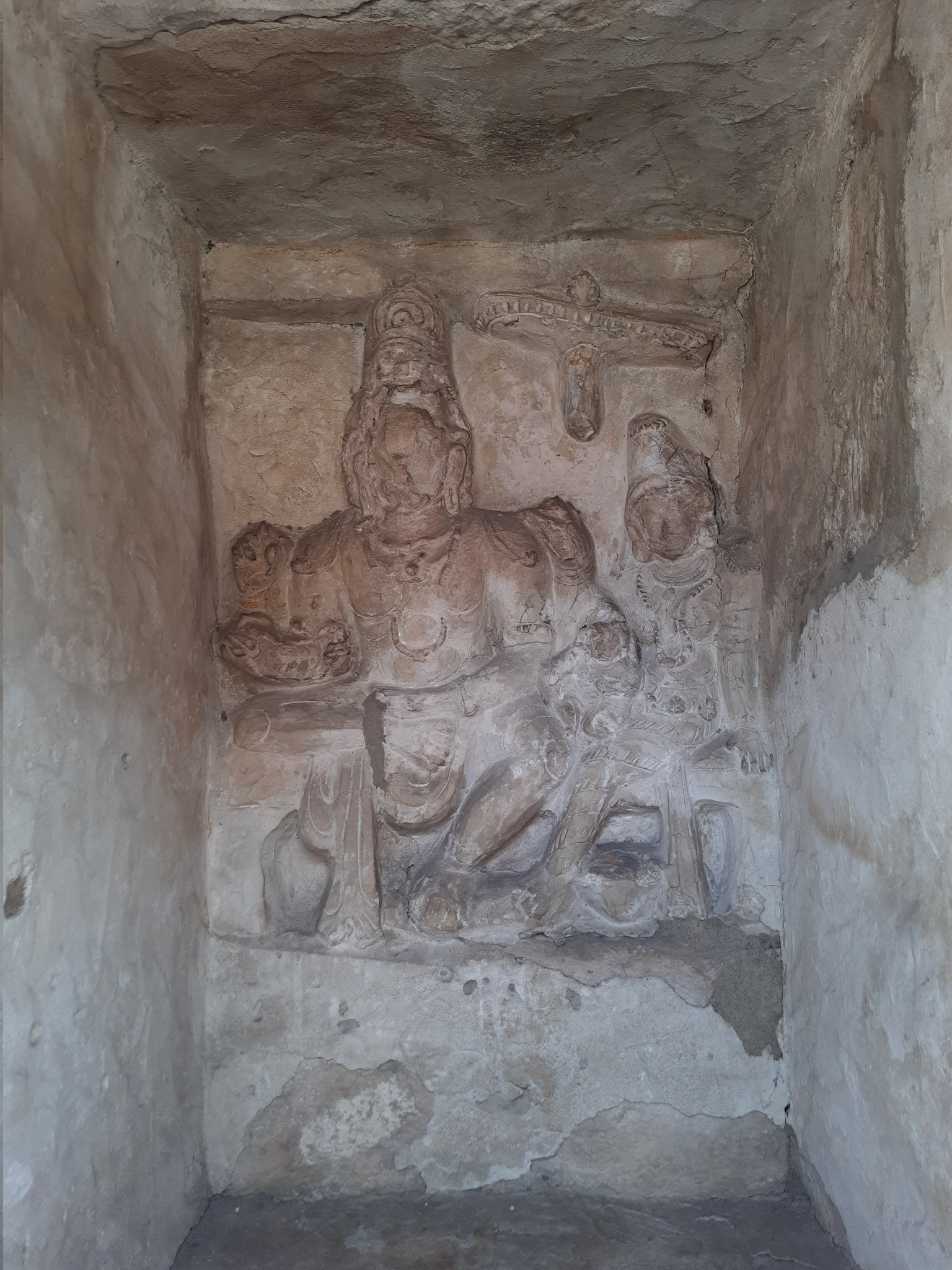 |
| Somaskanda |
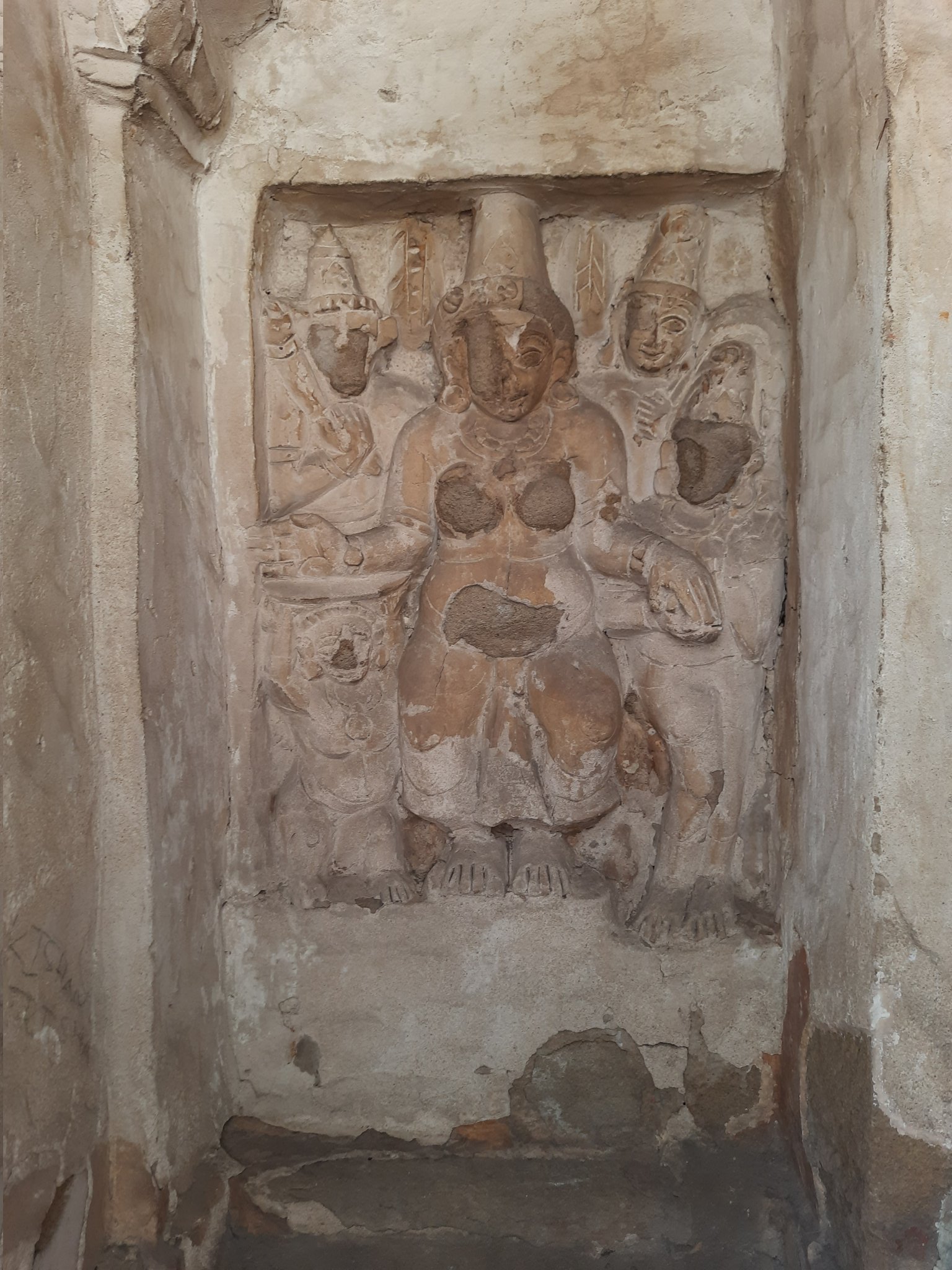 |
| Jyeshta Devi |
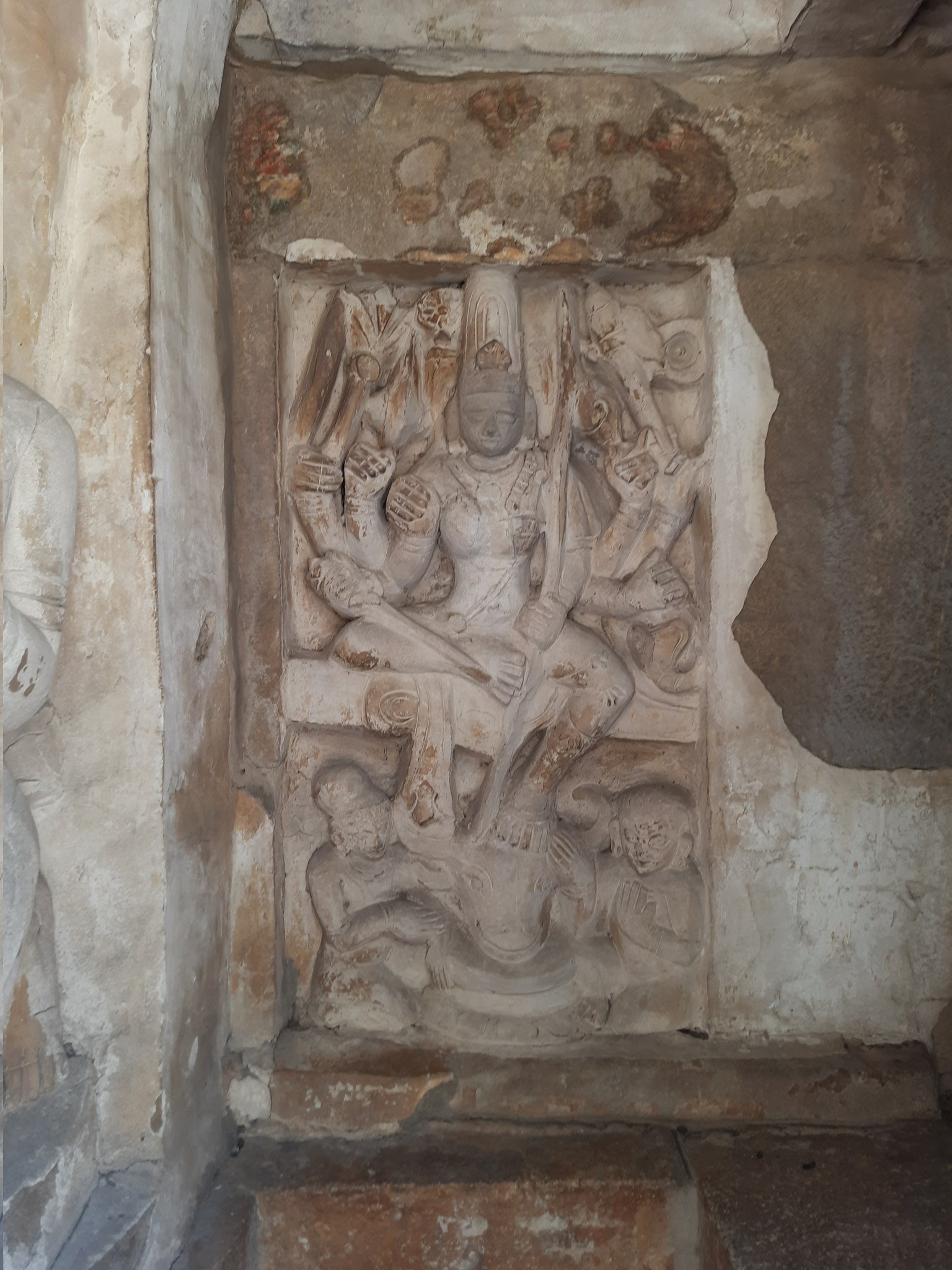 |
| Durga |
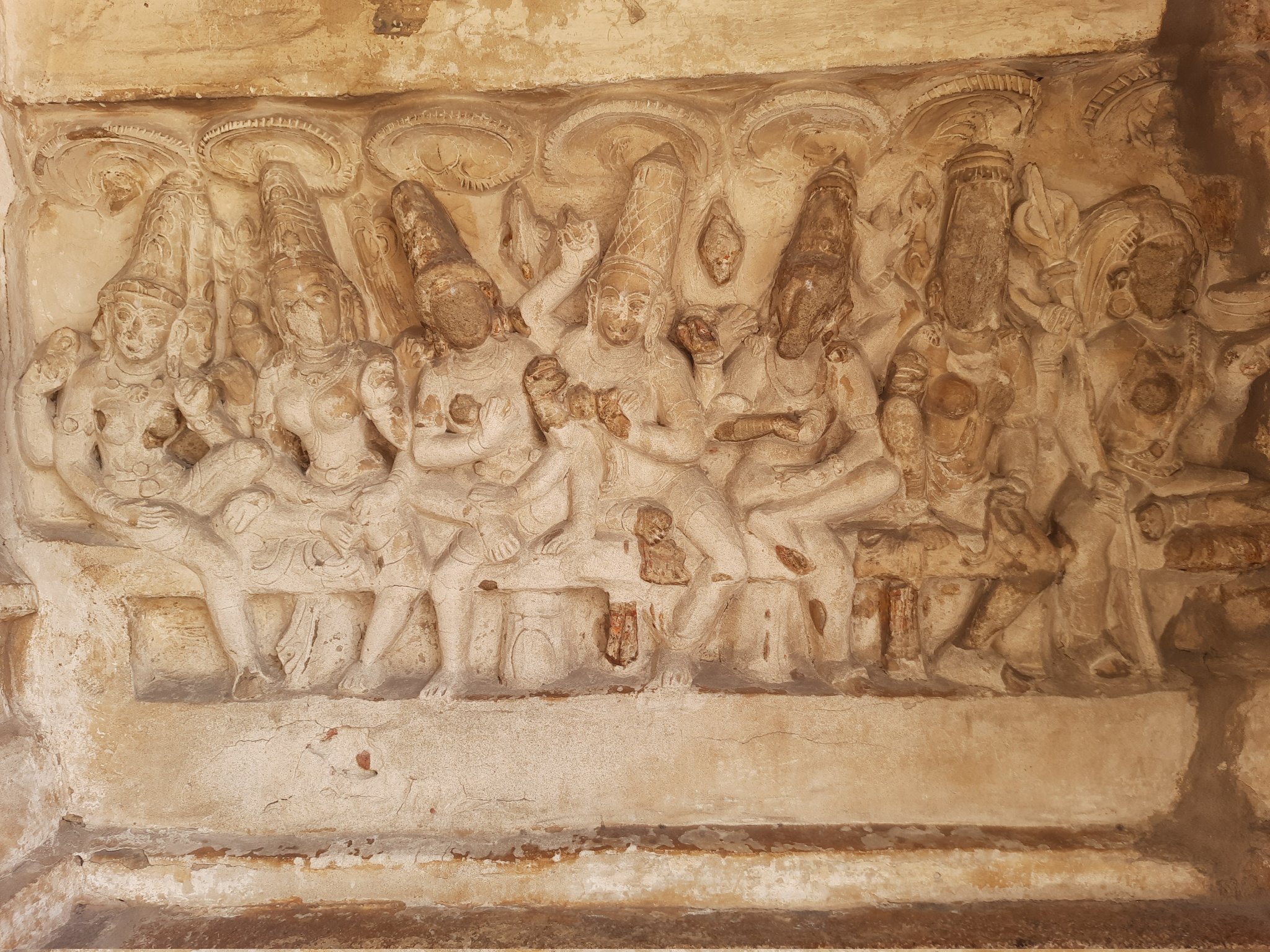 |
| Saptamatrika |
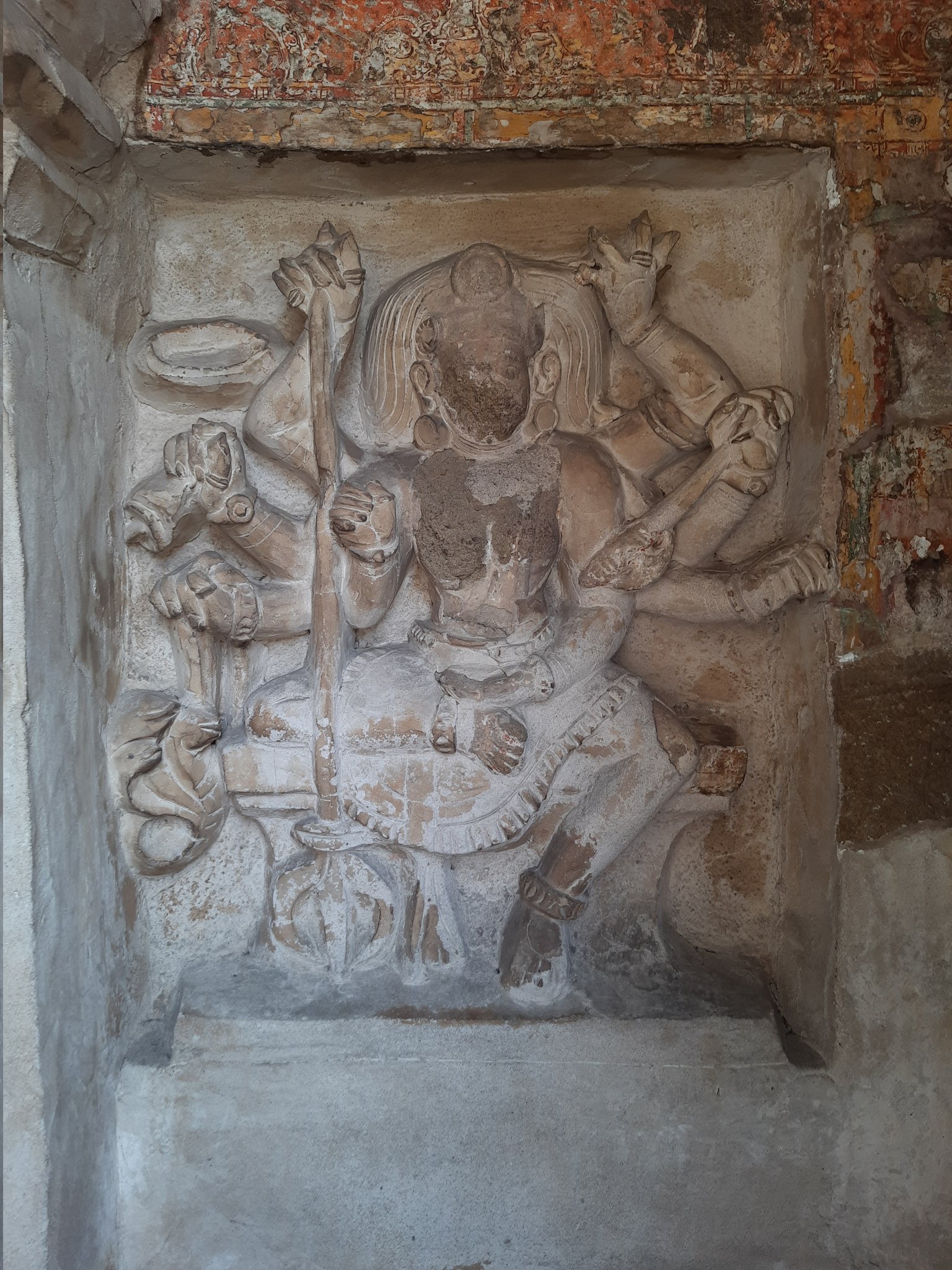 |
| Bhairavi |
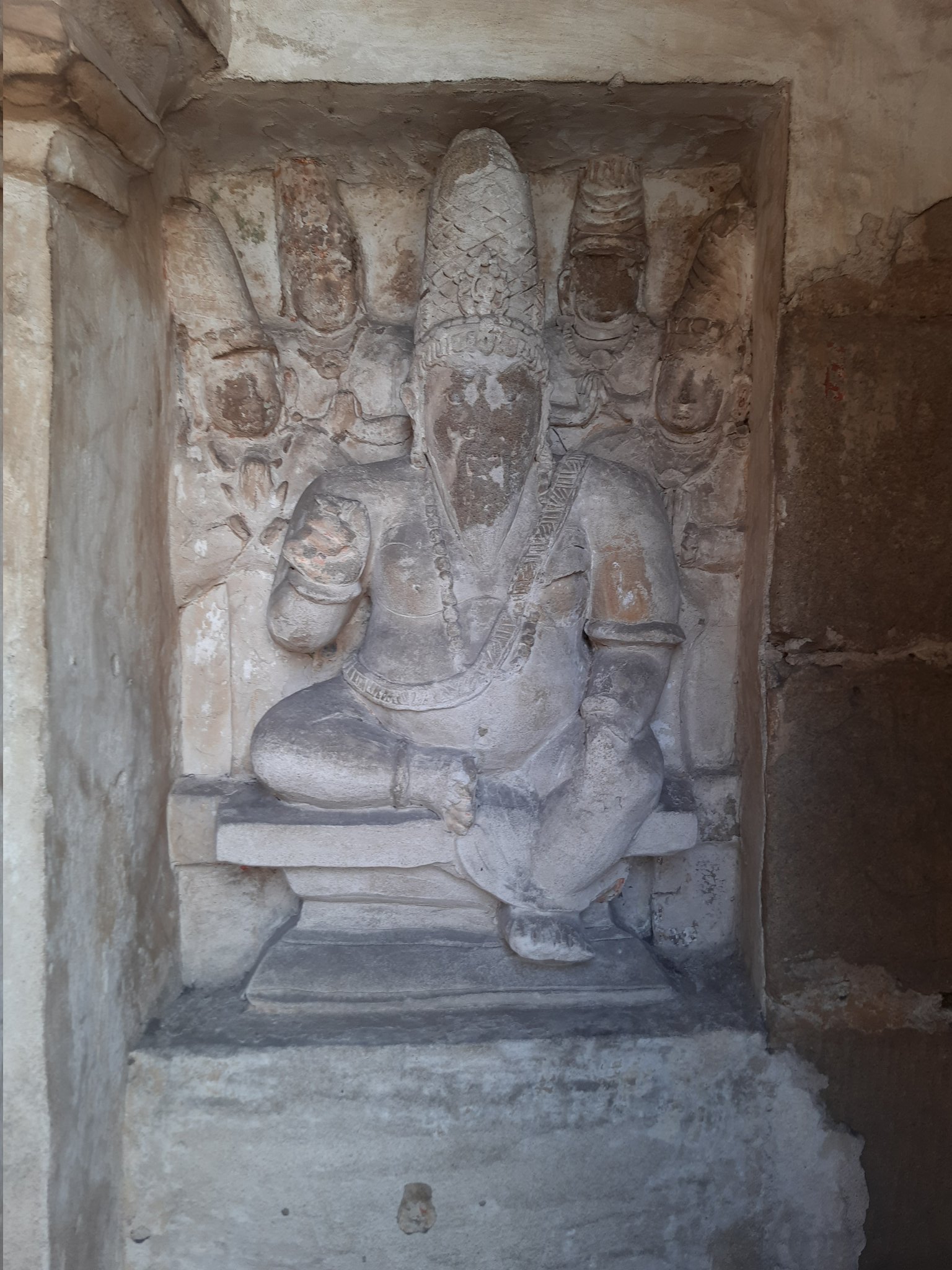 |
| Agastya |
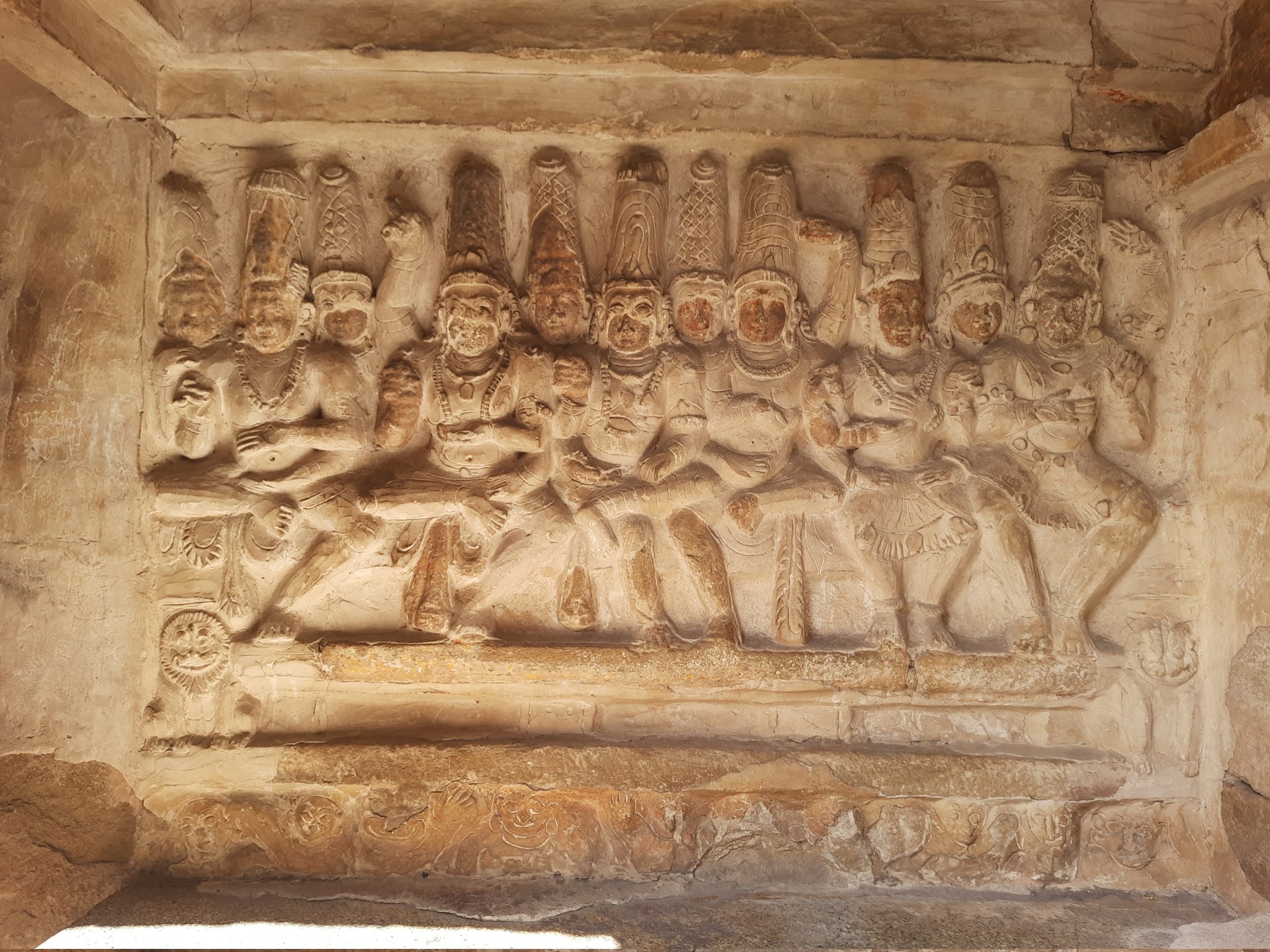 |
| 11 Rudras |
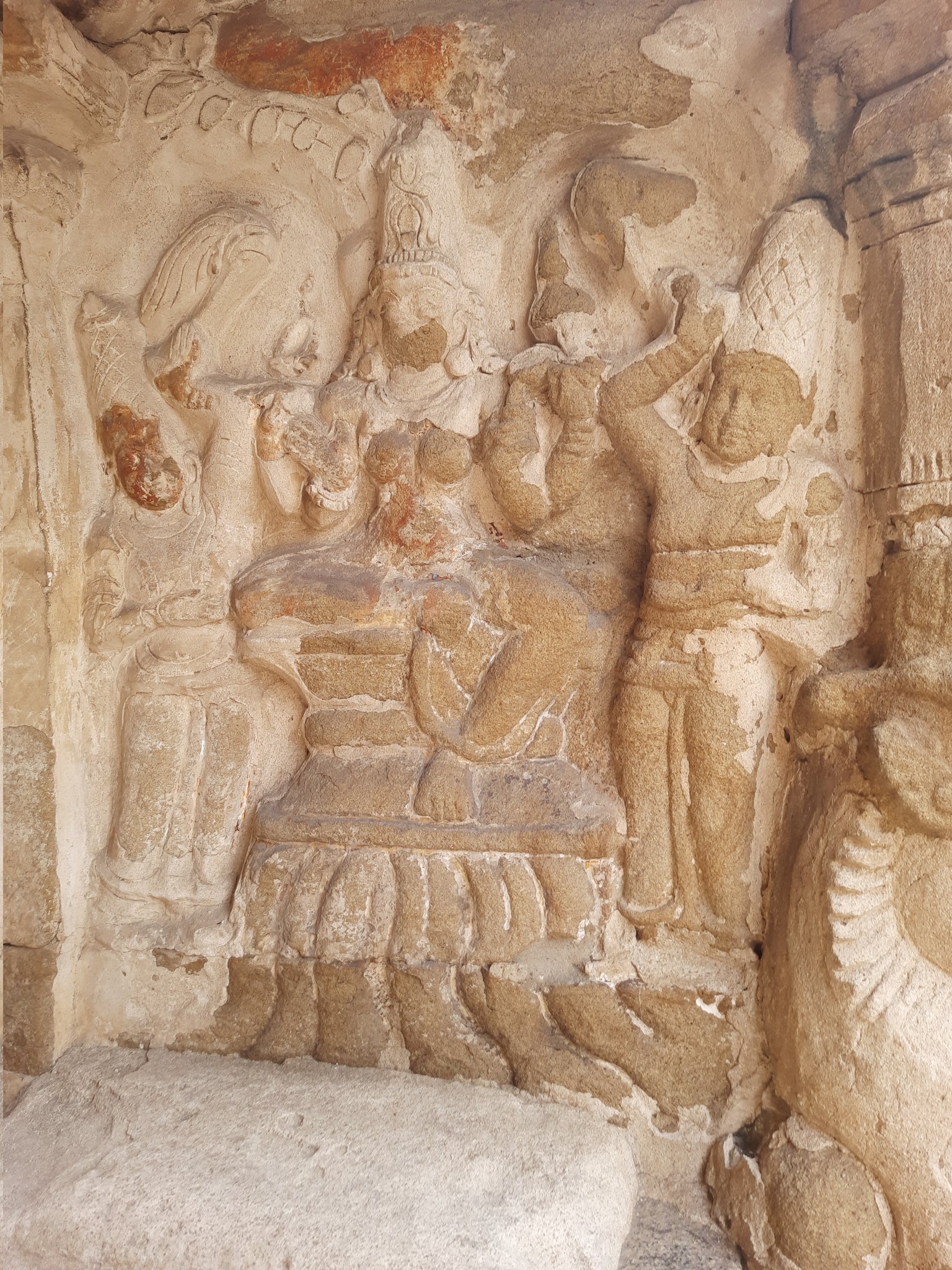 |
| Saraswati |
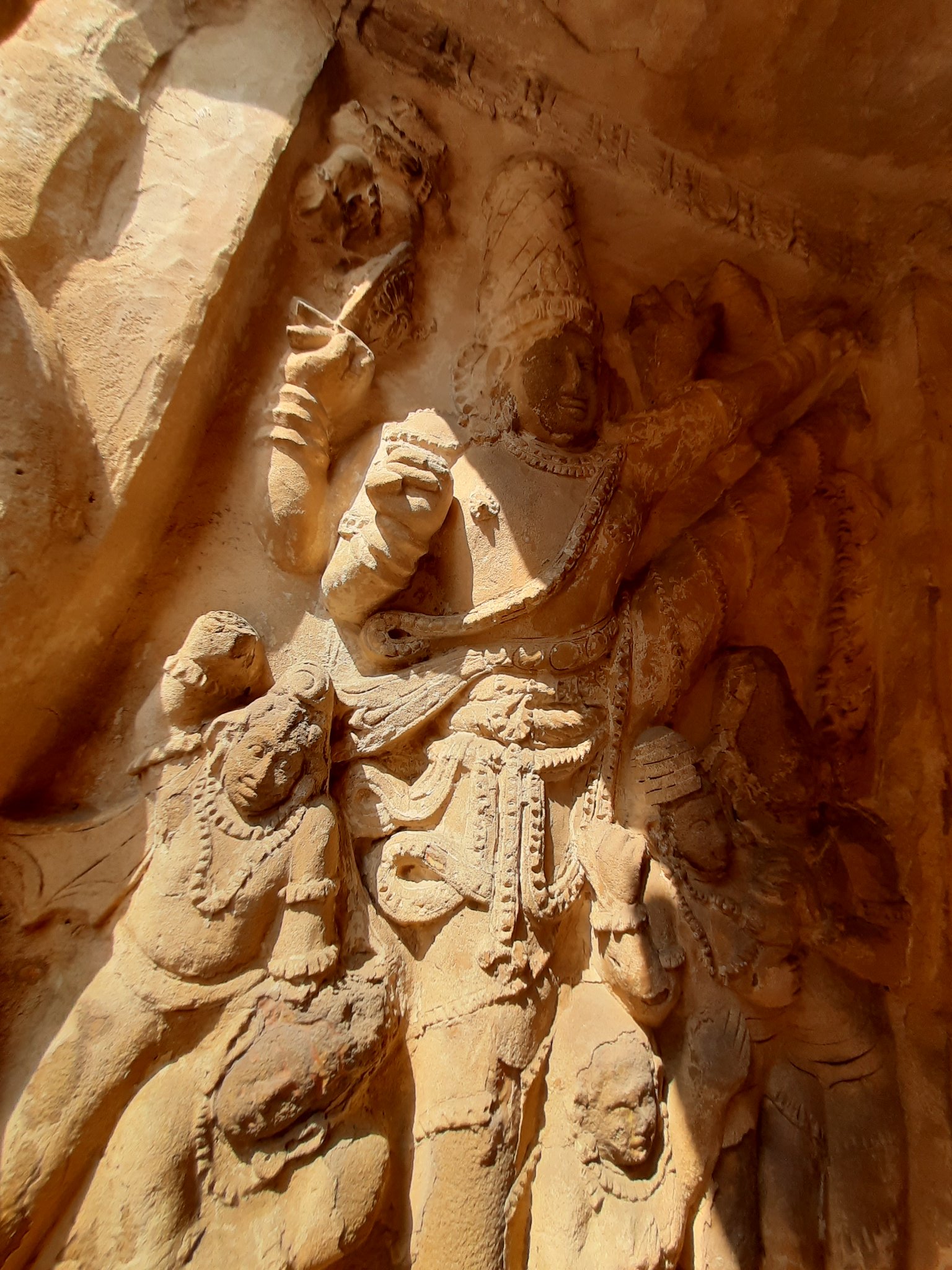 |
| Trivikrama |
Murthis on the outer walls of the Garbhagirha
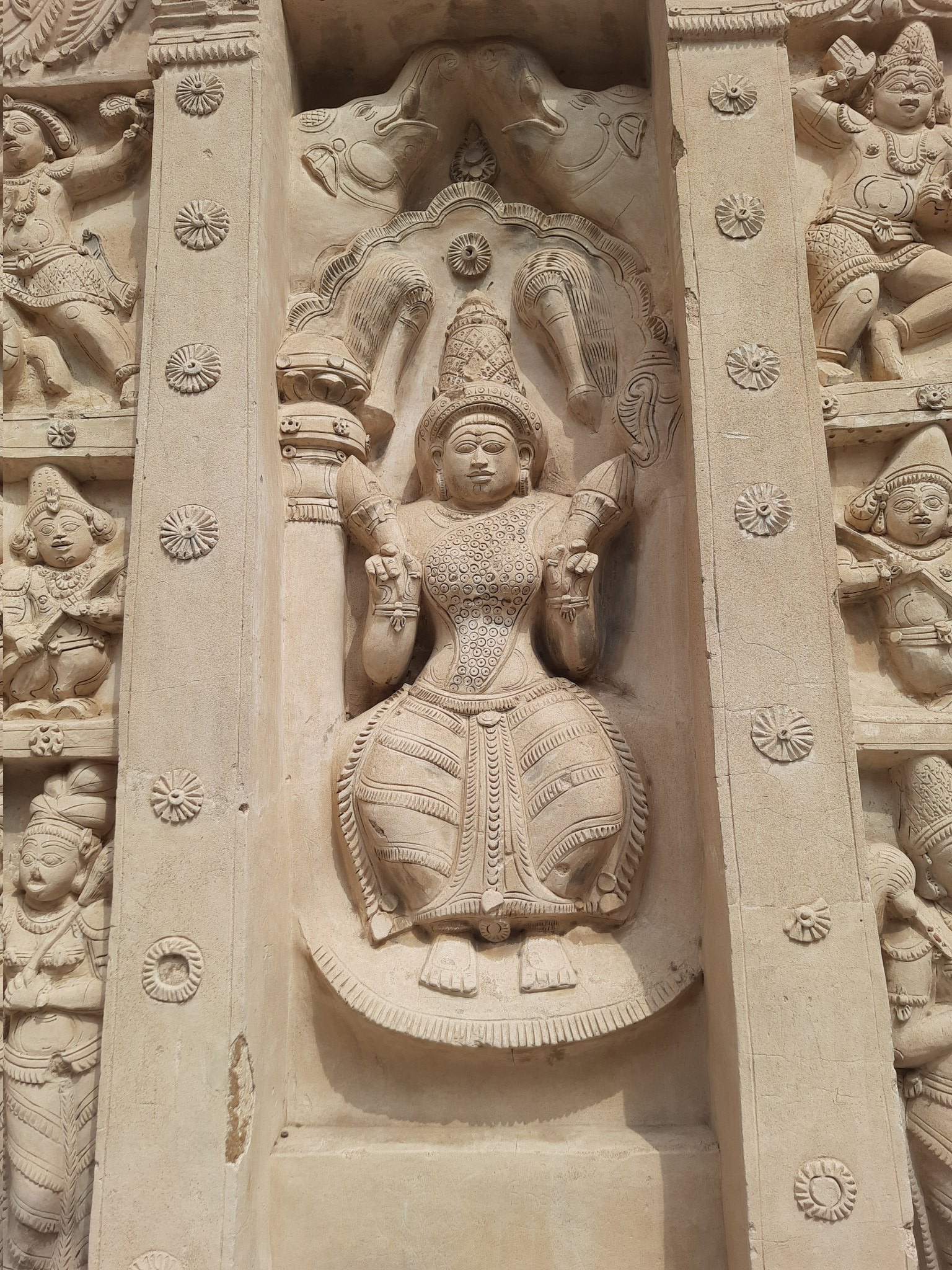 |
| Gaja Lakshmi |
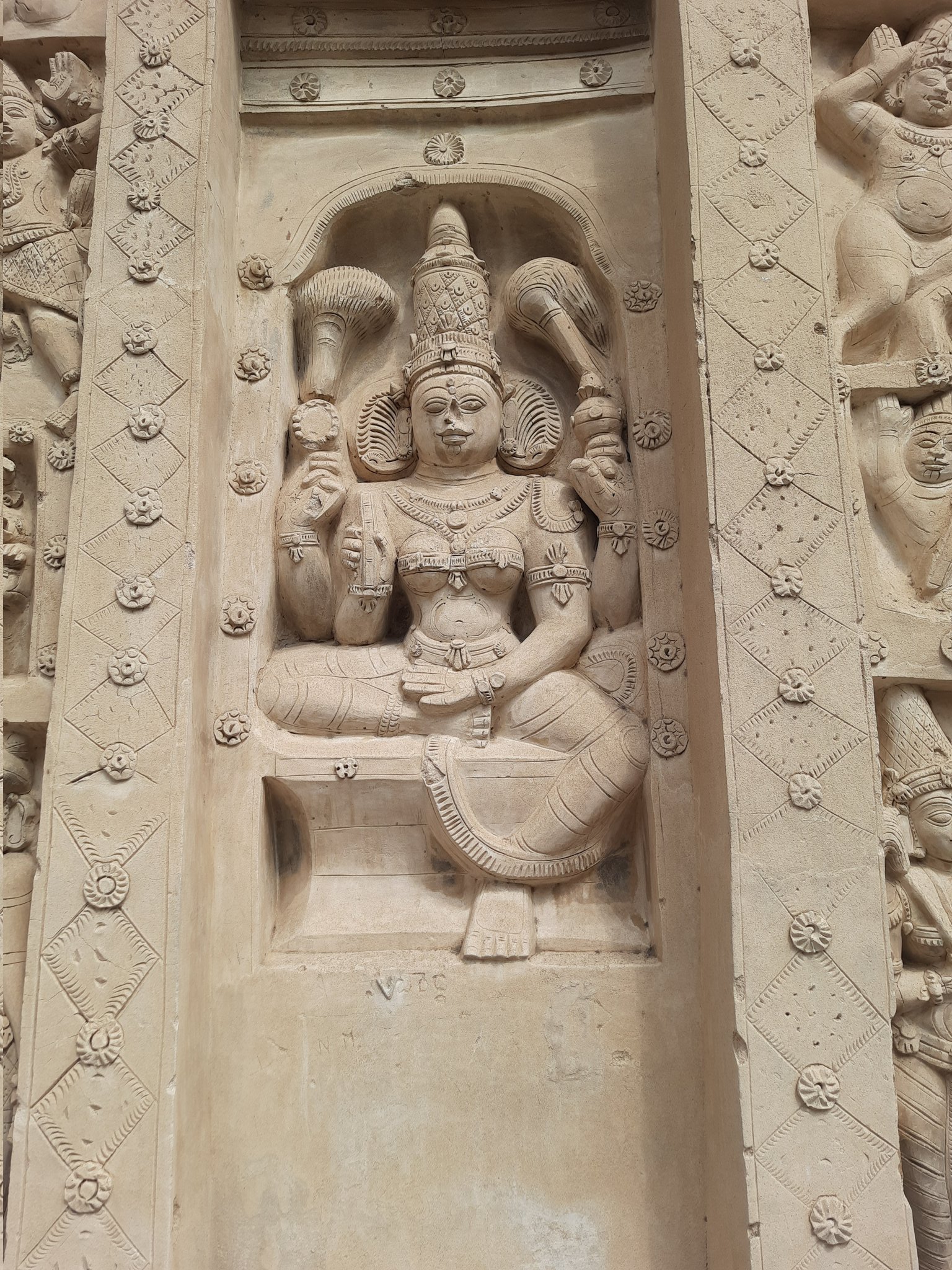 |
| Saraswati |
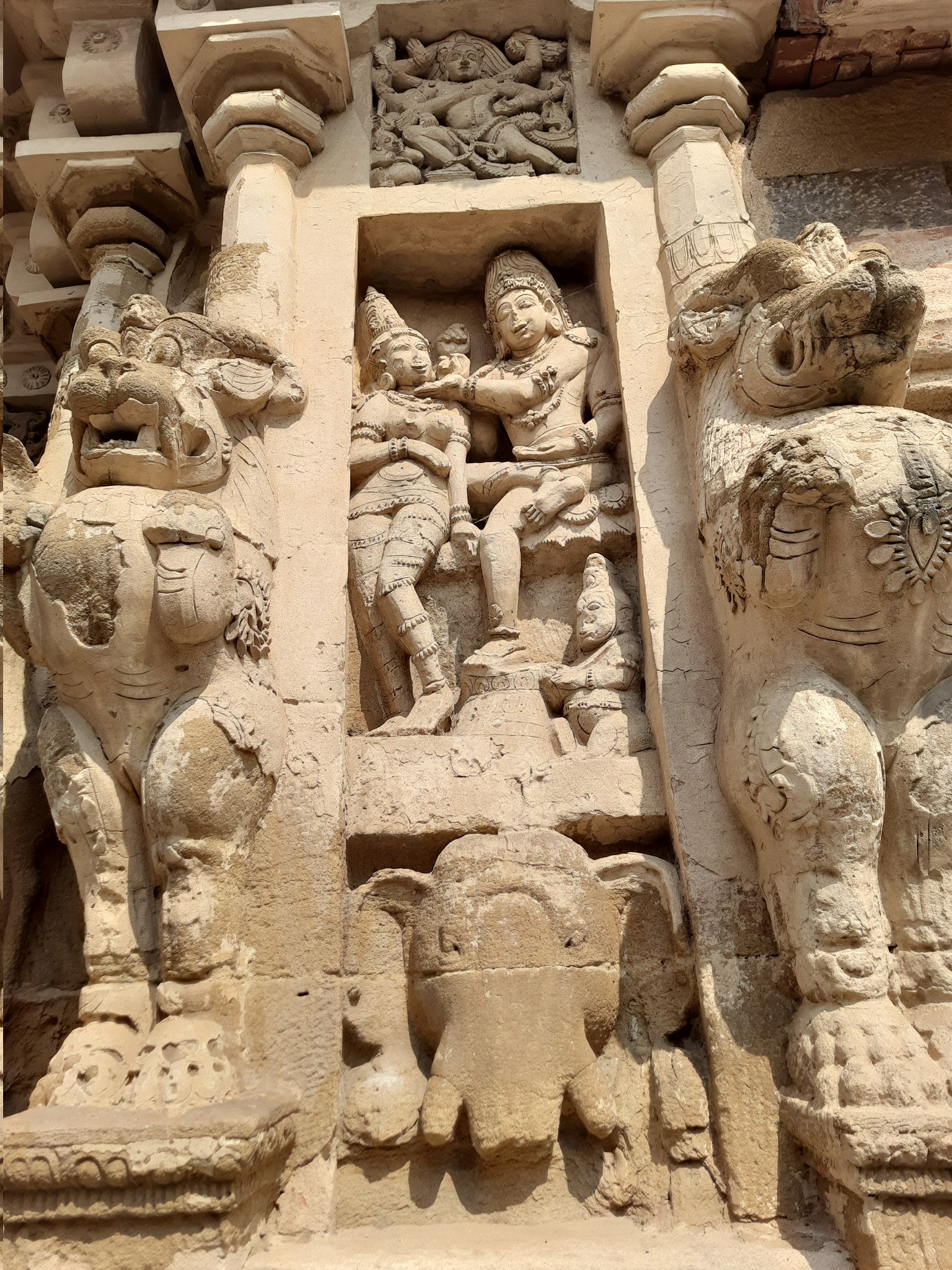 |
| Gauri & Shiva |
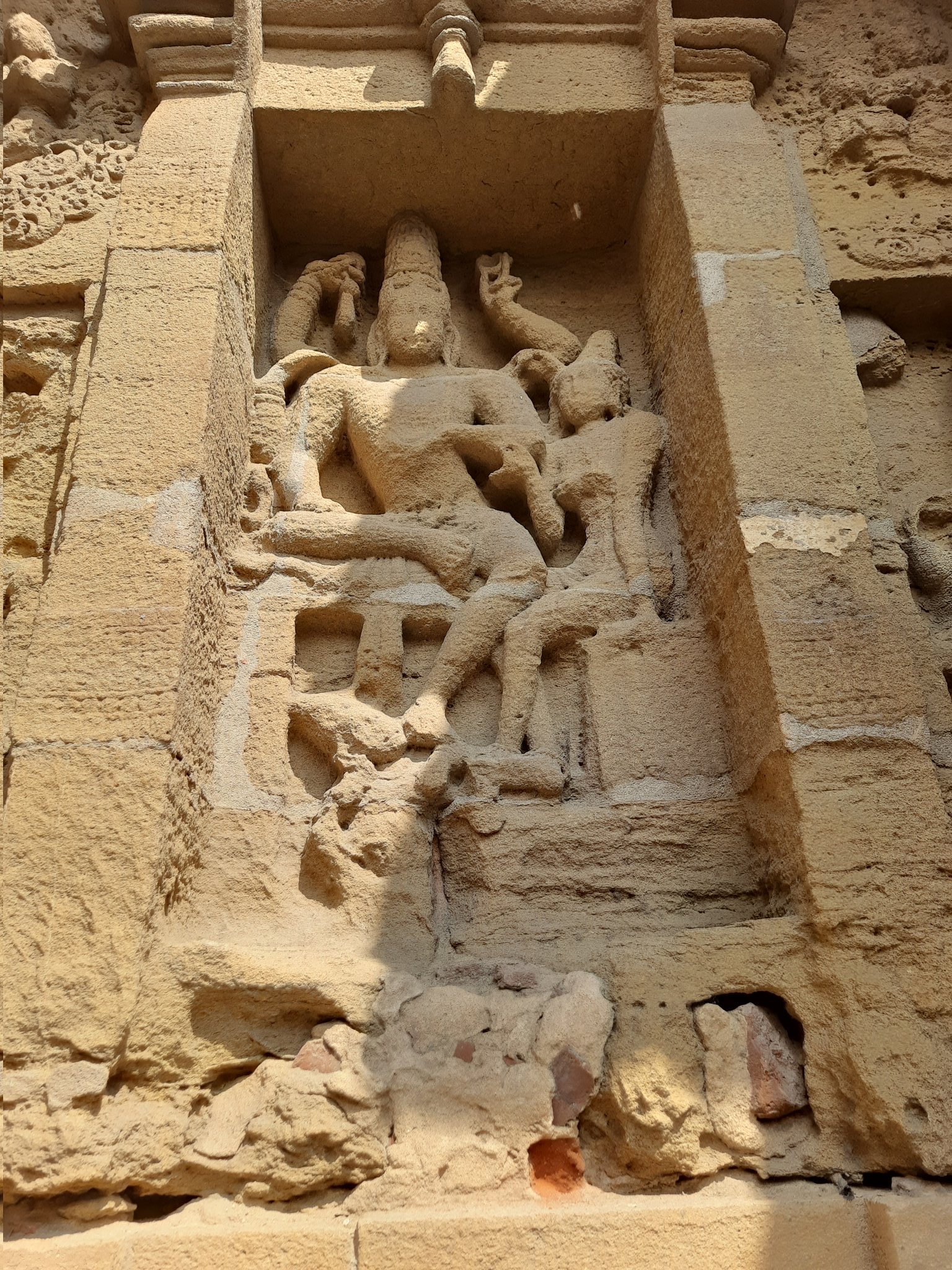 |
| Uma Maheswara |
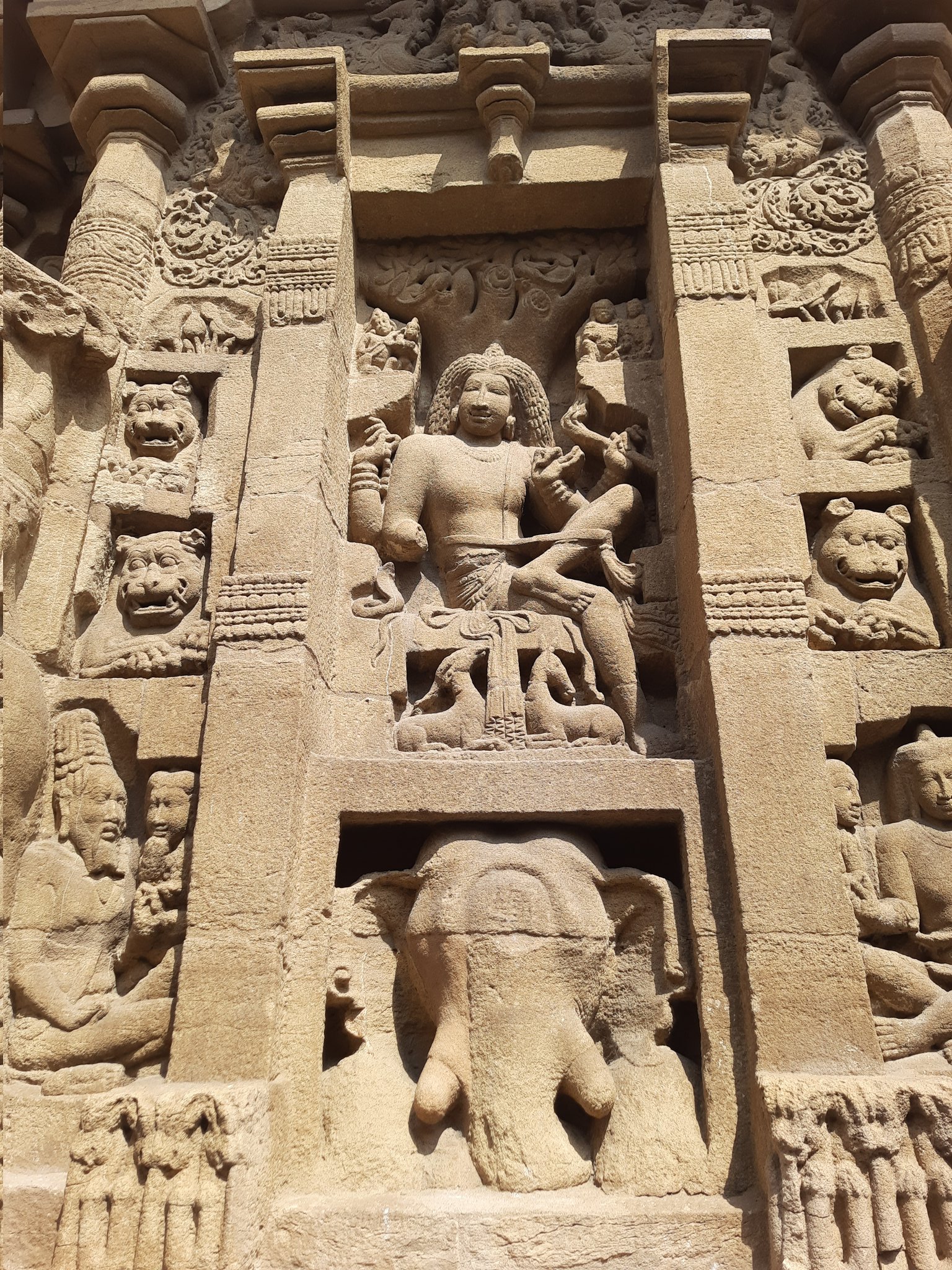 |
| Yoga Dakshinamurthi |
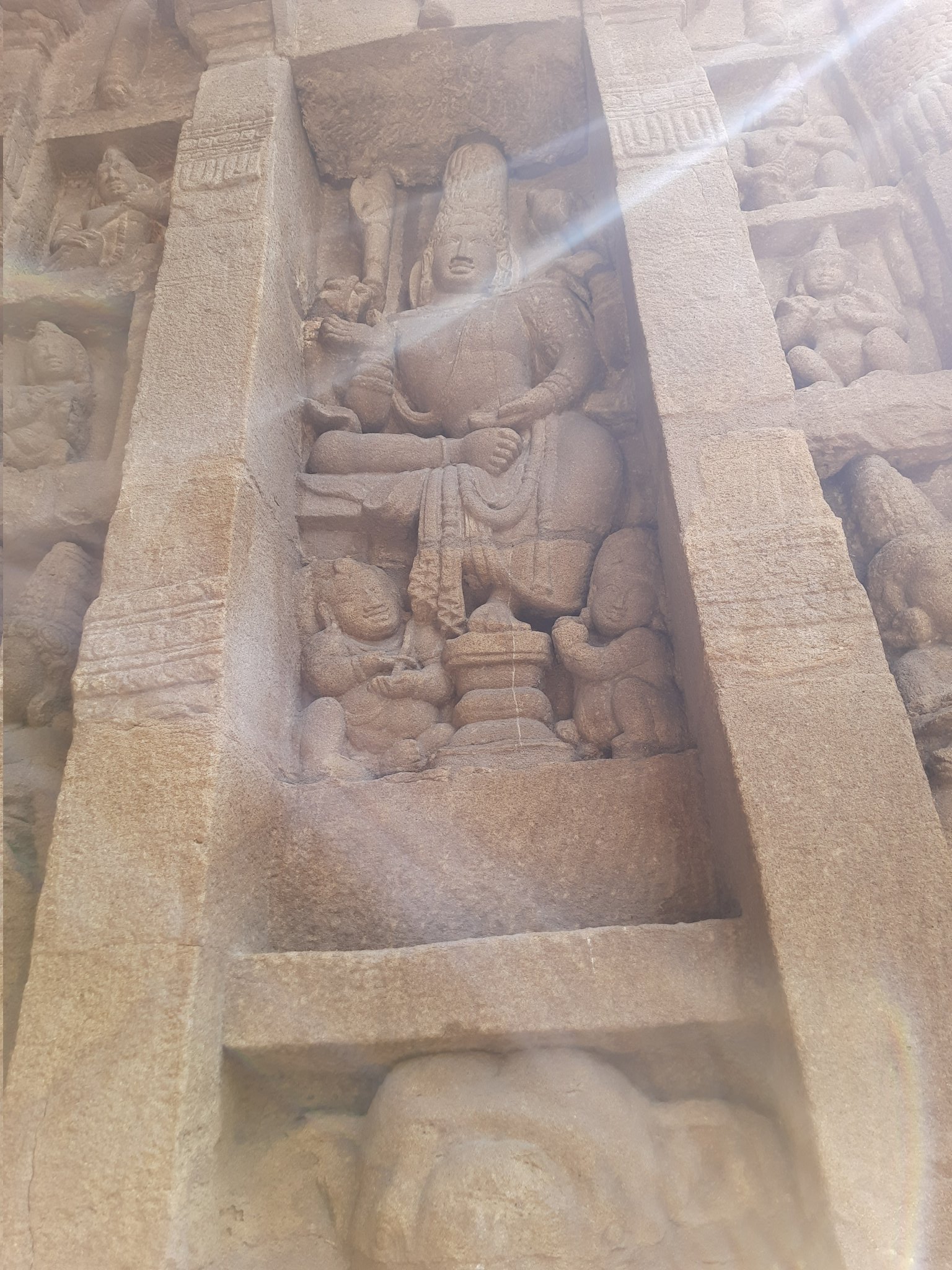 |
| Harihara |
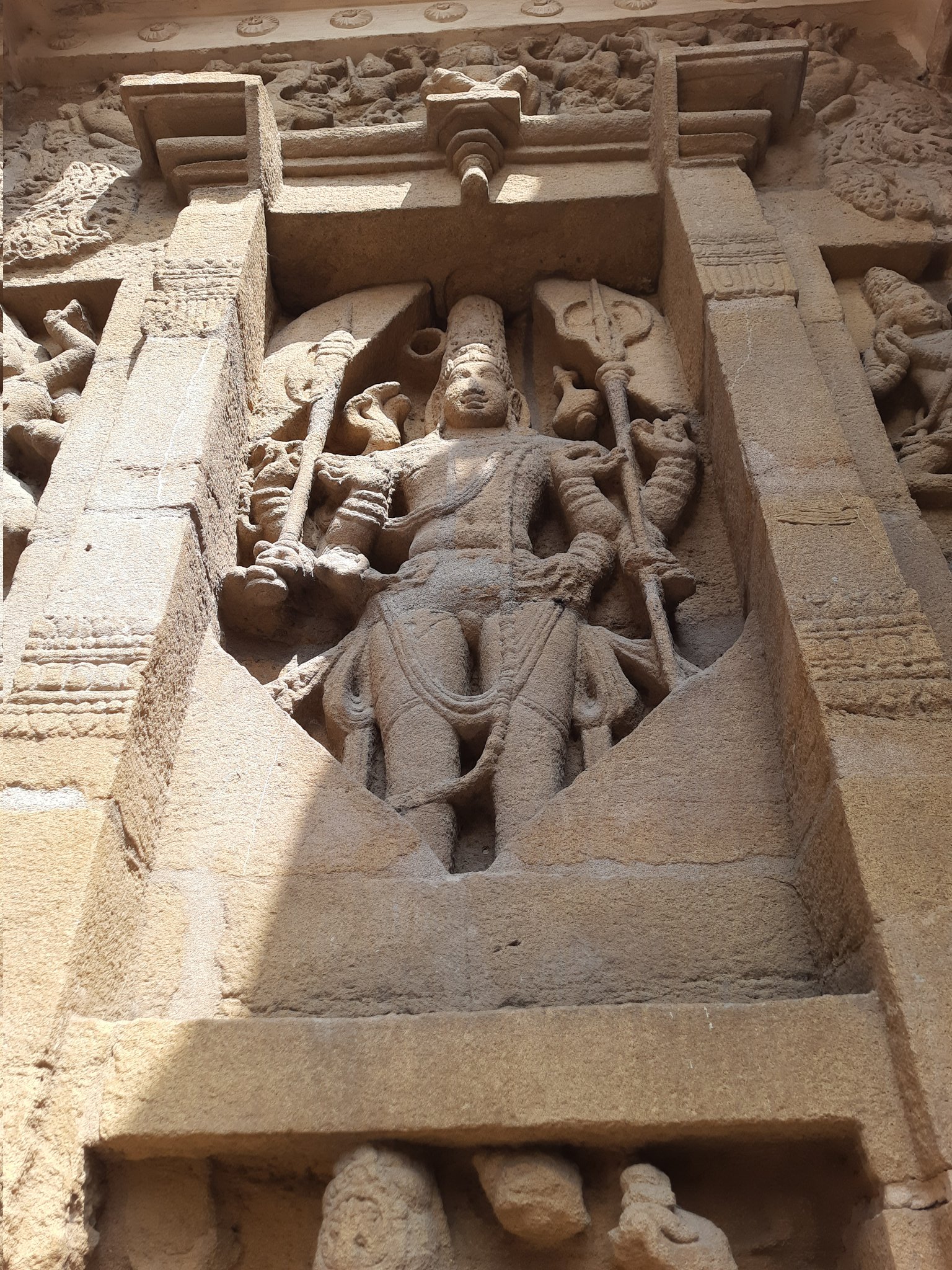 |
| Lingodbhava |
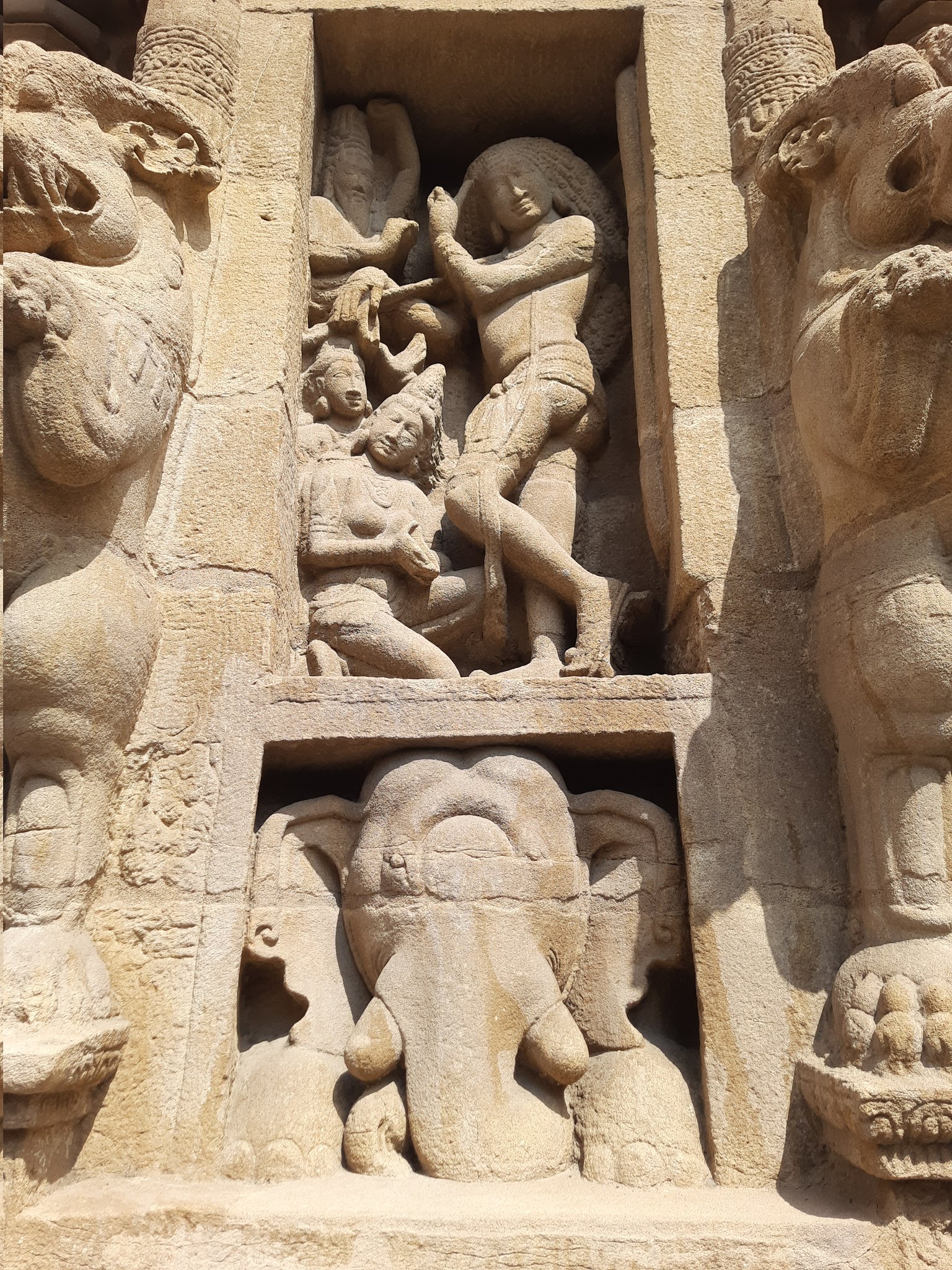 |
| Bhikshatana |
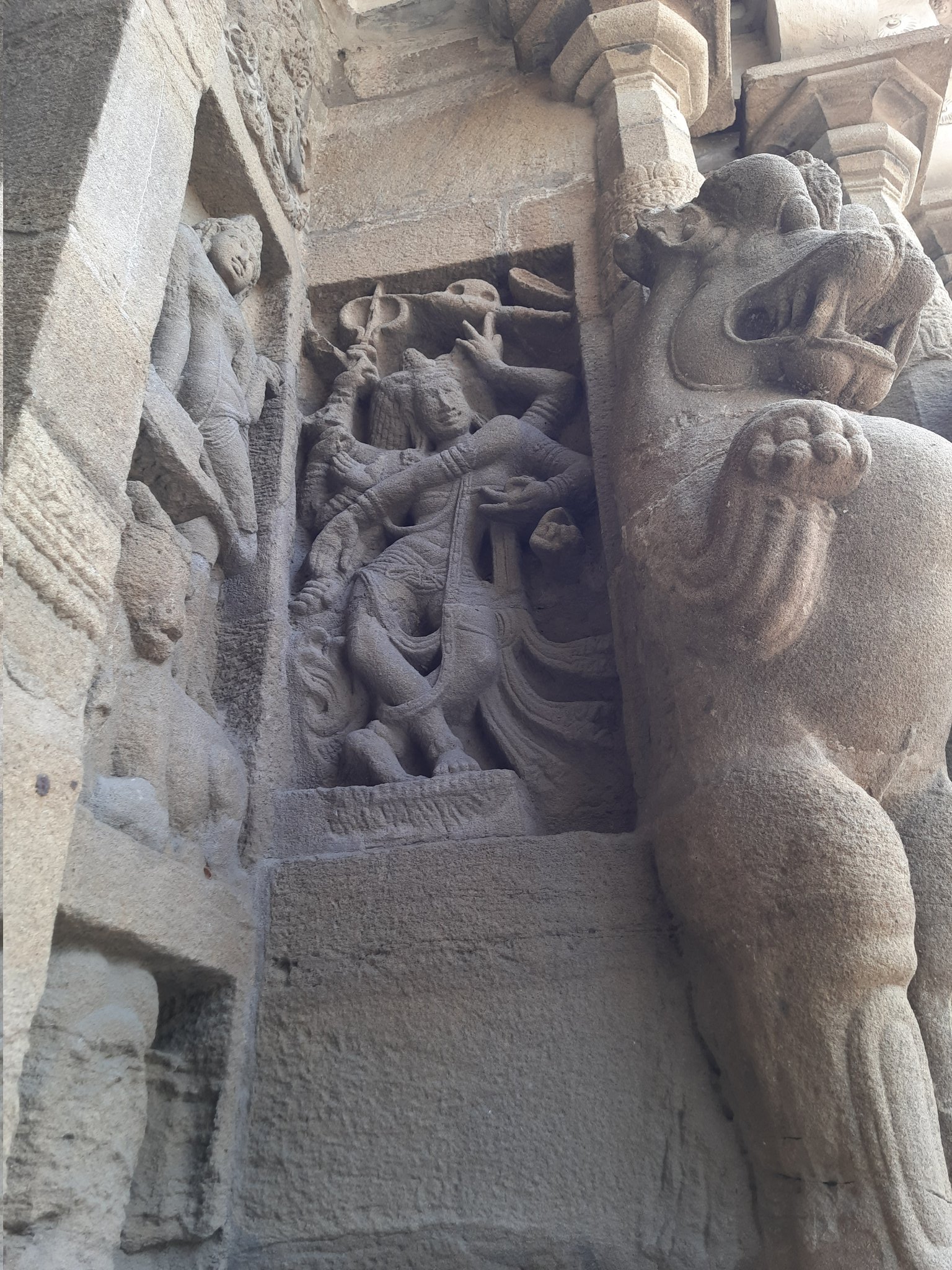 |
| Sandhya Tandava |
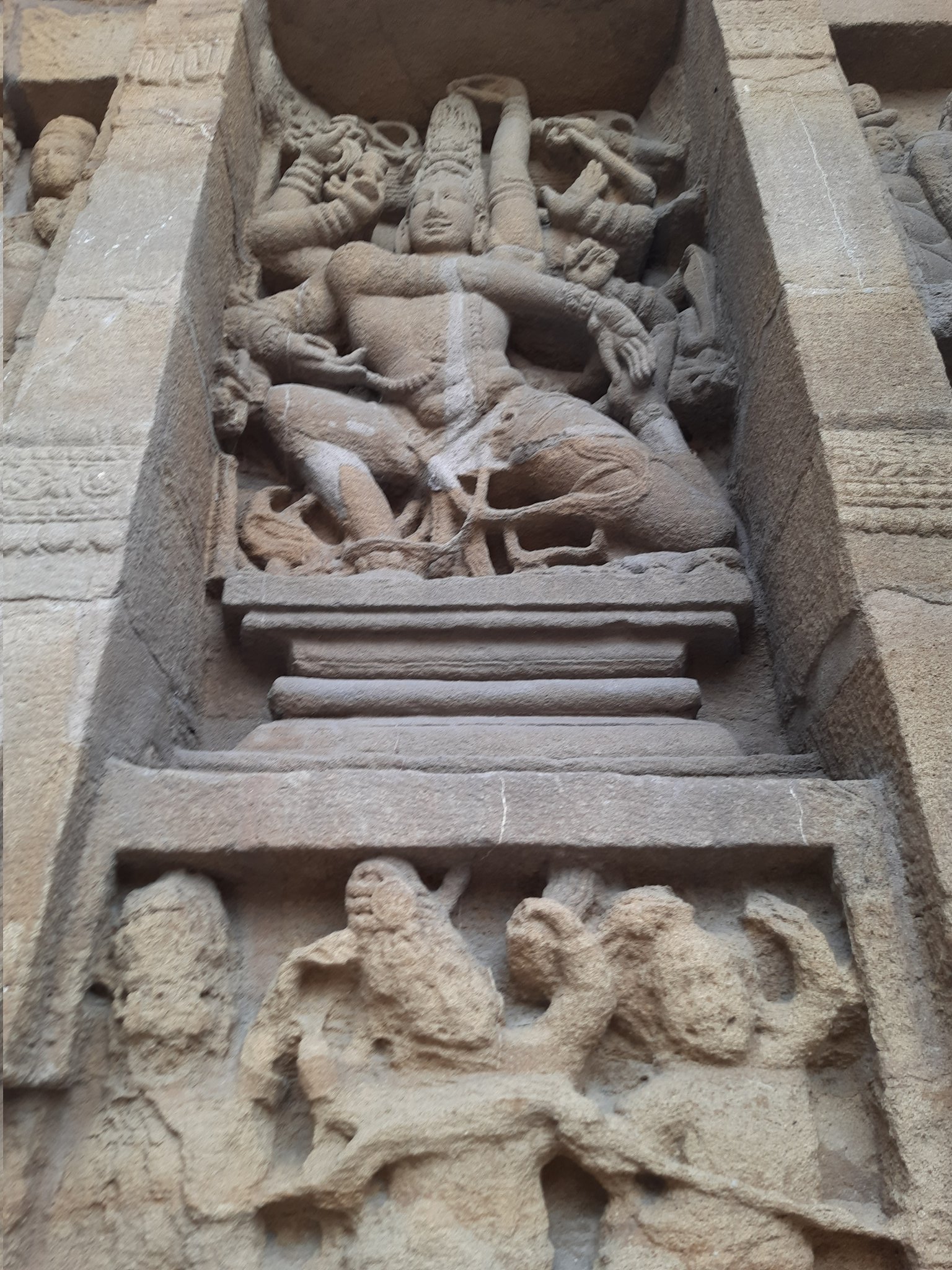 |
| Samhara Tandava |
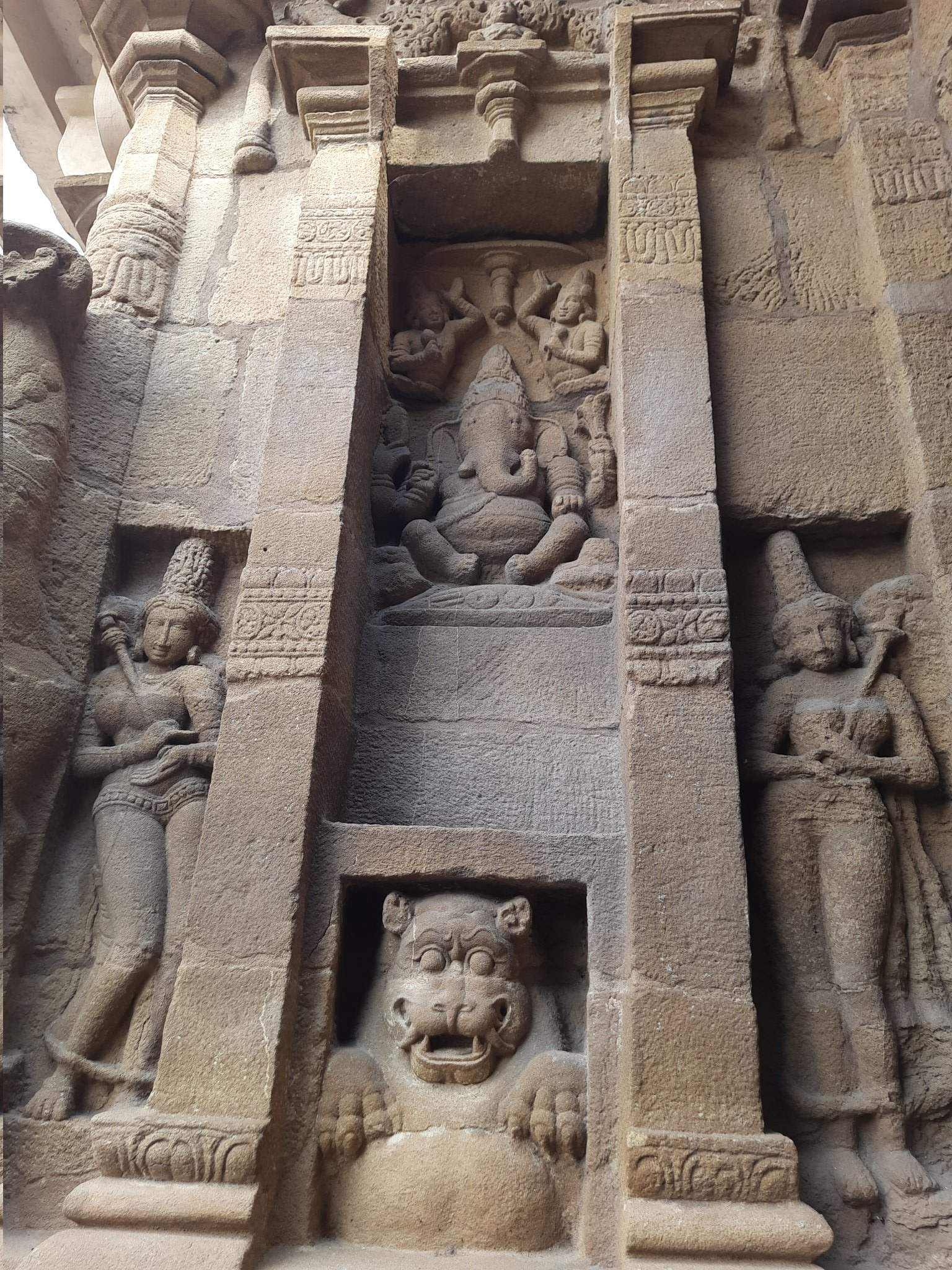 |
| Ganesha |
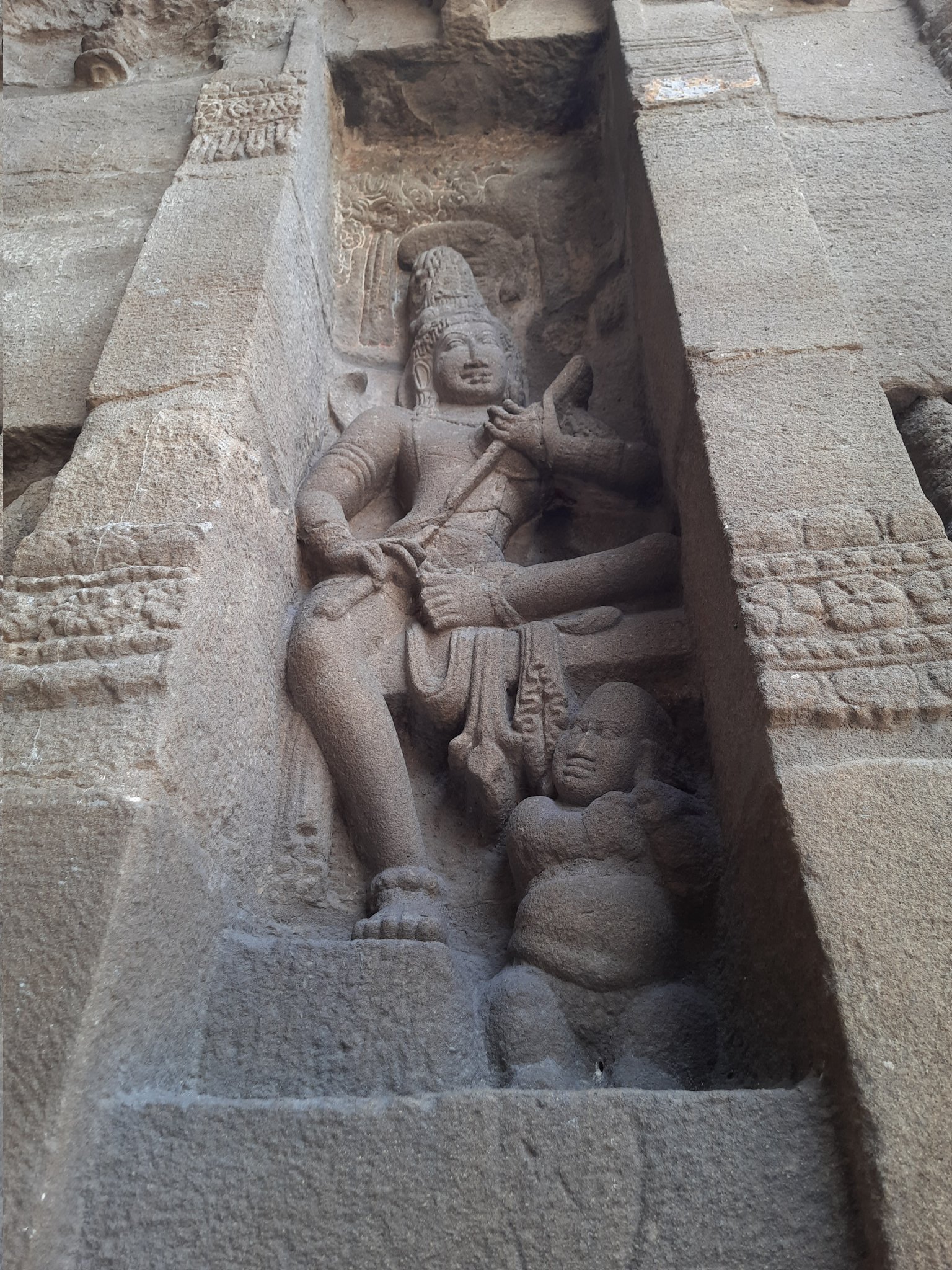 |
| Veenadhara Shiva |
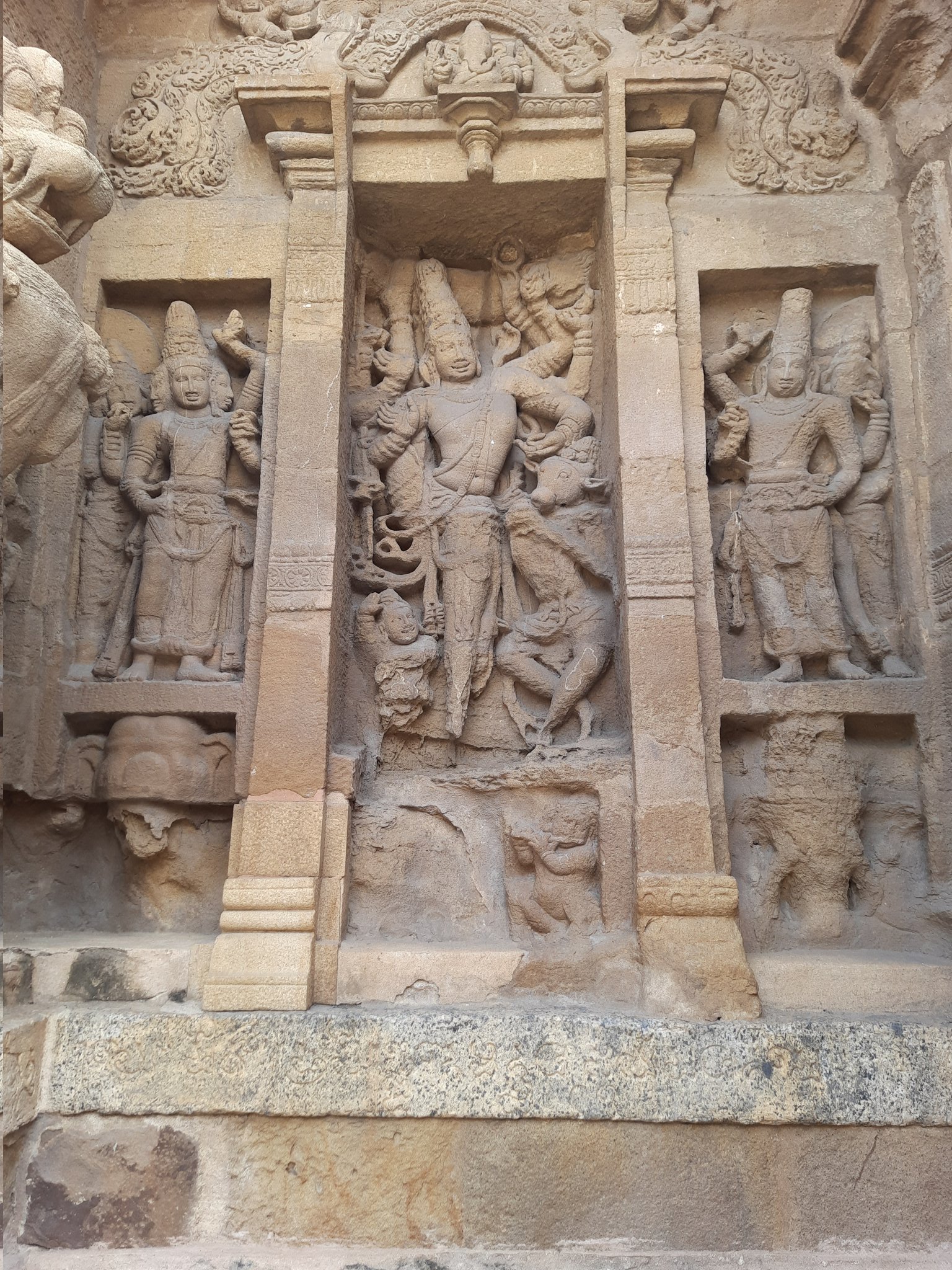 |
| Urdhva Tandava |
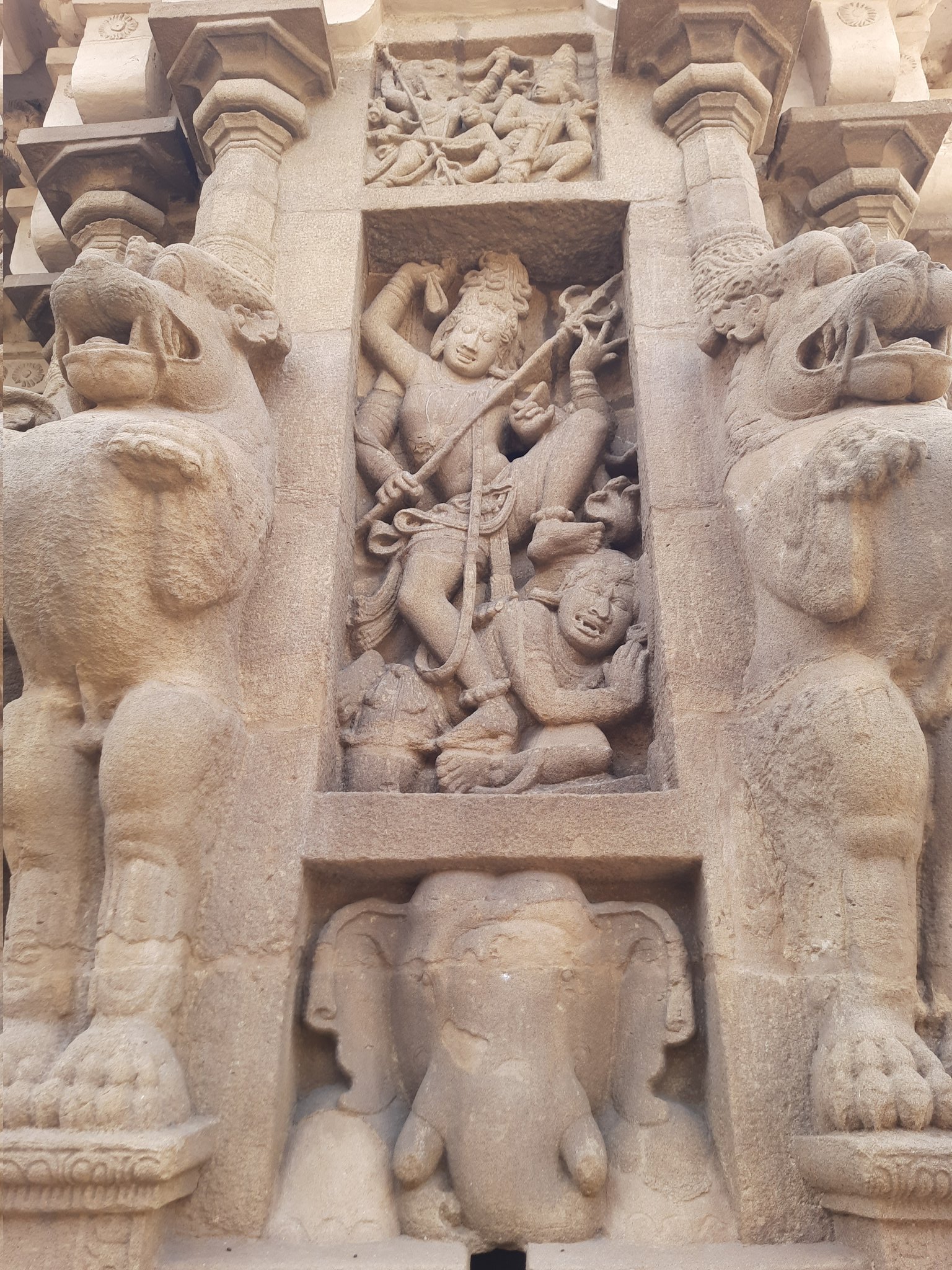 |
| Kalasamhara |
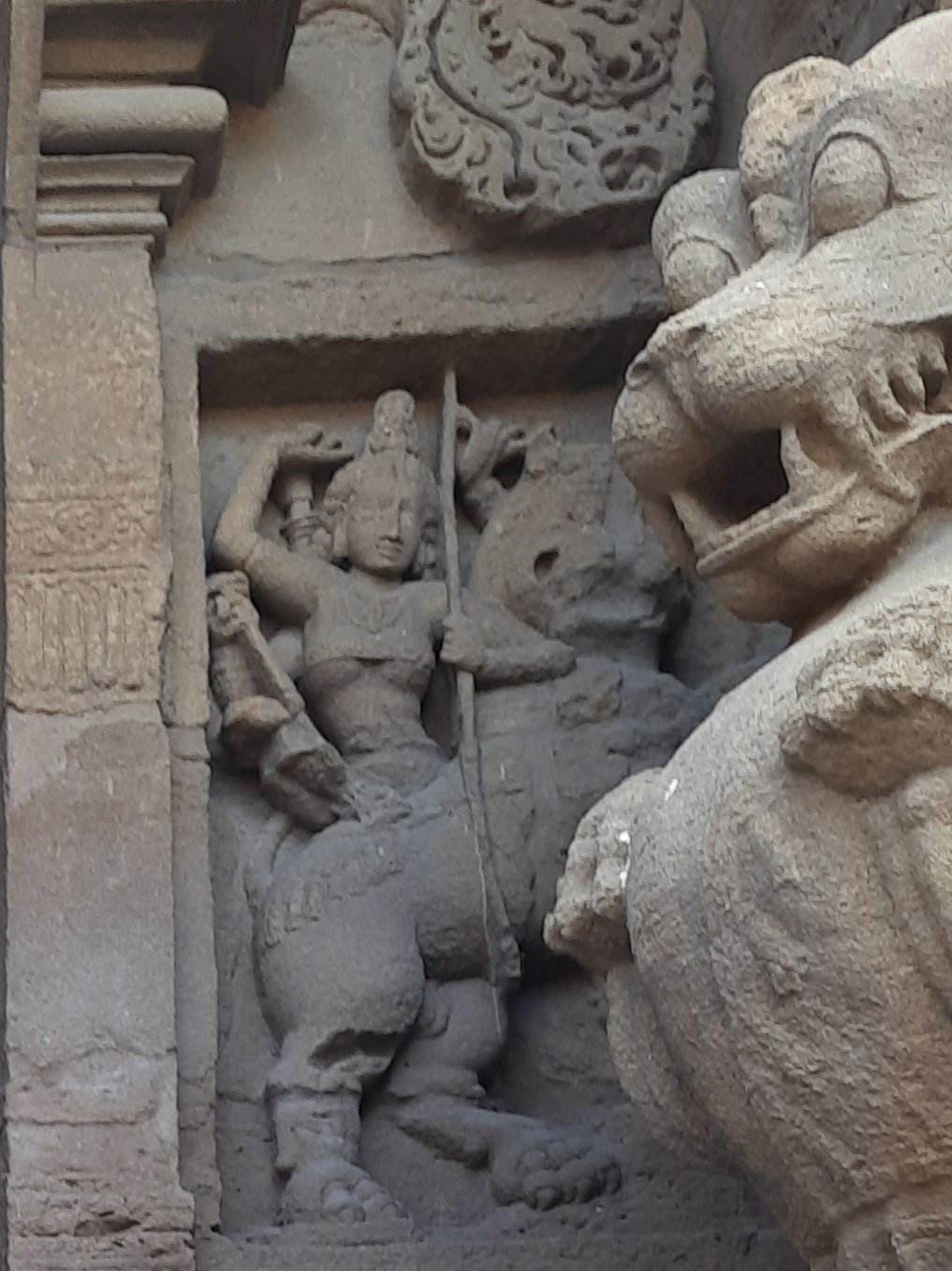 |
| Simhavahini |
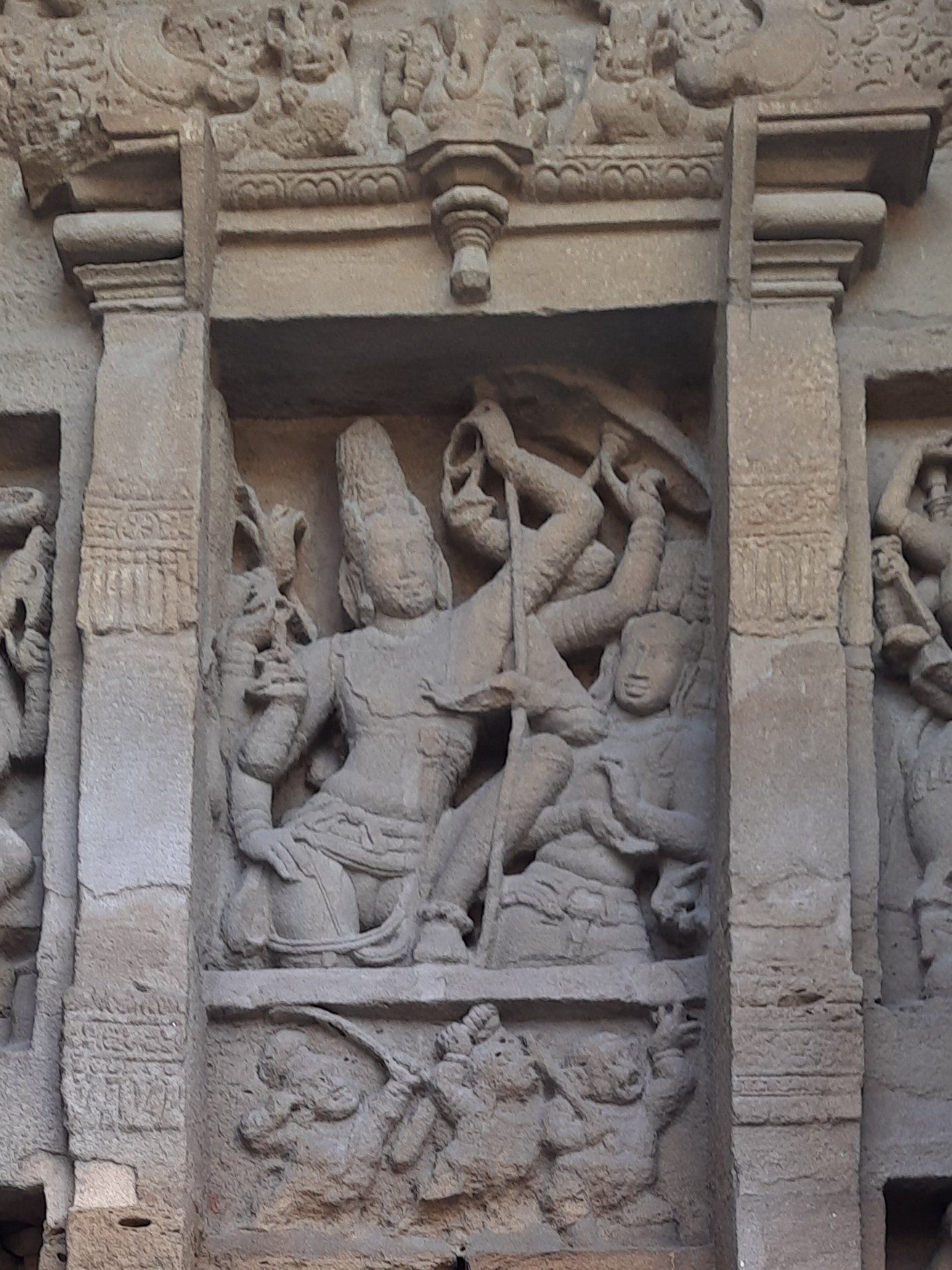 |
| Tripurasamhara |
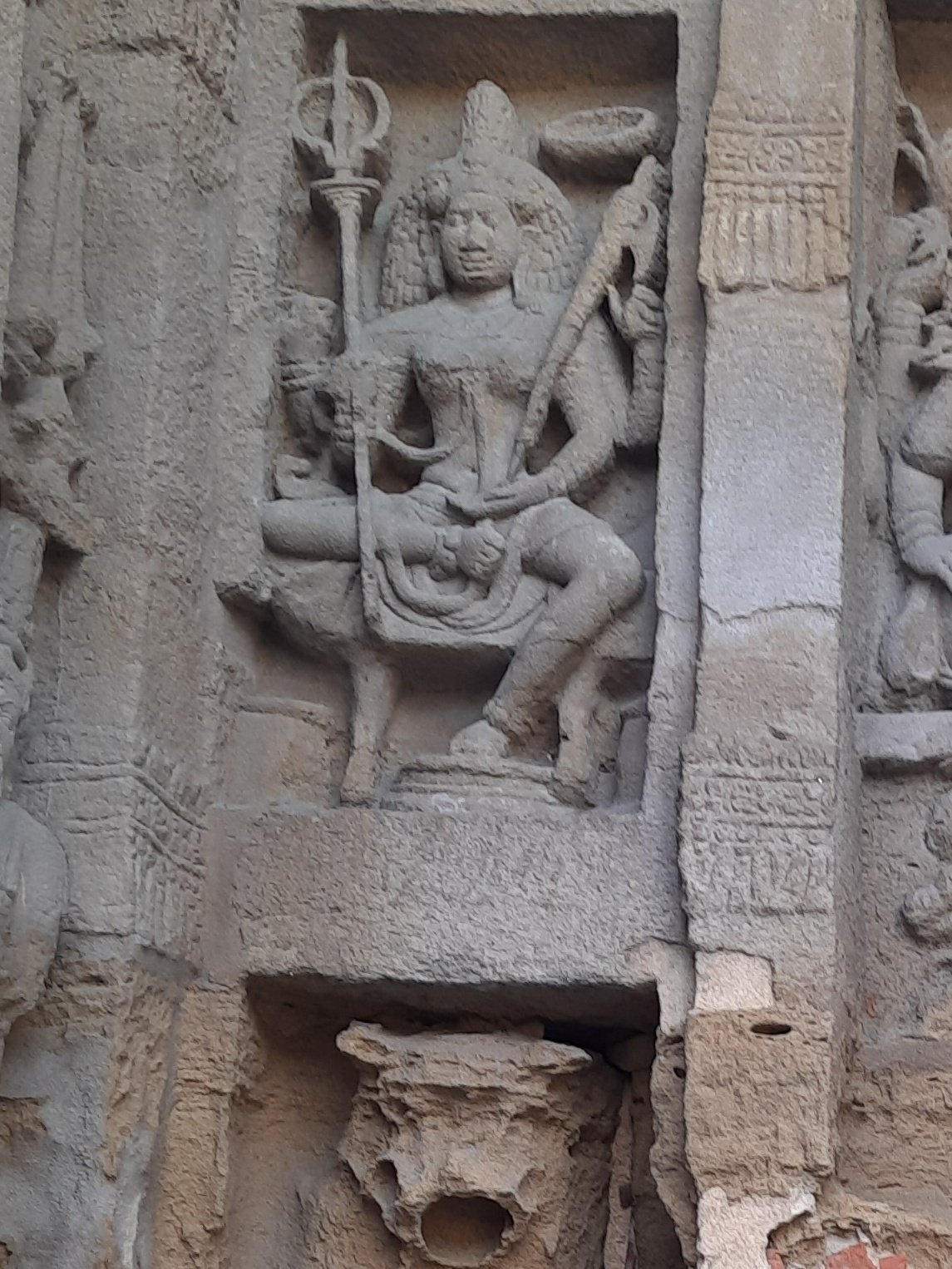 |
| Bhairavi |
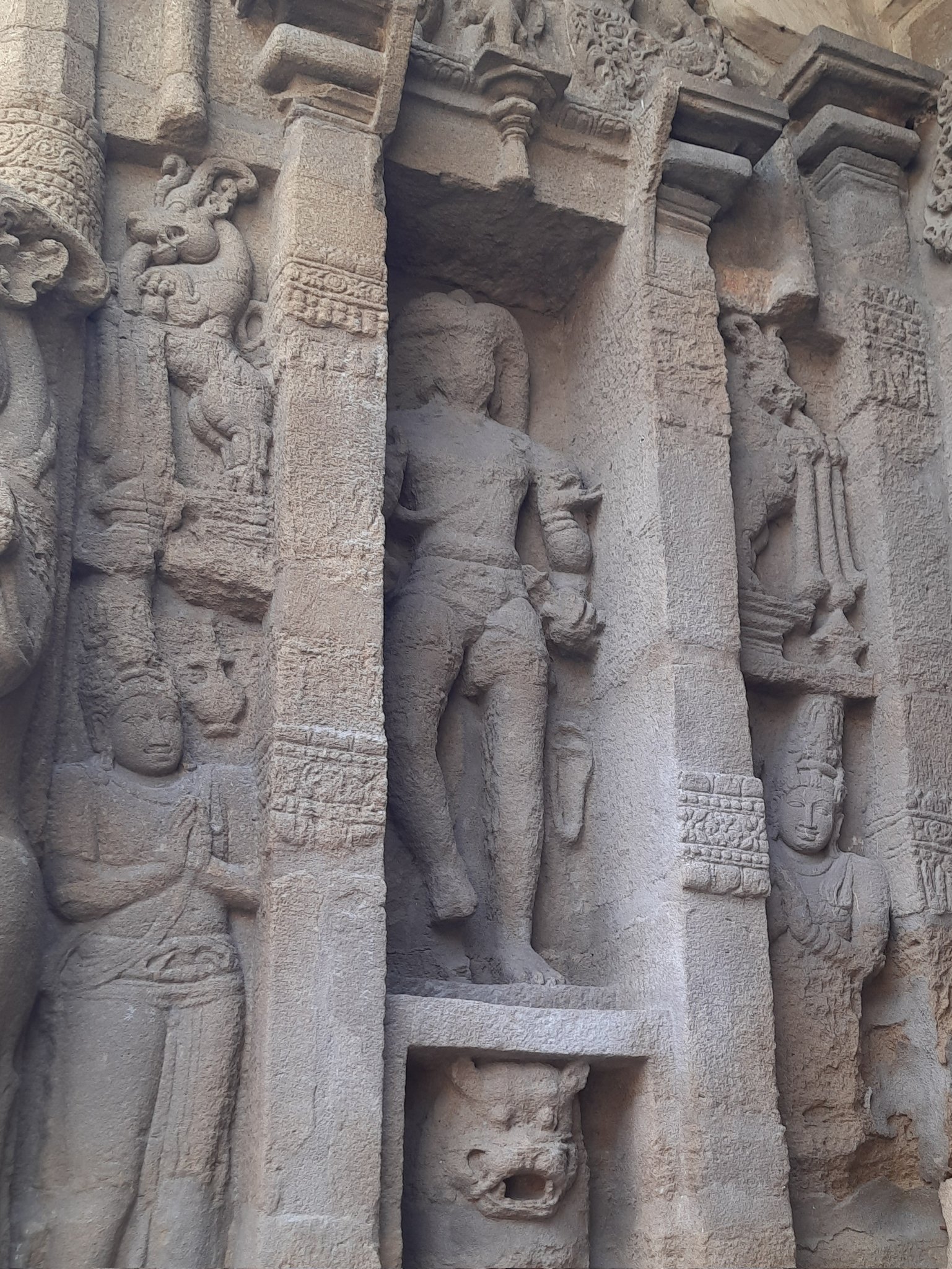 |
| Bhairava |
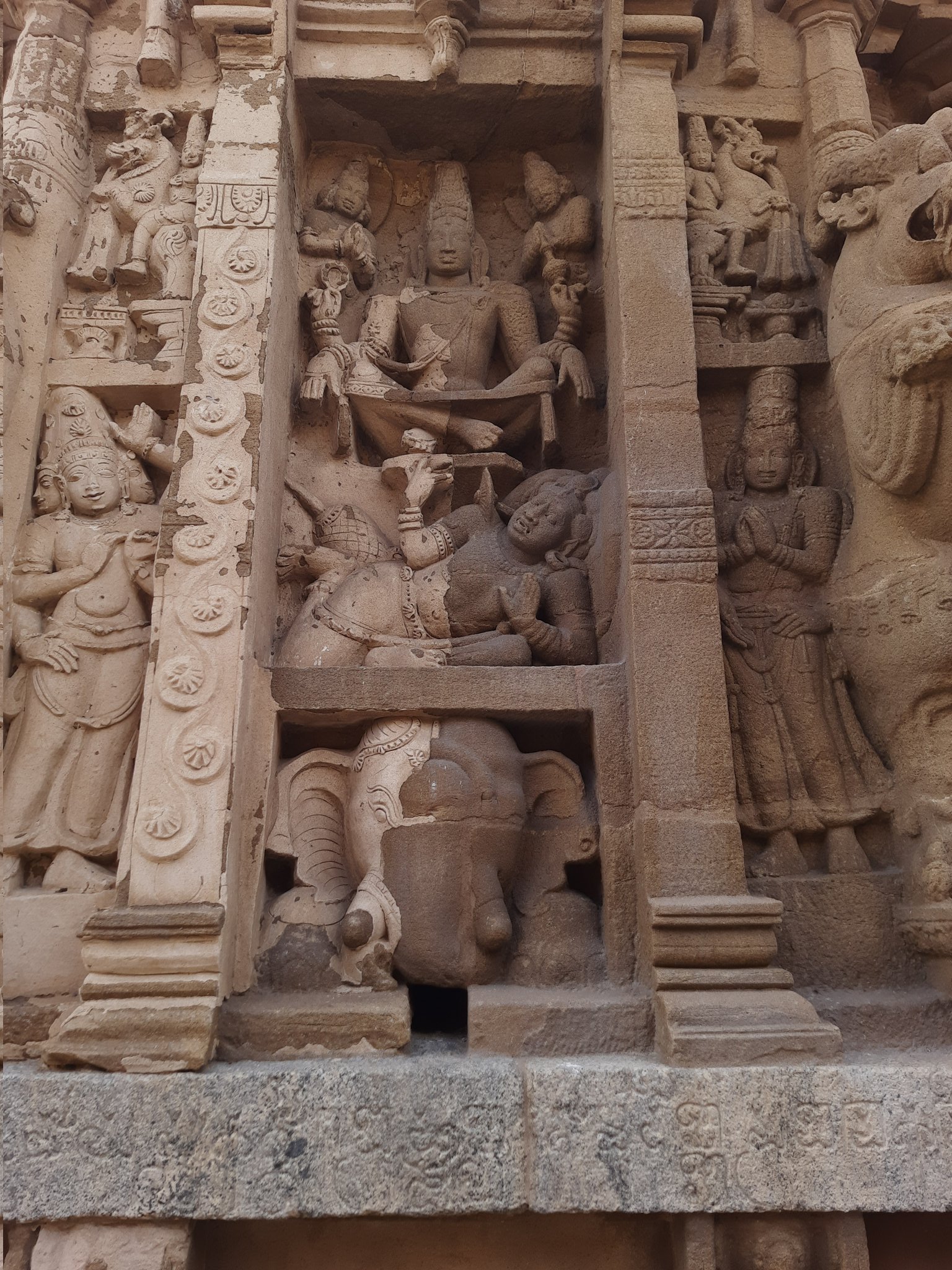 |
| Yogeshamurthi |
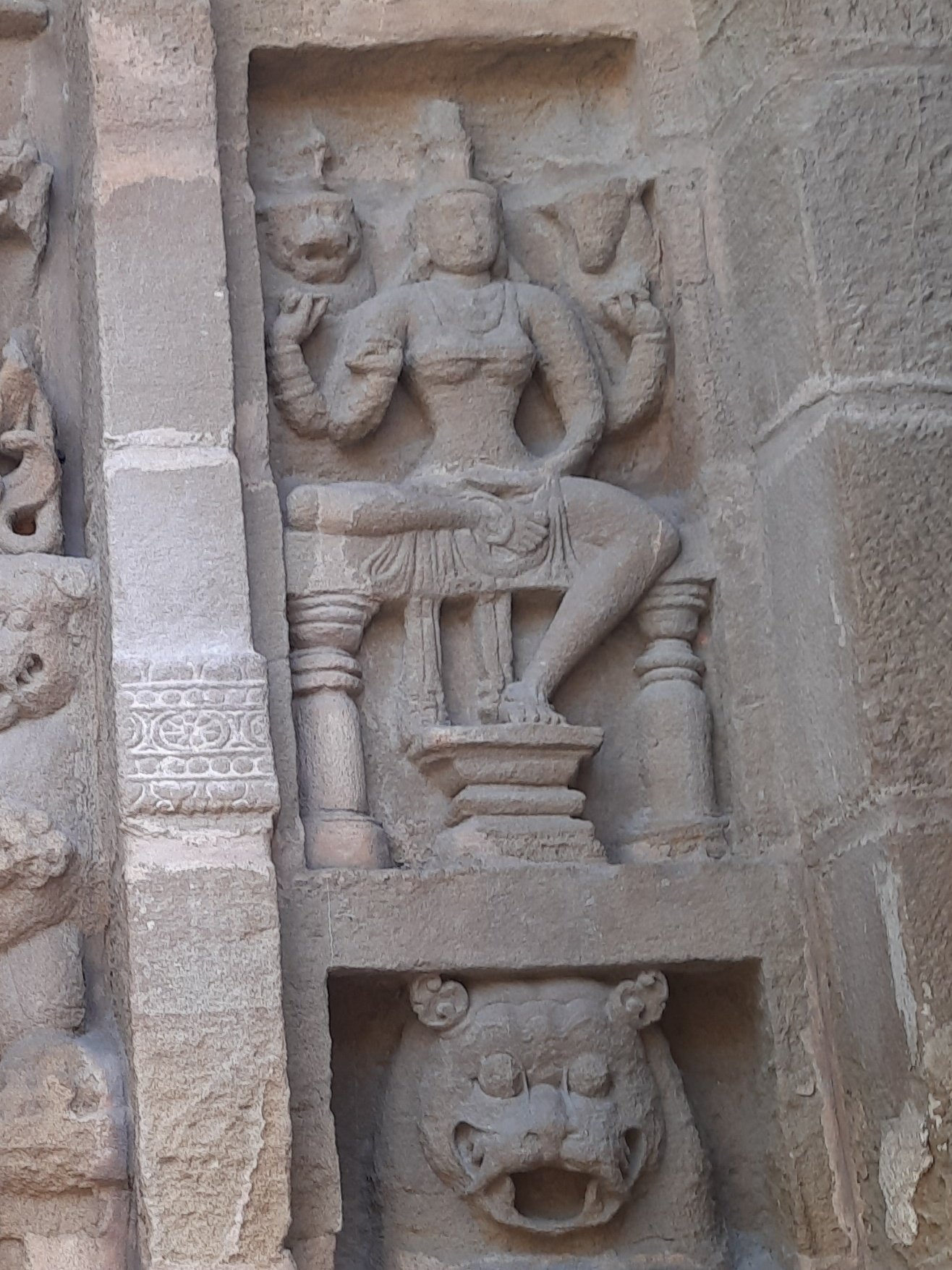 |
| Kaushiki |
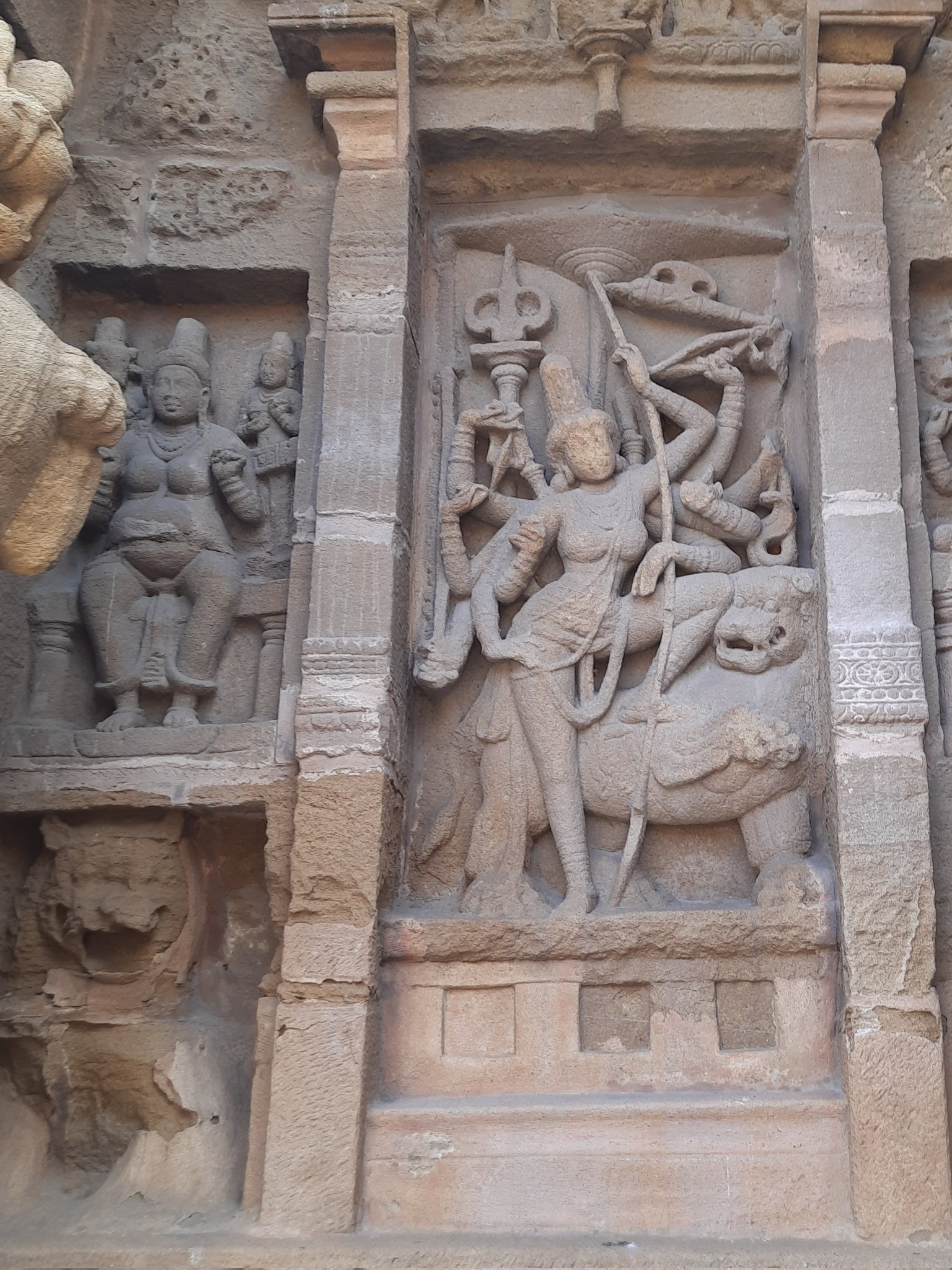 |
| Durga & Jyeshta Devi |
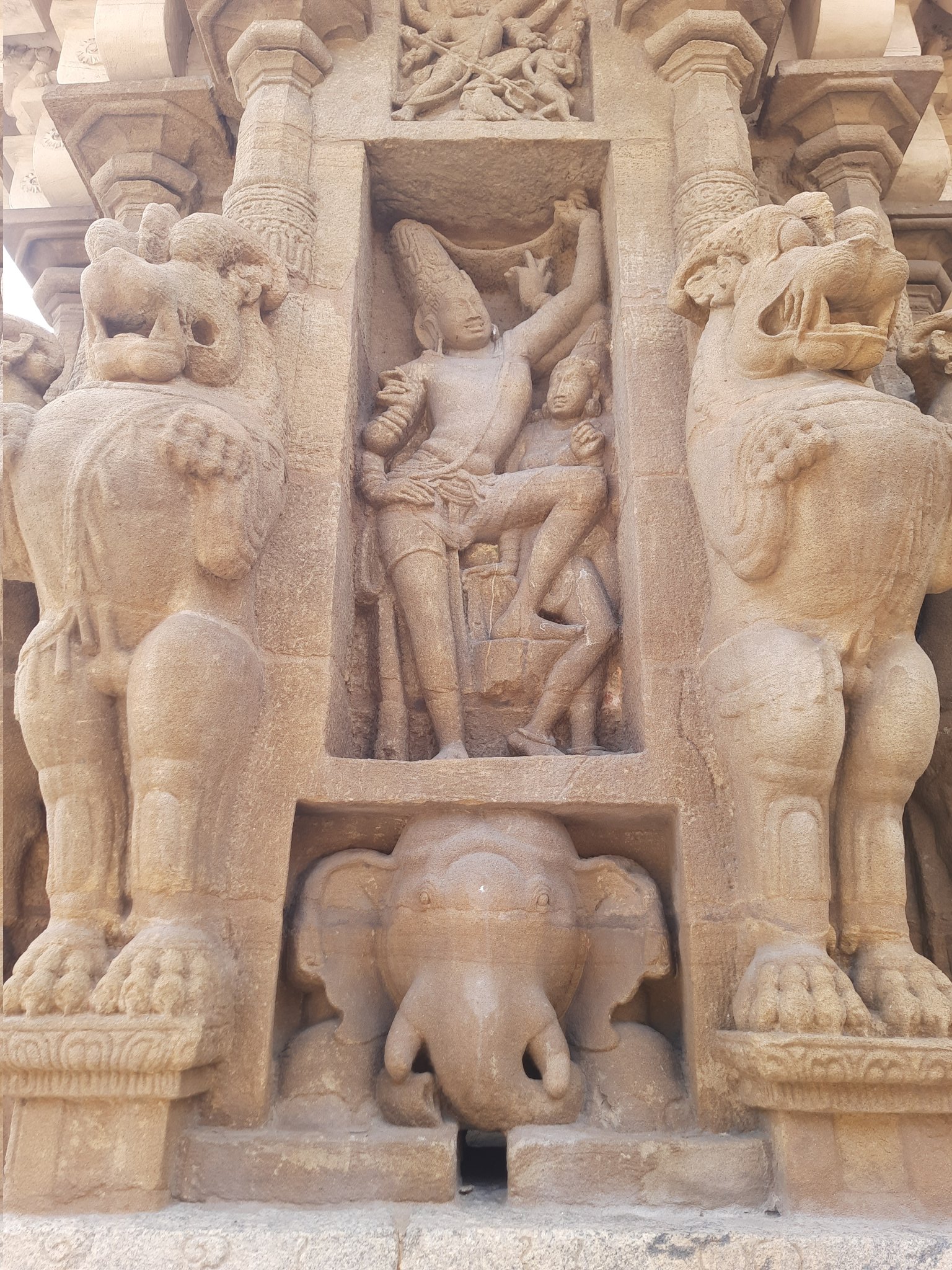 |
| Gangadhara |
Murthis in the Anga Alaya
South East
The main temple has 7 subsidiary temples. They are called Anga alayas. Lets have a look. This is the Anga alaya facing south east. It depicts Shiva performing the Samhara Tandava.
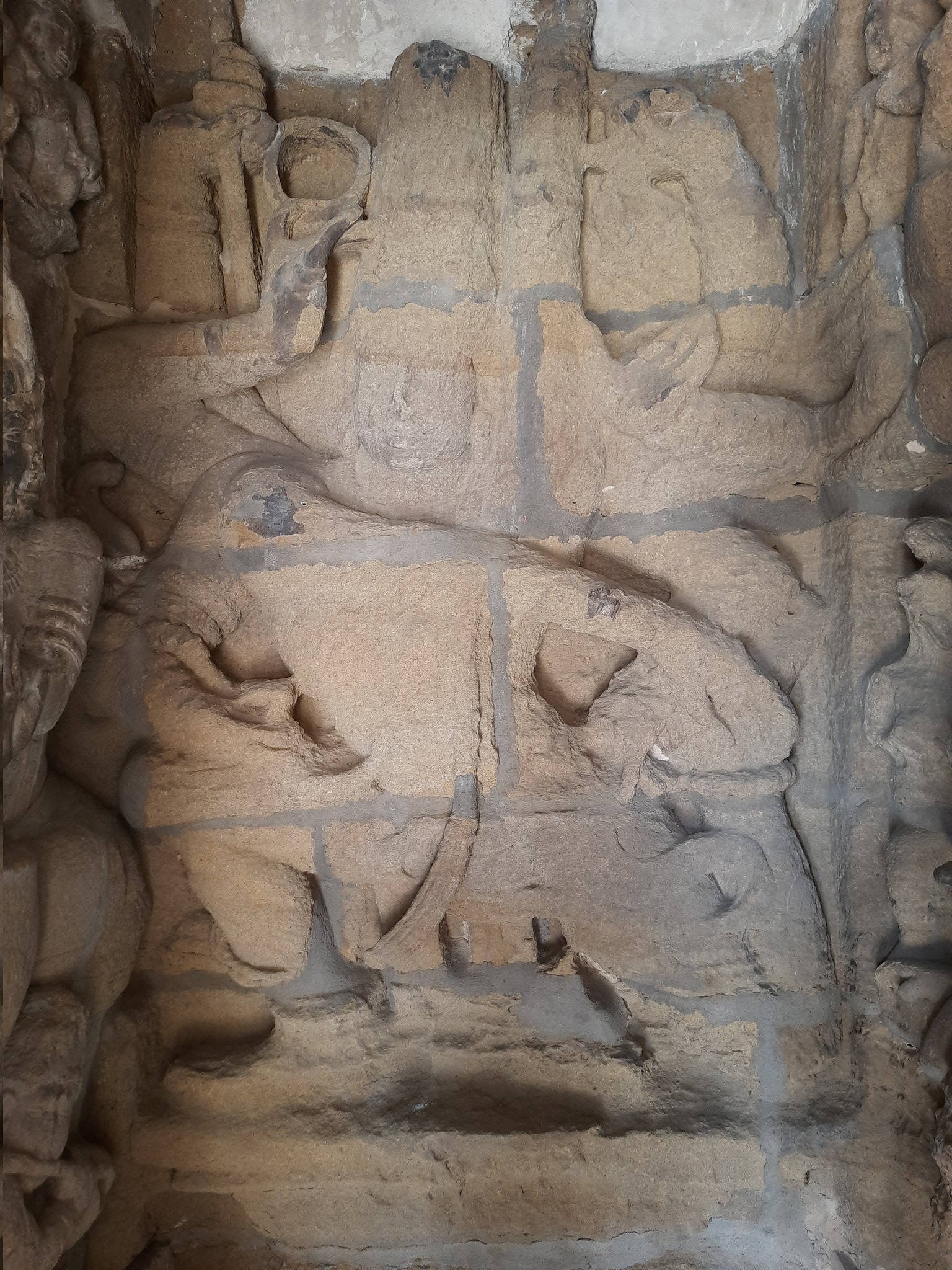 |
| Samhara Tandava |
North East
The Anga alaya facing north east depicts Shiva performing the Samhara Tandava. This time he is being witnessed by devi shown here as Bhavani. It also shows ganas and attendants playing musical instruments.
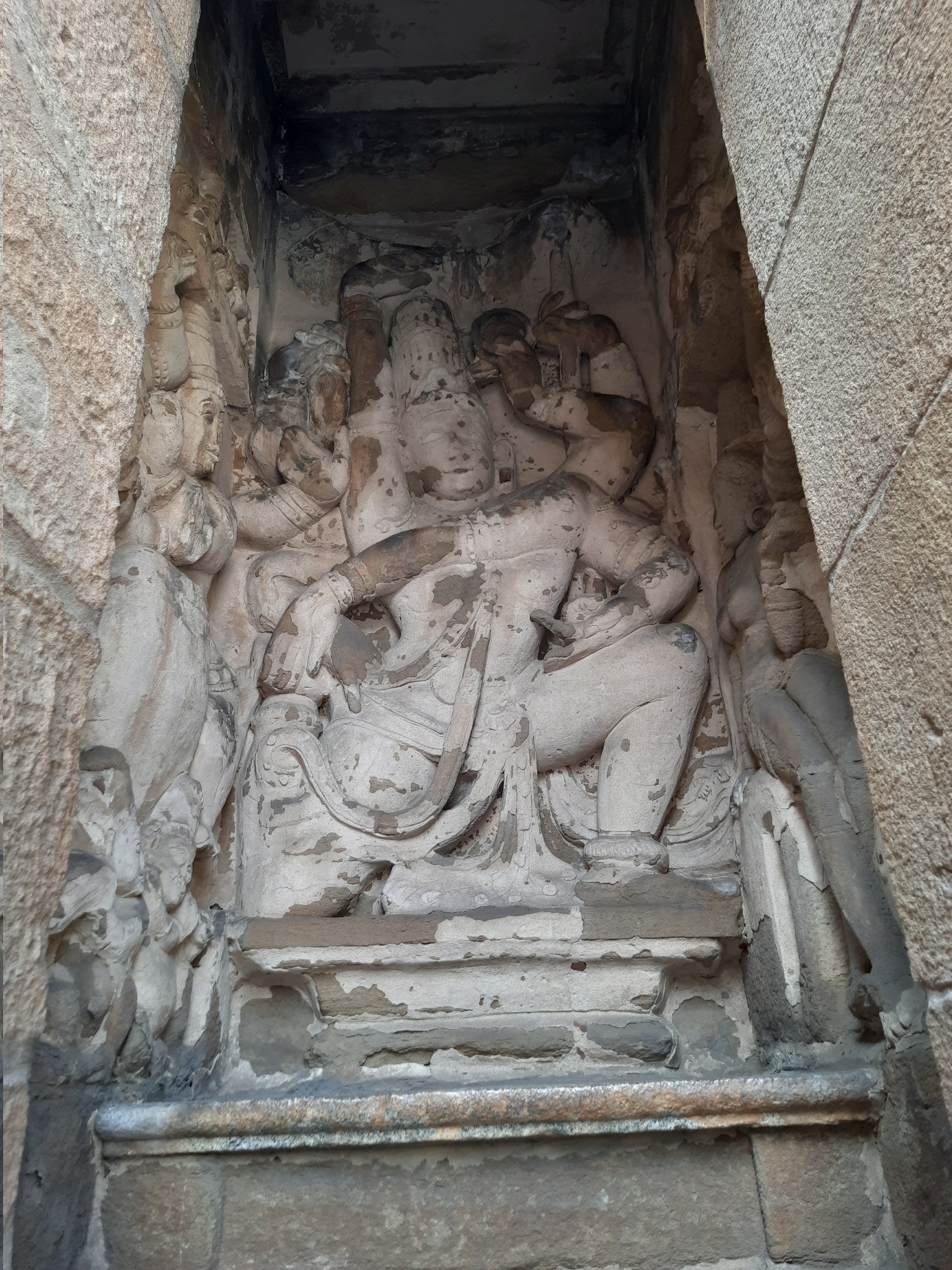 |
| Samhara tandava |
South
This Anga Alaya on the south depicts Somaskanda. On either side are Brahma and Vishnu. Uma and Skanda are seen on the side walls. Nandi is also seen.
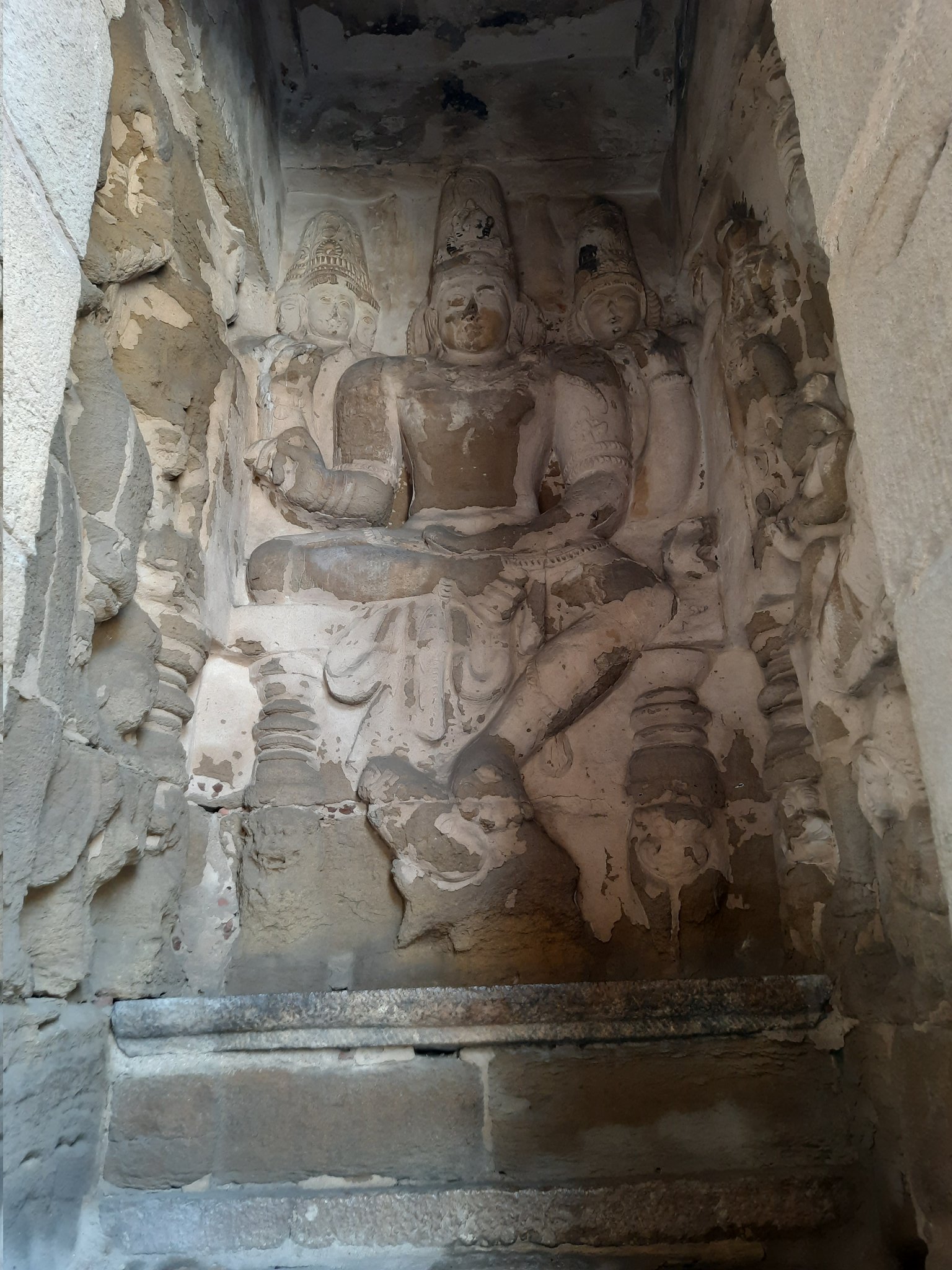 |
| Somaskanda |
North
The Anga alaya facing north depicts Shiva flanked on either side by Brahma and Vishnu. Uma is seen on the right wall.
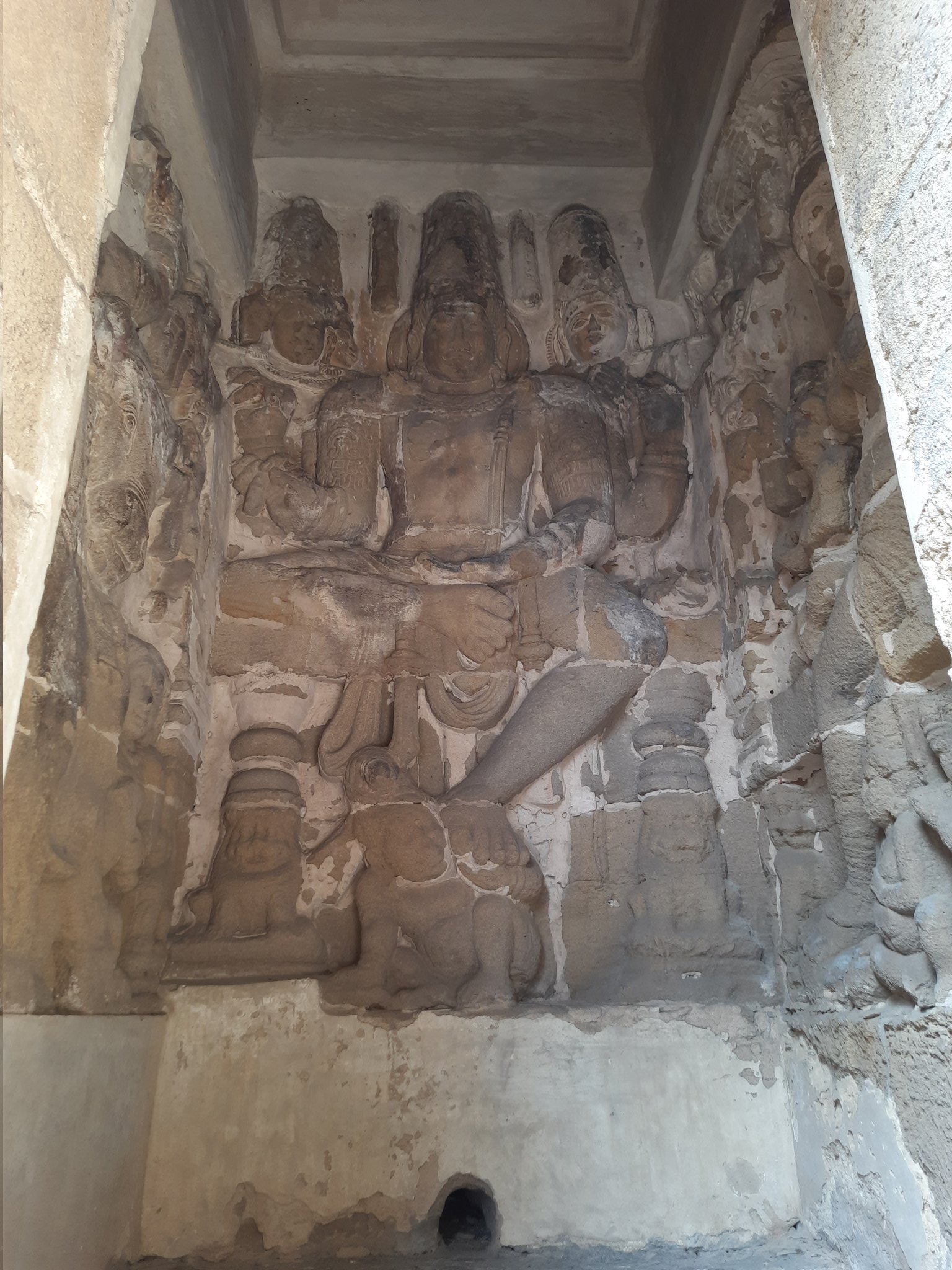 |
| Trimurthi |
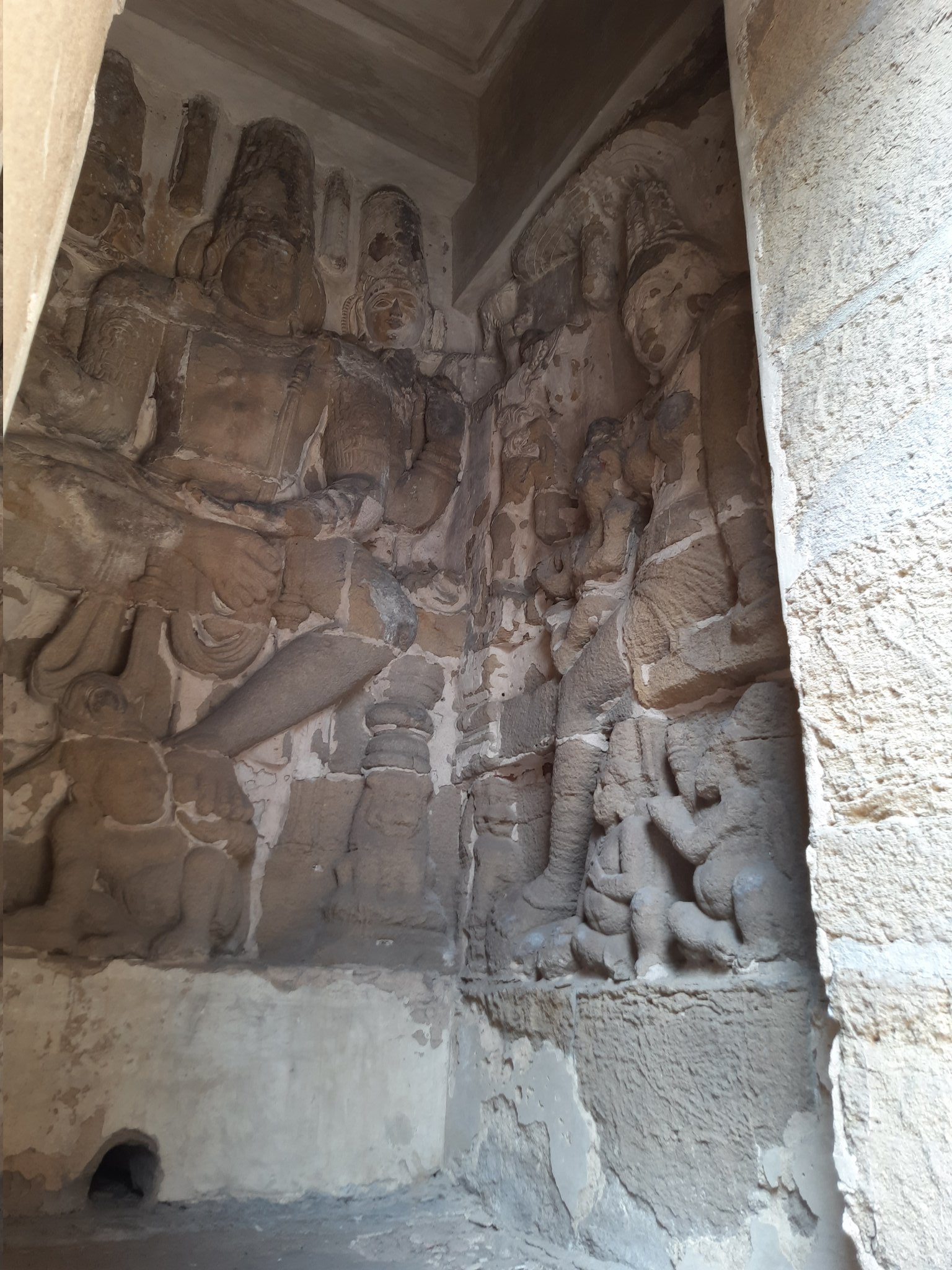 |
| Uma |
North
This anga alaya on the north west shows Shiva as Bhikshatana. He is accompanied by wives of various Rishis.
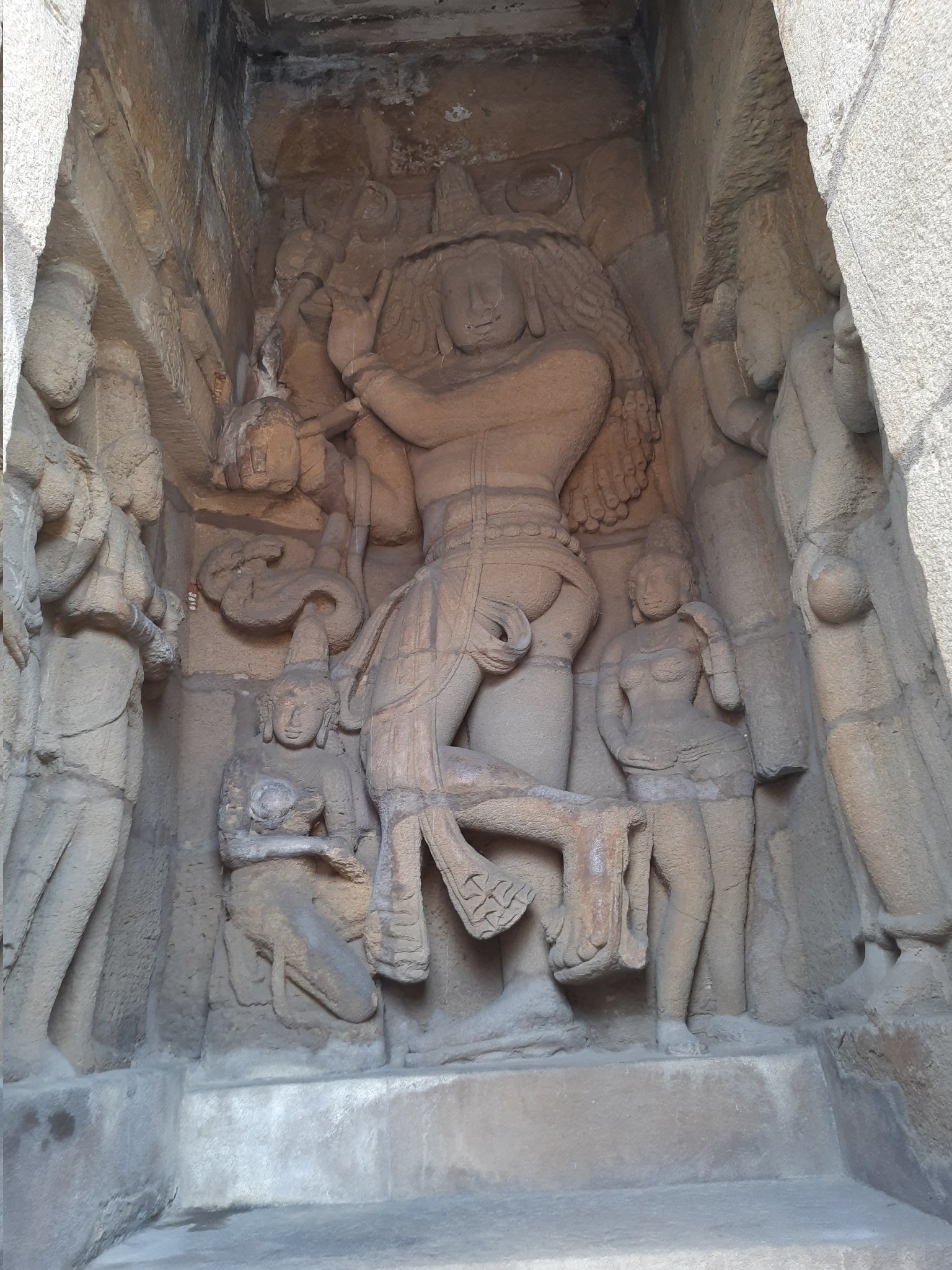 |
| Bhikshatana |
West
This Anga Alaya on the west, at the back of the Garbhagirha shows Shiva as Gangadhara.
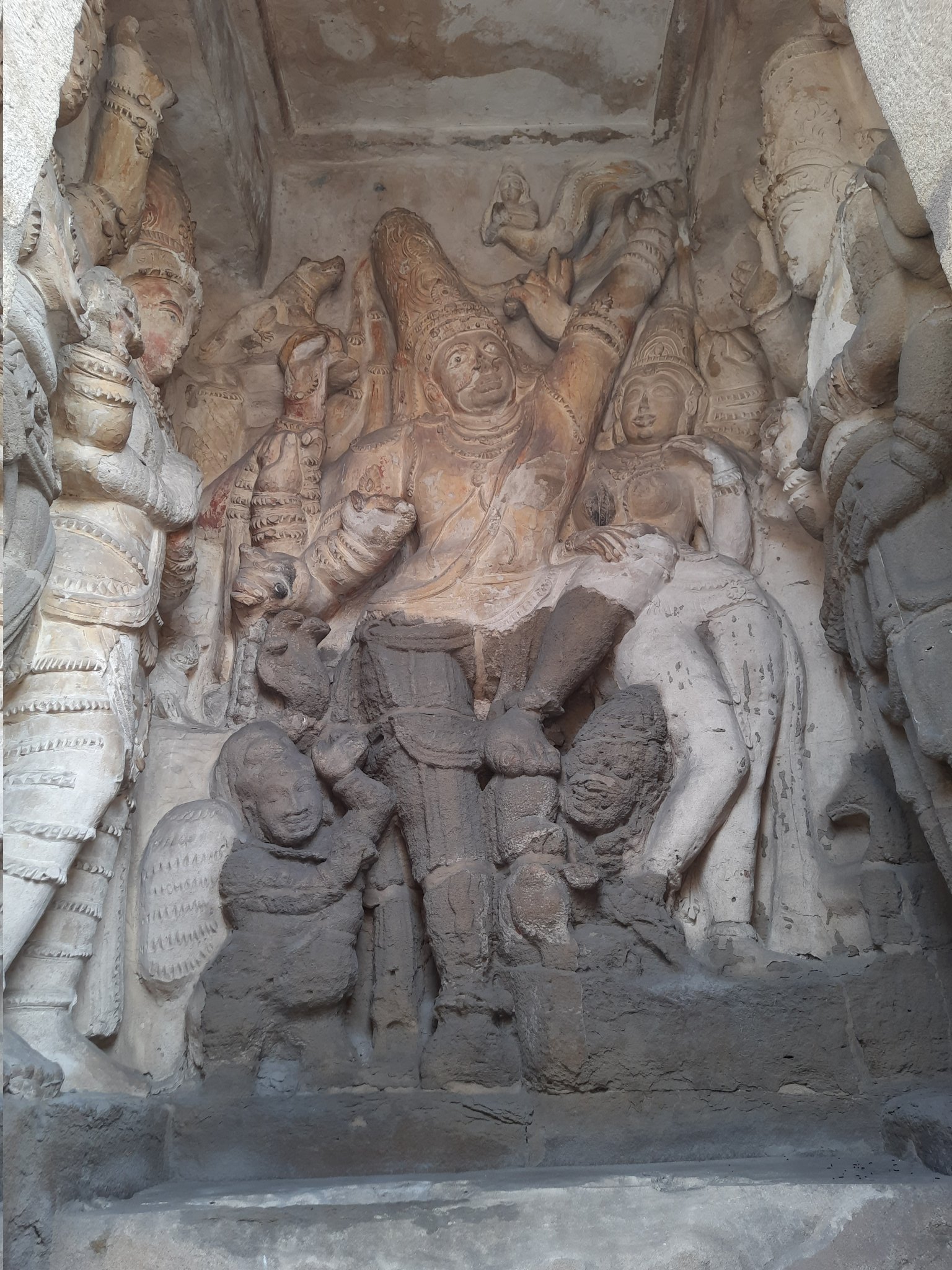 |
| Gangadhara |
North West
Lastly this Anga Alaya in the north west direction shows Shiva as Tripurantaka as he sets out riding his chariot to destroy the cities of Tripurasura. The wheels of the chariot are also visible here.
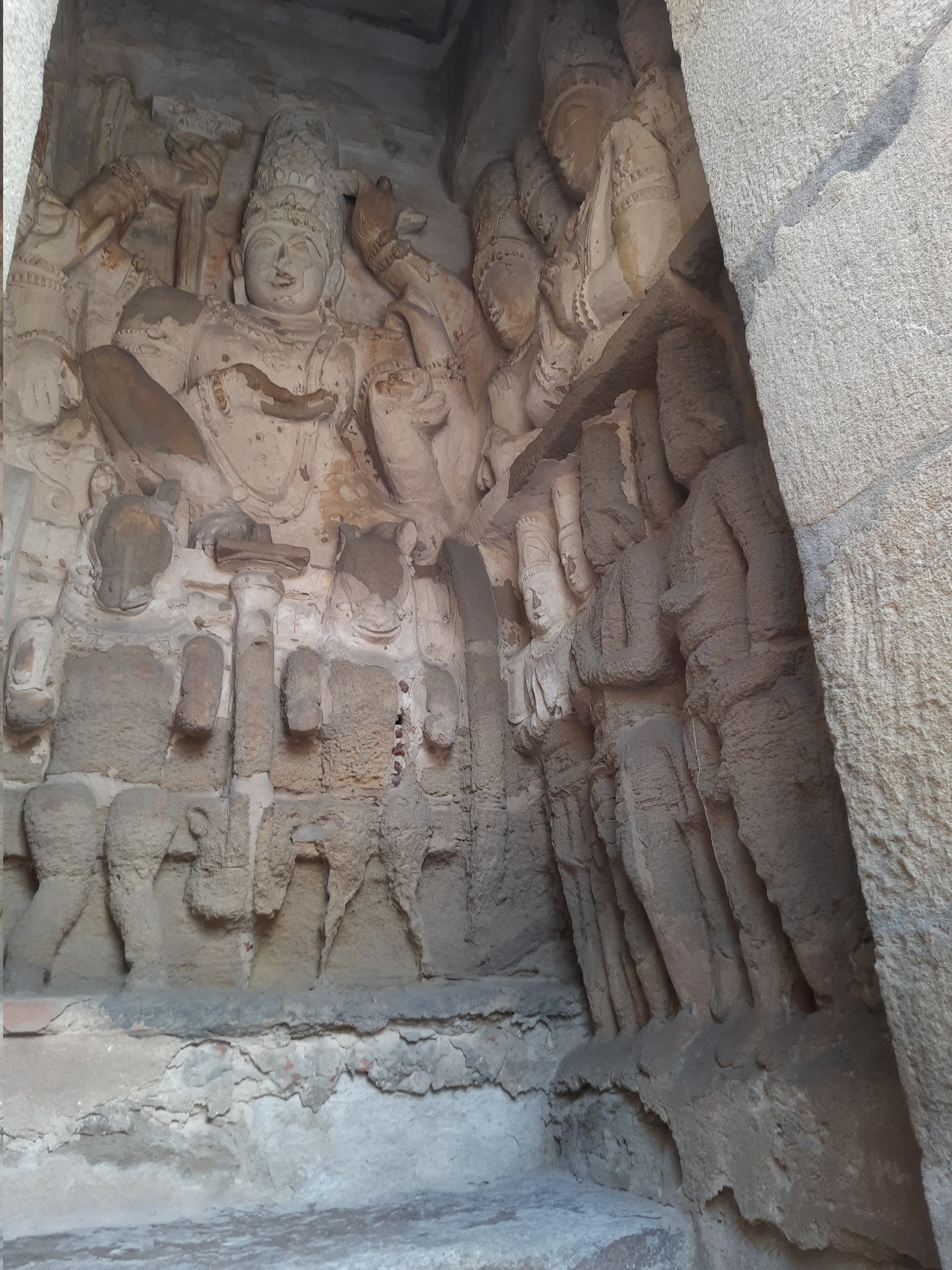 |
| Tripurantaka |
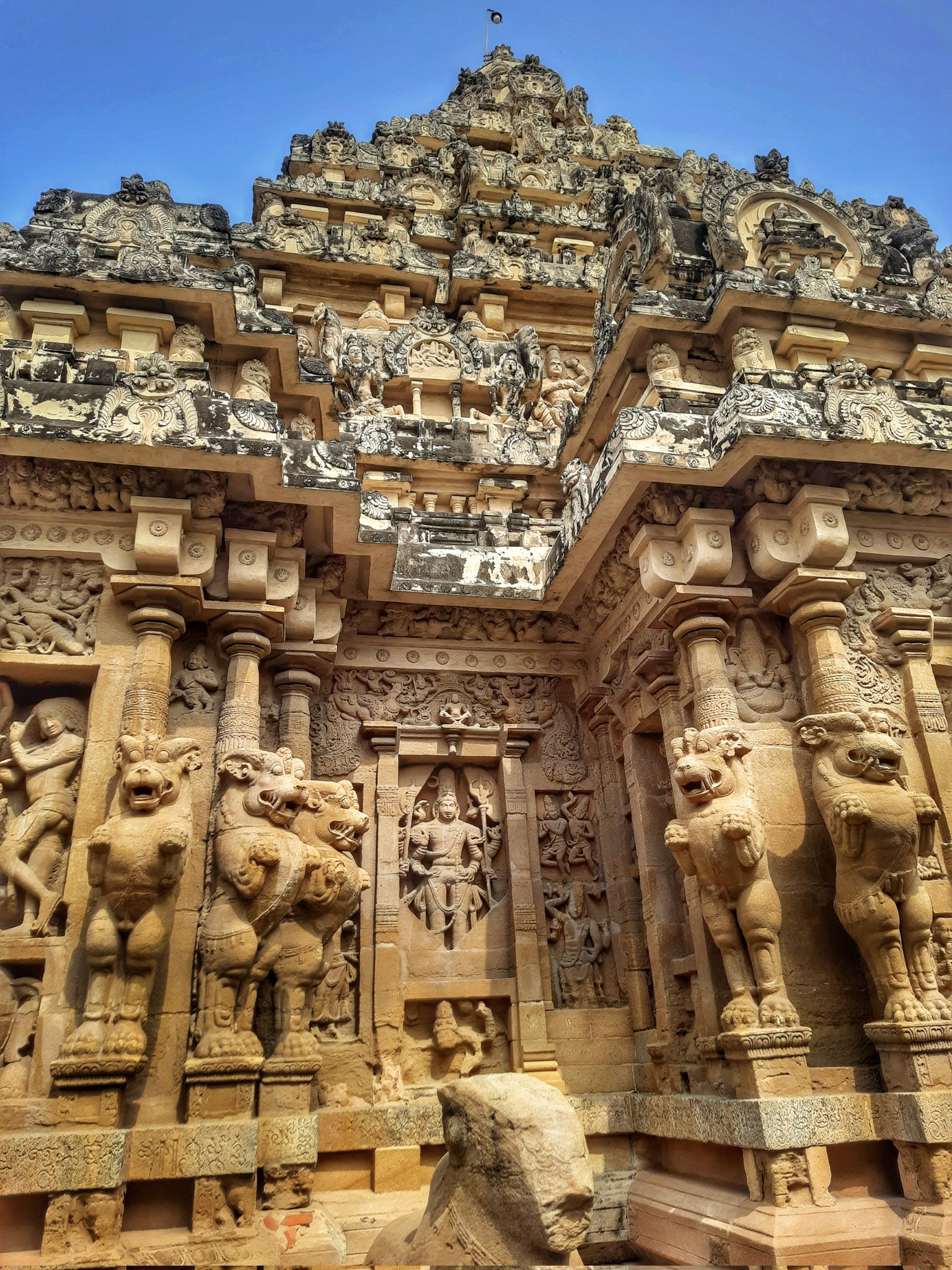 |
| Vimana |
The Vimana of the main temple. It has multiple rows of salas and kutas. On the very top is an octagonal shaped Stupi. This vimana is built of stone completely.
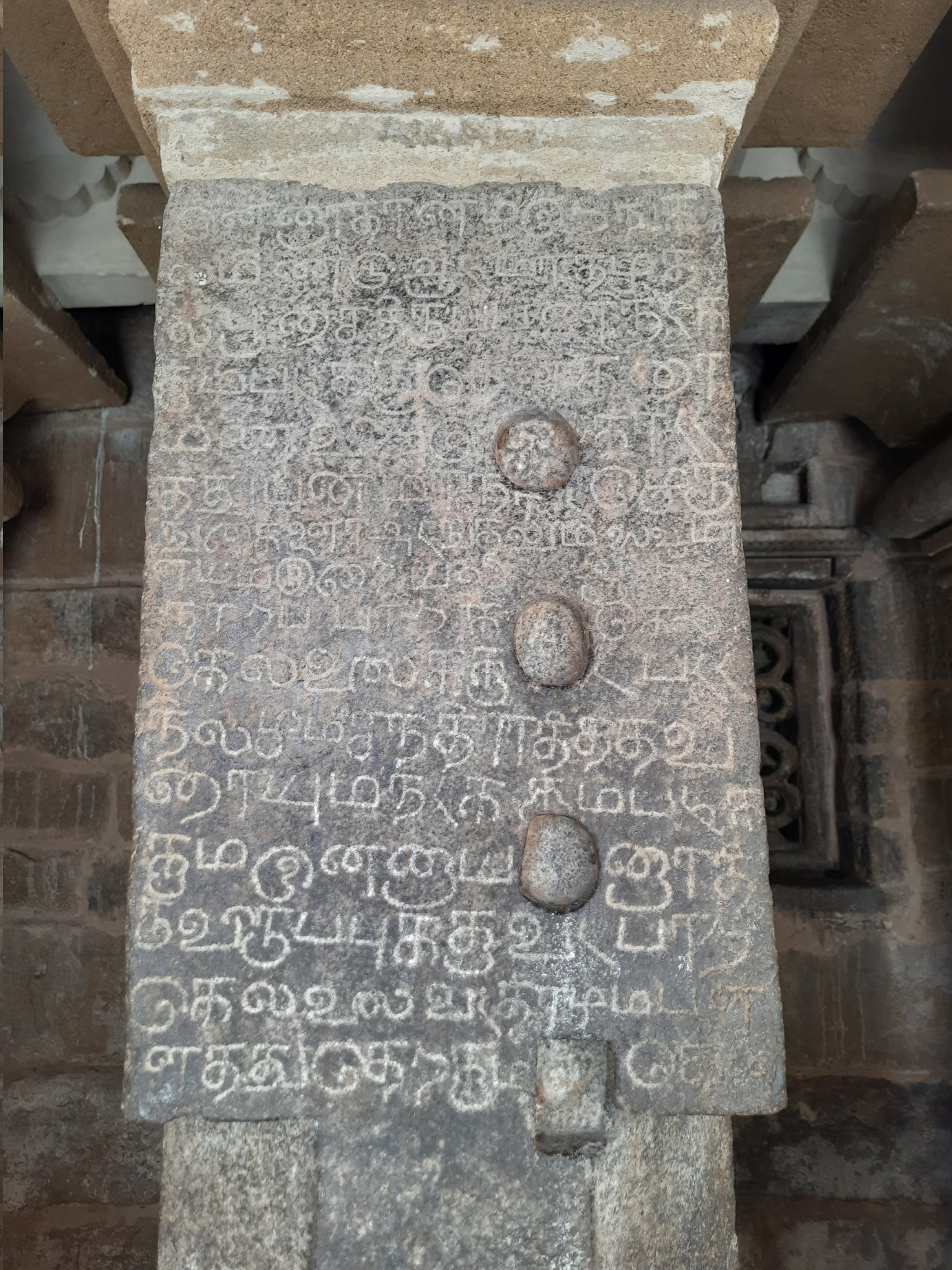 |
| Pillar inscriptions |
The front Mantapa has a number of important inscriptions, including that of Chalukyan king Vikramaditya. When he defeated Pallava Nandivarman, he was enchanted by the beauty of this temple & made huge gifts of gold. The inscription records the gift.
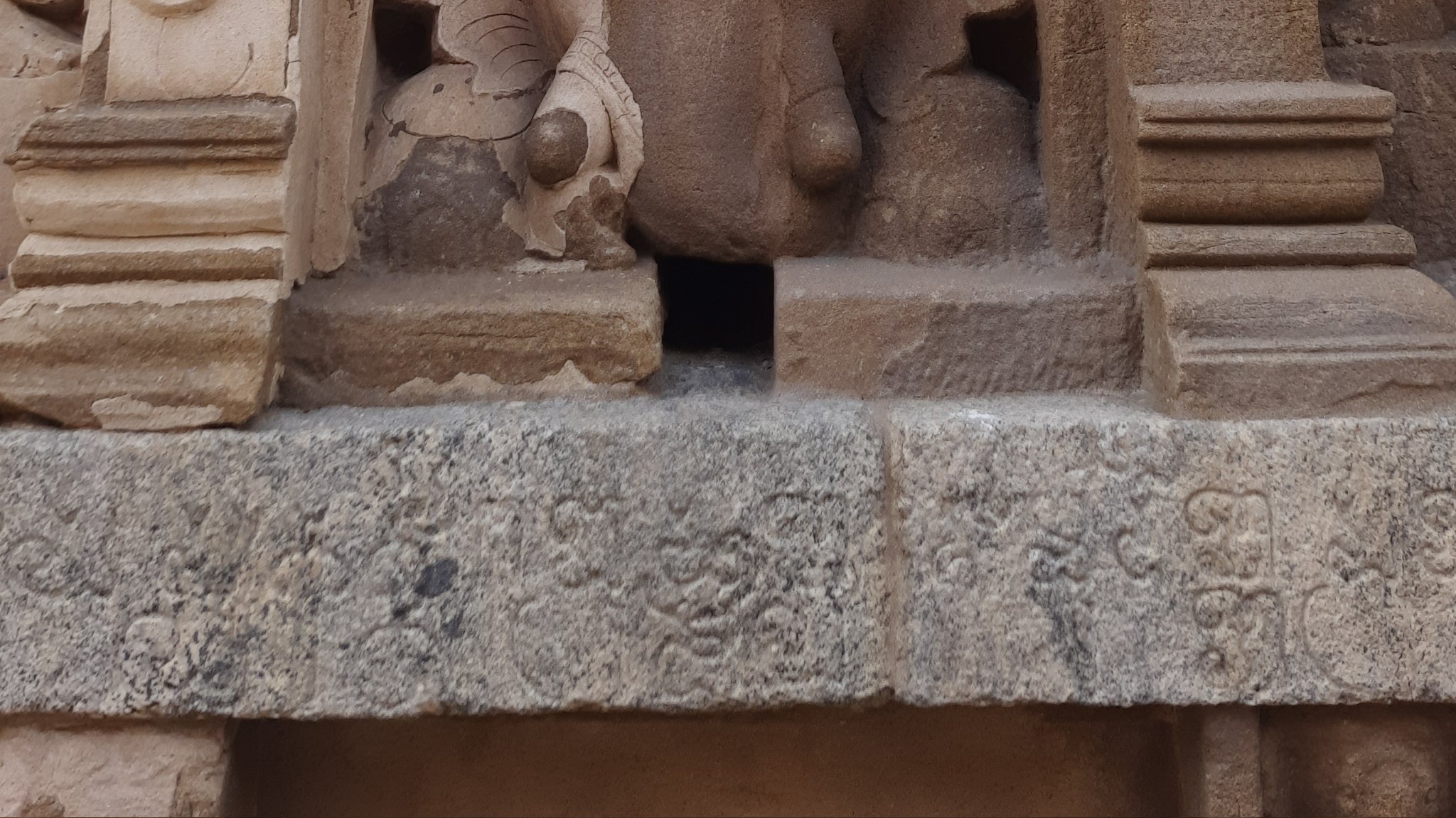 |
| Grantha inscription |
Other inscriptions include those praising Pallava king Rajasimha. They are inscribed in Sanskrit. Other than that, Rajasimha has left over 300 titles engraved on the row of cells we saw in the previous tweets. Each title is repeated in 4 different scripts. Apart from the Pallava and Chalukya inscriptions, we also see inscriptions by the Cholas and Vijayanagara kings who came much later.
Most of these inscriptions record grants and gifts made to the temple. One such Chola inscription records a gift made by Chanda Parakrama Vira. He was the general of Chola king Parantaka. He made provisions for perpetual deepas for Shiva which would keep lit up all throughout the year. Gifts made by Raja Raja & his son Rajendra Chola are also recorded.
Grants made by Kumara Kampanna, the general of Vijayanagara emperor Bukka raya are also recorded. The temple seems to have suffered damage during turushka invasion. One inscription records restoration and repainting under Vijayanagara rule.
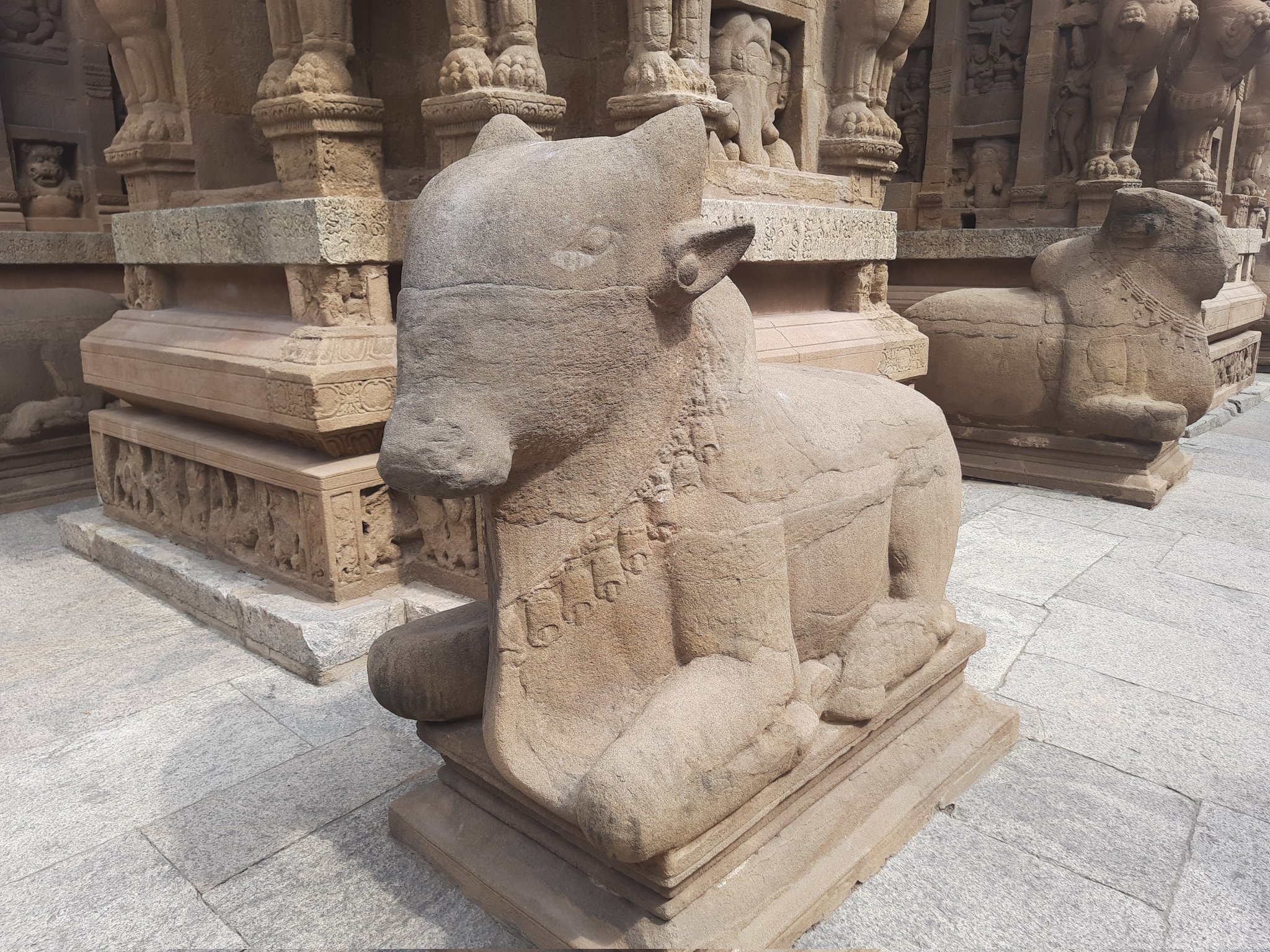 |
| Nandi |
I'll conclude this post with some pics from the temple. Next thread will be on the equally brilliant Vaikuntha Perumal Temple at Kanchipuram. Hope you found the post informative. Thank you for reading.



















































































































